
Competition Overdose: How Free Market Mythology Transformed Us From Citizen Kings to Market Servants
by
Maurice E. Stucke
and
Ariel Ezrachi
Published 14 May 2020
Why Can’t the Victims De-escalate the Race to the Bottom? We now confront the penultimate missing piece of the puzzle. In situations where the competitors’ individual and collective interests diverge, we can have a race to the bottom that even powerful competitors cannot stop. But in many markets the beneficiaries of competition have a choice. They can stop this toxic competition by opting out. So why don’t they? One problem is that the intended beneficiaries of competition may be trapped in their own arms race. Rather than prevent (or at least slow down) the race to the bottom, they may actually accelerate the downward spiral.
…
When it does, it often leaves individuals and society worse off. The invisible hand then becomes nothing more than a sleight of hand. So when is competition a race to the bottom rather than to the top? There are two basic circumstances in which that happens: FIRST, when the competitors’ individual interests are not aligned with their collective interests, or with society’s collective interests. SECOND, when either the competitors or the intended beneficiaries of competition—or both—are harmed by this race to the bottom, but no one can independently de-escalate it. This may sound complex, but once we understand these two conditions, we’ll recognize many examples of toxic competition around us.
…
But in one case competition produced results that were toxic to all, in the other, beneficial to all. To distinguish between good and bad competition, between races to the top and races to the bottom, we must ask whether the competitors’ individual and collective interests are aligned. Basically, if all the competitors do the same thing, do they end up collectively better off—or worse? So when you are seeking an edge over a rival, consider what will happen if others follow your lead and take similar measures. If everyone ends up worse off, with no advantage going to anyone, you’re in a race to the bottom that benefits neither you nor society. When Competition Harms Its Intended Beneficiary: Public School Education In our simple scenario of helmetless hockey players, the arms race harms primarily the competitors themselves.
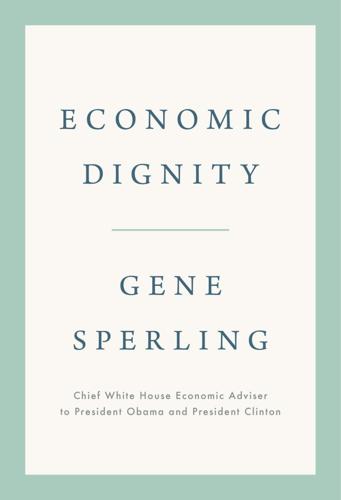
Economic Dignity
by
Gene Sperling
Published 14 Sep 2020
Structuring markets to reward competition principally on quality, price, and performance, and not race-to-the-bottom behavior, can lead competitive actors to focus on the elements that deliver better products and services to consumers and other stakeholders, without the concern that treating workers, consumers, and the environment with a level of basic decency might jeopardize their competitive advantage. Of course, rules that encourage high-road competition might impede profit margins compared to existing practices, where there is an open lane toward race-to-the-bottom competition. To the extent a textile manufacturer’s profit margins require forcing workers to labor in extremely dangerous factories or rely on suppliers using ten-year-olds in Vietnam, regulations that limit these practices will reduce the company’s profit margins.
…
When our nation had its breakdown of all common sense on housing finance, there was likely little room for a virtuous midlevel employee in 2006 to refuse to engage in such reckless subprime lending, because the market was structured to reward his competitors and peers at his own company for race-to-the-bottom competition. Virtuous employees may have indeed lost promotions, bonuses, and even their jobs. Structuring markets to prevent race-to-the-bottom competition ensures that we do not create business environments where no good deed and virtue go unpunished. PUNCHING STEPHEN CURRY As a thought experiment, imagine a slightly altered set of rules and regulations for the National Basketball Association (NBA).
…
Taunting players to waste one of the permitted punches would be refined to an art form. While perhaps this rule would have brought more Ultimate Fighting Championship (UFC) fans to basketball, most true basketball lovers would consider this a vicious race to the bottom. Those most effective in knocking out Curry or James—those who raced to the bottom—would have a serious leg up in pursuit of NBA championships. In this scenario, there would be little room for virtue going unpunished. Members of any given NBA team might find this barbaric and prefer to refrain. Yet such Gandhi-like responses to the punching rule would likely not be well received.
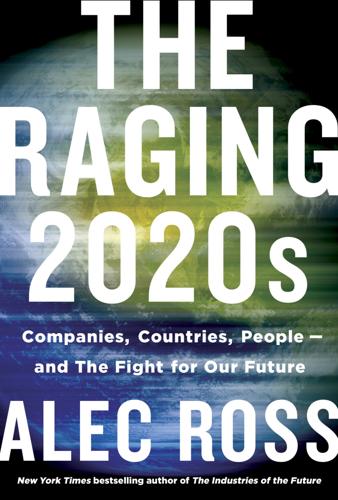
The Raging 2020s: Companies, Countries, People - and the Fight for Our Future
by
Alec Ross
Published 13 Sep 2021
“Europe did this to itself,” Schmidt stated, noting that the Europeans themselves created the “race to the bottom” tax treatment for a then-struggling Ireland to stimulate investment there. “The global tax system is incredibly complicated, and we are required to follow the tax rules,” he continued. “When the tax rules change, of course we would adopt them. But there was a presumption that somehow we were doing something wrong here.” Schmidt is correct. For whatever finger wagging may be directed against him and Google, the culpability rests principally with the countries that enable these activities by making them legal in the first place in the race to the bottom. Still, just because something is legal does not make it right.
…
The incentives drive companies toward share buybacks instead of investments in workers, equipment, and research and development. The incentives drive businesses to grow bigger through mergers and acquisitions, and then to fire rather than hire. And as we will read, the incentives encourage breaking up unions and sending headquarters to tax-optimized locales instead of to communities that are not in a race to the bottom on taxes. The incentives mean refusing to pay even a cent more for renewable energy than for fossil fuels. The nightmare is that all this optimization for nonproductive uses of capital and for the short term ensures that the long term will be worse for all of us. The inequality and climate crises we are already suffering from are direct consequences of optimizing for the short-term shareholder gains decades ago.
…
In the same way that GAAP provide a structure for determining a company’s tax burden, structures could be created that implement a similar set of measures for stakeholder impact and then provide the data to adjust a company’s taxes higher or lower. Companies respond to incentives, so we need to provide incentives for them to stop the race to the bottom on everything from environmental damage to workers’ rights. Former Bank of England governor Mark Carney has suggested that this approach be extended to executive compensation as well, saying that banks should link executive pay to climate risk management. The more a company does to contribute to goals set out in the Paris climate accord, the more its executives get paid.
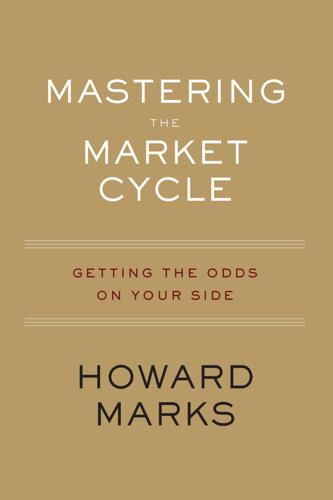
Mastering the Market Cycle: Getting the Odds on Your Side
by
Howard Marks
Published 30 Sep 2018
Thus an overheated auction in the credit market—as elsewhere—is likely to produce a “winner” who’s really a loser. This is the process I call the race to the bottom. On the other hand, there are times when buyers show up for auctions in small numbers, and the few who do attend are interested in buying only at giveaway prices. The bidding stalls, and the result is low prices, eye-popping yields, and loan structures that afford excellent protection. Unlike the overheated climate that spawns the race to the bottom, ice-cold markets in which no one’s eager to lend can create real winners. The degree of openness of the credit window depends almost entirely on whether providers of capital are eager or reticent, and it has a profound impact on economies, companies, investors, and the prospective return and riskiness of the investment opportunities that result.
…
Perhaps most importantly among the contributing factors, the period was marked by risky behavior on the part of financial institutions. When the world is characterized by benign macro events, hyper-financial activity and financial innovation, there is a tendency for providers of capital to compete for market share in a process I call “the race to the bottom” (I’ll make reference later on to a memo of that name). The mood in the years 2005–07 was summed up by Citigroup CEO Charles Prince in June 2007, virtually on the eve of the Global Financial Crisis, in a statement that became emblematic of the era: “When the music stops, in terms of liquidity, things will be complicated.
…
This kind of risk tolerance and risk obliviousness plays an essential part in the up-phase that precedes—and sets the scene for—every dramatic down-phase. As the period 2005–07 was rolling along, it presented a great opportunity to observe events that made manifest market participants’ attitudes toward risk, and to reach helpful conclusions. I believe the following excerpt from “The Race to the Bottom,” a memo I wrote on the subject in February 2007—just a few months before the first indication that bad times were coming—provides an excellent example. It demonstrates the potential value of inferences drawn from isolated and perhaps anecdotal experiences: While the last few years have given me many opportunities to marvel at excesses in the capital markets, in this case the one that elicited my battle cry—“that calls for a memo”—hit the newspapers in England during my last stay.
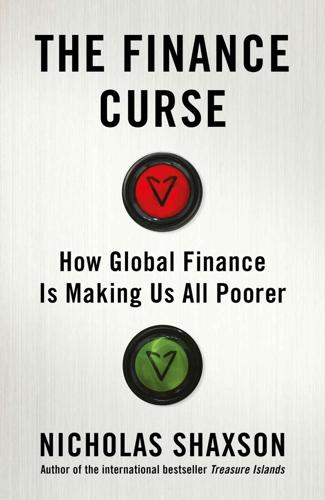
The Finance Curse: How Global Finance Is Making Us All Poorer
by
Nicholas Shaxson
Published 10 Oct 2018
‘It is one of the biggest dark continents in economics.’ The answer to the second of my three questions for policymakers then is clear: ‘competition’ between states on corporate taxes is indeed a race to the bottom which increases inequality and harms the world at large. The third question is bigger, in fact it is one of the great economic questions of all time. It is this: whether or not ‘competition’ is a harmful race to the bottom that hurts the world at large, does it make sense for my country or state to ‘compete’ from the perspective of local self-interest? Schreck used to think not, at least for his area, but now he seems less certain.
…
When the world finally started to wake up to Tiebout’s paper, the year after his death, it would kick off a debate about one of the most important questions in the modern global economy: what happens when rich people, banks, multinational firms or profits shift across borders in response to different incentives like corporate tax cuts, financial deregulation and so on? This debate goes to the heart of questions around what has been called the competitiveness of nations, and whether competing on things like corporate tax cuts or environmental standards is a good thing or an unhealthy race to the bottom. In the end, Tiebout’s ideas would end up magnified, then distorted and used as ideological underpinning for a wide range of policies that generate the finance curse. Which is not what the leftist Charlie Tiebout would have wanted at all. History shows that inequality usually only gets properly upended after large, violent shocks.8 For Tiebout’s generation, it was the Second World War that provided the shock.
…
Rather than demonstrating how governments could ‘compete’ with each other and thus be efficient, as he had once thought, the emerging ‘competition’ between the states was revealing itself to be a powerful tool for big financial and corporate interests to get what they wanted from states and nations by playing them off against each other in a vicious race to the bottom. (For the rest of this book, I will call this latter form ‘competition’ – in inverted commas – as opposed to competition in private markets). In 1973, just four years after Oates published his paper, Idaho’s Democrat governor Cecil Andrus had a meeting with David Packard, the boss of the fast-growing computer company Hewlett-Packard.
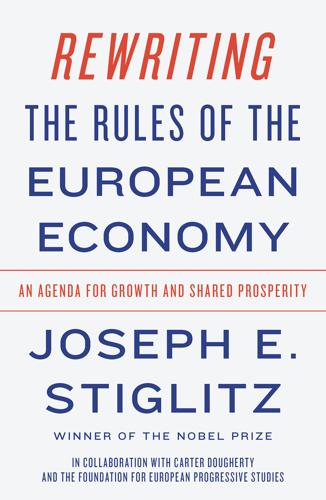
Rewriting the Rules of the European Economy: An Agenda for Growth and Shared Prosperity
by
Joseph E. Stiglitz
Published 28 Jan 2020
Corporations care about their after-tax return, so they are sensitive not just to wages, the efficiency of labor, the overall business environment, transport costs, and other factors of production, but also to the taxes they have to pay. In the very short run, the one variable countries can change to attract businesses is the corporate income tax rate. Economists predicted that this would result in a race to the bottom, as companies could produce in a low-tax jurisdiction but enjoy access to the entire European Union and its markets. We see evidence of this race to the bottom. Between 1995 and 2018, the average corporate income tax rates for the EU went down from 35 percent to 22 percent.9 This trend can be expected to continue as France, Greece, the Netherlands, and Sweden have already announced further reductions of corporate income tax rates.10 By offering lower tax rates, countries gain jobs and some tax revenues, perhaps less than at higher tax rates, but the increased tax base, they hope, more than compensates.
…
Before that, the main voices heard were those of the bankers themselves, who had argued that loosening regulations would create a more dynamic financial system, which would contribute to a stronger European economy from which all would benefit. Besides, the bankers argued, there was a global marketplace into which they, their profits, and their jobs would disperse unless there was deregulation. Indeed, around the world, there was a race to the bottom as countries competed to attract the attention of footloose bankers. As neoliberals talked about the supposed growth and employment benefits of deregulation, they neglected the costs—both the macroeconomic risks that might arise from a poorly regulated financial sector that is engaged in excessive risk taking, and the microeconomic costs arising from the financial sector’s exploitation of its market power and consumer and investor ignorance.
…
With all that money to invest on behalf of savers, European asset managers—out to prove themselves better than their competitors in the easy, short-term metric of returns without adequate regard to risk—were only too happy to buy all manner of securities issued by banks. The credit rating agencies played a critical role in this scam, as they gave AAA ratings to securities that did not deserve them, engaging in massive fraud in a race to the bottom with other rating agencies. Wholesale funding (versus the retail approach of wooing depositors) exploded in Europe even more than in the United States. In 2008, it amounted to 60 percent of total funding for the largest 16 banks in Europe. This was twice as high as for large US banks.9 Banks also saw an opportunity to increase their activities as so-called market makers, by holding inventories of securities, standing ready to buy and sell and making a profit from the buy-sell spreads.
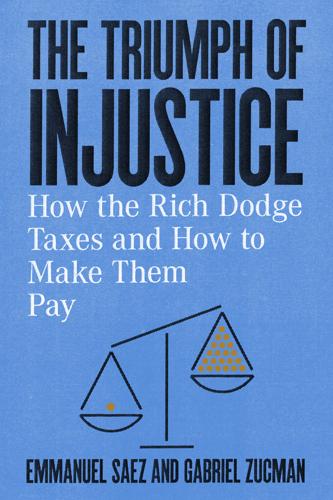
The Triumph of Injustice: How the Rich Dodge Taxes and How to Make Them Pay
by
Emmanuel Saez
and
Gabriel Zucman
Published 14 Oct 2019
The breaks that tax havens offer to big companies impose a cost on the rest of us, a “negative externality” in economics lingo. They feed a race to the bottom, leading to a world where, to prevent capital from moving abroad, most nations are compelled to adopt tax rates that are too low—lower than the rates they would otherwise democratically choose. The fundamental problem behind the current forms of international coordination is that they do not tackle, and in fact legitimize, the undemocratic forces of tax competition. And indeed, tax competition has intensified since the start of the BEPS process, and the global race to the bottom in corporate tax rates has accelerated. Since 2013, Japan cut its rate from 40% to 31%; the United States from 35% to 21%; Italy from 31% to 24%; Hungary from 19% to 9%; a number of Eastern European states are following the same route.
…
Their capital is intangible, it can move to Bermuda in a nanosecond. Other countries have low tax rates? We must have low rates. Other countries are giving up on taxing multinational companies and high earners? We must give up too. Tax coordination among countries is a utopia and the only future is a race to the bottom. No matter how sincerely held they may be, no matter how widely shared, these beliefs are incorrect. Instead of engaging in a giant fiscal free-for-all, we can coordinate our policies, as we’ve successfully done in many other areas of international relations. Rest assured, we know that some countries and social groups derive large benefits from globalization in its current form—but other forms are possible.
…
We will study, in the pages that follow, the arithmetic of tax competition and the central role it has played in the prosperity of a few. But we’ll also see how a handful of countries acting together could whistle the end of this game. We will see how defensive measures could be taken against tax havens, and how today’s race to the bottom can be replaced by a race to the top. The notion that external or technical constraints—“international competition,” “tax avoidance,” “loopholes”—make tax justice idle fantasy does not withstand scrutiny. When it comes to the future of taxation, everything is possible. From the disappearance of the income tax—a plausible outcome if the trend of the last four decades is sustained—to levels of progressivity never seen before, there is an infinity of possible futures ahead of us.
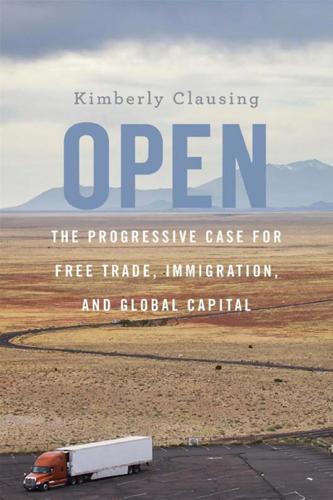
Open: The Progressive Case for Free Trade, Immigration, and Global Capital
by
Kimberly Clausing
Published 4 Mar 2019
For example, if multinational mining companies respond to environmental regulations by forsaking countries with environmental regulations in favor of countries that allow environmentally hazardous production methods, that can lead to a “race to the bottom,” where countries try to outdo one another by lowering regulatory burdens and cutting taxes in hopes of winning businesses’ favor. Evidence suggests that a race to the bottom may be of particular concern in the case of extractive industries such as oil drilling and mining, especially in developing countries. In the past, this race to attract extractive industries has led to excessive resource depletion and toxic pollution, made all the more painful by disappointing gains in job creation and economic growth.21 It is important to note that disparate environmental regulations do not necessarily trigger a race to the bottom.
…
In these two areas, current trade agreements strike many as too broad. Yet despite these important examples, there are also ways in which broader agreements may make good sense. For example, if countries are concerned about tax or regulatory competition, international agreements offer a means to avoid a “race to the bottom.” Governments could use agreements to commit to higher standards, reducing global companies’ ability to pit governments against each other. Shunning the Trans-Pacific Partnership In a New York Times poll back in May 2015, 78 percent of respondents said they knew “not much” or “nothing at all” about the Trans-Pacific Partnership (TPP).
…
In the past, this race to attract extractive industries has led to excessive resource depletion and toxic pollution, made all the more painful by disappointing gains in job creation and economic growth.21 It is important to note that disparate environmental regulations do not necessarily trigger a race to the bottom. For example, a multinational company that needs to comply with a higher-standard jurisdiction may find it more cost-effective to use one uniform production method throughout its operations. By employing the cleaner production method in lower-standard jurisdictions, it helps to spread cleaner technologies and methods throughout the world. In just this way, higher clean air standards in California caused US automotive companies to improve their environmental performance throughout the entire US market.
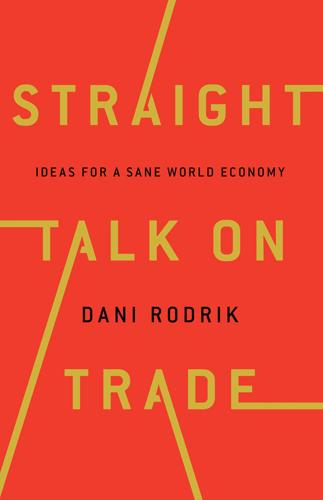
Straight Talk on Trade: Ideas for a Sane World Economy
by
Dani Rodrik
Published 8 Oct 2017
In economic models of “monopolistic competition,” producers compete not just on price but on variety—by differentiating their products from others’.32 Similarly, national jurisdictions can compete by offering institutional “services” that are differentiated along the dimensions I discussed earlier. One persistent worry is that institutional competition sets off a race to the bottom. To attract mobile resources—capital, multinational enterprises, and skilled professionals—jurisdictions may lower their standards and relax their regulations in a futile dynamic to outdo other jurisdictions. Once again, this argument overlooks the multidimensional nature of institutional arrangements.
…
Similarly, higher labor standards may lead to happier and more productive workers; tougher financial regulation to greater financial stability; and higher taxes to better public services, such as schools, infrastructure, parks, and other amenities. Institutional competition can foster a race to the top. The only area in which some kind of race to the bottom has been documented is corporate taxation. Tax competition has played an important role in the remarkable reduction in corporate taxes around the world since the early 1980s. In a study on OECD countries, researchers found that when other countries reduce their average statutory corporate tax rate by 1 percentage point, the home country follows by reducing its tax rate by 0.7 percentage points.33 The study indicated that international tax competition takes place only among countries that have removed their capital controls.
…
When such controls are in place, capital and profits cannot move as easily across national borders and there is no downward pressure on capital taxes. So, the removal of capital controls appears to be a factor in driving the reduction in corporate tax rates. On the other hand, there is scant evidence of similar races to the bottom in labor and environmental standards or in financial regulation. The geographically confined nature of the services (or public goods) offered by national jurisdictions often presents a natural restraint on the drive toward the bottom. If you want to partake of those services, you need to be in that jurisdiction.
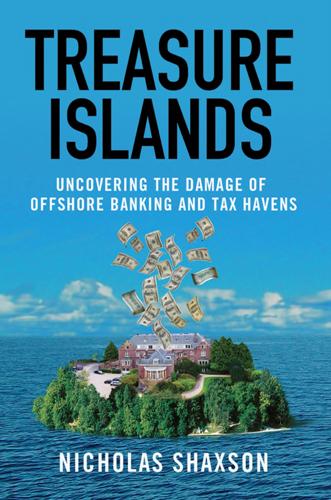
Treasure Islands: Uncovering the Damage of Offshore Banking and Tax Havens
by
Nicholas Shaxson
Published 11 Apr 2011
The end result was that the biggest banks were able to grow large enough to attain “too big to fail” status—which helped them in turn to become increasingly influential in the bastions of political power in Washington, eventually getting a grip on both main political parties, Democrat and Republican—a grip that is so strong that it amounts to political capture. Part of this process has involved a constant race to the bottom between jurisdictions. When a tax haven degrades its taxes or financial regulations or deepens its secrecy facilities to attract hot money from elsewhere, other havens degrade theirs too, to stay in the race. Meanwhile, financiers threaten politicians in the United States and other large economies with the offshore club—“don’t tax or regulate us too heavily or we’ll leave,” they cry—and the onshore politicians quail and relax their own laws and regulations.
…
Deregulation, freer flows of capital, and lower taxes since the 1970s—most people think that these globalizing changes have resulted primarily from grand ideological shifts and deliberate policy choices ushered in by such leaders as Margaret Thatcher and Ronald Reagan. Ideology and leaders matter, but few have noticed this other thing: the role of the secrecy jurisdictions in all of this—the silent warriors of globalization that have been acting as berserkers in the global economy, forcing other nations to engage in the competitive race to the bottom, and in the process cutting swaths through the tax systems and regulations of nation states, rich and poor, whether they like it or not. The secrecy jurisdictions have been the heart of the globalization project from the beginning. Finally, a word about culture and attitudes. In January 2008 the accountancy giant KPMG ranked Cyprus at the very top of a league table of European jurisdictions, according to the “attractiveness” of their corporate tax regimes.53 Yet Cyprus, a “way station for international scoundrels,” as one offshore promoter admits, is among the world’s murkiest tax havens: possibly the biggest conduit for criminal money out of the former Soviet Union and the Middle East into the international financial system.
…
The notorious “merchant of death” Viktor Bout, inspiration for the character played by Nicholas Cage in the Hollywood film Lord of War, alleged arms runner to the Taliban and other murderous organizations around the globe, operated through businesses in Texas, Delaware, and Florida.27 “US shell companies are attractive vehicles for those seeking to launder money, evade taxes, finance terrorism, or conduct other illicit activity anonymously,” said Republican Senator Norm Coleman, then chairman of the U.S. Senate Permanent Subcommittee on Investigations. “Competition among States to attract company filing revenue and franchise taxes has, in some instances, resulted in a race to the bottom.”28 A New York Times article from 1986 describes the antics of one Delaware lieutenant-general who flew to Taiwan, Hong Kong, China, Indonesia, Singapore, and the Philippines, clutching a pamphlet boasting that Delaware could “Protect You from Politics.”29 The official was, the article noted, “looking forward to a rich harvest of Hong Kong flight capital” after the British pullout in 1997.

Four Battlegrounds
by
Paul Scharre
Published 18 Jan 2023
Horowitz and Lauren Kahn, “Why DoD’s New Approach to Data and Artificial Intelligence Should Enhance National Defense,” Council on Foreign Relations blog, March 11, 2022, https://www.cfr.org/blog/why-dods-new-approach-data-and-artificial-intelligence-should-enhance-national-defense; Jaspreet Gill, “Say Goodbye to JAIC and DDS, As Offices Cease to Exist As Independent Bodies June 1,” Breaking Defense, May 24, 2022, https://breakingdefense.com/2022/05/say-goodbye-to-jaic-and-dds-as-offices-cease-to-exist-as-independent-bodies-june-1/. 252technical innovation: Ian Goodfellow and Nicolas Papernot, “The Challenge of Verification and Testing of Machine Learning,” cleverhans-blog, June 14, 2017, http://www.cleverhans.io/security/privacy/ml/2017/06/14/verification.html. 253Patriot air and missile defense system: For more on the Patriot fratricides, see Paul Scharre, Army of None: Autonomous Weapons and the Future of War (New York: W. W. Norton, April 24, 2018), 137–145. 31. RACE TO THE BOTTOM 254“race to the bottom”: Portions of this chapter are adapted, with permission, from Paul Scharre, “Debunking the AI Arms Race Theory,” Texas National Security Review 4, no. 3 (Summer 2021): 121–132, http://dx.doi.org/10.26153/tsw/13985. 254“move fast and break things”: Steven Levy, “Mark Zuckerberg on Facebook’s Future, from Virtual Reality to Anonymity,” Wired, April 30, 2014, https://www.wired.com/2014/04/zuckerberg-f8-interview/. 254“We are under so much pressure”: Jack Shanahan, interview by author, April 1, 2020. 254twenty-five years from initial concept: F-35 Joint Strike Fighter (JSF) Program (Congressional Research Service, updated May 27, 2020) https://fas.org/sgp/crs/weapons/RL30563.pdf; The Joint Advanced Strike Technology (JAST) program, which later became the Joint Strike Fighter program, was created in 1993.
…
—CHINESE GENERAL SECRETARY XI JINPING CONTENTS LIST OF ILLUSTRATIONS PREFACE INTRODUCTION PART I POWER 1.THE NEW OIL 2.DATA 3.COMPUTE 4.TALENT 5.INSTITUTIONS PART II COMPETITION 6.A WINNING HAND 7.MAVEN 8.REVOLT 9.SPUTNIK MOMENT PART III REPRESSION 10.TERROR 11.SHARP EYES 12.A BETTER WORLD 13.PANOPTICON 14.DYSTOPIA PART IV TRUTH 15.DISINFORMATION 16.SYNTHETIC REALITY 17.TRANSFORMATION 18.BOT WARS PART V RIFT 19.FUSION 20.HARMONY 21.STRANGLEHOLD PART VI REVOLUTION 22.ROBOTICS ROW 23.PROJECT VOLTRON 24.FOUNDATION 25.THE WRONG KIND OF LETHALITY 26.JEDI 27.DISRUPTION PART VII ALCHEMY 28.CONTROL 29.POISON 30.TRUST 31.RACE TO THE BOTTOM PART VIII FIRE 32.ALIEN INTELLIGENCE 33.BATTLEFIELD SINGULARITY 34.RESTRAINT 35.THE FUTURE OF AI CONCLUSION ACKNOWLEDGMENTS ABBREVIATIONS NOTES INDEX LIST OF ILLUSTRATIONS Deep Neural Network U.S. R&D Funding as a Percentage of Gross Domestic Product, 1953–2018 U.S. Share of Global R&D (1960) U.S.
…
Systems may work brilliantly in one setting, then fail dramatically if the environment slightly changes. The “black box” nature of many AI methods means that it may be difficult to accurately predict when they will fail or even understand why they failed in retrospect. Potentially even more dangerous, the global competition in AI risks a “race to the bottom” on safety. In a desire to beat others to the punch, countries may cut corners to deploy AI systems before they have been fully tested. We are careening toward a world of AI systems that are powerful but insecure, unreliable, and dangerous. But technology is not destiny, and there are people around the world working to ensure that technological progress arcs toward a brighter future.
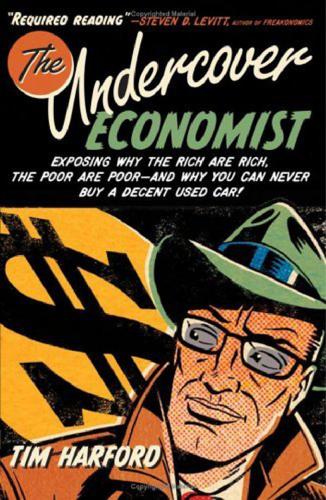
The Undercover Economist: Exposing Why the Rich Are Rich, the Poor Are Poor, and Why You Can Never Buy a Decent Used Car
by
Tim Harford
Published 15 Mar 2006
We saw in chapter 4 that the economist’s concept of externalities gives us a powerful tool to appreciate the risks of environmental damage, and externality charges give us a solution. Many—perhaps most—economists understand the risks of environmental damage and want action to preserve the environment. But the link between trade and environmental damage just doesn’t stand up to close scrutiny. There are three reasons for concern. The first concern is of a “race to the bottom”: companies rush overseas to produce goods under cheaper, more lenient environmental laws, while hapless governments oblige them by creating those lenient laws. The second is that physically moving goods around inevitably consumes resources and causes pollution. The third worry is that if trade promotes economic growth, it must also harm the planet.
…
The environmentalist Vandana Shiva speaks for many when she declares that “pollution moves from the rich to the poor. The result is a global environmental apartheid.” Strong words—but are they true? In theory, they might be true. Companies that can produce goods more cheaply will be at a competitive advantage. They can also move around more easily in a world of free trade. So the “race to the bottom” is a possibility. Then again, there are reasons to suspect that it’s a fantasy. Environmental regulations are not a major cost; labor is. If American environmental standards are really so strict, why do the most pollution-intensive American firms spend only 2 percent of their revenues on dealing with pollution?
…
As an analogy: if ten-year-old computer chips were still produced in bulk, they would be simpler and cheaper to make than modern chips, but nobody bothers any more. It’s now hard to buy an old computer even if you want to. And these arguments leave aside the possibility that firms want to offer high environmental standards to please their workers and their customers. So . . . a “race to the bottom” is possible in theory; but there are also good grounds for doubting its existence. So leaving theory to one side, what are the facts? First, that foreign investment in • 215 • T H E U N D E R C O V E R E C O N O M I S T rich countries is far more likely to go into polluting industries than foreign investment in poor countries.
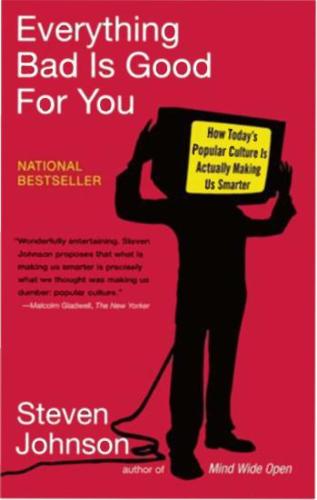
Everything Bad Is Good for You: How Popular Culture Is Making Us Smarter
by
Steven Johnson
Published 5 Apr 2006
It i s a truth nearly universally acknowledged that pop culture caters to our base instincts; mass society dumbs down and simplifies; it races to the bottom. The rare flowerings of "quality programming" only serve to remind us of the over all downward slide. But no matter how many times this re frain is belted out, it doesn't get any more accurate. As we've seen, precisely the opposite seems to be happening: the sec ular trend is toward greater cognitive demands, more depth , more participation. And if you accept that premise, you ' re forced then to answer the question : Why? For decades, the race to the bottom served as a kind of Third Law of Thermodynamics for mass society : all other things being equal, pop culture will decline into simpler forms.
…
Melodrama's good, you know, a little tear here and there, a little morality tale, that's good. Positive. That's least objectionable. It's my job to keep my 32, not to cause any tune-out a priori in terms of ads or concepts, to make sure there's no tune-out in the shows vis-a-vis the competition. LOP is a pure-breed race-to-the-bottom model : you cre ate shows designed on the scale of minutes and seconds, with the fear that the slightest challenge-"thought, " say, or "education"-will send the audience scurrying to the other networks. Contrast LOP with the model followed by The Sopranos-what you might call the Most Repeatable Pro- 162 ST E V E N J O H N SO N gramming model.
…
It's cruci al that we abandon the Brave New World scenario where mindless amusement always wins out over more chal lenging fare , that we do away once and for all with George Wi l l 's vision of an "increasingly infantilized society. " Pop E V E R Y T H I N G B A D I S G O O D F O R Yo u 1 85 culture is not a race to the bottom, and it's high time we accepted-even celebrated-that fact. But even the most salutary social development comes with peripheral effects that are less desirable. The rise of the Internet has forestalled the death of the typographic universe-and its replacement by the society of the image-predicted by McLuhan and Postman.

Model Thinker: What You Need to Know to Make Data Work for You
by
Scott E. Page
Published 27 Nov 2018
Lyapunov Theorem Given a discrete time dynamical system consisting of the transition rule xt+1 = G(xt), the real-valued function F(xt) is a Lyapunov function if F(xt) ≥ M for all xt and if there exists an A > 0 such that If F is a Lyapunov Function for G, then starting from any x0, there exists a t∗, such that G(xt∗) = xt∗, and the system attains an equilibrium in finite time. We first construct a Lyapunov function within the Race to the Bottom Game, which captures strategic environments in which players choose levels of support such that each player prefers to provide just less than the average level. The Race to the Bottom Game Each of N players proposes a level of support in {0, 1,… 100} in each period. The player closest to of the average level of support wins a prize in that period. The game can be used to explain reductions in state government spending for social programs such as support for the indigent.
…
It is straightforward to show that the maximum level of support from any player satisfies the conditions for a Lyapunov function. The maximum level of support has a minimum at zero. And in each period the maximum level of support falls by at least 1 given that levels of support take integer values. Thus, at some point, everyone proposes zero support. The players have raced to the bottom. In this example, the model produces an undesirable result. To prevent a race to the bottom requires changing the game. To increase support for the indigent, a federation could shift to federal funding or impose a floor on spending.2 As an aside, suppose that we allow players to choose any real number in the interval between zero and 100 rather than integer values.
…
You will learn to identify when you are allowing ideology to supplant reason and have richer, more layered insights into the implications of policy initiatives, whether they be proposed greenbelts or mandatory drug tests. These benefits will accrue from an engagement with a variety of models—not hundreds, but a few dozen. The models in this book offer a good starting collection. They come from multiple disciplines and include the Prisoners’ Dilemma, the Race to the Bottom, and the SIR model of disease transmission. All of these models share a common form: they assume a set of entities—often people or organizations—and describe how they interact. The models we cover fall into three classes: simplifications of the world, mathematical analogies, and exploratory, artificial constructs.
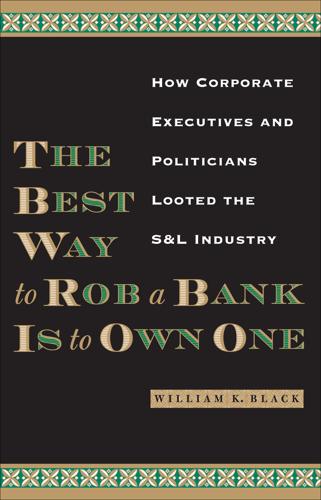
The Best Way to Rob a Bank Is to Own One: How Corporate Executives and Politicians Looted the S&L Industry
by
William K. Black
Published 31 Mar 2005
“COMPETITION IN LAXITY” Economists describing how regulators competed for “customers” by promising to be laxer in supervision coined two of the most telling phrases to come out of the S&L debacle: “competition in laxity” and “race to the bottom.” The novel aspect is that economists endorsed these pejorative terms because the race was toward greater deregulation. In the early 1980s, economists knew that regulation was the problem, so anything that reduced regulation was desirable. Richard Pratt shared this mindset when President Reagan appointed him Bank Board chairman in 1981. FOR THE BANK BOARD, THE RACE TO THE BOTTOM WAS A SHORT ONE The Bank Board was at the bottom of the federal financial regulatory heap before Pratt’s deregulation and desupervision.
…
The goodwill mergers and the wave of new entrants that Pratt encouraged diverted critical supervisory resources into (non)resolutions at precisely the time they were desperately needed to counter the wave of control frauds. TEXAS AND CALIFORNIA—THE STATES THAT WON THE RACE TO THE BOTTOM Another term for “competition in laxity” was “the race to the bottom.” S&Ls could change freely from a federal to a state charter (the permission from the government to run an S&L) and still be insured by the FSLIC. The charter determined what the S&L could invest in. Texas led the race by deregulating in the 1970s, and California followed the lead.
…
Texas had the equivalent of a “most favored nation” clause in its charters that allowed Texas-chartered S&Ls to do whatever federally chartered ones could, so the rush to convert to federal charters was greatest in California. California responded to the Garn–St Germain Act with the Nolan Act (named after its sponsoring senator, the notably corrupt and soon-to-be-convicted Pat Nolan). The Nolan Act became effective on January 1, 1983. It won the race to the bottom by going directly to the bottom. A California-chartered S&L could invest 100 percent of its assets in anything (with the commissioner’s approval). Despite Nolan’s corruption, this was not a conspiracy, but a bungled mess of epic proportions. No one was clever enough to design this disaster.

The Euro: How a Common Currency Threatens the Future of Europe
by
Joseph E. Stiglitz
and
Alex Hyde-White
Published 24 Oct 2016
But this rigid application of rules, in the absence of common deposit insurance, may make it even riskier for depositors to keep their money in the banks of a weak country: it may exacerbate the problem of divergence. REGULATORY RACES TO THE BOTTOM Europe not only allowed capital to flow freely within its borders but also financial firms and products—no matter how poorly they are regulated at home. The single-market principle for financial institutions and capital, in the absence of adequate EU regulation, led to a regulatory race to the bottom, with at least some of the costs of the failures borne by other jurisdictions. The failure of a financial institution imposes costs on others (evidenced so clearly in the crisis of 2008), and governments will not typically take into account these “cross-border costs.”
…
The EU (and this analysis thus goes beyond the eurozone) must adopt two further sets of policies: First, it needs to limit the race to the bottom, the kind of tax competition that worked so well for a few countries like Luxembourg but at the expense of others. This is a real example of an externality—of an action by one country that imposes harms on others. And yet Europe has failed to take adequate action, partially because many in Europe are enamored of the idea of low taxes and a small state, and this kind of race to the bottom suits them fine. Secondly, given the easy mobility around the European Union, the major responsibility for redistribution must lie at the EU level.39 The EU should follow the United States in levying taxes based on citizenship, wherever individuals are domiciled or resident.
…
The failure of a financial institution imposes costs on others (evidenced so clearly in the crisis of 2008), and governments will not typically take into account these “cross-border costs.” Indeed, especially before the 2008 global financial crisis, each country faced pressures to reduce regulations. Financial firms threatened that they would leave unless regulations were reduced.14 This regulatory race to the bottom would have existed within Europe even without the euro. Indeed, the winners in the pre-2008 contest were Iceland and the UK, neither of which belong to the eurozone (and Iceland doesn’t even belong to the EU). The UK prided itself on its system of light regulation, which meant essentially self-regulation, an oxymoron.

The Brussels Effect: How the European Union Rules the World
by
Anu Bradford
Published 14 Sep 2020
Scholars have instead shown that international trade has frequently triggered a “race to the top,” whereby domestic regulations have become more stringent as the global economy has become more integrated.7 Still, the race-to-the-bottom paradigm remains influential, shaping the debates among scholars and policy makers alike. The Brussels Effect adds to this literature by showing how the benefits of uniform production across the global marketplace incentivizes companies to adjust their regulatory standards upward rather than downward. The discussion on global regulatory races mirrors the debates on regulatory outcomes in federal systems. The “Delaware Effect” has been used to explain the race to the bottom in corporate law within the United States: since corporations can incorporate in any state irrespective of where they do business, all states have an incentive to relax their chartering requirements in order to attract corporate tax revenues.
…
Other states then respond by lowering their respective regulatory standards to avoid capital flight.178 The result of this race is, theoretically, regulatory convergence at the bottom. However, subsequent empirical studies have questioned the extent to which a race to the bottom occurs in practice.179 Influential literature has further emerged to argue that economic globalization has instead produced a “race to the top,” where countries are elevating their regulatory standards in response to first mover regulators’ introduction of stringent regulatory standards.180 While empirical support for a global race to the bottom is limited, most would agree that corporate relocation is more likely in instances where the firm can freely select its regulatory jurisdictions (such as stock listing) without any need to physically move its operations to another jurisdiction.181 In such instances, recent research demonstrates an occurrence of “Tiebout sorting” where no race to the top or bottom can be observed, but where firms instead sort themselves across jurisdictions depending on their differential cost structures, heterogeneous preferences, and market segments.182 Some firms are likely to prefer lower regulatory standards, while others, in fact, prefer higher regulatory standards.
…
: Corporate Globalization and the Erosion of Democracy, at ix, xi (1999). 5.See Alan Tonelson, The Race to the Bottom: Why a Worldwide Worker Surplus and Uncontrolled Free Trade Are Sinking American Living Standards 14–15 (2002). For a general discussion of this dynamic, see Dale D. Murphy, The Structure of Regulatory Competition: Corporations and Public Policies in a Global Economy (2004), in particular Parts I, II, and V. 6.See David Vogel & Robert A. Kagan, Introduction to Dynamics of Regulatory Change: How Globalization Affects National Regulatory Policies 4–5 (David Vogel & Robert A. Kagan eds., 2004). 7.See Debora L. Spar & David B. Yoffie, A Race to the Bottom or Governance from the Top?
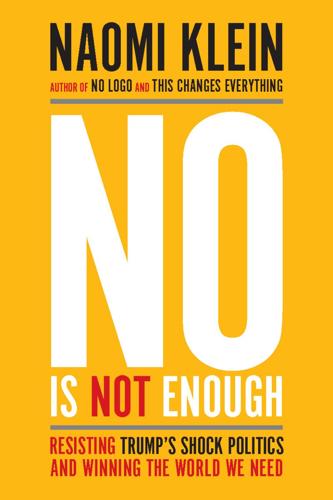
No Is Not Enough: Resisting Trump’s Shock Politics and Winning the World We Need
by
Naomi Klein
Published 12 Jun 2017
Rather than hope that Trump is going to magically transform into Bernie Sanders, and choose this one arena in which to be a genuine advocate for anyone who isn’t related to him, we would do far better to ask some tough questions about how it’s been possible for a gang of unapologetic plutocrats, with open disdain for democratic norms, to hijack an issue like corporate free trade in the first place. The Race to the Bottom Trump has made trade deals a signature issue for two reasons. The first, on full display that day at the White House, is that it’s a great way to steal votes from the Democrats. The right-wing pundit Charles Krauthammer—no fan of unions—declared on Fox News that Trump’s cozy union summit was a “great act of political larceny.”
…
What Trump’s admiration for Puzder suggests is that his real plan for luring back manufacturing is to suppress rights, wages, and protections to such a degree that working in a factory will be a lot like working at Hardee’s under Andrew Puzder. In other words, it’s yet another plan to take from the vulnerable to benefit the already outrageously rich. What we are witnessing is not a silver lining of any sort. It’s the push to the finish line in the “race to the bottom” that opponents of these corporate trade deals always feared. Yes, It’s Possible to Make Bad Trade Deals Worse Trump is not planning to remove the parts of trade deals that are most damaging to workers—the parts, for instance, that prohibit policies which are designed to favor local, over foreign, production.
…
One area of concern was how these deals were leading to devastating job losses, leaving behind rust belts from Detroit to Buenos Aires, while companies such as Ford and Toyota looked for ever-cheaper places to produce. But for the most part, our opposition was not grounded in Trump-style protectionism; it was trying to stem the beginning of what already looked like a race to the bottom, a new world order that was negatively impacting workers and the environment in every country. We were arguing for a model of trade that would start with the imperative to protect people and the planet. That was crucial then—it’s urgent now. The movement was even starting to win. We defeated the proposed Free Trade Area of the Americas.

Consumed: How Markets Corrupt Children, Infantilize Adults, and Swallow Citizens Whole
by
Benjamin R. Barber
Published 1 Jan 2007
While Johnson does not quite endorse the nutritional merits of cream pies, he must revel in the recent studies suggesting chocolate is good for us (after all), and he obviously grasps what Howard Stern teaches so well: that shock/shlock sells only if it feels subversive and hence progressive. “Where most commentators assume a race to the bottom and a dumbing down—‘an increasingly infantilized society,’ in George Will’s words,” Johnson enthuses, “I see a progressive story: mass culture growing more sophisticated, demanding more cognitive engagement with each passing year.”55 Johnson sets himself squarely against the kind of cultural criticism implied by the idea of an “infantilist” ethos that purportedly spurns nuance and complexity. Consumerism’s “cultural race to the bottom is a myth; we do not live in a fallen state of cheap pleasures that pale beside the intellectual riches of yesterday.
…
The selling of the body, which with the passing of actual slavery became a metaphor for coercive exchanges that were largely invisible (Marx and Foucault), has today become a toxic but remarkably well tolerated exemplar of the subordination of identity to commerce, and includes the selling of the constituent elements of the human genome. Roughly 20 percent of the genome has now been patented for private commercial use, and the trend is accelerating. As with so many other elements in the global race to the bottom, it is globalization that drives privatization: the quest for genetic patents is a function of the globalization of research. If “we” don’t do it, the Koreans or the French or the Chinese will. And since consumables along with the “need” for them must in any case be marketed globally for capitalism in its late consumer phase to flourish, bioengineering, cloning, and other advanced forms of genetic research are bound to be put into corporate hands.
…
For whatever the causes, and in South Africa they may go back to “the failure of the state, both during and after apartheid…to create jobs, health care, housing, and education accessible to the vast majority of the population,” the fact is that “when justice and social-control methods are ceded to the private sector—to private security firms, to vigilante groups, to simple mob justice…democracy becomes an empty promise.”72 Inequality is built into the market system, which too often becomes a race to the top for those who are wealthy, and a race to the bottom for everyone else. Inequality is not incidental to privatization, it is its very premise. The implicit tactic employed by the well off is to leave behind those who get more in public services than they contribute as taxpayers in a residual “public” sector (a kind of self-financing leper colony that cannot self-finance) and throw in with those who have plenty to contribute in their own private “commons.”
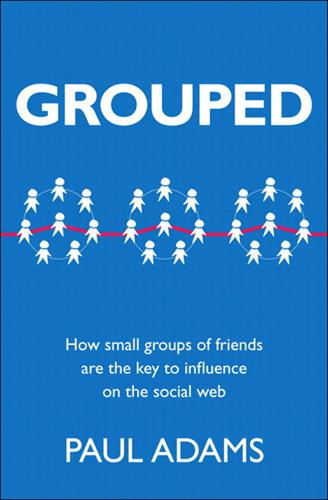
Grouped: How Small Groups of Friends Are the Key to Influence on the Social Web
by
Paul Adams
Published 1 Nov 2011
These examples are taken from Jonah Lehrer’s book How We Decide (Houghton Mifflin, 2009). 14. Find out more on Itamar Simonson’s research in the 1993 article “Get closer to your customers by understanding how they make choices.” 9. Marketing and advertising on the social web The problems facing interruption marketing Interruption marketing is a race to the bottom For the past 100 years, marketers have mostly relied on interruption marketing to get their message across, and viewed each new technology as a new way to interrupt people from what they were currently doing to get them to consume their message instead. Our TV programs are interrupted by ads.
…
We are being bombarded by more and more competing information, yet our capacity for processing and remembering this information remains the same. The increased competition for that attention means marketers must increase the frequency of their communication, exacerbating the problem. We’re seeing advertising appear in more and more unusual places. No one owns this problem and so it gets worse and worse.1 Interruption marketing is a race to the bottom. The most common way for marketers to increase their chances of being noticed is to increase the frequency of their campaigns. More people are likely to notice it, but it creates immense volumes of noise. On average, you need to run an ad 27 times before someone remembers it: Only one out of every nine ads is noticed, and people need to see the ad three times to remember it, so it takes 27 impressions for it to sink in.2 People no longer trust marketers One clear trend over the past 50 years is that people are more wary of advertising, and trust businesses less than they used to.3 In fact, this is so prevalent that researcher Dan Ariely has found that mistrust in marketing information negatively colors our entire perception of a product, even when we have direct experience to the contrary.
…
People will increasingly turn to their friends for information The amount of information accessible to us is increasing exponentially, but our capacity for processing ideas and memory will remain the same. In a world of too much information, marketing and advertising based on interrupting people, or trying to shift their attention from something else, is a race to the bottom. In this information rich world that we have created, people will increasingly turn to their friends for advice. Marketing will need to focus activities on gaining permission to market to people by being credible, trustworthy, interesting, and useful, and by marketing to small, connected groups of friends.
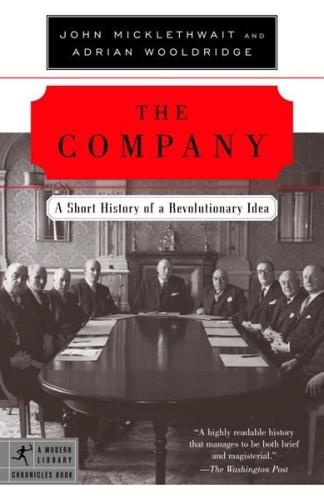
Company: A Short History of a Revolutionary Idea
by
John Micklethwait
and
Adrian Wooldridge
Published 4 Mar 2003
In 1830, the Massachusetts state legislature decided that companies did not need to be engaged in public works to be awarded the privilege of limited liability. In 1837, Connecticut went further and allowed firms in most lines of business to become incorporated without special legislative enactment. This competition between the states was arguably the first instance of a phenomenon that would later be dubbed “a race to the bottom,” with local politicians offering greater freedom to companies to keep their business (just as they would much later dangle tax incentives in front of car companies to build factories in their states). All the same, it is worth noting that the states gave away these privileges grudgingly, often ignoring the Dartmouth College ruling and often hedging in “their” companies with restrictions, both financial and social.
…
Virginia turned itself into what one legal treatise called a “snug harbour for roaming and piratical corporations.” The New York legislature was forced to enact a special charter for the General Electric Company to prevent it from absconding to New Jersey. But the big winner of this particular “race to the bottom” would be Delaware. By the time the Great Depression struck, the state had become home to more than a third of the industrial corporations on the New York Stock Exchange: twelve thousand companies claimed legal residence in a single office in downtown Wilmington.21 Most of the other industrial trusts converted to holding companies, too.
…
A persistent theme of this book has been the jostling for power between the company and government. The balance has unquestionably swung in the company’s favor. The modern firm is not in the same position as the East India Company, which had to go cap in hand to parliament every twenty years to renew its charter. Companies have often profited from “races to the bottom” by forcing governments and American states to compete for their favors. They have also encroached on the prerogatives of nation-states and embedded themselves in the body politic: think of the effect of corporate advertising or modern corporate control of the media. Companies have sometimes been able to outfight even the most powerful governments: IBM survived the American government’s biggest antitrust case of the 1970s; Microsoft seems to have thwarted the biggest assault of the 1990s.

People, Power, and Profits: Progressive Capitalism for an Age of Discontent
by
Joseph E. Stiglitz
Published 22 Apr 2019
Thus, American citizens are actually hurt as a result of the higher prices. Even Obama, who prided himself in his efforts to lower the cost of medicine, in the TPP (the Trans-Pacific Partnership Agreement) betrayed his principles. 11.The race to the bottom takes many other forms: banks, for instance, said that unless regulations were loosened, they would relocate their activities elsewhere. The result was a regulatory race to the bottom. The 2008 global financial crisis was among its consequences. 12.Taxes are only one of many variables that affect where firms locate, as we have already noted. But even focusing just on taxes, lowering taxes will induce firms to relocate if the country from which we are trying to steal jobs doesn’t respond.
…
The tech giants know how to wield their power in many arenas.77 Amazon used the enticement of thousands of jobs to get cities across the country bidding to have it set up its second headquarters in those cities through, for instance, lower taxes—shifting the tax burden onto others, of course. Small firms can’t do this, and so it gives an enormous advantage to Amazon over local retailers. We need a legal framework that prevents these races to the bottom.78 Intellectual property rights and competition There is one area where government sanctions monopolies: when a patent is given, the innovator gets temporary monopoly power. As we move to a knowledge-based economy, intellectual property rights (IPR) are likely to play an increasing role.
…
There are some footloose firms that have actually done this, giving some credibility to the argument.10 Of course, having achieved lower corporate taxes in one country, they turn around to other nations, saying that if they don’t lower their taxes businesses will leave. Not surprisingly, corporations love this race to the bottom.11 The argument that we had to lower corporate tax rates to compete with others was invoked by Republicans as they slashed the corporate tax rate from 35 percent to 21 percent in 2017,12 just as it had been used earlier, in 2001 and 2003, as taxes on capital gains and dividends were cut. The earlier tax cuts didn’t work—they didn’t lead to higher savings, an increase in labor supply, or higher growth,13 and there is no reason to expect that the 2017 cut will either.
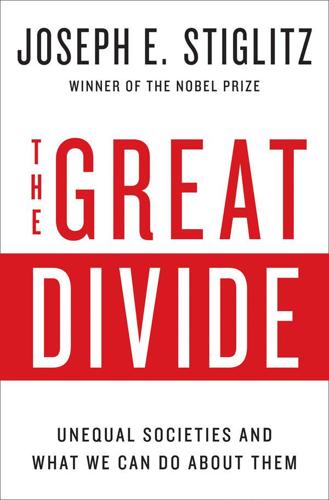
The Great Divide: Unequal Societies and What We Can Do About Them
by
Joseph E. Stiglitz
Published 15 Mar 2015
This was important, because it allowed a steady flow of cash into the housing market, which in turn provided the fuel for the housing bubble. The rating agencies’ behavior may have been affected by the perverse incentive of being paid by those that they rated, but I suspect that even without these incentive problems, their models would have been badly flawed. Competition, in this case, had a perverse effect: It caused a race to the bottom—a race to provide ratings that were most favorable to those being rated. Mortgage brokers played a key role: They were less interested in originating good mortgages—after all, they didn’t hold the mortgages for long—than in originating many mortgages. Some of the mortgage brokers were so enthusiastic that they invented new forms of mortgages: The low- or no-documentation loans to which I referred earlier were an invitation to deception, and came to be called liar loans.
…
In this way we could increase investment and employment here at home—a far cry from the current system, in which we in effect encourage even U.S. corporations to produce elsewhere. (Even if U.S. taxes are no higher than the average, there are some tax havens—like Ireland—that are engaged in a race to the bottom, trying to recruit companies to make their country their tax home.) Such a reform would end the corporate stampede toward “inversions,” changing a corporation’s tax home to avoid taxes. Where they claim their home office is would make little difference; only where they actually do business would.
…
American innovations in rent seeking—enriching oneself not by making the size of the economic pie bigger but by manipulating the system to seize a larger slice—have gone global. Asymmetric globalization has also exerted its toll around the globe. Mobile capital has demanded that workers make wage concessions and governments make tax concessions. The result is a race to the bottom. Wages and working conditions are being threatened. Pioneering firms like Apple, whose work relies on enormous advances in science and technology, many of them financed by government, have also shown great dexterity in avoiding taxes. They are willing to take, but not to give back. Inequality and poverty among children are a special moral disgrace.
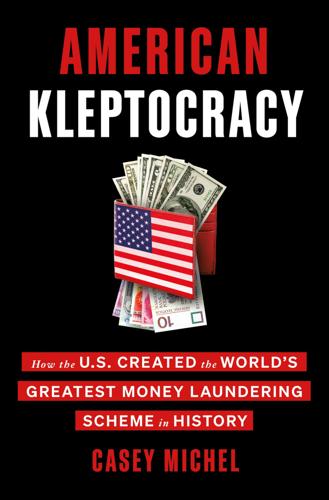
American Kleptocracy: How the U.S. Created the World's Greatest Money Laundering Scheme in History
by
Casey Michel
Published 23 Nov 2021
Ibid. 5. Ibid. 6. “Standard Oil,” Encyclopedia Brittanica, https://www.britannica.com/topic/Standard-Oil. 7. Davis, “Delaware Inc.” 8. American Law Review 33 (St. Louis: Review Publishing, 1899), 419. 9. “Tax Competition and the Race to the Bottom,” Tax Justice Network, https://www.taxjustice.net/topics/tax-competition-and-the-race-to-the-bottom/. 10. Hamill, “The Story of LLCs: Combining the Best Features of a Flawed Business Tax Structure.” 11. American Law Review 33, 419. 12. Nicholas Shaxson, Treasure Islands (New York: Palgrave Macmillan, 2012). 13. Davis, “Delaware Inc.” 14.
…
And it means that it’s the states that are making millions from corporate registration fees, which they can use to buoy their budgets. With this competition—with states offering increasing efficiency and protections for corporate clients, including those who wanted anonymity—American states engaged in a so-called race to the bottom. And where that bottom lies remains anyone’s guess. 3 CONTROL EVERYTHING, OWN NOTHING “Imagine the possibilities!” —Wyoming Corporate Services1 Most of the audiences S. D. Woo encountered when traveling had never heard of Delaware, or knew anything about the state. Even most Americans would be hard-pressed to rattle off more than a few facts, if any, about the state.
…
The corporate sprint to New Jersey sparked a response from other state governments looking to get their share of this new Klondike gold mine. A renaissance in “business friendly” regulations quickly followed, with regulatory rollbacks racing from state to state. Thanks to these turn-of-the-century innovations, as one researcher related, U.S. states found themselves in that “race to the bottom,”9 with new laws imposing fewer and fewer “restraints on potential corporate abuses.”10 Basic corporate regulations—things like requiring shareholder input, or assuming liability for any malfeasance or accidents—suddenly began disappearing across states. And along the way, requirements for publicly identifying those behind the corporations also disappeared.
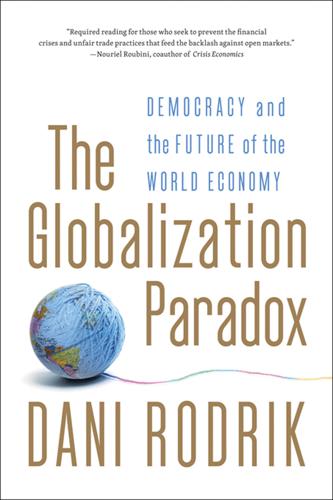
The Globalization Paradox: Democracy and the Future of the World Economy
by
Dani Rodrik
Published 23 Dec 2010
Federal Reserve vice chairman, worrying that international outsourcing will cause unprecedented dislocations for the U.S. labor force; Martin Wolf, the Financial Times columnist and one of the most articulate advocates of globalization, expressing his disappointment with the way financial globalization has turned out; and Larry Summers, the Clinton administration’s “Mr. Globalization” and economic adviser to President Barack Obama, musing about the dangers of a race to the bottom in national regulations and the need for international labor standards. While these worries hardly amount to the full frontal attack mounted by the likes of Joseph Stiglitz, the Nobel Prize–winning economist, they still constitute a remarkable shift in the intellectual climate. Moreover, even those who have not lost heart often disagree vehemently about where they would like to see globalization go.
…
Such a transformation would benefit the communities in which these corporations and their affiliates operate. But, as Ruggie explains, there would be additional advantages. Improving large corporations’ social and environmental performance would spur emulation by other, smaller firms. It would alleviate the widespread concern that international competition creates a race to the bottom in labor and environmental standards at the expense of social inclusion at home. And it would allow the private sector to shoulder some of the functions that states are finding increasingly difficult to finance and carry out, as in public health and environmental protection, narrowing the governance gap between international markets and national governments.7 Arguments on behalf of new forms of global governance—whether of the delegation, network, or corporate social responsibility type—raise troubling questions.
…
Our reliance on global governance also muddles our understanding of the rights of nation states to establish and uphold domestic standards and regulations, and the maneuvering room they have for exercising those rights. The worry that this maneuvering room has narrowed too much is the main reason for the widespread concern about the “race to the bottom” in labor standards, corporate taxes, and elsewhere. Ultimately, the quest for global governance leaves us with too little real governance. Our only chance of strengthening the infrastructure of the global economy lies in reinforcing the ability of democratic governments to provide those foundations.
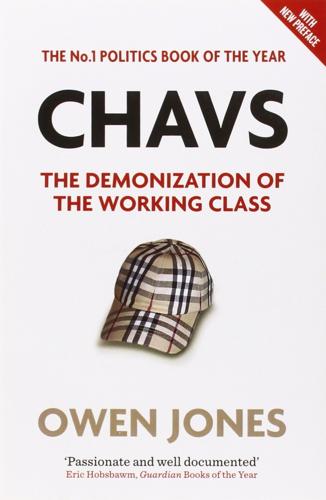
Chavs: The Demonization of the Working Class
by
Owen Jones
Published 14 Jul 2011
Why, the argument went, should private sector workers with comparatively meagre pensions subsidize the generous settlements of the public sector? There was no doubt that there had been a collapse in private sector pension provision. At the beginning of 2012, the Association of Consulting Actuaries warned that nine out of ten private sectordefined benefit schemes were closed to new entrants. But what was being proposed was a race to the bottom; public sector pensions should be dragged down, not private sector pensions dragged up. The majority of public sector workers saw this rhetoric for what it really was: on 30 June 2011, hundreds of thousands of teachers and civil servants went on strike. But with the Government still refusing to make significant concessions, trade union ballots across the public sector delivered overwhelming support for industrial action.
…
'It's a disgrace, I feel as though I've been used,' said one." It is not just agency and temporary workers who suffer because of job insecurity and outrageous terms and conditions. Fellow workers are forced to compete with people who can be hired far more cheaply. Everyone's wages are pushed down as a result. This is the 'race to the bottom' of pay and conditions. It might sound like a throwback to the Victorian era, but this could be the future for millions of workers as businesses exploit economic crisis for their own ends. In a document entitled The Shape of BusinessThe Next Ten Years, the Confederation of British Industry (CBI)-which represents major employers--claimed that the crash was the catalyst for a new era in business.
…
The real reasons for the strike, carefully obscured by the mainstream media, shed light on some of the complexities underlying the workingclass anti-immigration backlash in modem Britain. The Lindsey refinery's employer, IREM, had hired cheap, non-unionized workers from abroad. Not only did this threaten to break the workers' union, italso meant everyone else's wages and conditions would be pushed down in a 'race to the bottom'. 'We've got more in common with people around this world than with the employers who are doing this to us,' said Keith Gibson, one of the leaders of the strike and a member of the Trotskyist Socialist Party. BNP figures who tried to jump on the bandwagon were barred from the picket line. The demands of the strike committee included the unionization of immigrant labour, trade union assistance for immigrant workers and the building of links with construction workers on the continent.
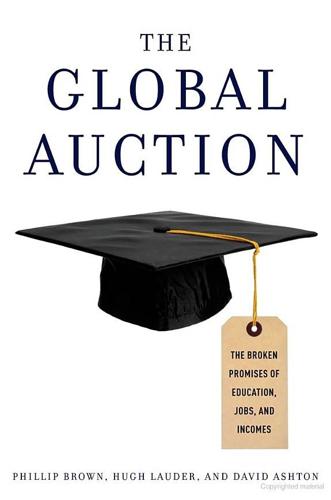
The Global Auction: The Broken Promises of Education, Jobs, and Incomes
by
Phillip Brown
,
Hugh Lauder
and
David Ashton
Published 3 Nov 2010
There is a recognition that low-cost countries are developing their own knowledge workers capable of achieving global standards that were previously assumed to be out of reach by anyone other than Western workers. Thomas Friedman’s account of the “flattening” of the world economy has been widely debated. He sees little reason to worry about America’s middle classes being embroiled in a global race to the bottom because he focused on the race to the top. The knowledge wars are, he believes, forcing Americans to raise their game in the competition for the best and most innovative ideas, leading him to conclude, America, as a whole, will do fine in a flat world with free trade— provided it continues to churn out knowledge workers who are able 22 The Global Auction to produce idea-based goods that can be sold globally and who are able to fill the knowledge jobs that will be created as we not only expand the global economy but connect all the knowledge pools in the world.
…
We were asked to turn off our recording equipment and in hushed voices, the two officials described their growing misgivings about the impact of free trade agreements working against the interests of American workers but to the benefit of American corporations. The consequences of this shift in economic power also led Robert Scott to conclude, “This shift has increased the global ‘race to the bottom’ in wages and environmental quality and closed thousands of U.S. factories, decimating employment in a wide range of communities, states, and entire regions of the United States. U.S. national interests have suffered while U.S. multinationals have enjoyed record profits on their foreign direct investments.” 23 The financial crash highlighted the economic catastrophe resulting from the failure of federal authorities to regulate financial markets, and the global auction highlights the social catastrophe of failing to regulate the relationship among education, jobs, and rewards.
…
This would reduce the risks managers take and enable them to focus more on the development of productive assets rather than inflating share prices or company profits for personal gain. Governments around the world, including the U.S. administration, also need to change the rules of the global auction. This would include new rules for the conduct of corporations and their executives designed to limit the race to the bottom that the reverse auction implies for many college-educated as well as less qualified workers. International labor A New Opportunity 159 standards would have to be reformed, allowing workers to counterbalance the power of global corporations by strengthening their rights to act collectively across national borders.

In Defense of Global Capitalism
by
Johan Norberg
Published 1 Jan 2001
For if the developing countries pay lower wages, do not protect their environment, and have insufferably long working hours, then won’t their cheap output eliminate our higher paying jobs, forcing us to lower our standards and our wages? We will have to keep working harder and longer to keep up. Firms and capital quickly migrate to where the lowest wages and the worst working conditions exist. It will be a ‘‘race to the bottom.’’ The one with the lowest social standard will win and will corner the investments and export revenues. Theoretically this seems a tough case to answer. The only trouble is that it has no foundation in reality. The world has not witnessed a deterioration of working conditions or wages in the past few decades, but precisely the opposite.
…
Each individual can opt out of certain things so as not to feel permanently at the beck and call of others. You don’t have to check your e-mail over the weekend, and there is no law against turning on the answering machine. Big is beautiful In the anti-globalists’ worldview, multinational corporations are leading the race to the bottom. By moving to developing countries and taking advantage of poor people and lax regulations, they are making money hand over fist and forcing other governments to adopt ever less restrictive policies. On this view, tariffs and barriers to foreign investment become a kind of national defense, a protection against a ruthless entrepreneurial power seeking to profiteer at people’s expense.
…
That is a dismal thesis, with the implication that when people obtain better opportunities, resources, and technology, they use them to abuse nature. Does there really have to be a conflict between development and the environment? The notion that there has to be a conflict runs into the same problem as the whole idea of a race to the bottom: it doesn’t tally with reality. There is no exodus of industry to countries with poor environmental standards, and there is no downward pressure on the level of global environmental protection. Instead, the bulk of American and European investments goes to countries with environmental regulations similar to their own.
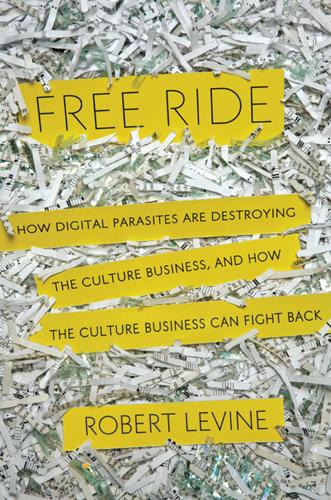
Free Ride
by
Robert Levine
Published 25 Oct 2011
Media companies that sell products online have to lower prices in order to compete with pirated versions of those same products sold by companies that bear none of the production costs. By making it essentially optional to pay for content, piracy has set the price of digital goods at zero. The result is a race to the bottom, and the inevitable response of media companies has been cuts—first in staff, then in ambition, and finally in quality. This devaluation could also hurt the Internet, since professional media provides much of the value in a broadband subscription. A 2010 study by the Pew Research Center’s Project for Excellence in Journalism found that more than 99 percent of blog links to news stories went to mainstream media outlets like newspapers and networks.15 File-sharing services are filled with copyrighted music.16 Seven of the ten most popular clips in YouTube history are major-label music videos.17 Amid the Internet’s astonishing array of choices, statistics show that most consumers continue to engage with the same kind of culture they did before—only in a way that’s not sustainable for those who make it.
…
In almost every way, it’s the exact opposite of the more efficient Internet, where more content is pirated than purchased and the producers of shows are pressured into giving them away before another company can do it for them. Competition concerns cost and Google search ranking, and the winners are sites like the Huffington Post. If cable worked like the Internet, the result would be a race to the bottom: shows that are free to watch, cheap to make, and easy to forget. The company that represents the greatest threat to television may be Google. In May 2010, the search giant announced Google TV, a platform that brings the Internet to a TV screen. As with Boxee, that means users can easily download video illegally as well as buy it.
…
Since the Internet has global reach, technology executives worry their companies could be subject to the most onerous regulations of any country in which they operate—“a world of Singaporean free speech, American tort law, Russian commercial regulation, and Chinese civil rights,” as Goldsmith and Wu describe it.10 When Judge Gomez issued his Yahoo! decision, online activists worried it set a precedent that would allow any country to impose its laws on the online world. “We now risk a race to the bottom,” said Alan Davidson, an attorney with the Center for Democracy and Technology who has since become the top lobbyist at Google. “The most restrictive rules about Internet content—influenced by any country—could have an impact on people around the world.”11 This is certainly worth worrying about, but it could be seen as a very American view.
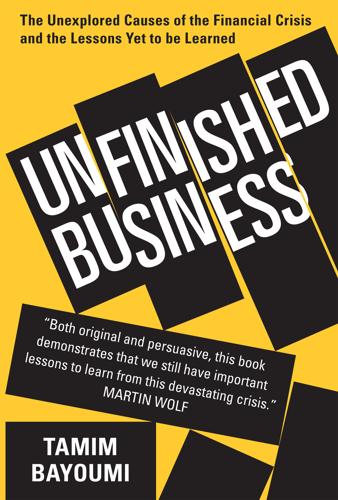
Unfinished Business
by
Tamim Bayoumi
The decision to retain national supervision was crucial as it undermined the European banking system in two ways. Competition across national supervisors meant that they increasingly became supporters for their own major banks. This led to the creation of large “national champions” and promoted a supervisory “race to the bottom” as regulators looked to boost the competitive position of their own champions by not being too intrusive. In addition, the fact that in the end almost all entry into other European countries was through subsidiaries meant that the costs of the eventual crisis were bottled up in individual countries.
…
Bank capital is intrinsically risky as owners are the first to lose their money in the case of financial distress. Accordingly, investors demand a higher rate of return on capital compared to safer forms of borrowing such as bonds or deposits. The concern was that competition across supervisors was creating a regulatory “race to the bottom” in which each country tried to make their banks more competitive by diluting the requirements on their expensive capital buffers, leading to inappropriately thin buffers across the board.17 The risk had been underlined by the international repercussions of major bank failures, such as that of Continental Illinois Bank in 1984.
…
The split between centralized bank supervision and national responsibility for bank rescues risks undermining the effectiveness of centralized ECB supervision of Euro area banks. This is because it replaces one set of misaligned incentives with another set. The problem with the pre-crisis system was that national regulators were responsible for both bank supervision and support, creating incentives for a regulatory race to the bottom. The new system generates a new misalignment of incentives since national regulators, who have responsibility for bank support, will generally want to minimize their assessment of banking problems and the associated costs which will put them at odds with the ECB, which is responsible for supervision.

Melting Pot or Civil War?: A Son of Immigrants Makes the Case Against Open Borders
by
Reihan Salam
Published 24 Sep 2018
Further, the publisher does not have any control over and does not assume any responsibility for author or third-party websites or their content. Version_1 To my sisters CONTENTS TITLE PAGE COPYRIGHT DEDICATION Introduction CHAPTER ONE The Unfinished Melting Pot CHAPTER TWO Somebody Else’s Babies CHAPTER THREE Race to the Bottom CHAPTER FOUR Jobs Robots Will Do CHAPTER FIVE It’s a Small World CHAPTER SIX Nation Building Conclusion ACKNOWLEDGMENTS NOTES INDEX ABOUT THE AUTHOR Introduction A few years ago, a cable news producer asked me to appear on his television program to discuss a grisly murder in which, if I recall correctly, a Muslim immigrant had hacked someone to death in the name of Islam.
…
As the political scientist Morris Levy suggested to The New York Times, Americans “dislike the idea of a permanent second-class citizen,” as it cuts against “a core set of values that people think of as really elemental to being American.”52 The United States does have long-term guest-worker programs, to be sure, but they typically give guest workers the right to bring over their dependents. Overstaying guest-worker visas is common, and, of course, people on temporary visas often have citizen children. The babies of low-skill immigrants are as much our babies as the babies of high-skill immigrants. And, as of now, we are letting them down. CHAPTER THREE Race to the Bottom As a little kid, I was an accidental ethnic pioneer. On the first day of kindergarten, I remember being teased for being an “Indian,” which is to say an indigenous person. I vaguely recall that my family found the teasing more baffling than offensive, and so I brushed it off. In short order, the teasing stopped and I befriended most of my classmates.
…
Politico, March 19, 2018. www.politico.com/magazine/story/2018/03/19/how-america-fell-behind-the-world-on-immigration-217658. 52. Bui, Quoctrung and Caitlin Dickerson. “What Can the U.S. Learn From How Other Countries Handle Immigration?” The New York Times, February 16, 2018. www.nytimes.com/interactive/2018/02/16/upshot/comparing-immigration-policies-across-countries.html. CHAPTER THREE: RACE TO THE BOTTOM 1. Krogstad, Jens Manuel and Ana Gonzalez-Barrera. “A majority of English-speaking Hispanics in the U.S. are bilingual.” Pew Research Center, March 24, 2018. www.pewresearch.org/fact-tank/2015/03/24/a-majority-of-english-speaking-hispanics-in-the-u-s-are-bilingual. 2. Inspired by Richard Alba. 3.
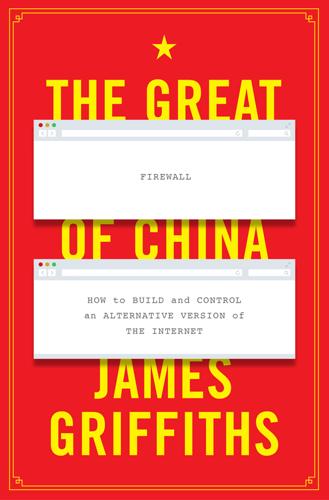
The Great Firewall of China
by
James Griffiths;
Published 15 Jan 2018
Liu, ‘An open letter to Jerry Yang, chairman of Yahoo! Inc. regarding the arrest of Shi Tao’ in ‘Race to the Bottom’: corporate complicity in Chinese internet censorship, New York NY: Human Rights Watch, 2006, https://www.hrw.org/reports/2006/china0806/14.htm 21L. Rao, ‘The most expensive sake that Alibaba’s Jack Ma ever had’, Fortune, 25 September 2015, http://fortune.com/2015/09/25/yahoo-alibaba-investment-jack-ma/ Part 2 Chapter 6 1‘How censorship works in China: a brief overview’ in ‘Race to the Bottom’: corporate complicity in Chinese internet censorship, New York NY: Human Rights Watch, 2006, https://www.hrw.org/reports/2006/china0806/3.htm 2R.
…
Griffiths, ‘VPN down: China goes after Astrill, other anti-censorship apps in run up to WW2 anniversary parade’, South China Morning Post, 26 August 2015, http://www.scmp.com/tech/apps-gaming/article/1852658/vpn-down-china-goes-after-astrill-other-anti-censorship-apps-run 18‘How censorship works in China: a brief overview’ in ‘Race to the Bottom’: corporate complicity in Chinese internet censorship, New York NY: Human Rights Watch, 2006, https://www.hrw.org/reports/2006/china0806/3.htm 19G. Walton, China’s Golden Shield: corporations and the development of surveillance technology in the People’s Republic of China, Montreal: International Centre for Human Rights and Democratic Development, 2001, https://web.archive.org/web/20020206170828/http://www.ichrdd.ca/english/commdoc/publications/globalization/goldenShieldEng.html 20J.
…
Sulzberger, ‘China’s leaders; in Jiang’s words: “I hope the Western world can understand China better”’, The New York Times, 10 August 2001, https://www.nytimes.com/2001/08/10/world/china-s-leaders-jiang-s-words-hope-western-world-can-understand-china-better.html 3‘Jiang renews warning against “pernicious” internet’, Agence France-Presse, 11 July 2001. 4‘How censorship works in China: a brief overview’ in ‘Race to the Bottom’: corporate complicity in Chinese internet censorship, New York NY: Human Rights Watch, 2006, https://www.hrw.org/reports/2006/china0806/3.htm 5‘Golden Shield project’, Guangdong Hongan Group, 2012, https://web.archive.org/web/20150416093636/http://www.gdhongan.com:80/industroy.asp?ChannelID=7# 6J.
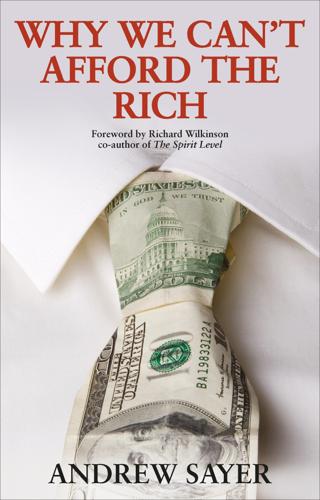
Why We Can't Afford the Rich
by
Andrew Sayer
Published 6 Nov 2014
The second myth is that corporations have a duty to avoid tax in order to meet their obligation to maximise shareholder value. But there is no such obligation in law. Tax havens compete with one another to attract the rich and their wealth, creating a race to the bottom (‘tax competition’) that continually pressures other countries to lower their own taxes, or at least those that most affect the rich. Escaping financial regulations also creates a race to the bottom to deregulate onshore economies. Rates of corporation tax have fallen across the rich countries since the 1970s. Companies that hide activities offshore can undercut those companies that actually do pay their tax; those that do pay may complain but, not surprisingly, many decide that if they can’t beat them, they may as well join them.
…
That the banks chose to hand over so much of their enormous profits to shareholders at a time when they needed to build up their capital base speaks volumes about the irrationality of shareholder capitalism. In the 1980s, governments began to extol the virtues of ‘flexible labour markets’, a brilliant euphemism for reduced protection, bargaining power and security for workers and a race-to-the-bottom for cheaper labour. In this new environment, slow growth of wages and salaries meant that aggregate demand for goods and services also grew more slowly, making it harder for companies to make a profit from investment in new capacity and products. Two things reduced or postponed the damage; first, the rise in women’s employment, which increased household income for many, and second, the dramatic expansion of consumer debt, particularly mortgages and credit cards, although eventually this depressed demand and consumption because the borrowers had to pay off the interest.
…
While they will no doubt be justified as ‘cutting red tape’, their aim is to maximise the economic and political power of international business by minimising government restrictions on their operations, whether they are for protecting public health, employment conditions or the environment, or simply for allowing governments to control their economies. The most likely – and intended – outcome is a race to the bottom in standards. The treaties also look set to extend corporations’ intellectual property rights, preventing individuals and other companies, including smaller businesses across the world, from benefiting from their innovations without paying them rent. As we saw in Parts One and Two, companies themselves typically benefit from countless freely available innovations of the commons, yet their powers to privatise their own innovations are being extended.
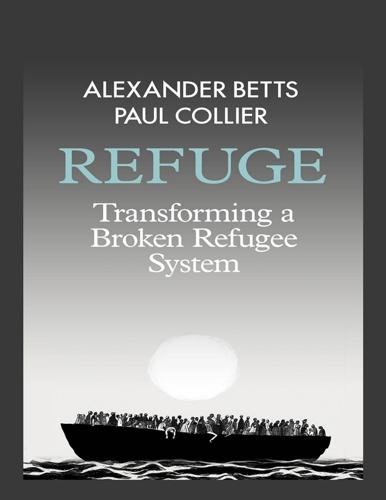
Refuge: Transforming a Broken Refugee System
by
Alexander Betts
and
Paul Collier
Published 29 Mar 2017
The cooperation problem in the refugee regime can be thought of as what game theorists would describe as a ‘suasion game’: one in which weaker players are left with little choice but to cooperate and stronger players are left with little incentive to cooperate.12 This explains in part why fewer than 1 per cent of the world’s refugees get access to resettlement in third countries beyond their region of origin. It explains why UNHCR’s assistance programmes around the world are chronically under-funded. It explains why distant countries in the global North, who take a relatively tiny proportion of the world’s refugees, constantly compete with one another in a ‘race to the bottom’ in terms of asylum standards in order to encourage refugees to choose another country’s territory rather than their own. In the absence of clear rules, attempts by UNHCR to overcome this collective action failure have had to be ad hoc and episodic. The organization relies upon annual voluntary contributions for almost all of its budget, rather than having access to assessed, multi-year funding contributions.
…
Yet it is crucial that if refugee protection is to be sustainable, better answers be found, premised upon collective rather than unilateral action and reinforcing rather than undermining the quantity and quality of protection available to refugees. It is in the historical absence of a clear set of principles and mechanisms for responsibility-sharing that, gradually, almost all states have found themselves in a race to the bottom in term of standards of protection. MISSING MODELS: WHY CAMPS ARE NOT ENOUGH The principal way in which the refugee regime provides protection is ineffective and outdated. Since the 1980s the dominant model has been the long-term provision of assistance in refugee camps and closed settlements.
…
The Commission gradually negotiated a Common European Asylum System (CEAS) – a series of common criteria for qualification (who is a refugee?), adjudication (how do we determine who is a refugee?), and reception (what rights should asylum-seekers and refugees receive?). The aim was to avoid a ‘race to the bottom’ in terms of standards, reduce the likelihood of refugees engaging in ‘asylum shopping’, and ensure no one state ended up with a disproportionate share of refugees because of its having more generous policies. That was the theory. In practice, the system was dysfunctional from the start. States adopted different asylum standards.
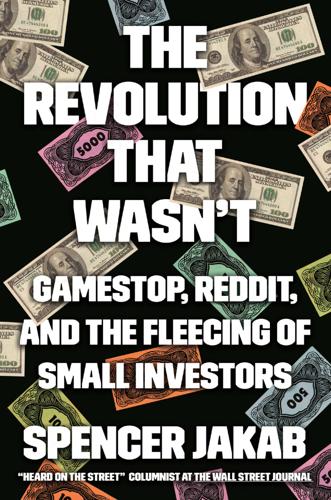
The Revolution That Wasn't: GameStop, Reddit, and the Fleecing of Small Investors
by
Spencer Jakab
Published 1 Feb 2022
ISBN: 9780593421154 (hardcover) ISBN: 9780593421161 (ebook) book design by chris welch, adapted for ebook by estelle malmed pid_prh_6.0_139089994_c0_r0 To my three apes,Jonah, Elliott, and Danny Contents Introduction Chapter 1 Mr. Kitty Goes to Washington Chapter 2 September 8, 2019 Chapter 3 Killer App Chapter 4 Winter of 2019–2020 Chapter 5 Race to the Bottom Chapter 6 April 2020 Chapter 7 Get Shorty Chapter 8 Summer–Fall 2020 Chapter 9 Cheat Code Chapter 10 Holiday Season 2020–2021 Chapter 11 Poking the Bear Chapter 12 January 22, 2021 Chapter 13 Rise of the Apes Chapter 14 January 26, 2021 Chapter 15 The Influencers Chapter 16 January 27, 2021 Chapter 17 LOL, Nothing Matters Chapter 18 January 28, 2021 Chapter 19 Men in Tights Chapter 20 January 29, 2021 Chapter 21 How Not to Stick It to the Man Chapter 22 February 2021 Chapter 23 The Same Old Game Bonus Round Acknowledgments Notes Index Introduction I’ll never forget the day I found out that my sons were degenerates.
…
The COVID-19 pandemic was about to make scrolling through Reddit and trading stocks a lot more popular for young people, laying more of the groundwork for the meme-stock explosion. Another vital ingredient had fallen in October 2019 when every major broker cut its trading commissions to zero. Chapter 5 Race to the Bottom They called it “Mayday.” Following years of complaints, Washington had had enough of Wall Street’s foot-dragging over its longest-standing shibboleth. In 1973 securities regulators told brokers that they had to get rid of fixed stock-trading commissions that dated back to the eighteenth century.
…
Various estimates put individual investors’ buying and selling of stocks at about 10 percent of the market’s total in 2019. Credit Suisse said that it had risen to between 15 percent and 18 percent in early 2020 and an astonishing 30 percent by early 2021 when the GameStop squeeze happened. The race to the bottom in costs coincided with the quality of some of the companies that novices embraced. Over-the-counter or penny stocks, a hotbed of shady companies called that because they are often quoted at a few cents or even less, saw an astounding trillion shares traded in December 2020—about fifty times the turnover of the regulated Nasdaq.
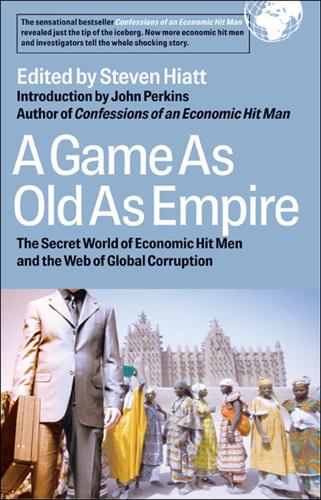
A Game as Old as Empire: The Secret World of Economic Hit Men and the Web of Global Corruption
by
Steven Hiatt; John Perkins
Published 1 Jan 2006
Instead, governing elites amass obscene fortunes while the poor shoulder the burden of paying off the debts. A former World Bank staffer, Steve Berkman presents an inside investigator’s account of how these schemes work to divert development money into the pockets of corrupt elites and their First World partners. 9 The Philippines, the World Bank, and the Race to the Bottom Ellen Augustine “Development” and “modernization” became code words for U.S. efforts to prop up the regime of President Ferdinand Marcos, with the World Bank serving as a conduit for the financing of Marcos’ dictatorship. Some 800 leaked documents from the World Bank itself tell how the Bank financed martial law and made the Philippines the test case for its export-led development strategy based on multinational corporations—with disastrous results for both democracy and economic development. 10 Exporting Destruction Bruce Rich Export credit agencies have quietly become the world’s largest financial institutions, backing $788 billion in trade in 2004.
…
In “The World Bank and the $100 Billion Question,” Berkman provides an insider’s account of how and why the Bank looks the other way as corrupt elites steal funds intended for development aid. • In the 1970s, the Philippines were a showcase for the World Bank’s debt-based model of development and modernization. In “The Philippines, the World Bank, and the Race to the Bottom,” Ellen Augustine tells how billions in loans were central to U.S. efforts to prop up the Marcos dictatorship, with the World Bank serving as a conduit. • Export credit agencies have a single job: to enrich their countries’ corporations by making it easier for poor countries to buy their products and services.
…
POSTSCRIPT: By the time Marcos was overthrown in 1986, the foreign debt of the Philippines exceeded $28 billion, including around $675 million in debts incurred by companies run by Marcos’ cronies and guaranteed by Philippine government institutions. As Ellen Augustine notes in chapter 9, “The Philippines, the World Bank, and the Race to the Bottom,” the Philippine people are still struggling to repay debt accumulated during the Marcos era. —S.H. 3 Offshore banking havens enable the extraction of $500 billion a year from the Third World–a flow of dirty money that has become essential to global elites. Dirty Money: Inside the Secret World of Offshore Banking John Christensen Kuala Lumpur, July 1985: Maybe it was the heat, or perhaps the Guinness and Courvoisier had dulled my senses, but something about what the man next to me was saying didn’t quite add up.
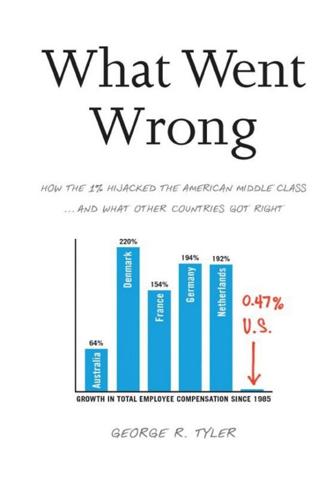
What Went Wrong: How the 1% Hijacked the American Middle Class . . . And What Other Countries Got Right
by
George R. Tyler
Published 15 Jul 2013
The average down payment for first-time buyers fell from 10 percent in 1989 to a bare 2 percent by 2007.33 Deregulation added to the blaze. A majority of these unconventional loans came to be made by unregulated mortgage firms or S&Ls “not subject to routine supervision,” according to Barry Ritholtz, CEO of the quantitative research firm Fusion IQ.34 Stolid firms refusing to join this race to the bottom in credit standards were penalized with shrinking market share and falling share prices. Alan Greenspan’s fingerprints were everywhere as the housing bubble expanded before the 2004 election, including successfully urging Wall Street to expand home equity loans. Such loans to households totaled $1.79 trillion during 2003–2005, adding spending comparable to an astounding 6 percent of GDP annually, a nice fillip for the reelection campaign of President George W.
…
It also proved to be a muscular antipoverty mechanism, setting a living wage floor sufficient to prevent abject family poverty. The logic of the minimum wage is straightforward: without a robust market for labor or a wage floor beneath them, history since the industrial revolution teaches that market forces produce a race to the bottom for wages. The American experience during my first years of work demonstrated how successful minimum wages can be. During its peak years in the late 1960s and early 1970s, America enjoyed the lowest poverty rates ever in its history (11.1 percent in 1973) and higher real wages than today. And the lowest recorded rate of childhood impoverishment ever in America was in 1969, at 13.8 percent.44 Most persuasive is that year after year in this period, America recorded among the lowest unemployment levels in postwar history despite the high minimum wage.
…
But we know that not all Americans suffered. Its dynamic forces improved resource allocation, greatly expanded world trade, and became a wealth machine for a thin slice of America. That meant greater rewards to owners of capital, innovators, and the most skilled, whose shares of national income rose. But for others, a race to the bottom in wages ensued, with workers in Milwaukee, Brooklyn, and Dallas competing one-on-one with workers in Sri Lanka, New Delhi, and Shanghai. And the biggest losers have been less skilled workers and high-wage union shops targeted by the offshoring and wage compression features of Reaganomics. European economies are much more integrated and influenced by world trade than is America’s.
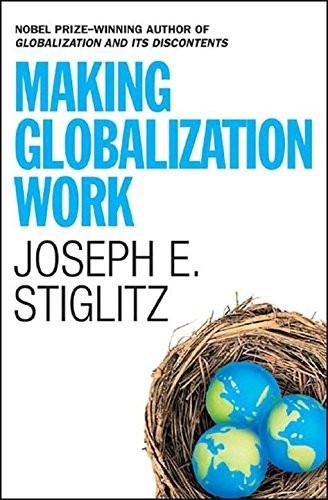
Making Globalization Work
by
Joseph E. Stiglitz
Published 16 Sep 2006
The advanced industrial countries can help ensure transparency by simply saying: no one gets a tax deduction for money spent on royalties or other payments to foreign governments unless they fully disclose what was paid and how much of the resource in question was extracted. Without such a broad agreement, there will continue to be a race to the bottom, and the companies and countries most willing to engage in corrupt practices, and least willing to be transparent, will have an advantage over the others. 2. Reducing arms sales Even worse than corruption is the armed conflict that mineral and oil resources finance. Again, the international community could do more to make it more difficult and more expensive to acquire arms.
…
Enforcement We have described a variety of good practices, ways in which developed countries can help the developing world ensure that citizens reap the benefits of the resources that lie within their countries—by enhancing transparency, discouraging bribery and corruption, and protecting the environment. But these measures cannot and should not be left to goodwill. The amounts of money at stake are too large, the incentives for a race to the bottom too great. There must be effective enforcement. Trade agreements can be used to force “good behavior.” Trade sanctions can be used against companies and countries that engage in unfair trade practices—and failing to subscribe to the extractive industries transparency initiative and other anti-bribery measures should be treated as an unfair trade practice.
…
If one company leaves, another may not fill the gap—or if it does, it may demand even more unfavorable terms. Globalization has compounded the problems arising from the misalignment of incentives in modern corporations. Competition among developing countries to attract investment can result in a race to the bottom, as companies seek a home with the weakest labor and environmental laws. As the case of Bhopal illustrates, the ability to hide behind borders makes it even more difficult to hold corporations and their officers accountable. Furthermore, the speed with which assets can be moved from one country to another means that even if there is a monetary judgment against a firm in one country, it may be impossible to collect.
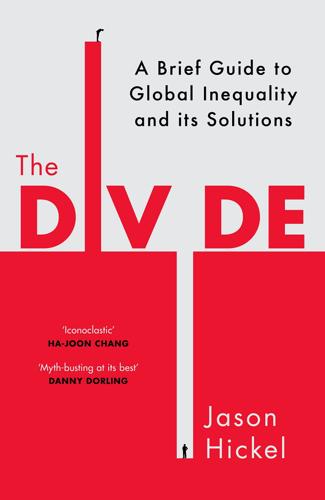
The Divide: A Brief Guide to Global Inequality and Its Solutions
by
Jason Hickel
Published 3 May 2017
In fact, companies found they had the power to scan the globe in search not only of cheaper labour, but of the cheapest possible labour. And developing countries, in turn, found that in order to successfully attract foreign investment they had to compete with one another to drive wages down. It became a global ‘race to the bottom’ towards ever cheaper labour and ever lower standards. The solidarity that marked the rise of the South in the 1960s was suddenly replaced with cutthroat competition. In the countries of the G7, corporations gained the upper hand over their workers at last – at least in industries that were amenable to offshoring, like manufacturing.
…
South Asia, where structural adjustment was not forcibly applied to the same extent, managed to shrink the inequality ratio during this period by 15 per cent, although the absolute gap between the per capita incomes of South Asia and the United States continued to grow.47 Source: World Development Indicators The race-to-the-bottom effect triggered by structural adjustment and globalisation is one of the main drivers behind this ever-widening gap. In the 1960s developing countries were losing $161 billion (in 2015 dollars) each year through what economists call ‘unequal exchange’, the difference between the real value of the goods that a developing country exports and the market prices that it gets for those goods.
…
At the time of writing, the new Lord Mayor was lobbying hard to turn Kenya into a tax haven. The problem with tax havens is not only that they facilitate the theft of capital, or that they prevent governments from capturing revenues, but also that they induce what analysts call ‘tax competition’ or ‘tax warfare’. Tax havens have set off a kind of global race to the bottom, with countries competing to offer low tax rates to foreign investors in order to attract them in. This constant pressure to reduce taxes makes it very difficult for parliaments and governments to make rational decisions about tax legislation, or to plan their budgets into the future. Some economists nonetheless believe that the global tax haven system is justifiable according to neoliberal theory: they claim that money should be allowed to move freely around the world in search of the best tax rates.

The Hidden Globe: How Wealth Hacks the World
by
Atossa Araxia Abrahamian
Published 7 Oct 2024
“I was also disturbed by the anti-Israeli sentiment among the Jordanian industrialists. I wasn’t convinced SEZs would bridge the cultural gap. I thought they were becoming instruments of exploitation. I wondered, when are they agents of good? And I realized you need local entrepreneurs investing and developing their own business…or it’s a race to the bottom.” There were foundational problems too. Zone bylaws in different places were looking increasingly alike. They were not improving infrastructure, importing new ideas, or allowing specialized clusters of industry to form, as Baissac believed they should. They were mostly just making life easier for businesses, with little regard for the countries where they were located.
…
So it makes perfect sense that a veteran of offshore activity on Earth would be among the first in line to exploit this final frontier. It’s a contentious business. For every happy shareholder praising Luxembourg’s business-friendly rules and money-saving loopholes, there’s a critic condemning its willingness to expedite the regulatory race to the bottom. But then again, what can a poor boy do? In a global economy that ruthlessly pits nations against one another, a country like Luxembourg is left to exploit the most valuable resource it has: its national sovereignty. By crafting innovative rules, laws, and regulations that only it could (or would) put on offer, Luxembourg attracted banks, telecommunications companies, and consulting firms before any of these industries came to dominate the global economy.
…
If Carnival, the biggest U.S. cruise line, wanted to flag its fleet in the United States, its boats would have to be built in America, staffed by Americans, pay federal taxes and minimum wage, and adhere to myriad regulations, like making cabins wheelchair accessible. Instead, it rents Panamanian or Bahamian laws, stuffs its crew cabins with foreign workers, and saves itself millions upon millions of dollars a year. To limit the inevitable “race to the bottom” and make sure basic safety rules are being followed, a few dozen countries have signed a series of memoranda allowing local port agents to search and enter ships docked at their harbors if they suspect they are mistreating workers, polluting the environment, or committing one of a laundry list of other transgressions.
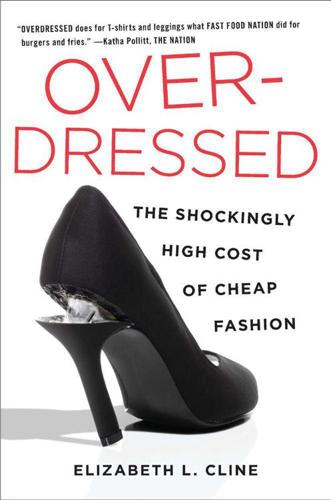
Overdressed: The Shockingly High Cost of Cheap Fashion
by
Elizabeth L. Cline
Published 13 Jun 2012
Anthony Lilore, a thirty-year veteran of the fashion industry and an advocate for Save the Garment Center, agrees that the increasing informalization of fashion has made consumers cheaper. “Fashion used to be tailored clothing, not bespoke, but a much more structured garment bought at department stores,” he says. “That men walk around in T-shirts and elastic waistband pants has very definitely impacted the notion of what fashion is and contributed to the race to the bottom.” The less skill involved in making our clothes, the cheaper it becomes, and the less we are willing to pay for it. The more basic clothes are, the less it matters where they’re made. A tank top can be made anywhere in the world. The same cannot be said of a well-made dress, which requires a highly skilled seamstress.
…
I could make a knockoff of what might just be a knockoff. Lily also gave me a price quote for the florette dress, $11. She said, “The cost is rising, but I will try my best to give you my best price because we are friends.” Over the past two decades, American consumers have accepted, and benefited from, the race to the bottom in fashion. The competition in garment manufacturing has been beyond fierce, with only those with the lowest prices surviving. According to some Chinese suppliers, net margins are still somewhere between 3 percent and 5 percent.1 Returned orders, cancellations, or lapses in the production lineup are common occurrences and they can all easily put a factory under.
…
Abuses and sweatshops still occur in the United States, but smaller production shops and a more locally minded industry focused on low-volume, better-made garments would improve accountability and correct some of fashion’s labor problems. Increasing the price of fashion would also help correct the race to the bottom in garment worker wages. “It’s a lot easier to keep an eye on what’s going on by keeping things local,” EPIC’s Tristan Scott says, although many of their designers produce in such small batches that the pieces are sewn in their own homes or personal studios. Some factory owners complain that state and federal labor laws are too strict, putting them at a competitive disadvantage.
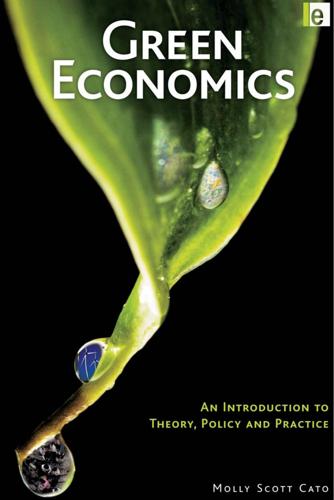
Green Economics: An Introduction to Theory, Policy and Practice
by
Molly Scott Cato
Published 16 Dec 2008
In the market for textiles, for example, there is fierce competition between poorer countries, which produce more than half the world’s textile exports and nearly three-quarters of its clothing exports.17 Producer countries enjoyed some protection through the 136 GREEN ECONOMICS Multi-Fibre Arrangement (originally negotiated by developed countries to protect their post-war markets against imports) until this was removed under WTO pressure at the end of 2004. This has led to the collapse of an important sector of production in countries whose workers were paid slightly more – the so-called ‘race to the bottom’ in production.18 From a development economics perspective and in a book with a strong focus on poverty alleviation, Tom Lines argues the case for a fundamental restructuring of commodities markets. He also suggests informal cooperation between poorer countries dependent on commodities to earn foreign exchange to increase their market power: For example, in May 2005 a new government in Ecuador (which exports more bananas than any other country) signed a decree to regulate the volume of bananas leaving the country.
…
The erosion of wages, social welfare standards and environmental regulations for the sake of international trade. 3. The imposition world-wide of a consumer monoculture. Widely but falsely believed to be irreversible – See also financial meltdown, casino economy, Third World debt and 140 GREEN ECONOMICS race to the bottom (16th century: from colonialism, via development).1 This is, as Hines himself concedes, a blunt and indeed a savage critique. He sees globalization not as a positive move but rather as an economic delocalization or dismantling of local economies on a global basis. Woodin and Lucas refer to globalization as ‘the economics of insecurity’, making a strong case that it was a politically motivated project justified on the basis of economic efficiency but in reality operating for the benefit of transnational corporations or TNCs: There is plenty of evidence to show that the beneficiaries of this massive expansion in international trade are the transnational corporations (TNCs) that control it.
…
per cent of all fruit consumed in the UK now come from overseas.4 The problem for the proponents of localization is that the rules of the economic game are stacked against them. Although globalization has resulted in a single economy for sales, there is no global rate for wages, nor internationally agreed standards of employment or environmental protection. In such a world it is inevitable that there will be what critics of globalization refer to as a ‘race to the bottom’, where all production will shift to countries which have the lowest environmental and employment standards. The impossibility of competition between workers in Western economies, protected by minimum wage legislation, and those in the poorer nations is clear from the comparison of wage rates illustrated in Figure 9.2.
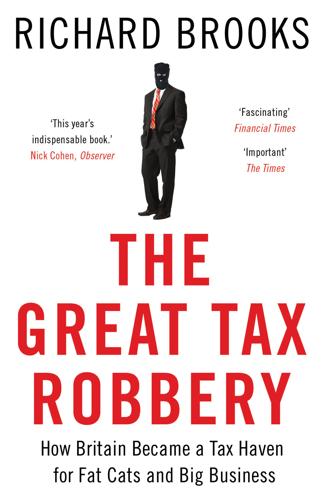
The Great Tax Robbery: How Britain Became a Tax Haven for Fat Cats and Big Business
by
Richard Brooks
Published 2 Jan 2014
Corporation tax avoidance transactions dating from before 2004 but by now reaching the higher courts were regularly going the taxman’s way as judges reasserted the ‘Ramsay’ principle of looking at schemes in the round. Of the last eight such cases, the Revenue had won five. Income tax avoidance schemes were almost without exception being decided in the Revenue’s favour. But in the international taxation ‘race to the bottom’ that the government was keen to accelerate, an easy ride from the tax authorities was paraded as a competitive national advantage just like plummeting corporate tax rates and lax offshore avoidance laws. Treasury minister David Gauke spelt it out: ‘How companies experience the UK tax system is as important to tax competitiveness as the headline rates that we set.’36 Multinationals, he was pleased to report, were telling him that ‘HMRC compares very favourably’ with foreign tax authorities (small business would not have been so complimentary).37 The government and the country’s most senior tax inspector had become salesmen, and what they were selling was Britain’s tax system.
…
They were to appear at a seminar hosted by notorious tax-dodger General Electric – represented by its UK tax director and chairman of the HMRC-Industry Business Tax Forum, Will Morris – at the right-wing American Enterprise Institute. The title was ‘UK Tax Reform: a Roadmap for the US?’ and it was part of a concerted campaign to get US tax rates and offshore tax rules reduced to something like the UK’s in the global race to the bottom. The international tax-slashing circus would not, of course, have been complete without the Oxford Business Centre’s Professor Devereux jetting in to provide his contribution. ‘We [the UK] have been quite fortunate in our leaders over a few years,’ he remarked by way of explanation for getting the offshore corporate tax breaks on the statute book.48 Or as Morris had put it a few months before: ‘We have business talking to government, we have government talking to advisers, we have everybody essentially trying to move in the same direction.’49 This was supposedly the modern way to make policy.
…
This, however, was precisely the opposite of what the British government was doing by effectively trashing its own CFC laws (as OECD tax chief Pascal Saint-Amans would point out to a US congressional committee in June 2013). This exposes the limitations of the OECD’s work. Most essential changes to the corporate tax system require domestic law changes and, however laudable the organisation’s pronouncements, there is no sign that these will be forthcoming. With the UK leading the race to the bottom on corporate tax, our government comprehensively undermines the international effort against multinationals’ tax avoidance. As Cameron waxed lyrical and the OECD beavered away, down at the British tax avoidance club the Treasury and Britain’s biggest tax avoiders were reshaping the law to frustrate their sentiments and intentions.
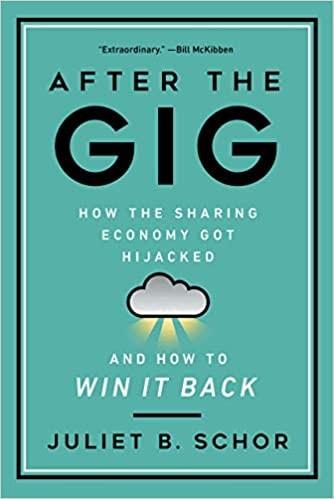
After the Gig: How the Sharing Economy Got Hijacked and How to Win It Back
by
Juliet Schor
,
William Attwood-Charles
and
Mehmet Cansoy
Published 15 Mar 2020
He would get up early before anyone arrived, and go for a run, to maintain the fiction that he was just coming in from exercising and needed a shower. But, he explained, it’s “absolutely mentally exhausting to keep up all these projects and this farce about my living situation.” Josh felt that TaskRabbit is “actually really a race to the bottom.” He recounted one of his clients telling him, “It’s almost exploitative the things she can get people to do for ten dollars.” Josh had big plans for his future. He was going to learn the software program Ruby on Rails, which he was counting on to allow him to “walk right into a minimum $80,000 a year job.
…
In sectors with low barriers to entry where the required skills are widely available, competition can become “ruinous” and result in poverty wages. That dynamic is the origin of taxi regulation and the basis on which driving became a viable occupation. By breaking the law, Uber and Lyft destroyed that viability, and we’re now seeing their drivers subjected to a similar race-to-the-bottom.27 And what the ideological high ground can’t accomplish, money can. The biggest platforms, again with Uber in the lead, have employed an army of lobbyists and public relations firms to fight even minor changes. In response to a modest proposed California law to fill the gap in insurance coverage when a driver has the app on but isn’t on a fare, Uber hired fourteen of the fifteen biggest Sacramento lobbying firms.28 In 2017 Uber and Lyft had more lobbyists than Amazon, Microsoft, and Walmart combined.29 Airbnb has also been active trying to stop laws that limit rental activity or mandate the collection of hotel and occupancy taxes.
…
Robinson develops the concept of “regulatory breach,” by which platforms enroll people en masse and avoid contact with regulatory interfaces. Robinson (2017, chap. 4). 25. In addition to the discussion in chapter 1, see Collier et al. (2018) and Thelen (2018). 26. Horan (2017). 27. For an excellent account of how labor organizing in San Francisco prevented the race-to-the-bottom before the 1930s, and how Uber has degraded drivers, see V. B. Dubal (2017b). 28. Collier et al. (2018, 927). 29. Borkholder et al. (2018). 30. Ulrik Binzer, CEO of Host Compliance, quoted in Martineau (2019). 31. Martineau (2019). 32. Martineau (2019). 33. Gilmore (2018). 34. Borkholder et al. (2018) provide a comprehensive study of preemption.

Who Owns the Future?
by
Jaron Lanier
Published 6 May 2013
Those who take assignments through it often seem to even enjoy the fun of emulating an intelligent machine for someone else’s profit.1 The charade has a triply dismal quality. Of course there is the “race to the bottom” process that lowers wages absolutely as much as possible,2 making temp jobs in the fast-food industry seem like social climbing on-ramps in comparison. Yet there are people ready to step up and take such roles. More than a few recruits appear to be the live-at-home kids of middle-class Americans, whiling away their time.3 Whenever there is a networked race to the bottom, there is a Siren Server that connects people and owns the master database about who they are. If they knew each other, comprehensively, they might organize a union or some other form of levee.
…
The more interests a person perceives in common with others, even when commonalities are best illuminated by theatrical effects, the more likely the market will function well, and grow. The psychology of a social contract will eventually take hold. In isolation, economic symmetry might pose a risk of a race to the bottom. Wouldn’t everyone initially want stuff for free, and then never be able to compete with the expectation of free stuff from others in order to start charging? This is approximately what happens when a traditional economy stalls and falls into a depression. Recall, though, the “legacy” portion of the calculation of price described earlier.
…
M., 129–30, 261, 328 “Forum,” 214 Foucault, Michel, 308n 4chan, 335 4′33″ (Cage), 212 fractional reserve system, 33 Franco, Francisco, 159–60 freedom, 13–15, 32–33, 90–92, 277–78, 336 freelancing, 253–54 Free Print Shop, 228 “free rise,” 182–89, 355 free speech, 223, 225 free will, 166–68 “friction,” 179, 225, 230, 235, 354 Friendster, 180, 181 Fukuyama, Francis, 165, 189 fundamentalism, 131, 193–94 future: chaos in, 165–66, 273n, 331 economic analysis of, 1–3, 15, 22, 37, 38, 40–41, 42, 67, 122, 143, 148–52, 153, 155–56, 204, 208, 209, 236, 259, 274, 288, 298–99, 311, 362n, 363 humanistic economy for, 194, 209, 233–351 361–367 “humors” of, 124–40, 230 modern conception of, 123–40, 193–94, 255 natural basis of, 125, 127, 128–29 optimism about, 32–35, 45, 130, 138–40, 218, 230n, 295 politics of, 13–18, 22–25, 85, 122, 124–26, 128, 134–37, 199–234, 295–96, 342 technological trends in, 7–18, 21, 53–54, 60–61, 66–67, 85–86, 87, 97–98, 129–38, 157–58, 182, 188–90, 193–96, 217 utopian conception of, 13–18, 21, 30, 31, 37–38, 45–46, 96, 128, 130, 167, 205, 207, 265, 267, 270, 283, 290, 291, 308–9, 316 future-oriented money, 32–34, 35 Gadget, 186 Gallant, Jack, 111–12 games, 362, 363 Gates, Bill, 93 Gattaca, 130 Gawker, 118n Gelernter, David, 313 “general” machines, 158 General Motors, 56–57 general relativity theory, 167n Generation X, 346 genetic engineering, 130 genetics, 109–10, 130, 131, 146–47, 329, 366 genomics, 109–10, 146–47, 366 Germany, 45 Ghostery, 109 ghost suburbs, 296 Gibson, William, 137, 309 Gizmodo, 117–18 Global Business Network (GBN), 214–15 global climate change, 17, 32, 53, 132, 133, 134, 203, 266, 295, 296–97, 301–2, 331 global economy, 33n, 153–56, 173, 201, 214–15, 280 global village, 201 God, 29, 30–31, 139 Golden Goblet, 121, 121, 175, 328 golden rule, 335–36 gold standard, 34 Google, 14, 15, 19, 69, 74, 75–76, 90, 94, 106, 110, 120, 128, 153, 154, 170, 171, 174, 176, 180, 181–82, 188, 191, 192, 193, 199–200, 201, 209, 210, 217, 225, 227, 246, 249, 265, 267, 272, 278, 280, 286, 305n, 307, 309–10, 322, 325, 330, 344, 348, 352 Google Goggles, 309–10 Googleplex, 199–200 goops, 85–89, 99 Gore, Al, 80n Graeber, David, 30n granularity, 277 graph-shaped networks, 241, 242–43 Great Britain, 200 Great Depression, 69–70, 75, 135, 299 Great Recession, 31, 54, 60, 76–77, 204, 311, 336–37 Greece, 22–25, 45, 125 Grigorov, Mario, 267 guitars, 154 guns, 310–11 Gurdjieff, George, 215, 216 gurus, 211–13 hackers, 14, 82, 265, 306–7, 345–46 Hardin, Garrett, 66n Hartmann, Thom, 33n Hayek, Friedrich, 204 health care, 66–67, 95, 98–99, 100, 132–33, 153–54, 249, 253, 258, 337, 346 health insurance, 66–67, 95, 98–99, 100, 153–54 Hearts and Minds, 353n heart surgery, 11–13, 17, 18, 157–58 heat, 56 hedge funds, 69, 106, 137 Hephaestus, 22, 23 high-dimensional problems, 145 high-frequency trading, 56, 76–78, 154 highways, 79–80, 345 Hinduism, 214 Hippocrates, 124n Hiroshima bombing (1945), 127 Hollywood, 204, 206, 242 holographic radiation, 11 Homebrew Club, 228 homelessness, 151 homeopathy, 131–32 Homer, 23, 55 Honan, Mat, 82 housing market, 33, 46, 49–52, 61, 78, 95–96, 99, 193, 224, 227, 239, 245, 255, 274n, 289n, 296, 298, 300, 301 HTML, 227, 230 Huffington Post, 176, 180, 189 human agency, 8–21, 50–52, 85, 88, 91, 124–40, 144, 165–66, 175–78, 191–92, 193, 217, 253–64, 274–75, 283–85, 305–6, 328, 341–51, 358–60, 361, 362, 365–67 humanistic information economy, 194, 209, 233–351 361–367 human reproduction, 131 humors (tropes), 124–40, 157, 170, 230 hunter-gatherer societies, 131, 261–62 hyperefficient markets, 39, 42–43 hypermedia, 224–30, 245 hyper-unemployment, 7–8 hypotheses, 113, 128, 151 IBM, 191 identity, 14–15, 82, 124, 173–74, 175, 248–51, 283–90, 305, 306, 307, 315–16, 319–21 identity theft, 82, 315–16 illusions, 55, 110n, 120–21, 135, 154–56, 195, 257 immigration, 91, 97, 346 immortality, 193, 218, 253, 263–64, 325–31, 367 imports, 70 income levels, 10, 46–47, 50–54, 152, 178, 270–71, 287–88, 291–94, 338–39, 365 incrementalism, 239–40 indentured servitude, 33n, 158 India, 54, 211–13 industrialization, 49, 83, 85–89, 123, 132, 154, 343 infant mortality rates, 17, 134 infinity, 55–56 inflation, 32, 33–34 information: age of, 15–17, 42, 166, 241 ambiguity of, 41, 53–54, 155–56 asymmetry of, 54–55, 61–66, 118, 188, 203, 246–48, 285–88, 291–92, 310 behavior influenced by, 32, 121, 131, 173–74, 286–87 collection of, 61–62, 108–9 context of, 143–44, 178, 188–89, 223–24, 225, 245–46, 247, 248–51, 338, 356–57, 360 correlations in, 75–76, 114–15, 192, 274–75 for decision-making, 63–64, 184, 266, 269–75, 284n digital networks for, see digital networks duplication of, 50–52, 61, 74, 78, 88, 223–30, 239–40, 253–64, 277, 317–24, 335, 349 economic impact of, 1–3, 8–9, 15–17, 18, 19–20, 21, 35, 60–61, 92–97, 118, 185, 188, 201, 207, 209, 241–43, 245–46, 246–48, 256–58, 263, 283–87, 291–303, 331, 361–67 in education, 92–97 encrypted, 14–15, 175, 239–40, 305–8, 345 false, 119–21, 186, 275n, 287–88, 299–300 filters for, 119–20, 200, 225, 356–57 free, 7–9, 15–16, 50–52, 61, 74, 78, 88, 214, 223–30, 239–40, 246, 253–64, 277, 317–24, 335, 349 history of, 29–31 human agency in, 22–25, 69–70, 120–21, 122, 190–91 interpretation of, 29n, 114–15, 116, 120–21, 129–32, 154, 158, 178, 183, 184, 188–89 investment, 59–60, 179–85 life cycle of, 175–76 patterns in, 178, 183, 184, 188–89 privacy of, see privacy provenance of, 245–46, 247, 338 sampling of, 71–72, 191, 221, 224–26, 259 shared, 50–52, 61, 74, 78, 88, 100, 223–30, 239–40, 253–64, 277, 317–24, 335, 349 signals in, 76–78, 148, 293–94 storage of, 29, 167n, 184–85; see also cloud processors and storage; servers superior, 61–66, 114, 128, 143, 171, 246–48 technology of, 7, 32–35, 49, 66n, 71–72, 109, 110, 116, 120, 125n, 126, 135, 136, 254, 312–16, 317 transparency of, 63–66, 74–78, 118, 190–91, 306–7 two-way links in, 1–2, 227, 245, 289 value of, 1–3, 15–16, 20, 210, 235–43, 257–58, 259, 261–63, 271–75, 321–24, 358–60 see also big data; data infrastructure, 79–80, 87, 179, 201, 290, 345 initial public offerings (IPOs), 103 ink, 87, 331 Inner Directeds, 215 Instagram, 2, 53 instant prices, 272, 275, 288, 320 insurance industry, 44, 56, 60, 66–67, 95, 98–99, 100, 153–54, 203, 306 intellectual property, 44, 47, 49, 60, 61, 96, 102, 183, 204, 205–10, 223, 224–26, 236, 239–40, 246, 253–64 intelligence agencies, 56, 61, 199–200, 291, 346 intelligence tests, 39, 40 interest rates, 81 Internet: advertising on, 14, 20, 24, 42, 66, 81, 107, 109, 114, 129, 154, 169–74, 177, 182, 207, 227, 242, 266–67, 275, 286, 291, 322–24, 347–48, 354, 355 anonymity of, 172, 248–51, 283–90 culture of, 13–15, 25 development of, 69, 74, 79–80, 89, 129–30, 159, 162, 190–96, 223, 228 economic impact of, 1–2, 18, 19–20, 24, 31, 43, 60–66, 79–82, 117, 136–37, 169–74, 181, 186 employment and, 2, 7–8, 56–57, 60, 71–74, 79, 117, 123, 135, 149, 178, 201, 257–58 file sharing on, 50–52, 61, 74, 78, 88, 100, 223–30, 239–40, 253–64, 277, 317–24, 335, 349 free products and services of, 7n, 10, 60–61, 73, 81, 82, 90, 94–96, 97, 128, 154, 176, 183, 187, 201, 205–10, 234, 246–48, 253–64, 283–88, 289, 308–9, 317–24, 337–38, 348–50, 366 human contributions to, 19–21, 128, 129–30, 191–92, 253–64 identity in, 14–15, 82, 173–74, 175, 283–90, 315–16 investment in, 117–20, 181 legal issues in, 63, 79–82, 204, 206, 318–19 licensing agreements for, 79–82 as network, 2–3, 9, 11, 12, 14, 15, 16, 17, 19–21, 31, 49, 50–51, 53, 54–55, 56, 57, 75, 92, 129–30, 143–48, 228–29, 259, 286–87, 308–9 political aspect of, 13–15, 205–10 search engines for, 51, 60, 70, 81, 120, 191, 267, 289, 293; see also Google security of, 14–15, 175, 239–40, 305–8, 345 surveillance of, 1–2, 11, 14, 50–51, 64, 71–72, 99, 108–9, 114–15, 120–21, 152, 177n, 199–200, 201, 206–7, 234–35, 246, 272, 291, 305, 309–11, 315, 316, 317, 319–24 transparency of, 63–66, 176, 205–6, 278, 291, 308–9, 316, 336 websites on, 80, 170, 200, 201, 343 Internet2, 69 Internet service providers (ISPs), 171–72 Interstate Highway System, 79–80, 345 “In-valid,” 130 inventors, 117–20 investment, financial, 45, 50, 59–67, 74–80, 115, 116–20, 155, 179–85, 208, 218, 257, 258, 277–78, 298, 301, 348, 350 Invisible Hand humor, 126, 128 IP addresses, 248 iPads, 267 Iran, 199, 200 irony, 130 Islam, 184 Italy, 133 Jacquard programmable looms, 23n “jailbreaking,” 103–4 Japan, 85, 97, 98, 133 Jeopardy, 191 Jeremijenko, Natalie, 302 jingles, 267 jobs, see employment Jobs, Steve, 93, 166n, 192, 358 JOBS Act (2012), 117n journalism, 92, 94 Kapital, Das (Marx), 136 Keynesianism, 38, 151–52, 204, 209, 274, 288 Khan Academy, 94 Kickstarter, 117–20, 186–87, 343 Kindle, 352 Kinect, 89n, 265 “Kirk’s Wager,” 139 Klout, 365 Kodak, 2, 53 Kottke, Dan, 211 KPFA, 136 Kurzweil, Ray, 127, 325, 327 Kushner, Tony, 165, 189 LaBerge, Stephen, 162 labor, human, 85, 86, 87, 88, 99–100, 257–58, 292 labor unions, 44, 47–48, 49, 96, 239, 240 Laffer curve, 149–51, 150, 152 Las Vegas, Nev., 296, 298 lawyers, 98–99, 100, 136, 184, 318–19 leadership, 341–51 legacy prices, 272–75, 288 legal issues, 49, 63, 74–82, 98–99, 100, 104–5, 108, 136, 184, 204, 206, 318–19 Lehman Brothers, 188 lemonade stands, 79–82 “lemons,” 118–19 Lennon, John, 211, 213 levees, economic, 43–45, 46, 47, 48, 49–50, 52, 92, 94, 96, 98, 108, 171, 176n, 224–25, 239–43, 253–54, 263, 345 leveraged mortgages, 49–50, 61, 227, 245, 289n, 296 liberal arts, 97 liberalism, 135–36, 148, 152, 202, 204, 208, 235, 236, 251, 253, 256, 265, 293, 350 libertarianism, 14, 34, 80, 202, 208, 210, 262, 321 liberty, 13–15, 32–33, 90–92, 277–78, 336 licensing agreements, 79–82 “Lifestreams” (Gelernter), 313 Lights in the Tunnel, The (Ford), 56n Linux, 206, 253, 291, 344 litigation, 98–99, 100, 104–5, 108, 184 loans, 32–33, 42, 43, 74, 151–52, 306 local advantages, 64, 94–95, 143–44, 153–56, 173, 203, 280 Local/Global Flip, 153–56, 173, 280 locked-in software, 172–73, 182, 273–74 logical copies, 223 Long-Term Capital Management, 49, 74–75 looms, 22, 23n, 24 loopholes, tax, 77 lotteries, 338–39 lucid dreaming, 162 Luddites, 135, 136 lyres, 22, 23n, 24 machines, 19–20, 86, 92, 123, 129–30, 158, 261, 309–11, 328 see also computers “Machine Stops, The” (Forster), 129–30, 261, 328 machine translations, 19–20 machine vision, 309–11 McMillen, Keith, 117 magic, 110, 115, 151, 178, 216, 338 Malthus, Thomas, 132, 134 Malthusian humor, 125, 127, 132–33 management, 49 manufacturing sector, 49, 85–89, 99, 123, 154, 343 market economies, see economies, market marketing, 211–13, 266–67, 306, 346 “Markets for Lemons” problem, 118–19 Markoff, John, 213 marriage, 167–68, 274–75, 286 Marxism, 15, 22, 37–38, 48, 136–37, 262 as humor, 126 mash-ups, 191, 221, 224–26, 259 Maslow, Abraham, 260, 315 Massachusetts Institute of Technology (MIT), 75, 93, 94, 96–97, 157–58, 184 mass media, 7, 66, 86, 109, 120, 135, 136, 185–86, 191, 216, 267 material extinction, 125 materialism, 125n, 195 mathematics, 11, 20, 40–41, 70, 71–72, 75–78, 116, 148, 155, 161, 189n, 273n see also statistics Matrix, The, 130, 137, 155 Maxwell, James Clerk, 55 Maxwell’s Demon, 55–56 mechanicals, 49, 51n Mechanical Turk, 177–78, 185, 187, 349 Medicaid, 99 medicine, 11–13, 17, 18, 54, 66–67, 97–106, 131, 132–33, 134, 150, 157–58, 325, 346, 363, 366–67 Meetings with Remarkable Men (Gurdjieff), 215 mega-dossiers, 60 memes, 124 Memex, 221n memories, 131, 312–13, 314 meta-analysis, 112 metaphysics, 12, 127, 139, 193–95 Metcalf’s Law, 169n, 350 Mexico City, 159–62 microfilm, 221n microorganisms, 162 micropayments, 20, 226, 274–75, 286–87, 317, 337–38, 365 Microsoft, 19, 89, 265 Middle Ages, 190 middle class, 2, 3, 9, 11, 16–17, 37–38, 40, 42–45, 47, 48, 49, 50, 51, 60, 74, 79, 91, 92, 95, 98, 171, 205, 208, 210, 224–25, 239–43, 246, 253–54, 259, 262, 263, 280, 291–94, 331, 341n, 344, 345, 347, 354 milling machines, 86 mind reading, 111 Minority Report, 130, 310 Minsky, Marvin, 94, 157–58, 217, 326, 330–31 mission statements, 154–55 Mixed (Augmented) Reality, 312–13, 314, 315 mobile phones, 34n, 39, 85, 87, 162, 172, 182n, 192, 229, 269n, 273, 314, 315, 331 models, economic, 40–41, 148–52, 153, 155–56 modernity, 123–40, 193–94, 255 molds, 86 monetization, 172, 176n, 185, 186, 207, 210, 241–43, 255–56, 258, 260–61, 263, 298, 331, 338, 344–45 money, 3, 21, 29–35, 86, 108, 124, 148, 152, 154, 155, 158, 172, 185, 241–43, 278–79, 284–85, 289, 364 monocultures, 94 monopolies, 60, 65–66, 169–74, 181–82, 187–88, 190, 202, 326, 350 Moondust, 362n Moore’s Law, 9–18, 20, 153, 274–75, 288 morality, 29–34, 35, 42, 50–52, 54, 71–74, 188, 194–95, 252–64, 335–36 Morlocks, 137 morning-after pill, 104 morphing, 162 mortality, 193, 218, 253, 263–64, 325–31, 367 mortgages, 33, 46, 49–52, 61, 78, 95–96, 99, 224, 227, 239, 245, 255, 274n, 289n, 296, 300 motivation, 7–18, 85–86, 97–98, 216 motivational speakers, 216 movies, 111–12, 130, 137, 165, 192, 193, 204, 206, 256, 261–62, 277–78, 310 Mozart, Wolfgang Amadeus, 23n MRI, 111n music industry, 11, 18, 22, 23–24, 42, 47–51, 54, 61, 66, 74, 78, 86, 88, 89, 92, 94, 95–96, 97, 129, 132, 134–35, 154, 157, 159–62, 186–87, 192, 206–7, 224, 227, 239, 253, 266–67, 281, 318, 347, 353, 354, 355, 357 Myspace, 180 Nancarrow, Conlon, 159–62 Nancarrow, Yoko, 161 nanopayments, 20, 226, 274–75, 286–87, 317, 337–38, 365 nanorobots, 11, 12, 17 nanotechnology, 11, 12, 17, 87, 162 Napster, 92 narcissism, 153–56, 188, 201 narratives, 165–66, 199 National Security Agency (NSA), 199–200 natural medicine, 131 Nelson, Ted, 128, 221, 228, 245, 349–50 Nelsonian systems, 221–30, 335 Nelson’s humor, 128 Netflix, 192, 223 “net neutrality,” 172 networked cameras, 309–11, 319 networks, see digital networks neutrinos, 110n New Age, 211–17 Newmark, Craig, 177n New Mexico, 159, 203 newspapers, 109, 135, 177n, 225, 284, 285n New York, N.Y., 75, 91, 266–67 New York Times, 109 Nobel Prize, 40, 118, 143n nodes, network, 156, 227, 230, 241–43, 350 “no free lunch” principle, 55–56, 59–60 nondeterministic music, 23n nonlinear solutions, 149–50 nonprofit share sites, 59n, 94–95 nostalgia, 129–32 NRO, 199–200 nuclear power, 133 nuclear weapons, 127, 296 nursing, 97–100, 123, 296n nursing homes, 97–100, 269 Obama, Barack, 79, 100 “Obamacare,” 100n obsolescence, 89, 95 oil resources, 43, 133 online stores, 171 Ono, Yoko, 212 ontologies, 124n, 196 open-source applications, 206, 207, 272, 310–11 optical illusions, 121 optimism, 32–35, 45, 130, 138–40, 218, 230n, 295 optimization, 144–47, 148, 153, 154–55, 167, 202, 203 Oracle, 265 Orbitz, 63, 64, 65 organ donors, 190, 191 ouroboros, 154 outcomes, economic, 40–41, 144–45 outsourcing, 177–78, 185 Owens, Buck, 256 packet switching, 228–29 Palmer, Amanda, 186–87 Pandora, 192 panopticons, 308 papacy, 190 paper money, 34n parallel computers, 147–48, 149, 151 paranoia, 309 Parrish, Maxfield, 214 particle interactions, 196 party machines, 202 Pascal, Blaise, 132, 139 Pascal’s Wager, 139 passwords, 307, 309 “past-oriented money,” 29–31, 35, 284–85 patterns, information, 178, 183, 184, 188–89 Paul, Ron, 33n Pauli exclusion principle, 181, 202 PayPal, 60, 93, 326 peasants, 565 pensions, 95, 99 Perestroika (Kushner), 165 “perfect investments,” 59–67, 77–78 performances, musical, 47–48, 51, 186–87, 253 perpetual motion, 55 Persian Gulf, 86 personal computers (PCs), 158, 182n, 214, 223, 229 personal information systems, 110, 312–16, 317 Pfizer, 265 pharmaceuticals industry, 66–67, 100–106, 123, 136, 203 philanthropy, 117 photography, 53, 89n, 92, 94, 309–11, 318, 319, 321 photo-sharing services, 53 physical trades, 292 physicians, 66–67 physics, 88, 153n, 167n Picasso, Pablo, 108 Pinterest, 180–81, 183 Pirate Party, 49, 199, 206, 226, 253, 284, 318 placebos, 112 placement fees, 184 player pianos, 160–61 plutocracy, 48, 291–94, 355 police, 246, 310, 311, 319–21, 335 politics, 13–18, 21, 22–25, 47–48, 85, 122, 124–26, 128, 134–37, 149–51, 155, 167, 199–234, 295–96, 342 see also conservatism; liberalism; libertarianism Ponzi schemes, 48 Popper, Karl, 189n popular culture, 111–12, 130, 137–38, 139, 159 “populating the stack,” 273 population, 17, 34n, 86, 97–100, 123, 125, 132, 133, 269, 296n, 325–26, 346 poverty, 37–38, 42, 44, 53–54, 93–94, 137, 148, 167, 190, 194, 253, 256, 263, 290, 291–92 power, personal, 13–15, 53, 60, 62–63, 86, 114, 116, 120, 122, 158, 166, 172–73, 175, 190, 199, 204, 207, 208, 278–79, 290, 291, 302–3, 308–9, 314, 319, 326, 344, 360 Presley, Elvis, 211 Priceline, 65 pricing strategies, 1–2, 43, 60–66, 72–74, 145, 147–48, 158, 169–74, 226, 261, 272–75, 289, 317–24, 331, 337–38 printers, 90, 99, 154, 162, 212, 269, 310–11, 316, 331, 347, 348, 349 privacy, 1–2, 11, 13–15, 25, 50–51, 64, 99, 108–9, 114–15, 120–21, 152, 177n, 199–200, 201, 204, 206–7, 234–35, 246, 272, 291, 305, 309–13, 314, 315–16, 317, 319–24 privacy rights, 13–15, 25, 204, 305, 312–13, 314, 315–16, 321–22 product design and development, 85–89, 117–20, 128, 136–37, 145, 154, 236 productivity, 7, 56–57, 134–35 profit margins, 59n, 71–72, 76–78, 94–95, 116, 177n, 178, 179, 207, 258, 274–75, 321–22 progress, 9–18, 20, 21, 37, 43, 48, 57, 88, 98, 123, 124–40, 130–37, 256–57, 267, 325–31, 341–42 promotions, 62 property values, 52 proprietary hardware, 172 provenance, 245–46, 247, 338 pseudo-asceticism, 211–12 public libraries, 293 public roads, 79–80 publishers, 62n, 92, 182, 277–78, 281, 347, 352–60 punishing vs. rewarding network effects, 169–74, 182, 183 quants, 75–76 quantum field theory, 167n, 195 QuNeo, 117, 118, 119 Rabois, Keith, 185 “race to the bottom,” 178 radiant risk, 61–63, 118–19, 120, 156, 183–84 Ragnarok, 30 railroads, 43, 172 Rand, Ayn, 167, 204 randomness, 143 rationality, 144 Reagan, Ronald, 149 real estate, 33, 46, 49–52, 61, 78, 95–96, 99, 193, 224, 227, 239, 245, 255, 274n, 289n, 296, 298, 300, 301 reality, 55–56, 59–60, 124n, 127–28, 154–56, 161, 165–68, 194–95, 203–4, 216–17, 295–303, 364–65 see also Virtual Reality (VR) reason, 195–96 recessions, economic, 31, 54, 60, 76–77, 79, 151–52, 167, 204, 311, 336–37 record labels, 347 recycling, 88, 89 Reddit, 118n, 186, 254 reductionism, 184 regulation, economic, 37–38, 44, 45–46, 49–50, 54, 56, 69–70, 77–78, 266n, 274, 299–300, 311, 321–22, 350–51 relativity theory, 167n religion, 124–25, 126, 131, 139, 190, 193–95, 211–17, 293, 300n, 326 remote computers, 11–12 rents, 144 Republican Party, 79, 202 research and development, 40–45, 85–89, 117–20, 128, 136–37, 145, 154, 215, 229–30, 236 retail sector, 69, 70–74, 95–96, 169–74, 272, 349–51, 355–56 retirement, 49, 150 revenue growth plans, 173n revenues, 149, 149, 150, 151, 173n, 225, 234–35, 242, 347–48 reversible computers, 143n revolutions, 199, 291, 331 rhythm, 159–62 Rich Dad, Poor Dad (Kiyosaki), 46 risk, 54, 55, 57, 59–63, 71–72, 85, 117, 118–19, 120, 156, 170–71, 179, 183–84, 188, 242, 277–81, 284, 337, 350 externalization of, 59n, 117, 277–81 risk aversion, 188 risk pools, 277–81, 284 risk radiation, 61–63, 118–19, 120, 156, 183–84 robo call centers, 177n robotic cars, 90–92 robotics, robots, 11, 12, 17, 23, 42, 55, 85–86, 90–92, 97–100, 111, 129, 135–36, 155, 157, 162, 260, 261, 269, 296n, 342, 359–60 Roman Empire, 24–25 root nodes, 241 Rousseau, Jean-Jacques, 129 Rousseau humor, 126, 129, 130–31 routers, 171–72 royalties, 47, 240, 254, 263–64, 323, 338 Rubin, Edgar, 121 rupture, 66–67 salaries, 10, 46–47, 50–54, 152, 178, 270–71, 287–88, 291–94, 338–39, 365 sampling, 71–72, 191, 221, 224–26, 259 San Francisco, University of, 190 satellites, 110 savings, 49, 72–74 scalable solutions, 47 scams, 119–21, 186, 275n, 287–88, 299–300 scanned books, 192, 193 SceneTap, 108n Schmidt, Eric, 305n, 352 Schwartz, Peter, 214 science fiction, 18, 126–27, 136, 137–38, 139, 193, 230n, 309, 356n search engines, 51, 60, 70, 81, 120, 191, 267, 289, 293 Second Life, 270, 343 Secret, The (Byrne), 216 securitization, 76–78, 99, 289n security, 14–15, 175, 239–40, 305–8, 345 self-actualization, 211–17 self-driving vehicles, 90–92, 98, 311, 343, 367 servants, 22 servers, 12n, 15, 31, 53–57, 71–72, 95–96, 143–44, 171, 180, 183, 206, 245, 358 see also Siren Servers “Sexy Sadie,” 213 Shakur, Tupac, 329 Shelley, Mary, 327 Short History of Progress, A (Wright), 132 “shrinking markets,” 66–67 shuttles, 22, 23n, 24 signal-processing algorithms, 76–78, 148 silicon chips, 10, 86–87 Silicon Valley, 12, 13, 14, 21, 34n, 56, 59, 60, 66–67, 70, 71, 75–76, 80, 93, 96–97, 100, 102, 108n, 125n, 132, 136, 154, 157, 162, 170, 179–89, 192, 193, 200, 207, 210, 211–18, 228, 230, 233, 258, 275n, 294, 299–300, 325–31, 345, 349, 352, 354–58 singularity, 22–25, 125, 215, 217, 327–28, 366, 367 Singularity University, 193, 325, 327–28 Sirenic Age, 66n, 354 Siren Servers, 53–57, 59, 61–64, 65, 66n, 69–78, 82, 91–99, 114–19, 143–48, 154–56, 166–89, 191, 200, 201, 203, 210n, 216, 235, 246–50, 258, 259, 269, 271, 272, 280, 285, 289, 293–94, 298, 301, 302–3, 307–10, 314–23, 326, 336–51, 354, 365, 366 Siri, 95 skilled labor, 99–100 Skout, 280n Skype, 95, 129 slavery, 22, 23, 33n Sleeper, 130 small businesses, 173 smartphones, 34n, 39, 162, 172, 192, 269n, 273 Smith, Adam, 121, 126 Smolin, Lee, 148n social contract, 20, 49, 247, 284, 288, 335, 336 social engineering, 112–13, 190–91 socialism, 14, 128, 254, 257, 341n social mobility, 66, 97, 292–94 social networks, 18, 51, 56, 60, 70, 81, 89, 107–9, 113, 114, 129, 167–68, 172–73, 179, 180, 190, 199, 200–201, 202, 204, 227, 241, 242–43, 259, 267, 269n, 274–75, 280n, 286, 307–8, 317, 336, 337, 343, 349, 358, 365–66 see also Facebook social safety nets, 10, 44, 54, 202, 251, 293 Social Security, 251, 345 software, 7, 9, 11, 14, 17, 68, 86, 99, 100–101, 128, 129, 147, 154, 155, 165, 172–73, 177–78, 182, 192, 234, 236, 241–42, 258, 262, 273–74, 283, 331, 347, 357 software-mediated technology, 7, 11, 14, 86, 100–101, 165, 234, 236, 258, 347 South Korea, 133 Soviet Union, 70 “space elevator pitch,” 233, 342, 361 space travel, 233, 266 Spain, 159–60 spam, 178, 275n spending levels, 287–88 spirituality, 126, 211–17, 325–31, 364 spreadsheet programs, 230 “spy data tax,” 234–35 Square, 185 Stalin, Joseph, 125n Stanford Research Institute (SRI), 215 Stanford University, 60, 75, 90, 95, 97, 101, 102, 103, 162, 325 Starr, Ringo, 256 Star Trek, 138, 139, 230n startup companies, 39, 60, 69, 93–94, 108n, 124n, 136, 179–89, 265, 274n, 279–80, 309–10, 326, 341, 343–45, 348, 352, 355 starvation, 123 Star Wars, 137 star (winner-take-all) system, 38–43, 50, 54–55, 204, 243, 256–57, 263, 329–30 statistics, 11, 20, 71–72, 75–78, 90–91, 93, 110n, 114–15, 186, 192 “stickiness,” 170, 171 stimulus, economic, 151–52 stoplights, 90 Strangelove humor, 127 student debt, 92, 95 “Study 27,” 160 “Study 36,” 160 Sumer, 29 supergoop, 85–89 supernatural phenomena, 55, 124–25, 127, 132, 192, 194–95, 300 supply chain, 70–72, 174, 187 Supreme Court, U.S., 104–5 surgery, 11–13, 17, 18, 98, 157–58, 363 surveillance, 1–2, 11, 14, 50–51, 64, 71–72, 99, 108–9, 114–15, 120–21, 152, 177n, 199–200, 201, 206–7, 234–35, 246, 272, 291, 305, 309–11, 315, 316, 317, 319–24 Surviving Progress, 132 sustainable economies, 235–37, 285–87 Sutherland, Ivan, 221 swarms, 99, 109 synthesizers, 160 synthetic biology, 162 tablets, 85, 86, 87, 88, 113, 162, 229 Tahrir Square, 95 Tamagotchis, 98 target ads, 170 taxation, 44, 45, 49, 52, 60, 74–75, 77, 82, 149, 149, 150, 151, 202, 210, 234–35, 263, 273, 289–90 taxis, 44, 91–92, 239, 240, 266–67, 269, 273, 311 Teamsters, 91 TechCrunch, 189 tech fixes, 295–96 technical schools, 96–97 technologists (“techies”), 9–10, 15–16, 45, 47–48, 66–67, 88, 122, 124, 131–32, 134, 139–40, 157–62, 165–66, 178, 193–94, 295–98, 307, 309, 325–31, 341, 342, 356n technology: author’s experience in, 47–48, 62n, 69–72, 93–94, 114, 130, 131–32, 153, 158–62, 178, 206–7, 228, 265, 266–67, 309–10, 325, 328, 343, 352–53, 362n, 364, 365n, 366 bio-, 11–13, 17, 18, 109–10, 162, 330–31 chaos and, 165–66, 273n, 331 collusion in, 65–66, 72, 169–74, 255, 350–51 complexity of, 53–54 costs of, 8, 18, 72–74, 87n, 136–37, 170–71, 176–77, 184–85 creepiness of, 305–24 cultural impact of, 8–9, 21, 23–25, 53, 130, 135–40 development and emergence of, 7–18, 21, 53–54, 60–61, 66–67, 85–86, 87, 97–98, 129–38, 157–58, 182, 188–90, 193–96, 217 digital, 2–3, 7–8, 15–16, 18, 31, 40, 43, 50–51, 132, 208 economic impact of, 1–3, 15–18, 29–30, 37, 40, 53–54, 60–66, 71–74, 79–110, 124, 134–37, 161, 162, 169–77, 181–82, 183, 184–85, 218, 254, 277–78, 298, 335–39, 341–51, 357–58 educational, 92–97 efficiency of, 90, 118, 191 employment in, 56–57, 60, 71–74, 79, 123, 135, 178 engineering for, 113–14, 123–24, 192, 194, 217, 218, 326 essential vs. worthless, 11–12 failure of, 188–89 fear of (technophobia), 129–32, 134–38 freedom as issue in, 32–33, 90–92, 277–78, 336 government influence in, 158, 199, 205–6, 234–35, 240, 246, 248–51, 307, 317, 341, 345–46, 350–51 human agency and, 8–21, 50–52, 85, 88, 91, 124–40, 144, 165–66, 175–78, 191–92, 193, 217, 253–64, 274–75, 283–85, 305–6, 328, 341–51, 358–60, 361, 362, 365–67 ideas for, 123, 124, 158, 188–89, 225, 245–46, 286–87, 299, 358–60 industrial, 49, 83, 85–89, 123, 132, 154, 343 information, 7, 32–35, 49, 66n, 71–72, 109, 110, 116, 120, 125n, 126, 135, 136, 254, 312–16, 317 investment in, 66, 181, 183, 184, 218, 277–78, 298, 348 limitations of, 157–62, 196, 222 monopolies for, 60, 65–66, 169–74, 181–82, 187–88, 190, 202, 326, 350 morality and, 50–51, 72, 73–74, 188, 194–95, 262, 335–36 motivation and, 7–18, 85–86, 97–98, 216 nano-, 11, 12, 17, 162 new vs. old, 20–21 obsolescence of, 89, 97 political impact of, 13–18, 22–25, 85, 122, 124–26, 128, 134–37, 199–234, 295–96, 342 progress in, 9–18, 20, 21, 37, 43, 48, 57, 88, 98, 123, 124–40, 130–37, 256–57, 267, 325–31, 341–42 resources for, 55–56, 157–58 rupture as concept in, 66–67 scams in, 119–21, 186, 275n, 287–88, 299–300 singularity of, 22–25, 125, 215, 217, 327–28, 366, 367 social impact of, 9–21, 124–40, 167n, 187, 280–81, 310–11 software-mediated, 7, 11, 14, 86, 100–101, 165, 234, 236, 258, 347 startup companies in, 39, 60, 69, 93–94, 108n, 124n, 136, 179–89, 265, 274n, 279–80, 309–10, 326, 341, 343–45, 348, 352, 355 utopian, 13–18, 21, 31, 37–38, 45–46, 96, 128, 130, 167, 205, 207, 265, 267, 270, 283, 290, 291, 308–9, 316 see also specific technologies technophobia, 129–32, 134–38 television, 86, 185–86, 191, 216, 267 temperature, 56, 145 Ten Commandments, 300n Terminator, The, 137 terrorism, 133, 200 Tesla, Nikola, 327 Texas, 203 text, 162, 352–60 textile industry, 22, 23n, 24, 135 theocracy, 194–95 Theocracy humor, 124–25 thermodynamics, 88, 143n Thiel, Peter, 60, 93, 326 thought experiments, 55, 139 thought schemas, 13 3D printers, 7, 85–89, 90, 99, 154, 162, 212, 269, 310–11, 316, 331, 347, 348, 349 Thrun, Sebastian, 94 Tibet, 214 Time Machine, The (Wells), 127, 137, 261, 331 topology, network, 241–43, 246 touchscreens, 86 tourism, 79 Toyota Prius, 302 tracking services, 109, 120–21, 122 trade, 29 traffic, 90–92, 314 “tragedy of the commons,” 66n Transformers, 98 translation services, 19–20, 182, 191, 195, 261, 262, 284, 338 transparency, 63–66, 74–78, 118, 176, 190–91, 205–6, 278, 291, 306–9, 316, 336 transportation, 79–80, 87, 90–92, 123, 258 travel agents, 64 Travelocity, 65 travel sites, 63, 64, 65, 181, 279–80 tree-shaped networks, 241–42, 243, 246 tribal dramas, 126 trickle-down effect, 148–49, 204 triumphalism, 128, 157–62 tropes (humors), 124–40, 157, 170, 230 trust, 32–34, 35, 42, 51–52 Turing, Alan, 127–28, 134 Turing’s humor, 127–28, 191–94 Turing Test, 330 Twitter, 128, 173n, 180, 182, 188, 199, 200n, 201, 204, 245, 258, 259, 349, 365n 2001: A Space Odyssey, 137 two-way links, 1–2, 227, 245, 289 underemployment, 257–58 unemployment, 7–8, 22, 79, 85–106, 117, 151–52, 234, 257–58, 321–22, 331, 343 “unintentional manipulation,” 144 United States, 25, 45, 54, 79–80, 86, 138, 199–204 universities, 92–97 upper class, 45, 48 used car market, 118–19 user interface, 362–63, 364 utopianism, 13–18, 21, 30, 31, 37–38, 45–46, 96, 128, 130, 167, 205, 207, 265, 267, 270, 283, 290, 291, 308–9, 316 value, economic, 21, 33–35, 52, 61, 64–67, 73n, 108, 283–90, 299–300, 321–22, 364 value, information, 1–3, 15–16, 20, 210, 235–43, 257–58, 259, 261–63, 271–75, 321–24, 358–60 Values, Attitudes, and Lifestyles (VALS), 215 variables, 149–50 vendors, 71–74 venture capital, 66, 181, 218, 277–78, 298, 348 videos, 60, 100, 162, 185–86, 204, 223, 225, 226, 239, 240, 242, 245, 277, 287, 329, 335–36, 349, 354, 356 Vietnam War, 353n vinyl records, 89 viral videos, 185–86 Virtual Reality (VR), 12, 47–48, 127, 129, 132, 158, 162, 214, 283–85, 312–13, 314, 315, 325, 343, 356, 362n viruses, 132–33 visibility, 184, 185–86, 234, 355 visual cognition, 111–12 VitaBop, 100–106, 284n vitamins, 100–106 Voice, The, 185–86 “voodoo economics,” 149 voting, 122, 202–4, 249 Wachowski, Lana, 165 Wall Street, 49, 70, 76–77, 181, 184, 234, 317, 331, 350 Wal-Mart, 69, 70–74, 89, 174, 187, 201 Warhol, Andy, 108 War of the Worlds, The (Wells), 137 water supplies, 17, 18 Watts, Alan, 211–12 Wave, 189 wealth: aggregate or concentration of, 9, 42–43, 53, 60, 61, 74–75, 96, 97, 108, 115, 148, 157–58, 166, 175, 201, 202, 208, 234, 278–79, 298, 305, 335, 355, 360 creation of, 32, 33–34, 46–47, 50–51, 57, 62–63, 79, 92, 96, 120, 148–49, 210, 241–43, 270–75, 291–94, 338–39, 349 inequalities and redistribution of, 20, 37–45, 65–66, 92, 97, 144, 254, 256–57, 274–75, 286–87, 290–94, 298, 299–300 see also income levels weather forecasting, 110, 120, 150 weaving, 22, 23n, 24 webcams, 99, 245 websites, 80, 170, 200, 201, 343 Wells, H.
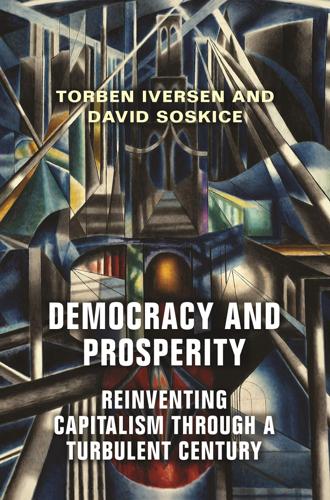
Democracy and Prosperity: Reinventing Capitalism Through a Turbulent Century
by
Torben Iversen
and
David Soskice
Published 5 Feb 2019
This does not imply support for a particular party, left or right, but instead that electable parties have a reputation for effective management of advanced economies. (iii) Advanced capital is geographically embedded in the advanced nation-state rather than footloose: The third element of our approach rules out “race to the bottom” welfare states and/or imposition of subsistence wages in the advanced sectors, and more generally it also justifies advanced governments making huge investments in education, training, and research, which footloose companies might otherwise carry abroad perhaps with their skilled workforces.
…
Trade therefore also entrenches and facilitates cross-national differences in institutions, and this is reinforced by foreign direct investment. We see more tendencies toward convergence in nontraded, low-wage service sectors where flexibilization of labor contracts is a common trend in the past two decades. Still, most evidence confirms that there have not been races to the bottom in redistribution or corporate tax rates. Moreover, in all these cases differential outcomes are determined in our analysis by domestic political coalitions. Thus we conclude that it is to be expected that governments of advanced countries with strong advanced capitalist sectors are the dominant powers in the contemporary world—not the EU, nor multinationals, nor transnational standard-setters, public or private. 6.
…
To be sure, the implications of European integration have been complex, even contradictory. For some it has been seen as a way of introducing the chill winds of competition and intensifying the pressure to deregulate and eliminate the excesses of the welfare state, while for others it has been seen as a way of halting the race to the bottom. What is important here is that integration supported labor market decentralization. By eliminating capital controls and making realignments more difficult, the EMS solidified the exchange-rate commitment and the credibility of the non-accommodating monetary policies needed to restrain wage demands in more decentralized labor markets.
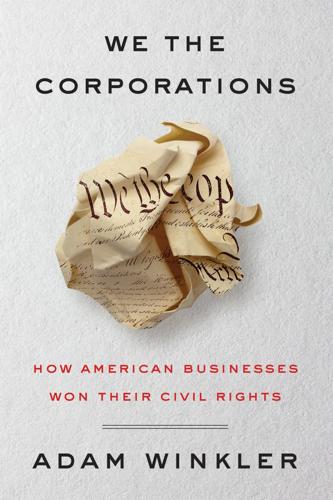
We the Corporations: How American Businesses Won Their Civil Rights
by
Adam Winkler
Published 27 Feb 2018
Bostwick noted that “so many trusts and big corporations were paying tribute to the State of New Jersey that the authorities had become greatly perplexed as to what should be done with the surplus revenue.”15 STANDARD OIL FORMED AN IMMENSELY SUCCESSFUL TRUST, AND EFFORTS TO BREAK UP THE TRUSTS WOULD LEAD TO THE EXPANSION OF CORPORATE RIGHTS. Decades later, long after the trusts had been defeated, some corporate law scholars would argue that New Jersey’s reforms were the beginning of a “race to the bottom.” States seeking the revenue from incorporation fees continually made corporate law more permissive, which attracted corporate executives freed up by the new rules. Over time, the traditional corporate law doctrines limiting the power of corporate officers were rendered largely meaningless; corporate law became mainly a template that private parties could use to organize their affairs.
…
Even though the boards of the major insurance companies were a “Who’s Who” of New York financial, business, and political elites, the directors acted powerless. “In fine,” the Nation observed, “directors do not direct.”27 Had the policyholders somehow overcome their collective action problem, they faced a series of other hurdles created by the recent corporate law reforms. The “race to the bottom” that began when New Jersey loosened its laws to lure reincorporation by large corporations, like Standard Oil and American Tobacco, translated into increasingly lax rules of corporate governance. Older rules that held managers liable for negligent decision-making were replaced by the “business judgment rule,” which effectively immunized management from liability for bad decisions so long as those decisions were made in good faith to serve the business.
…
Prior to becoming the chief justice of Delaware, Strine served for sixteen years on Delaware’s Court of Chancery, the nation’s leading court for corporate law. Delaware, with over 60 percent of Fortune 500 companies and more than 900,000 businesses incorporated in the state, had won the so-called “race to the bottom” begun at the end of the nineteenth century when New Jersey loosened its laws to attract Rockefeller’s Standard Oil and other trusts. Although New Jersey eventually strengthened its corporate code, Delaware followed the Garden State’s earlier example and continually made its corporate law rules more permissive and friendly to management, becoming the leading state of choice for America’s corporations.
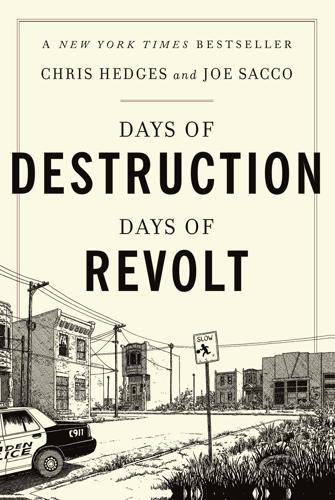
Days of Destruction, Days of Revolt
by
Chris Hedges
and
Joe Sacco
Published 7 Apr 2014
Is 25 minutes after two. There is a few of us alive yet. Jake and Elbert. Oh God for one more breath. Ellen remember me as long as you live. Goodbye darling.” 4 DAYS OF SLAVERY Immokalee, Florida In America today we are seeing a race to the bottom, the middle class is collapsing, poverty is increasing. What I saw in Immokalee is the bottom in the race to the bottom. —SENATOR BERNIE SANDERS Hoping for work in the La Fiesta parking lot, Immokalee, Florida. RODRIGO ORTIZ, A TWENTY-SIX-YEAR-OLD FARMWORKER—A SHORT man in a tattered baseball cap and soiled black pants that are too long—stands forlornly in the half-light in front of the La Fiesta Supermarket on South 3rd Street in Immokalee, Florida.
…
We are starting to see labor trafficking in the garment industry and in hotels and construction. It devolves. I’m surprised it hasn’t happened in meatpacking, where salaries have also gotten lower and the benefits have gotten worse. I had hoped that agriculture would become more like other industries, but I fear that in our race to the bottom other industries are beginning to resemble agriculture. The advances made by the Coalition of Immokalee Workers on behalf of the tomato workers, however, are among the few bright spots in the nation’s agricultural fields, advances made outside the formal structures of power by the workers themselves.
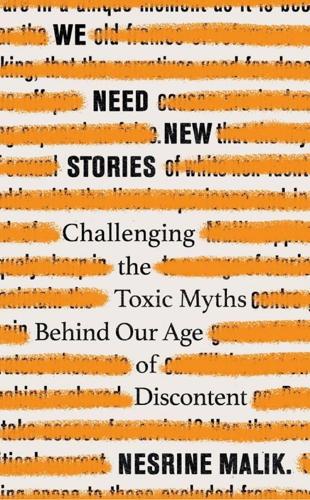
We Need New Stories: Challenging the Toxic Myths Behind Our Age of Discontent
by
Nesrine Malik
Published 4 Sep 2019
It is merely the climate to which he is objecting, rather than specific instances where a far left ideologically orthodox liberal company closed ranks against a white man for saying the truth. This is a microcosm of how, when small changes are introduced in order to encourage those from different backgrounds up the ladder, this is seen as inefficient, a race to the bottom. Believing in meritocracy is also a way of owning one’s success as something attributable to one’s good qualities, rather than accident of birth. Harvard Business Review calls this ‘advantage blindness’ whereby relatively powerful people become unable to see the impact of their behaviour on those less privileged, and also unable to acknowledge the extent of their own privilege, as it is the norm.
…
Free speech, according to this definition, came to mean that no one had any right to object to what anyone ever said. Which not only meant that no one should object to Johnson’s comments but, in turn, that no one should object to their objection. Free speech logic, rather than the pursuit of a lofty Enlightenment value, became a race to the bottom where the alternative to being ‘professionally offended’ is never to be offended at all. This logic today demands silence from those who are defending themselves from abuse or hate speech. It is, according to the drector of the Institute of Race Relations, ‘the privileging of freedom of speech over freedom to life’.
…
But it didn’t stop at Muslims and Jews, it expanded to bullying girls, students of different sexual orientation and ultimately into targeting students who simply did not support Trump. Violence and damage to school property increased and the overwhelming majority of educators ‘saw a negative impact on students’ mood and behavior following the election’. As Trump himself would say, so much winning. Similarly, free speech absolutism creates a polarisation, a race to the bottom where licence is confused with freedom, where free speech is used as a technical excuse to commodify the spectacle of pain. When conspiracy theorist Alex Jones was kicked off digital platforms for suggesting that the Sandy Hook massacre was fabricated (among other theories) he asked, ‘Now, who will stand against tyranny and who will stand for free speech?’

Digital Dead End: Fighting for Social Justice in the Information Age
by
Virginia Eubanks
Published 1 Feb 2011
Uninsured women are nearly 50 percent more likely to die four to seven years following an initial diagnosis of breast cancer than insured women. The minimum wage is a poverty wage. The federal minimum wage was enacted in 1938 to put a firm floor under workers and their families, strengthen the economy by increasing consumer purchasing power, create new jobs, foster growth in lagging regions, and prevent a “race to the bottom,” with employers moving to the cheapest possible labor state. In 1938, the minimum wage brought a family of three with one full-time worker above the federal poverty line. [Talk about how the poverty line was calculated based on food cost as the highest cost of a household. Today, a household’s heaviest financial burden is housing.]
…
Is food a family’s biggest expense? If not, what is? Why did they do it? The federal minimum wage was enacted to put a firm floor under workers and their families, strengthen the economy by increasing consumer purchasing power, create new jobs, foster economic growth in lagging regions, and prevent a “race to the bottom,” with employers moving to the cheapest possible labor state. Exercise (20 minutes) Does it add up? Does the minimum wage still make sense? Break the group into six small groups (using money). Give each group one of the family profiles and ask them to calculate whether or not they think the family will make it, given the wages the family is earning and the assistance it is are receiving.
…
With higher wages, workers have more purchasing power, which buoys the economy. Ben Cohen has gone on to found Sweat X, which makes “sweatshop-free clothes for large organizations like universities.” Play Oprah’s tape. (5 minutes) (How does globalism throw a new wrinkle in the whole thing? Connect back to original aim of the 1938 federal wage being to prevent a race to the bottom. How might an international minimum wage be calculated?) Exercise (15 minutes) Calculating self-sufficiency How would you define a self-sufficiency or equity wage? Return to the chart developed earlier showing what the minimum wage doesn’t take into account. What else would we have to take into account for a truly just minimum wage, one based on minimum needs?
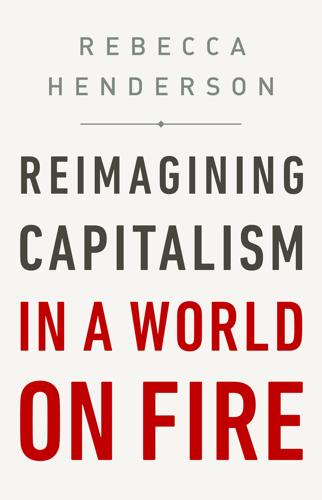
Reimagining Capitalism in a World on Fire
by
Rebecca Henderson
Published 27 Apr 2020
But there are too many problems that we cannot solve without the power of government. Even if a significant fraction of America’s firms adopts a high road labor strategy, it seems very unlikely that their commitment could significantly reduce inequality. Too many firms will have short-term incentives to take the low road and race to the bottom.9 Many firms believe they simply cannot afford the cost of raising wages. Moreover, unilaterally driving up wages is unlikely to be sustainable without moves to address the full range of factors that drive inequality in the first place, from changes in the tax code to the decline in organized labor representation, to the increasing dominance of very large firms and the failure of the US educational system to keep pace with the demands of the modern workplace.
…
But heading off the worst consequences of global warming will require decommissioning many existing fossil fuel plants—and that’s a process that without a change in the rules is very unlikely to be profitable. Building an engaged, well-paid workforce can be a potent source of competitive advantage—but it can be hard to pay people well and to treat them decently when one’s competitors are busy racing to the bottom. Many firms would like to see the quality of local education improve, but very few can build a case for being the only firm willing to invest in making it happen. Many firms would like to see an end to corruption or an increase in the quality of local legal institutions, but most cannot make progress against either goal on their own.
…
My students ask me if this kind of thing doesn’t make me nervous. Do we really want the world’s largest asset owners to exercise this kind of collective power? To me, this is an easy question. These owners are already exercising enormous power—in the service of pushing the firms in their portfolio to race to the bottom. It’s critically important that they make a deliberate decision to trigger a race to the top instead. A central element of a reimagined capitalism is a reimagined financial sector—one that takes its collective responsibilities to the world seriously and is willing to act on them. IN SUMMARY, SELF-REGULATION is a potentially powerful way to mobilize the world’s business community in support of creating collective shared value.
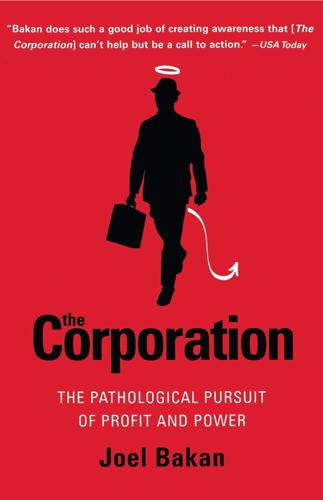
The Corporation: The Pathological Pursuit of Profit and Power
by
Joel Bakan
Published 1 Jan 2003
Quoted in Richard Gwyn, "The True Allegiance of Canadian Corporations," Toronto Star, April 28, 1999. 37. See, for discussions of globalization, Anthony Giddens, Runaway World: How Globalisation Is Running Our Lives (London: Profile Books, 1999); Joseph E. Stiglitz, Globalization and Its Discontents (New York: W. W. Norton and Company, 2002); Alan Tonelson, The Race to the Bottom: Why a Worldwide Worker Surplus and Uncontrolled Free Trade Are Sinking American Living Standards (Boulder, Colo.: Westview Press, 2000); Saskia Sassen, Losing Control: Sovereignty in an Age of Globalization (New York: Columbia University Press, 1996); William K. Tabb, The Amoral Elephant: Globalization and the Struggle for Social Justice in the Twenty-first Century (New York: Monthly Review Press, 2001); Gary Teeple, Globalization and the Decline of Social Reform into the Twenty-first Century (Toronto: Garamond Press, 2000); William Greider, One World, Ready or Not: The Manic Logic of Global Capitalism (New York: Simon & Schuster, 1997). 38.
…
Interview with Robert Monks ("effective"). 11. Interview with Elaine Bernard. 12. Interviews with Ira Jackson, Charles Kernaghan, and Debora Spar. 13. Interview with Robert Monks. Back Matter Page 40 Progressive Corporate Law with Progressive Social Movements." Tulane Law Review 76 (2002), 1227-12 52. Tonelson, Alan. The Race to the Bottom: Why a Worldwide Worker Surplus and Uncontrolled Free Trade Are Sinking American Living Standards. Boulder, Colo.: Westview Press, 2000. Tysbine, Alex. Water Privatization: A Broken Promise. Washington, D.C.: Public Citizen, 2001. Useem, Michael. The Inner Circle: Large Corporations and the Rise of Business Political Activity in the US and UK.

American Secession: The Looming Threat of a National Breakup
by
F. H. Buckley
Published 14 Jan 2020
The regression line slants upward from the corrupt states in the lower right, which people are leaving, to the more honest ones in the upper left, to which people are moving. Honest states are richer than corrupt ones, as we saw in Figure 6.1, and this makes them more desirable places to live. Home rule would result in more competition between states to provide honest governance and the most efficient set of rules. But the competition could also become a “race to the bottom” in some ways. If states compete for migrants through their welfare payouts, they might have an incentive to reduce them in order to attract the employed and healthy, and discourage everyone else. States might then compete to see who can cut welfare the most.18 Home rule would also amount to an opt-out of national equalization programs aimed at ensuring that Americans in the poorest states are properly cared for.
…
Roberts, John Roland, Jeanne-Marie Roman Empire Rousseau, Jean-Jacques: on federal state; and Hume; on small states Rubin, Jennifer Ruiz Evans, Marcus Russia; expansionism of; and Finland; Napoleon in; separatism in Sale, Kirkpatrick same-sex marriage Sanders, Bernie Saudi Arabia Scarborough, Joe Schaaf, Libby Schmitt, Carl Schumer, Chuck Scotland Seddon, James segregation Serbia Sessions, Jeff Seven Years’ War Seward, William Sherman, Roger Singapore Sitwell, Edith slavery; and Civil War; legal protection of Slovakia social media Social Security social trust social welfare; in Finland; in Quebec; “race to the bottom” in Sons of Confederate Veterans Soros, George South Africa South Carolina; and Civil War; federal employees in; General Assembly; and nullification crisis southern culture Southern Poverty Law Center Soviet Union: breakup of; constitutional “rights” in; and Finland; Orwell on Spain Spanish-American War Sparta Spirit of the Laws (Montesquieu) Stanton, Edwin Stars and Bars Steinle, Kate Stendhal (Marie-Henri Beyle) Stephens, Alexander Stiglitz, Joseph Story, Joseph Sudan Suez crisis sugar industry Sunstein, Cass super PACs Syria Taney, Roger B. tariffs; interstate; and lobbyists; and nullification Tea Party movement Teilhard de Chardin, Pierre Texas; Austin; and Civil War bonds Texas v.

The New Snobbery
by
David Skelton
Published 28 Jun 2021
Giving cleaners or distribution workers, for example, the power to negotiate as a sector would ensure decent standards for everyone in that field across a locality, whilst maintaining some flexibility and preventing a race to the bottom, with one company not able to undercut others over pay and conditions. Sectoral bargaining would also enable workers and businesses to agree a minimum floor of rights, including on areas such as sick pay, paid holiday, pensions and basic certainty over hours. The fact that a ‘race to the bottom’ is ruled out means that firms are then more incentivised to differentiate through productive investment in their workforce, innovation and customer retention.

We Are All Fast-Food Workers Now: The Global Uprising Against Poverty Wages
by
Annelise Orleck
Published 27 Feb 2018
If you stand up and fight for change, you can win.”5 CHAPTER 9 PEOPLE POWER MOVEMENTS IN THE TWENTY-FIRST CENTURY AKTER’S ASSERTION THAT “in Bangladesh it is not 2011; it’s 1911” explains a lot. For, it is true not just of Bangladesh but of low-wage workers everywhere. Four decades into the neoliberal revolution, the repeal and erosion of labor protections, shrinking labor unions, precarious employment, stagnant wages, declining buying power, and a global race to the bottom in safety standards have turned the clock back for workers. And it has not been a small step back, but a giant leap. From Arkansas chicken processing plants to Philippine flip-flop factories, low-wage workers are having to again fight for rights already fought for and won one hundred years earlier.
…
China, India, Vietnam, Bangladesh, and Cambodia became engines of a “fast-fashion” revolution, eroding wages and working conditions in countries and regions that once had strong labor movements: the Philippines, Mexico, Central America, and the United States. Garment workers speak of “a global race to the bottom,” says Filipina organizer Asuncion Binos. “We in the Philippines have come a long way down.” By the 2010s, countries with decent wage and labor protections could only compete if they established export zones where strikes were banned and labor regulations suspended. Global lenders offered rewards for creating “special economic zones.”
…
Frank, “A Brief History of Walmart,” Washington Monthly, April 2006; International Directory of Company Histories, vol. 63 (Detroit: St. James Press, 2004); Dina Specter, “Walmart,” Business Insider, November 15, 2012; Ellen Israel Rosen, “The Walmart Effect: The World Trade Organization and the Race to the Bottom,” Chapman Law Review (Spring 2005). 7. “Kalpona Akter at Walmart’s Annual Shareholder Meeting,” June 10, 2013, YouTube video, https://www.youtube.com/watch?v=AcC-yCyF4fo; “Bring Bangladesh Voices to Walmart’s Headquarters,” Indiegogo, 2013, https://www.indiegogo.com/projects/bring-two-bangladeshi-garment-workers-to-the-walmart-shareholder-meeting; Clare O’Connor, “Former Bangladesh Sweatshop Worker to Billionaire Walton Family: Use Your Wal-Mart Fortune to Stop Worker Deaths,” Forbes, June 7, 2013. 8.

Mood Machine: The Rise of Spotify and the Costs of the Perfect Playlist
by
Liz Pelly
Published 7 Jan 2025
It also drew the attention of the major labels, who launched their own chill-vibes imprints, and projects releasing lofi remixes of back catalog. “It’s a ridiculous cottage industry,” said another longtime lofi beats producer. “If you’re trying to succeed in lofi, you’re barking up the wrong tree. It’s a sinking ship…. It’s such a race to the bottom. You can try to hustle as many low-ish quality uninspired beats as you can to as many labels as you can. But it’s really a numbers game at this point because it’s so saturated.” The same producer emphasized how the scene’s extreme fixation on metrics had created seriously unhealthy dynamics among aspiring producers.
…
I think that’s reprehensible.”2 As Sargent and Andasun explained it, writing production music often means creating a great deal of work and never being quite sure what tracks are going to take on a life of their own. Part of making it sustainable is holding on to the rights to generate royalties on the work. “Composers are entitled to their luck,” said Sargent. “And I think trying to buy out composers’ luck is a bit grubby.” “It’s essentially a race to the bottom,” Andasun adds. Unsurprisingly, one of the first venture capital firms to invest in Spotify, called Creandum, also invested early in Epidemic. In 2021, Epidemic raised $450 million from Blackstone Growth and EQT Growth, bringing the company to a $1.4 billion valuation. It is striking, even now, to think these venture capitalists saw so much potential profit in background music subscriptions.
…
The group wrote that the biggest losers would be “working artists, independent labels, and above all music fans looking to expand and diversify their listening.”8 In June of 2021, the United States House Judiciary Committee sent a letter to Daniel Ek, warning that the feature could establish a “race to the bottom” where artists feel required to accept lower royalties in order to be heard. The letter asserted that “at a time when the global pandemic has devastated incomes for musicians and other performers, without a clear path back to pre-pandemic levels, any plan that could ultimately lead to further cut pay for working artists and ultimately potentially less consumer choice raises significant policy issues.”9 The authors of the House Judiciary letter outlined a series of questions directly for Daniel Ek: Would the pilot become permanent?

Dirty Secrets How Tax Havens Destroy the Economy
by
Richard Murphy
Published 14 Sep 2017
At the same time, governments, sensing the threat that hot money has created, have reacted with a rash of investment incentives, not limited to cutting the corporation tax rates they offer. This leaves us in the unfortunate position of having no clear sign yet that anti–tax abuse initiatives, like the OECD’s, are going to deliver when the same governments that promoted them are also major participants in the corporation tax race to the bottom. The benefits that tax havens have supplied to the world’s major corporations seem set to continue for the time being, unless some radical changes in the design of tax systems take place (see Chapter 6). Other regulatory relaxations also exist. For example, a significant part of what is called the captive insurance market is located in tax havens.
…
The tax haven operations are critical to this, and as many tax partners in these firms will confirm, they make good fees from advising clients on which locations best suit their needs at a particular time. Precisely because they monitor this situation so accurately, these firms are also far from independent participants in the process. They all lobby to promote their clients’ needs, and in the process are active participants in the regulatory and economic race to the bottom that tax havens facilitate. As a result, it is almost impossible to see tax havens and these large accountancy firms as independent of one another. Some lawyers have a roughly similar status – though it is unusual to find a major onshore firm of lawyers operating offshore. Instead, most of this business is operated by what is called the ‘magic circle’ of offshore law firms.

WTF?: What's the Future and Why It's Up to Us
by
Tim O'Reilly
Published 9 Oct 2017
As Harvard Business School lecturer and former CEO of Stop & Shop José Alvarez writes, “Zeynep Ton has proven what great leaders know instinctively—an engaged, well-paid workforce that is treated with dignity and respect creates outsized returns for investors. She demonstrates that the race to the bottom in retail employment doesn’t have to be the only game being played.” Economists have long recognized this phenomenon. They call wages higher than the lowest that the market would otherwise offer “efficiency wages.” That is, they represent the wage premium that an employer pays for reduced turnover, higher employee quality, lower training costs, and many other significant benefits. In Chapters 11 and 12, we’ll look at the key drivers of the race to the bottom in wages, and why we need to rewrite the rules of business.
…
Do they choose video over text, even when text would let them do a better job? The need to get attention from search engines and social media is a major factor in the dumbing down of news media and a style of reporting that leads even great publications to a culture of hype, fake controversies, and other techniques to drive traffic. The race to the bottom has in part been a result of the primary shift of news industry revenue from subscription to advertising and from a secure base of local readers to chasing readers via social media. Subscription-based publications have an incentive to serve their readers; advertising-based publications have an incentive to serve their advertisers.
…
When we focus on what needs doing, and what might be possible when humans are augmented by new technology, it is clear that there is plenty of work to go around for both humans and machines. It is only our acceptance of the notion that financial efficiency is the primary fitness function for the economy that locks us into the race to the bottom, in which humans are seen as a cost to be eliminated. But in the debate with Martin and in subsequent conversations with attendees at the event, I found myself thinking and saying things that hadn’t occurred to me before. Stanford’s Rob Reich, the moderator of the discussion, said to me afterward, “I thought going into this that Martin was the radical.
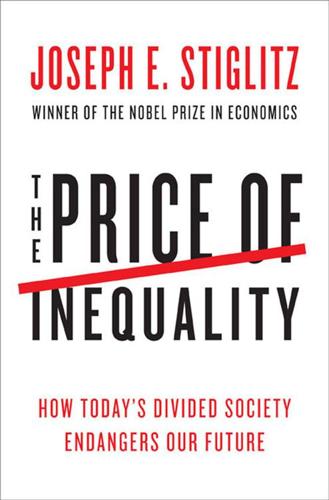
The Price of Inequality: How Today's Divided Society Endangers Our Future
by
Joseph E. Stiglitz
Published 10 Jun 2012
But because of the dominant role we play in the global economy, we do have opportunities to help shape globalization—opportunities not available to others. In reshaping globalization, we have to realize that there has occurred a race to the bottom from which we have all suffered. The United States is in the best position to stop this (if its politics would allow it); it can fight for better worker rights and conditions, better financial regulations, better environmental conditions. But other countries, working together, can also fight against the race to the bottom. Even the advocates of globalization should understand that tempering globalization is in their interests. For if globalization is not managed better than it has been, there is a real risk of a retreat, into protectionism or forms of beggar-thy-neighbor policies.
…
The differences in the return to capital are minuscule compared with those on the return to labor.20 But the financial markets have been driving globalization, and while those who work in financial markets constantly talk about efficiency gains, what they really have in mind is something else—a set of rules that benefits them and increases their advantage over workers. The threat of capital outflow, should workers get too demanding about rights and wages, keeps workers’ wages low.21 Competition across countries for investment takes on many forms—not just lowering wages and weakening worker protections. There is a broader “race to the bottom,” trying to ensure that business regulations are weak and taxes are low. In one arena, finance, this has proven especially costly and especially critical to the growth in inequality. Countries raced to have the least-regulated financial system for fear that financial firms might decamp for other markets.
…
Government programs (like the earned-income tax credit, Medicaid, food stamps, and Social Security) have proven very effective in reducing poverty. More spending on these programs could reduce poverty even more. Tempering globalization: creating a more level playing field and ending the race to the bottom Globalization and technology both contribute to the polarization of our labor market, but they are not abstract market forces that just arrive from on high; rather, they are shaped by our policies. We have explained how globalization—especially our asymmetric globalization—is tilted toward putting labor in a disadvantageous bargaining position vis-à-vis capital.
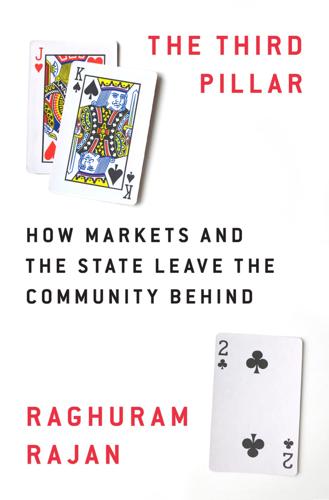
The Third Pillar: How Markets and the State Leave the Community Behind
by
Raghuram Rajan
Published 26 Feb 2019
In contrast, international agreements, such as those on the harmonization of regulations, are rarely arrived at in a democratic spirit, as I have argued. This is why I believe countries should have a more bottom-up deliberative process on what they regulate and what they adhere to, and the ability to pick and choose in most such agreements. RACE TO THE BOTTOM . . . One concern countries have is a race to the bottom. If there is no harmonization of regulations, will countries that adopt the lowest standards benefit their firms, giving them a competitive advantage? This danger is emphasized, often by countries that fear their preferred position demands too much of their own firms.
…
It may be that this was a Machiavellian attempt by supporters of southern European countries to torpedo the entire move by escalating it to international levels. Regardless, the episode highlights the problems with harmonization—regulators cartelize and spread unnecessary and inappropriate regulation across countries, preventing competition between jurisdictions from highlighting the costs of such regulations. Finally, what about the race to the bottom? Regulators agreed to common bank capital requirements in the various Basel Accords because they feared that if given the flexibility, some regulators might impose inordinately low requirements on their banks. Yet this fear is questionable. If higher bank capital reduces risks, why wouldn’t the bank regulators in each country internalize the need to set capital requirements for their domestic banks at adequate levels?
…
R., 287 American Medical Association, 137, 207 Amish, 8 amoral familism, 14 Antitrust Paradox, The (Bork), 202 antitrust regulators, 202 apathy, 113–15, 347 Apple, 178, 182–83, 383 Arab Spring, 330 aristocracy, 54–56, 72, 78, 87 Aristotle, 21, 39, 40, 48 Arthashastra, 31 Augustine, St., 39 authoritarianism, xvii, xviii, 97, 106, 108–9, 112, 139, 160, 244, 253, 257, 274 legitimacy-seeking, 253 automobiles, 152, 179–80, 261 automation, xii, xviii, 3, 18, 84, 179, 180, 143–44, 175, 178, 185–87, 284, 314, 324 Autor, David, 185 Bacon, Francis, 41 Bakunin, Mikhail, 91 Banfield, Edward, 12–14, 227 Bank of England, 68, 69 banks, 15–16, 72, 104, 178–79, 209, 219, 381, 385, 386 Global Financial Crisis and, 237–39, 358 inflation and, 366 regulation of, 358–60 Baosteel Group, 253 Barry, Ellen, 19–20 Basel Accords, 358, 360 Basix, 336, 337 “beggar thy neighbor” policies, 364 “beggar thyself” policies, 364 Bell, Daniel, 257 Beveridge, William, 155–56 Beveridge Report, 155–56, 318, 319, 321 Bible, 119 usury and, 31–32, 34, 48 Billington, Elizabeth, 193 Bismarck, Otto von, 112, 132 Black Death, 40, 41–42 BoBos (bourgeois bohemians), 218 Bohannan, Laura, 7–8 Boldrin, Michele, 382–83 Boleyn, Anne, 54 Book of Rates, 63 borders, 290, 351–54, 371 Bork, Robert, 202 Bowling Alone (Putnam), 334 Bretton Woods system, 160, 169 Brexit, 242 Britain, see England; United Kingdom Brooks, David, 218, 227 Bryan, William Jennings, 100 bubonic plague (Black Death), 40, 41–42 Burnham, Daniel, xxviii Bush, George W., 158 Calvin, John, 47–49, 82 Calvinism, 47–49, 55, 82, 86, 218 Canada, 294, 298, 342, 368 cannons, 42–44, 51 capitalism, 145, 147 Calvinism and, 47–48 in China, 252–55 crony, 99, 106, 108–9, 257–58 Marxist view of, 88–90 Weber’s view of, 47 Capitalism for the People, A (Zingales), 200 caregivers, 319–20 Carlyle, Thomas, 83 cars, 152, 179–80, 261 Carter, Jimmy, 163, 165, 235 Catholic Church, 29, 42, 49–50, 57, 59, 66–67, 72 Councils of, 34 monasteries of, 54, 57, 72 Papal Revolution in, 38, 40 Reformation and, 40–41, 47, 49 reform in attitudes toward business and interest, 47–49 state and, 45–46 usury and, 34–42, 44–46, 49 wealth of, 44–45 Celler-Kefauver Act, 380 CEOs, 193–94, 198–99, 209 Chandragupta Maurya, 31 Charles I, King, 66 Chernow, Ron, 85 Chetty, Raj, xvi Chicago, Ill., xxii, xxiii, 308, 312, 340–41 Pilsen community in, xxii–xxvi, 12, 298, 344, 381 Chicago Tribune, xxiii chickens, 354–55, 357 children, 222–31 meritocracy and, 224–25, 228 China, xxviii, 42, 97, 144, 145, 147, 185, 245, 246, 291, 342, 352 aging population in, 260, 292 anti-corruption campaign in, 261, 265 capitalism in, 252–55 change in, 258–64 Communist Party in, 144, 247–67 construction sector in, 275 crony competition in, 257–58 Deng in, 249–52, 265, 278 Global Financial Crisis and, 258, 259 growth of, 258, 368–69 households in, 255–56, 259–60, 263–64 imports from, 185 income inequality in, 260 India compared with, 247–48, 267, 269, 270, 275–76 infrastructure in, 259 internet and, 266, 350 liberalization in, 248–67, 276 Maoism in, 247, 248–50 medieval, 20–21 meritocracy in, 257, 265 one-child policy in, 260 in Opium Wars, 349–50 path not taken in, 249–52 populist nationalism in, 276–79 social credit system proposed in, 266 state, markets, and democracy in, 264–67 technology and, 261–62, 278 Tiananmen Square protests in, 250–51 United States and, 278 Xiushui Market in Beijing, 255 Church, see Catholic Church citizenship, 290, 295–99, 302 global, 369 civic nationalism, 297–99, 302 Civil Rights movement, 138, 157, 229, 230, 235 Clay, Lucius, 150 climate change, xii, 245, 284, 365, 396–97 Clinton, Hillary, 235 Coleman, James, 225 colleges and universities, 190–91, 220–21, 308–9, 340 credentials and, 233–34, 317 communications technology: community and, 330–35 see also Information and Communications Technology (ICT) revolution; internet communism, xvii, 91, 97, 145–47 in China, 144, 247–67 in France, 168 community(ies), xiii, xxvii, 1–22, 25, 243, 283, 285–87, 297, 303–4, 325, 392, 393, 394 alternatives and, 15–17 assets of, 339–41 in the balance, 107–40 benefits of, 327–29 common themes in revival of, 338 communications technology and, 330–35 competition between, 306–7, 329 conflict resolution in, 9–10 crime and drug abuse in, 343–44 dealing with failure in, 347–48 definition of, xiv downsides of, 329 dysfunctional, xiii, xix, 12–15, 173, 227, 325, 378 economic segregation in, 307–9 economic value of, 11 Elberfeld system in, 129–31, 320 engagement in, 344–45 feudal, see feudalism, feudal communities financing revival in, 346–47 Galena, 337–38, 339, 344 ICT revolution and, xviii–xx, 176, 184–88 importance of, xiv–xviii and importance of location, 219–21 and incentive to change, 18–19 Indore, 335–37, 339, 344 infrastructure and, 309–11 insular, costs of, 19–21 leadership in, 339, 344–45 local government, xiv, xv, xvi, 11–12, 286, 305, 311–13 localizing powers and public services in, 306–13 and loss of faith in markets, 115–19 market adjustments and, 388–91 outside choice and, 15, 18, 19 people as assets in, 342–43 physically proximate, 1–4, 327–30, 335–45, 395 Pilsen, xxii–xxvi, 12, 298, 344, 381 as political training ground, xvii positive roles of, 4–10 regulations and, 285, 304, 306–7, 341, 357 reinvigorating, xx–xxi, 327–48, 352, 395 relief efforts from, 131–33 safety net and, 127–38, 318–25 schools and, 119–25, 225–28, 232–34, 313–18 separation of markets and state from, xiv–xv social relationships in, 7–8 sorting and, see residential sorting state and, 303–25, 345–46 tax incentives and, 345 technology and, 119, 335, 344–45 trade and, xviii–xx, 335, 352 training and socializing of young in, 5–7 transactions in, 3, 8–9, 10–11 value of, 10–12 values in, and tolerance for markets, 390–92 varieties of, 2, 329–35 village, 4 virtual, 327, 329, 330 compass, 41–42, 43 competition, xxii, 52, 64, 71, 84–87, 89, 91, 105, 106, 108–10, 139, 145, 176, 207–8, 283, 374, 392, 393 between communities, 306–7, 329 curbs on, 138 enhancing, 379–86 European Union and, 208–9 monopolies and, see monopolies non-compete agreements, 205, 206, 387 patent protection and, 383 preservation of, in U.S., 98–105 property rights and, 286 regulation and, 165, 387–88 scaring away, 203–6 computers, 117, 175, 185, 186, 314 see also Information and Communications Technology revolution; internet Confessions (Augustine), 39 conflict resolution, 9–10 consensus politics, 153 construction, 275 Constitution, U.S., 71 constitutional patriotism, 298 constitutions, 285 Consumer Price Index (CPI), 189 copyhold tenancy, 36 copyright laws, 204–6 corporations, 173, 176, 194, 195, 206, 355–56, 373–74 CEOs of, 193–94, 198–99, 209 and change in attitudes toward profit and incomes, 195–201 European, 209 lobbying by, 378, 389 monopolies by, see monopolies new business creation, 201–7, 380–81 profit maximization and value maximization in, 374–79 social responsibility of, 378–79 corruption, 98–100, 109, 114, 138 in China, 261, 265 in India, 272 Cowen, Tyler, 161 Crecy, battle of, 42 crime, 343–44 Cristo Rey Catholic School, xxiv Cromwell, Oliver, 66 cronyism, 99, 106, 108–9, 113–15, 139, 176, 244, 274, 184, 352, 392 in China, 257–58 in India, 268, 269 data, as market power, 384–86 David, Paul, 161 debt contract, 29–31 see also loans de la Croix, David, 20 democracy(ies), xxvii, 79, 91, 97, 98, 118, 143, 160, 172, 218, 244, 319, 352, 357, 371, 380, 396 crony, 113–15 illiberal, 113 in India, 268–70, 272–74 markets and, 106, 110 public hearings and, 389–90 Democrats, 235–36, 240 Deng Xiaoping, 249–52, 265, 278 Depression, Great, see Great Depression Depression of 1893, 133, 134 developing countries, 245 Dewey, John, 124–25, 227 Dickens, Charles, 129 diversity, 128, 134, 148, 177, 284, 287, 289, 302, 357 benefits of, 290–95 costs of, 293–95 see also immigration, immigrants divorce, 235 Dodd–Frank Wall Street Reform and Consumer Protection Act, 204 Doepke, Matthias, 20 Douthat, Ross, 235 Dream Hoarders (Reeves), 224 drugs, drug companies, 183, 184, 204, 354, 362–63, 384 East India Company, 68, 69 Economist, 202 Edison, Thomas, 117 education and schools, xx, 6, 72, 83, 140, 158, 162, 221, 228–29, 283, 286, 290, 305, 308–9, 343 colleges and universities, see colleges and universities community and, 119–25, 225–28, 232–34, 313–18 credentials and, 233–34, 317, 393 decentralization in, 316 decline in school quality, 232–34 in France, 125–27, 317 GI Bill and, 156, 157 new tools and methods in, 314–15 paying for, 317–18 segregation and, 229–30 teachers, 102–3 technological progress and, 122–23 in U.S., 119–25, 127, 190–91, 233–34, 317 worker capabilities and, 313–18 Einstein, Albert, 384 Einsweiler, Frank, 337, 339 Elberfeld system, 129–31, 320 Ellikson, Robert, 9–10 emerging markets, 245, 271 see also China; India Engels, Frederick, 88, 90 Engerman, Stanley, 72, 96 England, 52, 59–60, 64–65, 67, 73, 132–33 agricultural laborer revolt in, 94–95 Chartist movement in, 95 Civil War in, 66, 70 Declaration of Rights in, 67–68, 71 emergence as constitutionally limited state, 52–74, 83 Glorious Revolution in, 67–71 Industrial Revolution in, see Industrial Revolution Parliament in, 57, 60–62, 65–70, 74, 77, 84, 105 Poor Law in, 19, 84 Stuarts in, 52, 58, 65–67, 73, 108 Tudors in, 51–54, 73 voting rights in, 92, 94–95 William and Mary in, 67 environment, 365, 371–72, 396 climate change, xii, 245, 284, 365, 396–97 Erhard, Ludwig, 154 Essay on the Principles of Population, An (Malthus), 83 ethnicity and race, xxi–xxii, 298, 397 residential sorting and, 229–31 see also African Americans; diversity; immigration, immigrants; minorities ethnic nationalism, 215–16 populist, 216–17; see also populist nationalism Europe, 52, 59, 74, 160, 167–68, 236, 368, 370 feudalism in, see feudalism, feudal communities immigration in, 144, 159, 167, 210, 241–43 inequalities in, 177 populist nationalism in, 241–43 regulators in, 359 safety nets in, 156 after World War II, 148–54 European Coal and Steel Community, 150 European Economic Community (EEC), 150 European Payment Services Directive, 385 European Payments Union, 150 European Union (EU), 168–73, 208–10, 310, 369, 370 Brexit and, 242 competition and, 208–9 creation of, 168 currency integration in, 169, 237 immigration crisis and, 242 loss of sovereignty in, 171–72 poultry farms in, 355, 356 Stability and Growth Pact in, 169, 170 factories, 18, 78, 88–89, 104, 185 fairness, 115–16 Fallows, Deborah, 344 Fallows, James, 344 families, 231, 235 familism, amoral, 14 Farmers’ Alliance, 23 fascism, xvii, 97, 138, 145, 153 Fault Lines (Rajan), xxvi Federal Reserve, 104, 163, 366 feudalism, feudal communities, xxvii, 19, 25, 35–36, 42, 51–52, 55, 64, 73, 74, 83, 84, 91, 92 and Church’s attack on usury, 34–40 commercial revolution and, 36–39 technology and, 41–42 financial crises: technological change and, 118, 119 of 2007–2008, see Global Financial Crisis of 2007–2008 in U.S., 87–88, 118 Food and Drug Administration, 387 Forastie, Jean, 153 Forbes 400, 192 Ford, Gerald, 235 Ford, Henry, 179–80 France, 59, 145, 168, 246, 298 in European Union, 169, 170 income in, 191, 192 in postwar period, 150, 152–54 Revolution in, 74, 94, 125–26 schooling in, 125–27, 317 free-rider problem, 17 Friedman, Milton, 139–40, 164, 195–201, 375, 377 Friedman, Rose, 139–40 Furstenberg, Carl, 209 G7 nations, 368 Galena, Ill., 337–38, 339, 344 gaming, 334 Gandhi, Indira, 269, 271 Gandhi, Mohandas K., 281, 298 Gao, Xiaohui, 201 Gaud, Malinil, 336, 339 GDP, 163, 164 General Agreement on Tariffs and Trade (GATT), 146, 150, 353 gentry, 54–58, 64–66, 71, 72 Gentzkow, Matt, 332–33 Germany, 73, 74, 162, 236, 238, 241 Elberfeld system of assistance in, 129–31, 320 in European Union, 169–71 income in, 191, 192 migrants and foreign workers in, 159, 242 Nazi, 112, 157, 380 in postwar period, 150, 153, 154 social insurance in, 132, 156 state and industry linked in, 111–12 Giersch, Herbert, 167 Giving Pledge, 396 Glaeser, Edward, 98, 137 Glass-Steagall Act, 104 Global Financial Crisis of 2007–2008, xiii, xxvi, xxviii, 88, 144, 199, 204, 213, 236–43, 353–54, 358, 370, 393 China and, 258, 259 global governance, 245–46, 367–70 globalization, 371–72 gold, 100, 101 Goldin, Claudia, 98 Goldstein, Amy, 186 Google, 201, 203, 350, 386 Gorbachev, Mikhail, 251 Gordon, Robert, 161 government, governance, xv, 107, 139, 394 centralization of, 51 deficits, 162–64, 324 federal, xiii–xiv, xvi; see also state global, 245–46, 367–70 local, xiv, xv, xvi, 11–12, 286, 305, 311–13; see also community promises made by, 145–73, 324–25 promotion of views in, 107 Grant, Ulysses S., 98, 337 Great Britain, see England; United Kingdom Great Depression, xxvii, 88, 119, 134–38, 139, 145–47, 151, 157, 210, 237, 364 safety nets in the U.S. before, 133–34 Great Recession, xiii, 238, 334 Great Society, 158 Greece, 145, 170, 237, 238, 359 Gregory VII, Pope, 38, 54 guilds, 58–62, 64, 81 gunpowder, 41–42 Gutenberg, Johannes, 46 Habermas, Jurgen, 298 Hampton, Keith, 331 handloom weavers, 18–19, 116, 188 Hanson, Gordon, 185 Harrington, James, 58 Hart, Oliver, 11 Harvard University, 98, 137, 197, 233, 242, 293, 362, 364, 371, 389 Hayek, Friedrich, 91, 164 health care, 156, 162–63, 318–19, 324 Affordable Care Act (Obamacare), 144, 214, 239–41 drugs, 183, 184, 204, 354, 362–63 training and wages in, 388 in U.K., 156 in U.S., 158, 203 Heckman, James, 6, 223, 225, 226 Hendren, Nathaniel, xvi Henry VII, King, 53–54 Henry VIII, King, 54, 57 Hicks, John, 99 Hillbilly Elegy (Vance), 300–301 Hochschild, Arlie Russell, 239–40 Holland, 65 housing, 237, 307–9 Hsieh, Chang-Tai, 220, 253, 258 Huang, Yasheng, 251 Hume, David, 63 Hurst, Erik, 333–34 Icahn, Carl, 197 ICT, see Information and Communications Technology revolution Idea of India, The (Khilnani), 298 Ignatieff, Michael, 299 immigration, immigrants, xvi, xviii, 121, 134, 137, 147, 148, 159–60, 173, 218, 219, 245, 284, 286, 289, 297, 302, 348 benefits of, 290–95 distressed communities and, 342 in Europe, 144, 159, 167, 210, 241–43 Harvard study on, 242, 293 Japan and, 292–93 Muslim, 241, 242 population aging and, 260, 284, 286, 292–93, 396 residential sorting and, 229–31 talent and, 290–91 in U.S., 137, 159–60, 292 inclusive civic nationalism, 297–99, 302 inclusive localism, xxii, 22, 285–87, 289–302, 327, 351, 394 income and wages, 90, 127, 152, 213, 388, 395, 396 dispersion across US cities, 220 of doctors, 388 Earned Income Tax Credit and, 345–46 economic segregation and, 307–9 effects of technology and trade on, 188–94 median wage, 189–91 occupational licensing and, 207 top one percent, 102, 191–94 universal basic income, 322–23 India, xxvi, xxviii, 19–20, 31, 113–15, 139, 144, 245, 246, 267–74, 287, 298, 317, 350, 391 affirmative action in, 300–302 bribery in, 312 China compared with, 247–48, 267, 269, 270, 275–76 corruption in, 272 cronyism in, 268, 269 decentralization in, 270, 272 democracy in, 268–70, 272–74 economic growth of villages in, 275 Finance Ministry in, 274 Indore, 335–37, 339, 344 land acquisition for public projects in, 275–76 liberalization in, 269–71, 273, 276 populism in, 272, 276–78 Rashtriya Swayamsevak Sangh in, xix, 277 socialism in, 267–69, 391 state, markets, and democracy in, 272–74 individualism, 194–96, 201, 284 Indore, 335–37, 339, 344 industrialization, 75, 88, 127, 275 Industrial Revolution(s), 16, 18, 26, 70, 74, 78, 84, 87, 91, 230 First, 116–17 Fourth, 117 handloom weavers and, 18–19, 116, 188 Second, 117–19, 122, 146, 147, 152, 153, 160–61 Third, 117 in U.S., 121 see also Information and Communications Technology (ICT) revolution inflation, 56–57, 163, 164, 366 Information and Communications Technology (ICT) revolution, xii–xiii, xxi, xxviii, 117, 148, 161, 162, 175–211, 213, 313, 321–22, 338, 340, 382, 393, 394 automation in, xii, xviii, 3, 143–44, 175, 178, 185–87, 314 communities and, xviii–xx, 176, 184–88 decentralization and, 312–13 interconnected world and, 350–51 jobs and, 143–44, 173, 175, 177–88, 395 trade and, 143–44, 173, 181–88 inheritance, 37, 45, 105 Inquiry into the Nature and Causes of the Wealth of Nations, An (Smith), 80 intellectual property, 73, 183, 278, 351, 362–63, 382–84 patents, 204–6, 362, 382–84 International Monetary Fund (IMF), xxvi, 146, 151, 270, 367, 368–69 international responsibilities, 363–67, 372, 397 internet, 117, 310 China and, 266, 350 community and, 330–35 political views and, 332–33 Ireland, 237, 238, 353–54 Italy, 145, 162, 303–4, 359 in European Union, 169 Montegrano, 12–14, 113, 227 in postwar period, 149, 152 Jackson, Andrew, 93 James I, King, 66–67 Jams II, King, 70 Janesville, Wisc., 341 Janesville (Goldstein), 186 Japan, 157, 160, 302, 368, 380 aging population in, 292–93 currency in, 366 immigration and, 292–93 income in, 191 in postwar period, 148, 153 protectionism in, 354 Jeffers, Jessica, 205 Jefferson, Thomas, 58 Jensen, Michael, 196 Jiang Zemin, 251 jobs, xii, xviii, 163, 164, 224, 343, 389, 395 African Americans and, 230–31 credentials and, 233–34, 317, 393 ICT revolution and, 143–44, 173, 175, 177–88, 395 and lump of labor fallacy, 180 mercantilism and, 62–63 occupational licensing and, 206–7, 387–88, 393 Second Industrial Revolution and, 122 see also income and wages; workers Johnson, Lyndon, 157–58, 229 Juncker, Jean-Claude, 172 Jungle, The (Sinclair), 104 Justice, US Department of, 202 Kahn, Alfred, 165 Kalanick, Travis, 196 Kaplan, Steve, 192 Katz, Bruce, 303 Kautilya, 31 Keynes, John Maynard, 154, 163, 395 Khan, Khizr, xxi Khilnani, Sunil, 298 Khodorkovsky, Mikhail, 111 Kim, Han, 220 King, Martin Luther, Jr., 157, 158, 397 Kleiner, Morris, 207 knowledge, diffusion of, 204–6 Krueger, Alan, 207 Kyoto Protocol, 365 laissez-faire, 77–78, 81, 83 landowners, 37, 58, 72, 74 gentry, 54–58, 64–66, 71, 72 Lasch, Christopher, 227 Latin America, 72, 93, 96 Lee Kuan Yew, 247 LEGO, 391 lending, see loans Le Pen, Marine, 236 Lerner, Josh, 362 Levine, David, 382–83 liberal democracy, 74–75 liberalism, 83, 160 liberalization, 206 in China, 248–67, 276 in India, 269–71, 273, 276 private sector’s reaction to, 194–201, 207–8 liberal market democracies, xiii, xx, xxvii libertarianism, 115 limited-access societies, 97–98 Lindsey, Brink, 205 loans, 44–45, 48 contract in, 29–31 see also usury lobbying, 378, 389 localism, xxi, xxviii, 285, 286, 303 inclusive, xxii, 22, 285–87, 289–302, 327, 351, 394 long-term benefits of, 303 location, importance of, 219–21 Long, Huey, 136 looms, 18–19, 116, 188 Louis XIV, King, 60, 65, 66 Luce, Edward, 227 Luther, Martin, 46 Madison, James, 97, 218 magnates, decline of, 53–54 Mahajan, Vijay, 337 Malthus, Thomas Robert, 83 Mann, Horace, 121 manufacturing, 152, 184–85, 206 Mao Zedong, 247–50 markets, xiii, xv, xvii–xviii, xx, xxii, xxvii–xxviii, 25–27, 50, 56, 77–106, 145, 154, 172, 173, 243–44, 283, 184, 285–87, 304, 393, 394 community adjustment to, 388–92 community and state buffers against volatility in, 127–38 community loss of faith in, 115–19 community values and, 390–92 competition in, see competition data in, 384–86 definition of, xiv democracy and, 106, 110 emerging, 245, 271; see also China; India fairness in, 115–16 freeing, 80–81 laissez-faire and, 77–78, 81, 83 liberalization of, see liberalization liberal market democracies, xiii, xx, xxvii perceived legitimacy of players in, 110–12 philosophy for, 81–84 reforming, 373–92 separation from community, xiv–xv state and, 304 transactions in, 3, 4 unbridled, 84–87 see also trade marriage, 231, 235 Marshall Plan, 149–51, 365 marshmallow test, 222–23 Marx, Karl, 49, 78, 87–91 Marxism, 87–91, 112, 115, 249, 287 Maximum Feasible Misunderstanding (Moynihan), 158 McClure’s Magazine, 103 McKinley, William, 106 McLean, Malcolm, 181 meatpacking industry, 104, 107–8 Medicare, 241, 324 mercantilism, 62–65, 80 Merchant of Venice, The (Shakespeare), 30 meritocracy, 390, 393 children and, 224–25, 228 in China, 257, 265 Merkel, Angela, 241 military technologies, 42–44, 51, 53 Mill, Harriet, 81 Mill, John Stuart, 81–83 minorities, 218, 219, 289, 296–97 affirmative action and, 300–302 see also African Americans; immigration, immigrants Mischel, Walter, 223 misery index, 163 Mitterand, François, 168 Mokyr, Joel, 20, 21 monarchy, 51–53, 56–59, 61–63, 65, 73 monasteries, 54, 57, 72 moneylending, see loans Monnet, Jean, 154 monopolies, 58–62, 64, 80, 81, 87, 91, 97, 99, 105, 106, 108, 109, 112, 201–7, 283, 379–82 antitrust laws and, 101, 103–4, 381–82 Montegrano, 12–14, 113, 227 Moore, Barrington, 73 Moretti, Enrico, 220 Morgan, John Pierpont, 99, 104 Morse, Adair, 220 Moynihan, Daniel Patrick, 158, 340 multilateral institutions, 367–70 Murphy, Kevin, 196 Murray, Charles, 227 muskets, 42–43 Muslims, 21, 35, 36, 241, 242, 272, 277 Napoleon I, 126 nationalism, xvii, 64, 184, 330, 397 civic, 297–99, 302 ethnic, 215–17; see also populist nationalism mercantilism and, 63 populist, see populist nationalism Nation at Risk, A, 232–33 nation-states, 26, 42, 50, 51–52, 61–62 Nehru, Jawaharlal, 267, 270, 287, 298 neighborhoods, 297 isolation index and, 333 sorting and, see residential sorting see also community Netville, 331–32 Neumann, Franz, 112 New Deal, 134–35 New Localism, The (Katz and Nowak), 303 news consumption, and diversity of opinions, 332–33 New York Times, 19, 98, 218, 387 Nixon, Richard, 98, 108 North, Douglass, 70, 97 Nowak, Jeremy, 303 Obama, Barack, xvii, 158, 235, 240 India visited by, 273 Obama, Michelle, 240 Obamacare, 144, 214, 239–41 Oceana (Harrington), 58 oil industry, 84–86, 99, 103, 107, 111 Oliver, Douglas, 9 one percent, 102, 191–94 On Liberty (Mill), 81–83 open-access societies, 98 Opium Wars, 349–50 Organization for Economic Co-operation and Development (OECD), 189–90 Our Towns: A 100,000-Mile Journey into the Heart of America (Fallows and Fallows), 344 Owen, Robert, 88 Owens, Ann, 226 Papal Revolution, 38, 40 parents, 222–31, 343 Paris Agreement, 365 parliaments, 77, 78–79 English, 57, 60–62, 65–70, 74, 77, 84, 105 patents, 204–6, 362, 382–84 patriotism, 298 peasants, 37–38, 73, 74, 78 see also feudalism, feudal communities Peltzman, Sam, 202 Perez, Carlotta, 118 Petersen, Mitchell, 15, 219 pharmaceutical drugs and companies, 183, 184, 204, 354, 362–63, 384 Physiocrats, 77 Piketty, Thomas, 191 Pilsen community, xxii–xxvi, 12, 298, 344, 381 Pirenne, Henri, 45 plague (Black Death), 40, 41–42 Polanyi, Karl, 84 police officers, 312 politics: conflict over, 234–36 isolation index and, 332–33 left-wing, xiii, xix, xxvii, 214, 217, 394 right-wing, xiii, xix, 214–17, 394 Polybius, 118 population aging, 260, 284, 286, 292–93, 324, 342–43, 348, 396 population diversity, see diversity population growth, 83, 152, 162–63 populism, xiii, xix, xxviii, 63, 136, 137, 211, 213–44, 284 in China, 276–79 and conflict over values and politics, 234–36 in Europe, 241–43 Global Financial Crisis and, 236–43 growing divide and, 218–19 in India, 272, 276–78 left-wing, 214, 217 Obamacare and, 239–41 Populist movement at turn of nineteenth century, 23, 26, 79, 98–101, 102, 105–6, 112, 244, 265 reemergence in the industrial West, 213–44 right-wing, 214–17 types of, 214–18 populist nationalism, xiii, xix–xx, xxi, xxvii, 144, 216–17, 241–44, 246, 276–79, 286, 289, 295–300, 302, 352, 353 in China, 276–79 in Europe, 241–43 in India, 276–78 why it cannot work, 296–97 Populist Revolt, The (Hicks), 99 Portugal, 148, 238 Poterba, James, 140 poultry farms, 354–55, 357 poverty, 396 African Americans and, 157 Elberfeld system of assistance, 129–31, 320 War on, 158, 160, 229 Powell, Enoch, 159 presidential election of 2016, 235, 236, 333, 354 Price, Brendan, 185 Princeton University, 125 printing press, 41–42, 46 private sector, 107–8, 111, 139, 147, 283, 284, 352, 371 liberalization and, 194–201, 207–8 Progressives, 26, 79, 98–99, 102–6, 112, 124, 134, 137, 244, 265 property, 26, 52, 57, 58, 74, 79, 83, 103, 115, 352, 362, 374, 394 competition and, 286 intellectual, see intellectual property land, see landowners taxes on, 121, 123 as theft, 110–11 protectionism, 108, 258–59, 278, 306, 353–56, 364 Protestant Ethic and the Spirit of Capitalism, The (Weber), 47 Protestant Reformation, 40–41, 47, 49 Protestants, 48, 49 public hearings, 389–90 Putnam, Robert, 227, 334 Quakers, 16–17, 230 race, see ethnicity and race race to the bottom, 358–60 railroad industry, 85, 87, 99, 101 Ramanathan, Swati, 312 Ramcharan, Rodney, 72 ranchers, 9–10, 11 Rand, Ayn, 80, 391 R&D, 183–84 Rashtriya Swayamsevak Sangh (RSS), xix, 277 Rauh, Joshua, 192 Rawls, John, 115 Raymundo, Raul, xxiii, xxvi Reagan, Ronald, 165, 194, 232 Reeves, Richard, 224 Reformation, 40–41, 47, 49 regulation(s), 103–5, 107–8, 165, 172 antitrust, 202 of banks, 358–60 communities and, 285, 304, 306–7, 341, 357 competition and, 165, 387–88 deregulation, 165–67, 194, 197 harmonization of, 354–63, 365, 371 relief efforts, 131–33, 135 see also safety nets religion, 49, 51, 64 Protestant Reformation, 40–41, 47, 49 Protestants, 48, 49 see also Catholic Church Republicans, 235–36 residential sorting, 144, 177, 222, 227, 314 by income, 307–9 race and immigration and, 229–31 resources, policies on, 365 Resurrection Project, xxiii–xxvi Ritter, Jay, 201 Robinson, James, 94 Rockefeller, John D., 84–91, 98, 103, 104, 108, 200 Rodgers, Daniel, 334 Rodrik, Dani, 364–65, 371 Roman Republic, 58 Romney, Mitt, 235 Roosevelt, Franklin, 134–37, 156 Roosevelt, Theodore, 106 Rosen, Sherwin, 193 Russell, John, 95 Russia, 97, 287, 292, 354, 369 wealthy in, 111 Saez, Emmanuel, 191 safety nets, 139, 173, 290 caregivers and, 319–20 community and, 127–38, 318–25 in Europe, 156 government support in, 322–24 health care, see health care paying for, 324–25 for peasants, 37–38 in U.K., 155–56 in U.S., 133–34, 156, 157–58, 320–21, 324 welfare, 129, 137, 148, 158, 230 Salam, Reihan, 235 Sandel, Michael, 389–90 Sanders, Bernie, 214 Satyanath, Shaker, 112 schools, see education and schools Schumpeter, Joseph, 203, 379 Schwartz, Heather, 225–26 science, 21 “Second Coming, The” (Yeats), 141 Second Federal Bank, xxv SeeClickFix, 311–12 Sen, Amartya, 287 Shakespeare, William, 30 Shapiro, Jesse, 332–33 Share Our Wealth Society plan, 136 Shleifer, Andrei, 197 Sinclair, Upton, 104 Singapore, 247, 291, 318 Singh, Manish, 336 Singh, Manmohan, 270 Siuai people, 9 smartphones, 175, 178, 182–83 Smith, Adam, 17, 64, 77, 80–81, 83, 84, 87, 91, 105, 200 Smoot Hawley Act, 138 socialism, 132, 138, 145–47, 168, 250 in India, 267–69, 391 socializing the young, 5–7 social media, 330, 354, 386 social relationships, 7–8 social safety nets, see safety nets Social Security, 134–38, 187, 241, 324 Sokoloff, Kenneth, 72, 96 sorting, see residential sorting South Sea Company, 68, 69–70 sovereignty, 349–72 and controlling flows, 351–54 and harmonization of regulation, 354–63 Soviet Union, 91, 145–47, 153–54, 250, 251, 267, 287, 367 Spain, 148, 162, 169, 237, 238, 353–54 Spence, Michael, 234 stagflation, 163 Standard Oil, 86, 99, 103, 107 Stanford marshmallow test, 222–23 state, xiii, xv, xvii–xviii, xx–xxi, xxvii–xxviii, 25–27, 50, 139, 140, 172, 283–86, 304, 393 anti-state ideology and, 176 buffers against market volatility, 127–38 Church and, 45–46 community and, 303–25, 345–46 constitutionally limited, 52–74, 83 definition of, xiii–xiv growth of, 145 international responsibilities and, 363–67, 372, 397 laissez-faire and, 77–78, 81, 83 markets and, 304 relief efforts from, 131–33 separation from community, xiv–xv strong but limited, rise of, 51–75 sustainable financing for, 65–71 steel industries, 87, 99, 122, 185, 186, 253, 261, 338, 364, 366 European Coal and Steel Community, 150 student loans, 317–18 suffrage, see voting, suffrage Summers, Larry, 197 Supreme Court, U.S., 103, 384 Sweden, 138 Swift, Taylor, 193 Talleyrand, Charles Maurice de, 66 Tarbell, Ida, 103, 200 tariffs, 61, 63–64, 80–81, 100, 108, 138, 150–51, 164, 181–83, 217, 242, 258–59, 271, 277, 352–53, 356, 363, 364, 366, 371 General Agreement on Tariffs and Trade, 146, 150, 353 Tawney, Richard, 34–35, 46 taxes, 59, 61–62, 102–5, 156–57, 163–64, 206, 308–9, 364 for education, 121, 123 property, 121, 123 tax holidays, 341 tax incentives, 345 on towns, 59–60 universal basic income and, 322–23 tax preparation, 179, 180 Tea Party movement, 239–41, 242, 333 technology, xii, xxviii, 117, 160–62, 175–76, 283, 284, 286, 287 automation in, 18, 84, 179, 180, 284 China and, 261–62, 278 community and, 119, 335, 344–45 disruptive change from, xii–xiii, xix education and, 122–23 feudal community and, 41–42 financial crises and, 118 incomes and, 188–94 job losses from, xii, xviii public anxiety about, 116–18 winner-take-most effects of, 191–94 see also Industrial Revolution; Information and Communications Technology revolution Teles, Steven, 205 Thatcher, Margaret, 165–66, 194 three pillars, xiii, 25–27, 393, 394 balance between, xvii–xviii, 175, 394 see also community; markets; state Tiananmen Square protests, 250–51 Tiv people, 7–8 Tönnies, Ferdinand, 3–4 totalitarian regimes, 97 trade, 62–64, 80–81, 143, 146, 149–51, 154, 160, 164–65, 172, 181, 245, 271, 283, 307, 352–53, 363, 371 “beggar thy neighbor” policies and, 364 communications costs and, 181, 182 communities and, xviii–xx, 335, 352 European, with Muslim lands, 36 ICT revolution and, 143–44, 173, 181–88 incomes and, 188–94 protectionism and, 108, 258–59, 278, 306, 353–56, 364 tariffs and, see tariffs transportation costs and, 181–82 Trade Related Intellectual Property Rights Agreement (TRIPS), 362 training and socializing the young, 5–7 transactions: in communities, 3, 8–9, 10–11 market, 3, 4 Trotsky, Leon, 90 Trump, Donald, 235 Truly Disadvantaged, The (Wilson), 230 Turkey, xix, 97, 167, 190, 245 Uber, 196 Unified Payments Interface (UPI), 386 unions, 165, 198, 206, 360, 361 United Kingdom, 173 Companies Act in, 377 health care in, 156 income in, 191, 192 in Opium Wars, 349–50 safety net in, 155–56 United Nations, 367 United States, 143, 145, 149, 246, 298 African Americans in, see African Americans agriculture in, 184 China and, 278 Civil War in, 74, 93, 133–34 competitive market in, 98–105 Constitution of, 71 diversity in population of, 134 financial crises in, 87–88, 118 GI Bill in, 156, 157 Gilded Age in, 87 gold standard in, 100 government debt in, 324 growth of, 148, 162 health care in, 158, 203 hegemony of, 148, 367–69 immigration and, 137, 159–60, 292 Industrial Revolution in, 121 manufacturing in, 184–85 Marshall Plan of, 149–51, 365 in postwar period, 148 presidential election of 2016, 235, 236, 333, 354 safety net in, 133–34, 157–58, 320–21, 324 schools in, 119–25, 127, 190–91, 233–34, 317 South of, 72, 74 Supreme Court, 103, 384 voting rights in, 92–93, 96 Western settlers in, 72, 99–100 universal basic income (UBI), 322–23 universities, see colleges and universities University of Chicago, xxiii, xxvi, 87, 124–25, 164, 290–91 University of Rochester, 223 usury: Catholic Church and, 34–42, 44–46, 49 favorable public attitudes toward, 44 intellectual support for ban on, 39–40 prohibition on, 31–32 rationale for proscribing, 32–34 values: community, and tolerance for markets, 390–92 conflict over, 234–36 Virginia, 58 Voigtländer, Nico, 112 Volcker, Paul, 163 Voth, Hans-Joachim, 112 voting and suffrage, xxvii, 26, 79, 105 extension of franchise, 91–98 wages, see income and wages Wallis, John, 97 Washington Post, 108 wealth, 111, 395–96 Wealth of Nations, The (Smith), 80 weavers, 18–19, 116, 188 Weber, Max, 47, 38 Weingast, Barry, 70, 97–98 welfare, 129, 137, 148, 158, 230 Wellman, Andrew, 331 Whigs, 67, 95 William of Orange, 67 Wilson, William Junius, 230, 231 Wilson, Woodrow, 125 Wolf, Martin, 355 workers, 75, 78, 79, 87, 89, 97, 127–28 education and capabilities of, 313–18 insurance plans for, 132 rights of, 360–61 strikes by, 102 unions for, 165, 198, 206, 360, 361 see also income and wages; jobs working at a distance, 219, 220 World Bank, 151, 253–54 World Trade Organization (WTO), 353, 356, 362 World Values Survey, 297 World War I, 103, 112, 124 World War II, xxvii, 138, 139, 140, 143, 145, 146, 155–57, 210, 243, 367 Marshall Plan and, 149–51, 365 postwar period, 148–54 Wulf, Julie, 193 Xi Jinping, 261, 278 Xiushui Market, 255 Yeats, W.

What's Next?: Unconventional Wisdom on the Future of the World Economy
by
David Hale
and
Lyric Hughes Hale
Published 23 May 2011
Andrew Sheng offers the case for a Tobin tax to finance global public goods. He reviews the origin of the idea in the 1970s and the recent proposal of it by Lord Adair Turner of the Financial Services Authority in London. Sheng says that the world is caught in a collective action trap that encourages a race to the bottom for financial regulation and taxation. He believes that a Tobin tax offers many advantages, including money to finance global public goods, increased data availability on financial transactions, and a tax on bank profits to reduce the bonuses that encourage speculative activity. Sheng estimates that the global value of foreign exchange turnover is $800 trillion and that the value of stock market trading is $101 trillion.
…
It is useful to remember that the present fiscal trend of accelerating expenditure and decreasing tax revenues in order to restore excess consumption, which in turn is funded by excess leverage despite limited global resources, is just a race to another crisis. The world is caught in a collective action trap. The gaming nature of nation-state and private-sector behavior is such that there is a tendency to race to the bottom. No country is able to tighten monetary policy alone for fear of inviting hot money that negates the policy. Additionally, no country is able to tighten financial regulation for fear of business migrating to other financial centers. Furthermore, no country is able to raise taxation for fear of massive tax arbitrage.
…
Global public goods are currently funded by equity (based on the Bretton Woods system that allocates weighted voting quotas to participating institutions) or by direct national grants. These mechanisms are not sustainable. We need a global tax to fund global public goods. But for a turnover tax to work, it is vital that all of the G-20 countries agree to impose a single, uniform rate of, say, 0.005 percent to avoid a race to the bottom from the onset. This would put into place the module of fiscal standardization and tax mechanism that improves conditions for future coordination in monetary policy and financial regulation. The tax can be collected at the national level based on buyer-pay. The tax collected could be credited to a global fund, with a formula that would allow national governments to use part of the proceeds to resolve domestic crisis problems.

The Secret Barrister: Stories of the Law and How It's Broken
by
Secret Barrister
Published 1 Jul 2018
Alternatively, they might instruct an ‘independent’ barrister whose independent commitment to professional ethics is not a bar to him slipping Keres a tasty percentage of his brief fee in return for his instructions. Advocates’ fees are paid separately to litigators’ fees and directly to the advocate, to avoid the market distortion and dirty race to the bottom that would ensue if solicitors instructed barristers based not on ability but on how much of the advocacy fee they were willing to shovel the solicitor’s way. And the vast majority of solicitors and barristers observe this strict separation. But every robing room will echo with whispers over that one barrister whose steady influx of high-quality work from a single, Keres-esque firm belies his modest talents, and in less-sober moments at Christmas parties, confessions will slip from mulled lips as to the existence of the informalized, forbidden referral fee lying at the heart of that arrangement.
…
Between 2010 and 2015, the National Offender Management Service (NOMS), which, until 2017 (when it was reimagined as HM Prison and Probation Service), was responsible for prisons in England and Wales, had its budget cut by £900 million.33 In order to make nearly £1 billion of savings, prison staffing levels were reduced by 30 per cent. As of 2016, there were 13,720 fewer staff in the public prison estate looking after 450 more people.34 In a drag race to the bottom, ‘benchmarking’ was introduced, in which publicly run jails were required to peg their costs to the same level as the ‘most efficient’ – read ‘cheapest’ – in the private sector. One of the reasons that private sector prisons were so ‘efficient’ is that for seventeen years they have had higher rates of overcrowding than public sector prisons – shoving more prisoners into tinier spaces.35 A quarter of the prison population is overcrowded, with prisoners doubling up in cells designed for one person,36 in order to secure an arbitrary 20 per cent reduction in the cost of prison places (now at £35,000 per year).37 Around the same time, Chris Grayling MP, Secretary of State for Justice between 2012 and 2015, announced his populist plans to make prisons, already hideous tombs of violence, death and terror, ‘less lax’ and more ‘spartan’, introducing severe restrictions on prisoners’ ‘privileges’ – which famously included an unlawful ban on prisoners being sent books38 – and displaying a bizarrely prurient obsession with stopping inmates having sex.39 It was not enough to deprive people of their liberty; their lives had to be made extra intolerable to satisfy the public’s perceived lust for blood.
…
Their judgments, in the High Court, Court of Appeal and Supreme Court, have immediate, real-life effects, not only to the applicant or appellant in front of them but to the defendants, victims and public in millions of criminal cases in which precedent is applied. Our constitution relies upon the judges to ensure that government acts in accordance with laws passed by Parliament, and to intervene when the state overreaches to infringe our freedoms. A diminution in quality among the judiciary ultimately diminishes us all. The race-to-the-bottom in criminal justice thus stretches all the way to the top. Every component of the system is infiltrated to some degree by negligent, reckless or malicious maladministration. Of itself, this is hardly unique; professionals in every other area of public life could no doubt regale at similar length legitimate complaints of underfunding and managerial or ministerial incompetence.

The Secret Life of Groceries: The Dark Miracle of the American Supermarket
by
Benjamin Lorr
Published 14 Jun 2020
Our current model does a good job at maximizing profits. But to the extent that it works to protect the planet, which it often tries to do very faithfully, it almost always comes out of people.” When I relay this to Errol, he pauses. “That’s not quite how I see it . . . For me the question is, do you want to win a race to the bottom? Or do you want to deliver the highest quality and be the best? Everybody has pressure from the competition. Always will. But it’s how you respond. It can’t just be about cutting things back. Humanity can’t just play defense. We need a good offense too.” We get quiet for a moment and I wonder what that offense would look like.
…
See also specific diseases Disneyland, Jungle Cruise, 52 dispatchers, 85–86 displacement, 254 distribution, 60, 75–112 new products and, 138–39n29 retail ecosystem and, 128 specialty, 129 truck drivers and, 89–94 distribution centers, 75–89, 107–12, 296–97n distributors, 60 Dreyer, Dylan, 151–52 driverless trucks, 270 Dunlap, Annette, 133 E. coli outbreaks, 190, 191, 194 ecology, fuzzy math of, 227 e-commerce, 128–29n25 Economist, 251 Edge, Brian, 251 education, alcohol and, 51–52 efficiency, 267, 269 Amazon and, 266 employees and, 178–81 of grocery stores, 5–6 human resources and, 178–80 labor and, 178–80, 180n37 manufacturing and, 174–78 as race to the bottom, 182n38 at Whole Foods, 160–62, 160n33, 182n38, 266 egg brokers, 45–46 eggs, 45–46 employees, 4–5. See also labor dehumanization of, 180–81, 180n37 efficiency and, 178–81 health insurance and, 183 part-time, 179–80 in retail grocery, 157–84 retention of, 182–83, 182n38 at Trader Joe’s, 67–68, 67n17, 169–70 training of, 157–63, 169, 184, 301n treated as cyborgs, 180n37 at Whole Foods, 157–84, 182n38, 270 endcaps, 136, 138 entrepreneurs buyers and, 130–35, 134–35n28 “trade spend” and, 136–38 environmentalism, 57–58.
…
For instance, one 2006 study of five hundred retail stores found that every $1 increase in payroll resulted in $3.81 of increased margin. However, its persistence in spite of the research is not accidental, and alludes to the LARGER QUESTION of the title heading: Is this quest for efficiency always a race to the bottom? Or are there equilibrium points whereby efficiency—and outcompeting your rival—can coincide with dignity? This is not a moral question even as our general way of life may hinge on the answer. It is a question about optimization and consumer habits and how exactly the shoppers who purchase from WFs make their purchasing decisions; it is also a question in which my generation of MBAs, both incentivized to find quick earning fixes and insulated from the actual work of retail in a way that transforms abstraction into condescension, may not even be interested in considering.
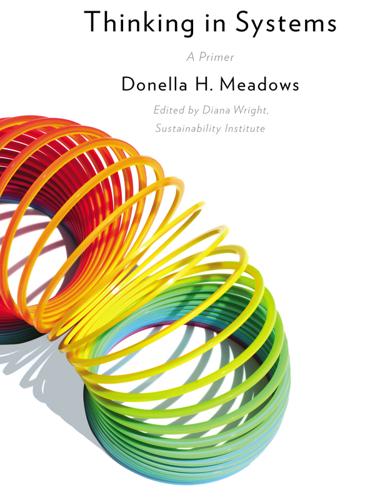
Thinking in Systems: A Primer
by
Meadows. Donella
and
Diana Wright
Published 3 Dec 2008
It is not price information but population information that is needed. It’s important that the missing feedback be restored to the right place and in compelling form. To take another tragedy of the commons example, it’s not enough to inform all the users of an aquifer that the groundwater level is dropping. That could initiate a race to the bottom. It would be more effective to set the cost of water to rise steeply as the pumping rate begins to exceed the recharge rate. Other examples of compelling feedback are not hard to find. Suppose taxpayers got to specify on their return forms what government services their tax payments must be spent on.
…
It is a system with rules designed by corporations, run by corporations, for the benefit of corporations. Its rules exclude almost any feedback from any other sector of society. Most of its meetings are closed even to the press (no information flow, no feedback). It forces nations into reinforcing loops “racing to the bottom,” competing with each other to weaken environmental and social safeguards in order to attract corporate investment. It’s a recipe for unleashing “success to the successful” loops, until they generate enormous accumulations of power and huge centralized planning systems that will destroy themselves. 4.
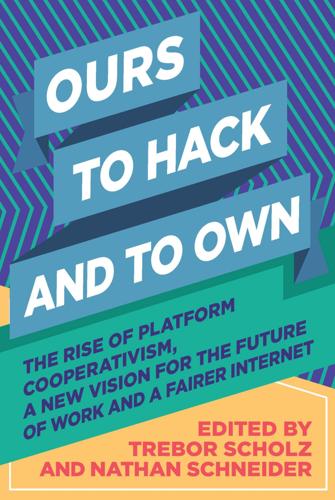
Ours to Hack and to Own: The Rise of Platform Cooperativism, a New Vision for the Future of Work and a Fairer Internet
by
Trebor Scholz
and
Nathan Schneider
Published 14 Aug 2017
Three-fourths of Americans are living paycheck to paycheck, with little to no emergency savings to rely on if they lose their job. Income inequality is now as bad as it was in 1928, just before the Great Depression. Incredibly, the share of wealth held by the bottom 90 percent is no higher today than during our grandparents’ time. It’s as if the New Deal had never existed. RACE TO THE BOTTOM IN THE FREELANCE SOCIETY Now a new and alarming mash-up of Silicon Valley technology and Wall Street greed is thrusting upon us the latest economic trend: the so-called sharing (or gig) economy. Companies like Uber, Instacart, Upwork, and TaskRabbit allegedly are “liberating workers” to become “independent entrepreneurs” and the “CEOs of their own businesses.”
…
The types of jobs on the auction block include website and app designers, software developers, logo and graphic designers, translators, architects, engineers, and more. Workers from India, Thailand, and the developing world compete against developed world workers, undercutting each other’s wages. It’s a race to the bottom. As contractors, these workers don’t receive safety-net benefits because they aren’t “employees” of whoever hires them. They also aren’t paid while they are hustling for their next gig, a never-ending activity. Increasingly, these sorts of online job brokerages comprise a bigger chunk of the overall work force.
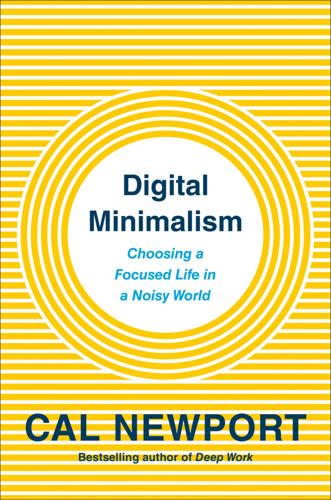
Digital Minimalism: Choosing a Focused Life in a Noisy World
by
Cal Newport
Published 5 Feb 2019
In a 2016 profile in the Atlantic, Harris blamed the lack of changes to the “inertia” of the organization and a lack of clarity about what he was advocating. The primary source of friction, of course, is almost certainly more simple: Minimizing distraction and respecting users’ attention would reduce revenue. Compulsive use sells, which Harris now acknowledges when he claims that the attention economy drives companies like Google into a “race to the bottom of the brain stem.” So Harris quit, started a nonprofit called Time Well Spent with the mission of demanding technology that “serves us, not advertising,” and went public with his warnings about how far technology companies are going to try to “hijack” our minds. In Washington, DC, where I live, it’s well-known that the biggest political scandals are those that confirm a negative that most people already suspected to be true.
…
The tycoons of social media: “Social Media is the New Nicotine | Real Time with Bill Maher (HBO),” YouTube video, 4:54, posted May 12, 2017, https://www.youtube.com/watch?v=KDqoTDM7tio. “This thing is a slot machine”: Tristan Harris, interview with Anderson Cooper, 60 Minutes, https://www.cbsnews.com/video/brain-hacking. “race to the bottom”: Bianca Bosker, “The Binge Breaker,” Atlantic, November 2016, https://www.theatlantic.com/magazine/archive/2016/11/the-binge-breaker/501122. “serves us, not advertising”: This quote comes from an earlier version of the website for Time Well Spent. The organization has since been rebranded as the Center for Humane Technology, and has a new website and new copy: http://humanetech.com.
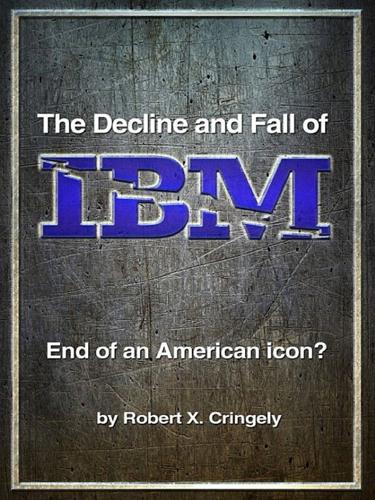
The Decline and Fall of IBM: End of an American Icon?
by
Robert X. Cringely
Published 1 Jun 2014
The Global Services business could be sold to one or more Indian companies while the current federal business could be sold to one of IBM’s U.S. competitors. Meanwhile, IBM will move its business toward hardware and applications delivered by vendor partners who will carry the Service Level Agreement (SLA) penalty risk. In short, it’s a race to the bottom and only IBM executives are winning. Ultimately it will be IBM’s customers, employees, and shareholders who will be the losers. Yes, but some readers tell me, that’s just services, not the real IBM. There is no real IBM—not any longer. The company has become a cash cow. In IBM’s view, you never feed a cash cow—just take money out until the cow is dead.
…
As people have mentioned, if you were a client that just got screwed by this Lean effort, would you renew with IBM? The people I am starting to feel real sorry for are the poor saps who will be left holding the bag when all of the layoffs are done. Our workload, for most folks, is crazy now, but just wait. It seems like it’s a race to the bottom with Sam at the wheel. I don’t see the benefit EXCEPT to break up the company and raid the pension fund. SOMETHING FISHY IS GOING ON AT IBM. Is there any hope left for IBM? | May 04, 2007 | 7:35PM Unpaid overtime is mandatory IBM has been 'lean' for a long time. It's been eight years since I've been allowed to order business cards (cost: $10).

Undoing Border Imperialism
by
Harsha Walia
Published 12 Nov 2013
There is a valid concern about lowest-common-denominator coalition politics, wherein aligning with others who have a more mainstream analysis will necessarily change the message to a minimalist one that everyone can agree to. Effective campaigns, however, do require us to bring in and work alongside those who may not share our systemic analysis. So how do we build alliances without devolving into a race to the bottom that dilutes our principles? One approach is to build strategic alliances to meet others where they are comfortable, while maintaining the autonomy to shape our own work. In this campaign, instead of a formal coalition, groups are loosely aligned through the overarching framework of End Secret Trials.
…
Antioppression analysis becomes rigid in its categorizations when the question becomes who is more oppressed, rather than engaging in a dialogue of how oppression, which is relational and contextual, is specifically manifesting and impacting the orientation of our movements. Oppression develops a strange quantifiable logic, a commodity that can be stocked up on. Antioppression “checklisting” can lead to a race to the bottom, where it is assumed that simply because someone fits into more categories of oppression, they must necessarily be worse off. Working in the poorest postal code in Canada, I know that a straight white cisgendered man who is homeless faces a harsher material reality on a daily basis—with minimal to no access to food, shelter, health care, or income—than me, someone who might be able to count off more forms of oppression, but who does not have to worry about surviving through a cold night on the streets.

Confessions of an Eco-Sinner: Tracking Down the Sources of My Stuff
by
Fred Pearce
Published 30 Sep 2009
‘H&M buys mostly from Bangladesh now, and M&S is increasingly doing the same,’ Maral’s managers told me. Even M&S? That company used to have a reputation for buying where quality was best. But twice in recent years it has come close to collapse because of uncompetitive pricing. So it has transformed itself into a prime player in what economists call the ‘race to the bottom’. When price is all and the customer wants a £3 T-shirt, then, if the cutters and sewers and ironers and packers come cheaper in Dhaka, that is where they will be employed. So, fascinated as I was by my fairtrade organic detour, it was to Dhaka that I went next. 13 Trouser Snakes: The Strange Truth of Dhaka’s Sweatshops FIVE WOMEN LIVED in the room altogether.
…
How they are moving from Sri Lanka or India or Mauritius to Bangladesh or Cambodia or China to take advantage of lower wages. The only limitation seems to have been the quota systems set up in European and North American governments to protect their own domestic industries. But the quotas are now being abolished. And the ‘race to the bottom’ in the mass marketing of cheap clothes is intensifying. Nazma dismissed Western hand wringing, and said she thought that it would be pressure from within that would ultimately clean up the industry. But she pleaded with customers in Europe not to respond to the obvious injustice with boycotts.
…
The fabric that made the jeans came from the Nassa Group, which was Wal-Mart’s ‘International Supplier of the Year’ in 2002. But M&S didn’t want to give me an introduction to the companies, and without that the companies weren’t interested in talking to me. So I asked Khorshed about them. They weren’t the worst, he said, but not the best either. Just one of the pack in the race to the bottom. I wanted to follow where my jeans came from back to the cotton fields. And here came a surprise. Bangladesh’s largest garment makers want to cement their position in the market by making their own fabric. So they have been scouring the world for supplies of cheap cotton. In the past three years, Bangladesh has become the largest consumer of cotton from the Central Asian state of Uzbekistan. 14 White Gold: My T-shirt, Slave Labour and the Death of the Aral Sea IT IS AN old story, but with an unpalatable new twist.

Tools and Weapons: The Promise and the Peril of the Digital Age
by
Brad Smith
and
Carol Ann Browne
Published 9 Sep 2019
But we worried that there would be little practical impact if we took the high road only to be undercut by companies that imposed no safeguards or restrictions at all, whether those companies were on the other side of Seattle or on the other side of the Pacific. Facial recognition, like so many AI-based technologies, improves with larger quantities of data. This creates an incentive to do as many early deals as possible and hence the risk of a commercial race to the bottom, with tech companies forced to choose between social responsibility and market success. The only way to protect against this race to the bottom is to build a floor of responsibility that supports healthy market competition. And a solid floor requires that we ensure that this technology, and the organizations that develop and use it, are governed by the rule of law.
…
Brad Smith, “Facial Recognition Technology: The Need for Public Regulation and Corporate Responsibility,” Microsoft on the Issues (blog), Microsoft, July 13, 2018, https://blogs.microsoft.com/on-the-issues/2018/07/13/facial-recognition-technology-the-need-for-public-regulation-and-corporate-responsibility/. Back to note reference 14. Nitasha Tiku, “Microsoft Wants to Stop AI’s ‘Race to the Bottom,’” Wired, December 6, 2018, https://www.wired.com/story/microsoft-wants-stop-ai-facial-recognition-bottom/. Back to note reference 15. Eric Ries, The Startup Way: How Modern Companies Use Entrepreneurial Management to Transform Culture and Drive Long-Term Growth (New York: Currency, 2017), 96.

Empire of AI: Dreams and Nightmares in Sam Altman's OpenAI
by
Karen Hao
Published 19 May 2025
It turned into a nonprofit in name only, aggressively commercializing products like ChatGPT and seeking unheard-of valuations. It grew even more secretive, not only cutting off access to its own research but shifting norms across the industry to bar a significant share of AI development from public scrutiny. It triggered the very race to the bottom that it had warned about, massively accelerating the technology’s commercialization and deployment without shoring up its harmful flaws or the dangerous ways that it could amplify and exploit the fault lines in our society. Along the way, clashes between leaders and employees grew ever more fierce, as different groups inside the company sought to seize control and re-form OpenAI around their vision.
…
Over the years, more players have emerged within the data-annotation industry that seek to meet these conditions and treat the work as not just a job but a career. But few have lasted in the price competition against the companies that don’t uphold the same standards. Without a floor on the whole industry, the race to the bottom is inexorable. * * * — Among the crop of data-annotation firms that rose to meet the demands of the self-driving car boom, one firm was particularly successful in exploiting the crisis playbook. Cofounded in 2016 by wunderkind Alexandr Wang, at the time a nineteen-year-old MIT dropout, Scale AI from the beginning followed a strategy that rested in part on its emphasis for providing specialized, quality services at a low price.
…
But where with Applied, this was reason to sustain its intensity to prepare for launch while keeping GPT-4’s capabilities a secret for as long as possible, with Safety, Altman used it to continue underscoring his caution. “My number one safety concern is acceleration risk,” he said, adopting their vocabulary. Translation: Waking up Google could spark race-to-the-bottom dynamics. * * * — Even with the delay, the Applied division was scrambling to meet the early 2023 release. In particular, Dave Willner’s trust and safety team still had a limited staff and underdeveloped infrastructure. If OpenAI was planning to go live with a direct-to-consumer Superassistant product, built atop a much more powerful model, it needed a far more mature abuse prevention and enforcement operation.
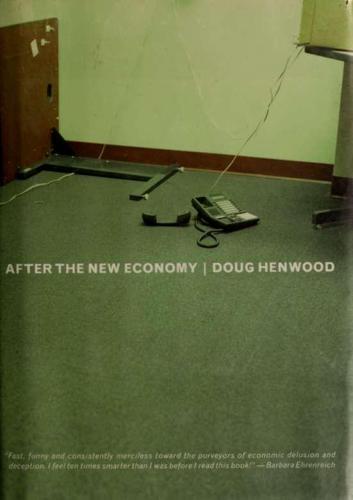
After the New Economy: The Binge . . . And the Hangover That Won't Go Away
by
Doug Henwood
Published 9 May 2005
Boihng this down into a soundbite: capitalism has always produced poverty alongside wealth, and capitalism has from the first been an international and internationalizing system—so it makes little sense to try to isolate the "global" aspect as the major culprit in the production of inequality. The MNC Those who identify globalization as the major force behind the production of inequality frequently point to an alleged "race to the bottom," driven by multinational corporations (MNCs) who constantly ransack the globe searching for low costs and high returns.This too isn't as easy a case to prove as one might think. After the New Economy Despite popular images of multinationals scouring the world for maximum return, going abroad seems to lower, rather than raise, profits (CHck and Harrison 2000).
…
See income pensions, Enron-style, 35 Petras, James, 150,178 Pets.com, 196 phlogiston, 51 place, meaning of, 147-148 Plender, John, 35 Polanyi, Karl, 167 polarization, 29, 225; see also income distribution; wealth distribution pohtics of finance, 202-207 267 and income distribution, 79—81 market democracy, 22 polls New Economy, 31—32,231 poverty and, 110 Pope, Carl, 162 pop culture, stock market and, 187 portfolio investment, 176 Porto Alegre, 185 potential GDP, 47 poverty, 105-114 absolute vs. relative, 109—111 composition of the poor, 111-114 defining, over time, 106-109 global perspective, 129-130,133-141 historical perspective, 106,111—114 popular perceptions, 110 see also income distribution "poverty line," coinage of phrase, 237 Prins, Nomi, 196 privatization, 221,231 productivity 1960s enthusiasm, 8 acceleration in, accounting for, 56-62 and the business cycle, 47 competing estimates, 60-61 definitions, 41—42 and deflation, 228 and earnings, 45, 56 high-tech vs. rest, 52—54 historical perspective, 48 by industry, 49, 64—67 international comparisons, 41—42 labor, 41 measurement problems, 42—45, 58—60 multifactor (total factor), 41,45 historical perspective, 49 outsourcing and, 51-52 where it went, 56 and workload, 39—41 work hours, measuring, 67 profitability historical view, 203—204 MNCs and, 157 prosocial behavior, 76 protectionism, 220 public subsidy to private sector, 6 purchasing power parity, 131, 238 quabty changes, measuring, 43—45 declines in, 55-56 inputs, adjusting for, 58 Quattrone, Frank, 199 Qwest, 197 race educational attainment, 98—99 Gilder on, 12-13 wealth distribution and, 125—126 race to the bottom, 155 racism and nationahsm, 239 neo- or diflferentiahst, 172—173 Ramone, Joey, 190 Rand, Ayn, 15 Rapaille, G. Clothaire, 146 Reagan, Ronald, 8 recessions, political purpose, 182 regionahzation, 159 Reich, Robert, 71,74 retail trade, 64-66 Riflcin, Jeremy, 68 Robinson, Joan, 235 Robinson, William, 175-176 Rockefeller, David, 232 Rubin, Robert, 218 ruling class, global, 174—178 Russell, Marta, 100 sad militants, 185 Sakakibara, Eisuke, 228 Index Sale, Kirkpatrick, 168 Salomon Smith Barney, 197 scale, economic, 167-168 Scandinavia, very wired, 6 Schama, Simon, 23 Schrager, Ian, 233 Schwab, Klaus, 175-178 Seattle, anti-WTO protests, 32,160 sex, Gilder on, 11—13 sexual preference and pay, 100 sex discrimination, 94—101 international comparisons, 101—102 Shakespeare, 188 shareholder activism, 214 Shiller, Robert, 6-8,25-27,194 Shiva, Vandana, 162,168-169 Shorrock.Tim, 171 Sichel, Daniel, 57 Silicon Valley, income distribution, 105 Silicon Valley Toxics CoaUtion, 232 Sinai, Allen, 4 Singhne, Peter, 18 Skilhng, Jeffirey, 33 skills, job, 73-77 returns to, 86—87 skin shade and pay, 99 Smith, Adam, 109-110, 163,173 Smith, Patti, 183 Smith, Paul, 6 social democracy, 139-143,182 social movements, new, 179 Social Security, 227 Solow, Robert, 3 sovereignty, 170 space, shrinkage of, 146 speedup, 215, 229 Spencer, Herbert, 37 state, retreat of, 150-152 Stigbtz, Joseph, 193 Stiroh,Kevin,51,57 stock market 1990s bubble, history, 188-189 analysts' role, 194—200 anomalies, 194 book value, defined, 233 brokers' fees and salaries, 201-202 and corporate profitability, 203—204 and corporate restructuring, 214-215 economics of, 187-188,192-195 and evolution of the corporation, 212-217 excess volatiHty, 194 happiness of investors, 212 and managers' pay, 216—217 and pop culture, 187 psychology of, 25—26 trading frequency and returns, 190—191, 234,239 wisdom of, 35 see also finance stock options, 216—217 and wealth distribution, 126—127 stock ownership, distribution of, 24, 122-124 stress, management by, 25 stylish shoes, 165 Summers, Lawrence, 5,231 surveillance, 68,77—78 Survey of Consumer Finances, 118—119 Survey of Income and Program Participation, 118 symbolic analysts, 71,72 synergy vs. conflict, 197-200 Taylorism, 78 technology not evil, 2 and social movements, 179 telecommunications industry, 196—198 telegraph, 7 telemarketers, 68 TheGlobe.com, 189 269 TheStreet.com, 31 dme, acceleration of, 146 Tocqueville, Alexis de, 82,139 Tompkins, Doug, 161-162 total factor productivity.
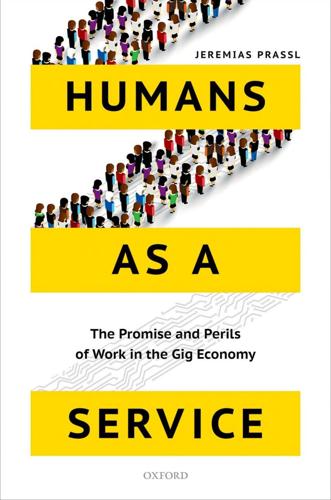
Humans as a Service: The Promise and Perils of Work in the Gig Economy
by
Jeremias Prassl
Published 7 May 2018
odesk.com/content/Elance-oDeskAnnualImpactReport2014.pdf, archived at * * * 162 Notes https://perma.cc/48BE-G7U7; Lilly Irani and M. Six Silberman, ‘Turkopticon: interrupting worker invisibility in Amazon Mechanical Turk’ (2013) CHI 2013, Changing Perspectives, Paris, France; ‘Is digital expert knowledge facing a race to the bottom?’, a-connect (undated), http://www.a-connect.com/acknowledge/is- digital-expert-knowledge-facing-a-race-to-the-bottom/, archived at https:// perma.cc/8ZJ3-P3X4. This tallies with research commissioned by the World Bank, which estimates that a typical online freelancer on Elance-oDesk (now Upwork) or Freelancer.com will work 20–40 hours per week and earn US$200– 750 per month, whilst only ‘a small subset of highly skilled workers . . . can earn up to $3000 per month’: Siou Chew Kuek, Cecilia Paradi-Guilford, Toks Fayomi, Soari Imaizumi, and Panos Ipeirotis, ‘The Global Opportunity in Online Outsourcing’ (World Bank 2015), 42, http://www.ipeirotis.com/wp-content/ uploads/2015/05/The-World-Bank-The-Global-Opportunity-in-Online- Outsourcing.pdf, archived at https://perma.cc/2AGP-TME6 42.

Prediction Machines: The Simple Economics of Artificial Intelligence
by
Ajay Agrawal
,
Joshua Gans
and
Avi Goldfarb
Published 16 Apr 2018
We end the book in part five by applying our economists’ tool kit to questions that affect society more broadly, examining five of the most common AI debates: Will there still be jobs? Yes. Will this generate more inequality? Perhaps. Will a few large companies control everything? It depends. Will countries engage in race-to-the-bottom policy making and forfeit our privacy and security to give their domestic companies a competitive advantage? Some will. Will the world end? You still have plenty of time to derive value from this book. KEY POINTS * * * Economics offers clear insights regarding the business implications of cheaper prediction.
…
Furthermore, incumbent Baidu is using a facial recognition AI to authenticate customers collecting their rail tickets and tourists accessing attractions.22 By contrast, in Europe, privacy regulation makes data access far more stringent than elsewhere, which may shut out European firms from AI leadership altogether. These factors may create a race to the bottom as countries compete to relax privacy restrictions to improve their AI position. However, citizens and consumers value privacy; it’s not a regulation that only companies care about. There is a basic trade-off between intrusion and personalization and a potential for customer dissatisfaction associated with acquiring user data.
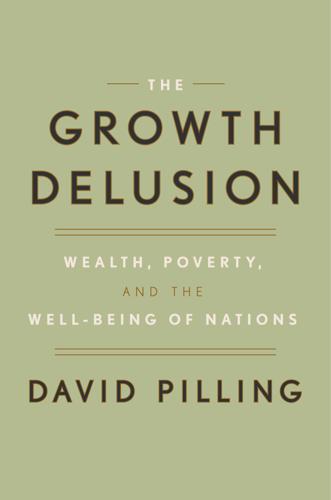
The Growth Delusion: Wealth, Poverty, and the Well-Being of Nations
by
David Pilling
Published 30 Jan 2018
Probably the next financial crisis will be a little bit different.” * * * — Just to be absolutely clear: the 2008 banking crisis, whose effects were still rippling through the world nearly a decade later, cannot be blamed on the way we account for financial services in our national accounts. The crisis had its roots in race-to-the-bottom deregulation, naive faith in the capacity of markets to self-correct, and a perverse “shareholder-value” ideology that allowed a few thousand masters-of-the-universe bankers to ransack their own institutions while simultaneously feeling good about themselves. There were many other factors, from the hugely increased (and unnecessary) mathematical complexity of financial instruments to the inherently corrupt relationship between the ratings agencies and the clients who paid them.
…
It goes against what Westerners in general, and Americans in particular, have taken for granted.”5 Growing inequality explained some of what was going on. Median wages had more or less stagnated since the 1970s, partly due to a loss of bargaining power by unions, a trend that has been replicated in most of the industrial world as the tenets of free-market capitalism encouraged a race to the bottom. In the US the share of economic output going to wages has been falling steadily for decades, with more going to corporate profits and capital. That exacerbates inequalities and penalizes people who have to work for a living, particularly those with skills that can be outsourced, mechanized, or computerized.
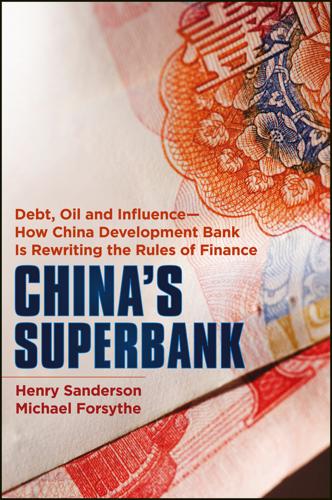
China's Superbank
by
Henry Sanderson
and
Michael Forsythe
Published 26 Sep 2012
A few months later, SolarWorld went on to lead a group of manufacturers requesting that the European Commission investigate whether Chinese companies were dumping products at below-market rates. Any EU action was potentially much more serious, as it was a far larger market for Chinese goods. This time, the Chinese solar makers gathered again in Beijing to urge the Chinese government to protect their interests. In the race to the bottom, who would be the last man standing? As prices fall further, narrowing the gap with traditional forms of energy, China’s solar firms, having exported abroad for years, can sell at home or move manufacturing overseas, helped by CDB. In China, bankruptcies and defaults do not happen when the market wants them to, especially when the debt is due to domestic banks and not overseas foreign lenders.
…
Changing our centuries-long addiction to oil and fossil fuels is not an easy task; the costs of renewable energy and the difficulties of changing the way we live make the industry a perfect fit for development banks in the early stages. In late 2011, China doubled its 2015 solar power goal. With such political support from the top and a development bank the size of CDB, China is hugely competitive, especially since not many other countries have the stomach to support an industry in a race to the bottom. Solar has followed the course of other industries in the country: becoming cost efficient by exporting to the West, and then selling to the growing domestic market. Yet other development banks, such as Brazil’s BNDES, will surely catch up to match the support. It will become a battle of subsidies.
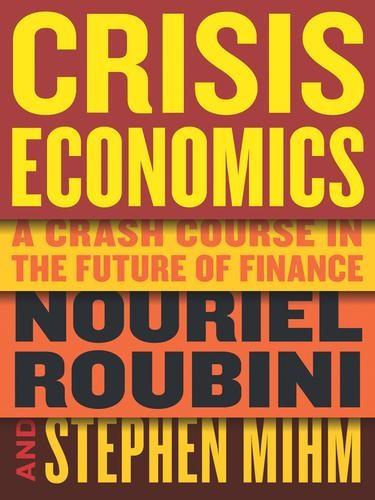
Crisis Economics: A Crash Course in the Future of Finance
by
Nouriel Roubini
and
Stephen Mihm
Published 10 May 2010
As a consequence, there’s a “race to the bottom,” as banks and other financial firms search for the regulator that will regulate them the least. Regulators may have exacerbated the problem in recent years. Here’s why: when banks choose their own regulators—and gravitate toward those that promise the least oversight—more rigorous regulatory agencies may see their domain erode. And a regulator with no one to regulate has no reason to exist. So regulators have every incentive to be lenient in order to attract more financial institutions into their regulatory nets. Here too we have a race to the bottom. Such is the paradox of choice or “regulatory shopping.”
…
This dynamic was comparable to an arms race: Ireland announcing a blanket guarantee forced other countries to do the same or at least raise the ceiling. The reason was simple: depositors could readily shift their money out of countries with limited guarantees and place it in safer havens. As a result, governments could not hold the line against moral hazard. It was a race to the bottom. Other kinds of deposits came under the umbrella of government insurance programs. In the United States, the National Credit Union Administration (NCUA), a kind of FDIC for credit unions, took over two beleaguered members—U.S. Central and WesCorp—and then pledged $80 billion to cover the losses on all deposits in all credit unions throughout the country.
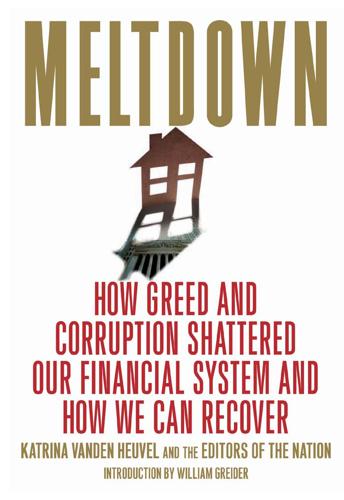
Meltdown: How Greed and Corruption Shattered Our Financial System and How We Can Recover
by
Katrina Vanden Heuvel
and
William Greider
Published 9 Jan 2009
When I asked Rubin to consider labor’s critique and its argument for global labor standards, I was pleasantly surprised that he did not brush off the question. Instead, we had an engaging back-and-forth. Without global rights for workers to organize and some version of a minimum wage pegged to each country’s economic conditions, the “race to the bottom” is sure to continue, I suggest. When workers start mobilizing for higher wages, multinationals counter by moving production to the next available cheap labor market. Middle-class wages fall at the top, but the bottom does not rise as rapidly as it should. “But it’s a complicated question,” Rubin responds.
…
Then there is improving the financial system’s own risk-han-dling mechanisms. Obama should attack the British position. Prime Minister Gordon Brown advocates more effective cross-border financial regulation, but not so much as to endanger the City of London’s standing as home of minimal regulation—in a race to the bottom with New York. This has to change. Obama should pick up the Financial Stability Forum’s proposal that global trade in financial derivatives be organized in licensed exchanges. If London wants the current casino, let the bulk of the trade be organized out of New York. But more importantly, the U.S. should insist that there be an international college of financial regulators which it will host, fund and coordinate.
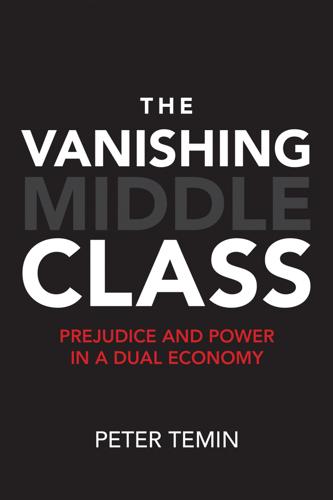
The Vanishing Middle Class: Prejudice and Power in a Dual Economy
by
Peter Temin
Published 17 Mar 2017
“Public and Private Partnerships: Accounting for the New Religion.” Harvard Law Review 115 (5) (March): 1229–1284. Morgenson, Gretchen. 2015. “A Student Loan System Stacked against the Borrower.” New York Times, October 9. Mortenson, Thomas G. 2012. “State Funding: A Race to the Bottom.” American Council on Education, Winter. http://www.acenet.edu/the-presidency/columns-and-features/Pages/state-funding-a-race-to-the-bottom.aspx. Accessed September 22, 2016. Moss, David A. 2002. When All Else Fails: Government as the Ultimate Risk Manager. Cambridge, MA: Harvard University Press. Murray, Charles. 2012. Coming Apart: The State of White America, 1960–2010.
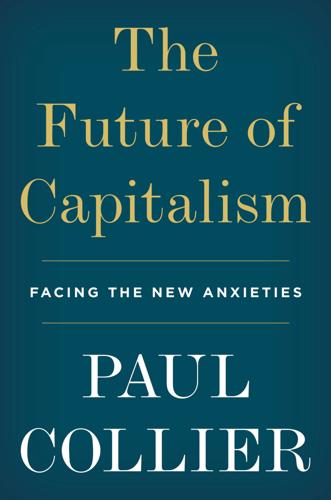
The Future of Capitalism: Facing the New Anxieties
by
Paul Collier
Published 4 Dec 2018
While we cannot afford to fall behind global standards, the teenage years should not be turned into a junior version of the toxic rivalries of an investment bank. As to those toxic rivalries, a story that hit the headlines in 2013 was of a summer intern at an investment bank, so keen to impress that he worked a twenty-hour day before dropping dead. This is an extreme instance of a race to the bottom that drives groups of people to become workaholics. Everybody would gain from working less, but no individual dares to step out of line: they would lose out in the race for promotion, and by breaching prevailing norms they would lose esteem. This is a classic co-ordination problem and it has a straightforward solution – public policy.
…
The capacity to tax and regulate remains firmly lodged at the national level. As I discussed in Chapter 6, our supranational co-ordination mechanisms – the OECD, the IMF, the EU, the G7 and the G20 – have lost the capacity to forge binding reciprocal obligations underpinned by enlightened self-interest. Each nation prefers to compete in a race to the bottom. This defeat of governance has been the ugliest reality of modern globalization. Having been the epicentre of the problem, in its presidency of the G8 in 2013, Britain began to lead the way in trying to address it.* For example, the UK pioneered a crackdown on ‘shell companies’ through which lawyers conceal asset ownership; the country now has a compulsory public register of the true ownership of all British companies, closing a major conduit for corrupt money.

Butler to the World: How Britain Became the Servant of Tycoons, Tax Dodgers, Kleptocrats and Criminals
by
Oliver Bullough
Published 10 Mar 2022
‘I’ve just been chatting to someone today about an ethical problem that’s arisen as a result of exactly this – where a commercial dispute has gone sour, and the loser in the commercial dispute is seeking to bring a private prosecution, not necessarily because he or she is particularly fussed about the interests of justice, but simply because they want revenge,’ said one lawyer. ‘If you remove the objectivity, which is what you get when being prosecuted by the state, then it’s a race to the bottom, or a race to the bottom of the pockets anyway. We are on that trajectory. It raises the startling prospect of two Russian oligarchs slugging it out in the commercial courts, and then one of them deciding suddenly he’s going to bring a private prosecution against the other. Once that happens, all gloves are off.’

Beautiful Solutions: A Toolbox for Liberation
by
Elandria Williams, Eli Feghali, Rachel Plattus
and
Nathan Schneider
Published 15 Dec 2024
OVERVIEW Food sovereignty is the right of communities to access healthy and culturally appropriate food and to have control over agricultural and food production systems. More than just access to food, it means being able to choose our food and to participate in producing it. MORE AND MORE COMMUNITIES TODAY HAVE little or no say over how their food is produced. With the rise of multinational agribusiness corporations, farmers are locked in a race to the bottom, competing to sell their products to middlemen at ever lower prices, while consumers continue to face rising food prices. Additionally, with more than 50 percent of the world’s population now living in cities, growing and gathering food is no longer part of daily life for most people. Many people around the world depend on aid for their food, which is often of poor nutritional quality and culturally inappropriate.
…
Communities that are more resilient to crises, and better equipped to negotiate and manage resource scarcity. More sharing between peoples and places. Less waste. More things that last. WHAT COULD HAPPEN IF WE LOSE? As the climate crisis gets worse, dwindling resources and supply chain chokes lead to conflict, economic devastation, and war. An accelerating “race to the bottom” where countries continue to compete against each other by dismantling labor and environmental protections, reducing the quality of goods, and destroying natural environments to serve wealthier consumers on the other side of the planet. Corporations hold communities hostage with the ever-present threat of moving factories away and eliminating jobs.

Connectography: Mapping the Future of Global Civilization
by
Parag Khanna
Published 18 Apr 2016
With as much as 70 percent of China’s budget consumed by local government expenses, many scholars argue that China is already de facto federalized and should become more formally so.3 Indeed, the central government no longer sets or rewards growth rate targets for provinces, indicating they are expected to determine economic strategies for themselves.4 Inland provinces are thus leveraging China’s improved infrastructure to draw companies from the high-wage coastal cities toward the lower-wage interior. Meanwhile, a “race to the bottom” competition for manufacturing jobs is playing out in America today reminiscent of Asia in the 1980s. Tennessee is reimbursing much of the up-front cost South Korea’s tire maker Hankook will incur to set up its first U.S. plant in Clarksville, where it will become the largest employer in the city.
…
As the longtime Chicago Tribune columnist and urban expert Richard Longworth has written, “Midwestern states make no sense as units of government.”7 Kansas City is shared by Kansas and Missouri, but the two states battle to get companies to relocate across State Line Road rather than uniting against global competition. Indiana’s municipalities are also engaged in a Tennessee-style race to the bottom to attract low-wage jobs, undermining Indianapolis’s effort to become a high-wage tech hub. Some second-tier cities have managed to stay afloat by effectively privatizing themselves. The Port of Corpus Christi, for example, was the first American territory to be granted a foreign trade zone license by the Department of Commerce in 1985, making it a self-governing private entity independent of the city with the same name and taking no federal, state, or city tax revenues.*1 After decades of service as a key port for oil imports and almost zero exports, it has become a major gateway for outbound shale oil exports from the Eagle Ford formation only a hundred kilometers away.*2 In 2009, it began a $1 billion joint venture with Tianjin Pipe Corporation, which hails from China’s leading port, to produce 500,000 tons per year of seamless pipe essential for oil and gas wells.
…
McDonald’s has more capacity to inspect itself, and more incentive to protect its brand, than any government can devote to monitoring it. Similarly, the West African societies where children work in cocoa fields don’t raise wages or build schools the way Nestlé can.*1 — SUPPLY CHAINS WERE ONCE thought of as spurring a race to the bottom; now it is clear they are how countries race to the top. Even China and India needed to open to foreign investment to attract supply chains, stimulate reforms, and generate the capital necessary to spread development. As the Nobel laureates Robert Solow and Edmund Phelps have pointed out, foreign firms pay higher wages, bring in new technology, and boost worker skills and productivity.

Good Economics for Hard Times: Better Answers to Our Biggest Problems
by
Abhijit V. Banerjee
and
Esther Duflo
Published 12 Nov 2019
High-net-worth individuals finance the campaigns of politicians on the left and on the right, and few are in favor of wealth taxation, even when they are otherwise quite liberal. Second, it is easy to avoid the taxes, legally or not, particularly in small European countries where people can move or park their wealth abroad. This gives rise to a race to the bottom on tax rates. We should not lose sight of the fact, however, that all of this happens in part because the world tolerates tax evasion: most tax codes have loopholes galore and the penalties for parking money abroad are ineffective. As we saw, countries with a simple tax code with few loopholes lose less from evasion when taxes go up than the United States.71 Gabriel Zucman has convincingly argued that there are many relatively straightforward things that would help a lot in limiting tax evasion and tax avoidance.
…
There needs to be the political will to implement them. The three steps Zucman recommends may be particularly tricky since they involve international cooperation, and the men (yes, almost always men) at the top right now do not seem to be all that able to join together to get things done. Without that, countries may be tempted to engage in a race to the bottom in taxation in the hope of attracting talent and capital. Preferential tax schemes for high-skilled foreign workers have been introduced in Belgium, Denmark, Finland, the Netherlands, Portugal, Spain, Sweden, and Switzerland. In Denmark, for example, high-earning foreigners pay only a 30 percent flat tax for three years (against a top rate of 62 percent for the Danish).
…
The recent round of tax reforms undertaken by the centrist Macron government has made tax less progressive: the flat tax was raised, the wealth tax is gone, and taxes on capital have been pared back. The official justification is that this is necessary to make France able to attract capital away from other countries. It may well be true, but it runs the risk of forcing other countries in Europe to cut taxes as well, prompting a race to the bottom. The American experience warns us this may be very hard to reverse. European countries need to cooperate to hold the line on their taxes. Developing-country governments raise even less money than the United States. The median low-income country raises less than 15 percent of GDP in taxes as compared to nearly 50 percent in Europe (and 34 percent in the OECD on average).

The Sharing Economy: The End of Employment and the Rise of Crowd-Based Capitalism
by
Arun Sundararajan
Published 12 May 2016
Additionally, at an October 2015 labor conference hosted by the White House, President Barack Obama discussed ways of protecting the new workforce in an hour-long town hall discussion he moderated with Michelle Miller, the co-founder of coworker.org, after highlighting the opportunities created by the future of work heralded by platforms like Uber, Lyft, and TaskRabbit in an earlier keynote speech. But what exactly do these opportunities look like? On one side of the argument, there are the Liss-Riordans of the world who may consider the future of work—at least as it is currently unfolding in the sharing economy—as a near-certain race to the bottom. Among the most vocal proponents of this view is the former labor secretary and University of California professor Robert Reich. Asserting that a better name for the sharing economy would be the “share-the-scraps economy,” Reich posits: “Customers and workers are matched online. Workers are rated on quality and reliability.
…
Will the sharing economy ultimately represent the rise of the microentrepreneur—a generation of self-employed workers who are empowered to work whenever they want from any location and at whatever level of intensity needed to achieve their desired standard of living? Or will it represent the culmination of the end of broad-based and high standards of living that the United States witnessed in the 1950s and 1960s—a disparaging race to the bottom that leaves workers around the world working more hours for less money and with minimal job security and benefits? Put another way, will the future of work be populated by successful microentrepreneurs, like David with his fleet of cars on Turo, ThreeBirdNest’s Alicia Shaffer on Etsy, and Don Dennis running his business from the island of Gigha?
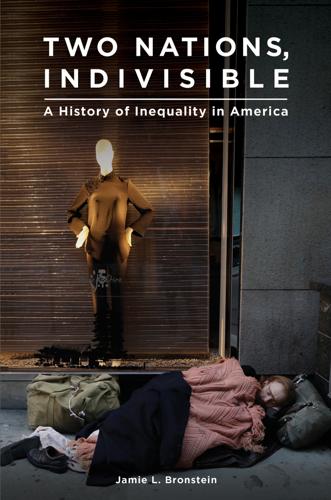
Two Nations, Indivisible: A History of Inequality in America: A History of Inequality in America
by
Jamie Bronstein
Published 29 Oct 2016
Without inequality, there could never be progress: “The main spring of progress is the desire of individuals to better their condition …”100 While the northern states were home to cut-throat capitalism and to a natural war between labor and capital, Calhoun described each plantation as a microcosm of harmony between labor and capital, embodied by the person of the plantation owner.101 One of the most prolific anonymous editorial writers on slavery, Virginia lawyer George Fitzhugh, advocated slavery as a form of paternalistic social organization for workers. As had the New York Working Men, Fitzhugh argued that competition promoted a race to the bottom in living standards. He claimed that workers and their employers in the North were only linked by the impersonal cash nexus, and that a manual worker had almost no power compared with the man who would or would not hire him. But Fitzhugh went beyond the arguments of northern workers by arguing that dependent relationships were better because they caused an affectionate tie: between husbands and wives, parents and children, and masters and slaves.102 He argued that in the best-case scenario, all workers would be enslaved.103 In the north, newspaper editors went wild, printing and reprinting Fitzhugh’s anonymous editorials while alleging a southern conspiracy to deprive white workers of their liberties.104 Historian Peter Kolchin argues that slaveholders in the United States (in contrast with the Russian serf-holders he compares them to) were able to defend slavery freely because of the free press in the United States.
…
Fears about the slowing of the economy in general are met with calls for the education of the workforce, as though that, rather than increasing consumer demand, will guarantee that every individual somehow has a high-paying job. In fact, automation has caused the hollowing out of the wage structure; the highest-paid people continue to be highly paid, while middle- and low-skilled workers conduct a race to the bottom for lower-skilled jobs. Without some degree of redistribution and the provision of more public goods “such as food, housing, education and health care that are necessary for a modern life to go well,” there is no guarantee that economic output will have any relationship to well-being.72 The path of the Patient Protection and Affordable Care Act (ACA, 2010) provides a good illustration of the problems caused by divergent partisan ideologies and powerful framing narratives.

Alchemy: The Dark Art and Curious Science of Creating Magic in Brands, Business, and Life
by
Rory Sutherland
Published 6 May 2019
Even Darwin’s great contemporary and collaborator Wallace hated the idea of sexual selection; for some reason, it sits in the category of ideas that most people – and especially intellectuals – simply do not want to believe. 3.11: On the Importance of Identity Remember that without distinctiveness, mutualism of the kind found in bees and flowers cannot work, because an improvement in a flower’s product quality would not result in a corresponding increase in the bees’ loyalty. Without identity and the resulting differentiation, a breed of flower would give away extra nectar for no gain, as the next time, the bees would simply visit the less-generous-but-identical-looking flower next to it. Over time, flowers would end up in a ‘race to the bottom’, producing as little costly nectar as possible and relying on their similar appearance to other, more generous flowers to preserve the bees’ supply of nectar and to maintain the incentive for them to continue travelling from plant to plant. We need to consider whether the same process occurs in business, as well as in nature.
…
The problem was confined to a few makes, but without knowing which specific brands to avoid, it sullied the whole category. Without the brand feedback mechanism, there was no incentive for any one manufacturer to make a safer, better version of the board, since they were not positioned to reap the gains. As a result, the market became a commoditised race to the bottom, in which both innovation and quality control fail. Why make a better product if no one knows it was you who made it? So no one did make a better board, and the whole category more or less died as a result. It may correct itself if better boards arise, or if a shrewd company such as Samsung cannily attaches its name to the best.
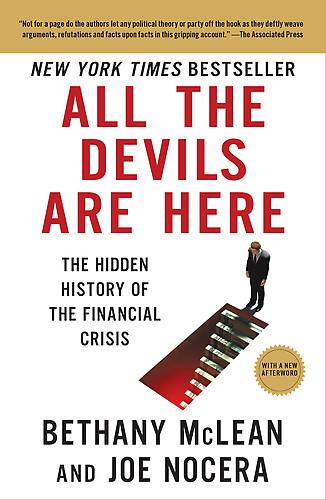
All the Devils Are Here
by
Bethany McLean
Published 19 Oct 2010
Ratings shopping was a classic example of why Alan Greenspan’s theory of market discipline didn’t work in the real world. The market competition between the rating agencies, which Greenspan assumed would make companies better, actually made them worse. “The only way to get market share was to be easier,” says Jerome Fons, a longtime Moody’s managing director. “It was a race to the bottom.” A former structured finance executive at Moody’s says, “No rating agency could say, ‘We’re going to change and be more conservative.’ You wouldn’t be in business for long if you did that. We all understood that.” “It turns out ratings quality has surprisingly few friends,” Moody’s chief executive, Raymond McDaniel, told his board in 2007.
…
Says Kevin Stein, the associate director of the California Reinvestment Coalition: “Banks said, ‘We don’t have to comply.’ The OCC said, ‘They don’t have to comply.’ The state legislatures said, ‘If we can’t pass a law that regulates federally chartered banks operating in our state, then we’re not going to regulate state-chartered lenders, because then they can’t compete.’ It was a legislative and regulatory race to the bottom.” Finally, subprime loans continued to make their way, unchecked, into the national banking system, thanks to securitization. It really didn’t matter who originated them. States had no way of cutting off that all-important funding source. And the national regulators, with their energy focused on making sure that “their” institutions were free from pesky state laws, idly stood by.
…
In a 2005 memo about Washington Mutual, the FDIC summed up the prevailing sentiment: “Management believes, however, that the impact on WMB [of a housing downturn] would be manageable, since the riskiest segments of production are sold to investors, and that these investors will bear the brunt of a bursting housing bubble.” And what did Wall Street think about the way the subprime business had gone mad? Wall Street didn’t care, either. If anything, Wall Street was encouraging the subprime companies in their race to the bottom. Lousier loans meant higher yields. “A company would come to us and say, ‘We can’t believe your FICO doesn’t go to 580,’ ” recalls a former Morgan Stanley executive. “ ‘You’re 620, but Lehman will go to 580.’ ” Here was the ultimate consequence of the delinking of borrower and lender, which securitization had made possible: no one in the chain, from broker to subprime originator to Wall Street, cared that the loans they were making and selling were likely to go bad.

Superintelligence: Paths, Dangers, Strategies
by
Nick Bostrom
Published 3 Jun 2014
If the antagonists are powerful states, the clash could be bloody.34 (A “surgical strike” against the rival’s AI project might risk triggering a larger confrontation and might in any case not be feasible if the host country has taken precautions.35) * * * Box 13 A risk-race to the bottom Consider a hypothetical AI arms race in which several teams compete to develop superintelligence.32 Each team decides how much to invest in safety—knowing that resources spent on developing safety precautions are resources not spent on developing the AI. Absent a deal between all the competitors (which might be stymied by bargaining or enforcement difficulties), there might then be a risk-race to the bottom, driving each team to take only a minimum of precautions. One can model each team’s performance as a function of its capability (measuring its raw ability and luck) and a penalty term corresponding to the cost of its safety precautions.
…
Technology races: some historical examples 6. The mail-ordered DNA scenario 7. How big is the cosmic endowment? 8. Anthropic capture 9. Strange solutions from blind search 10. Formalizing value learning 11. An AI that wants to be friendly 12. Two recent (half-baked) ideas 13. A risk-race to the bottom CHAPTER 1 Past developments and present capabilities We begin by looking back. History, at the largest scale, seems to exhibit a sequence of distinct growth modes, each much more rapid than its predecessor. This pattern has been taken to suggest that another (even faster) growth mode might be possible.
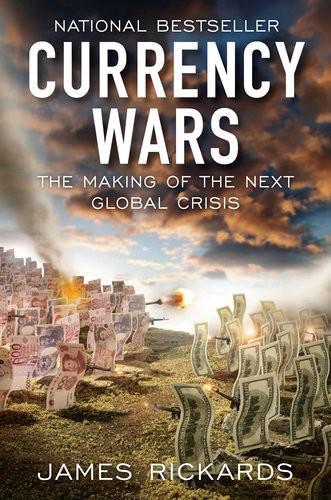
Currency Wars: The Making of the Next Gobal Crisis
by
James Rickards
Published 10 Nov 2011
In 1936, France broke with gold and became the last major country to emerge from the worst effects of the Great Depression while England devalued again to regain some of the advantage it had lost against the dollar after FDR’s devaluations in 1933. In round after round of devaluation and default, the major economies of the world raced to the bottom, causing massive trade disruption, lost output and wealth destruction along the way. The volatile and self-defeating nature of the international monetary system during that period makes Currency War I the ultimate cautionary tale for today as the world again confronts the challenge of massive unpayable debt.
…
Regional currency blocs could quickly devolve into regional trading blocs with diminished world trade, undoubtedly the opposite of what the advocates of multiple reserve currencies such as Eichengreen envision. Eichengreen expects what he calls healthy competition among multiple reserve currencies. He discounts models of unhealthy competition and dysfunction—what economists call a “race to the bottom,” which can arise when leading central banks lock in regional dominance through network effects and simultaneously abuse their reserve status by money printing. The best advice for advocates of the multiple reserve currency model is “Be careful what you wish for.” This is an untested and untried model, absent gold or some single currency anchor.
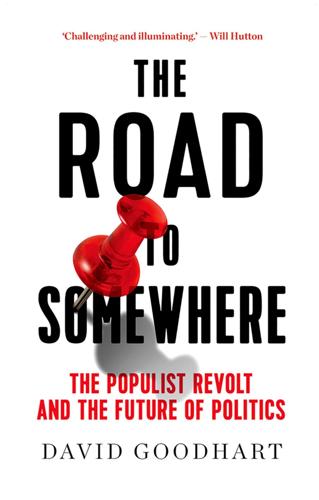
The Road to Somewhere: The Populist Revolt and the Future of Politics
by
David Goodhart
Published 7 Jan 2017
A new settlement is needed between the nation state and the international economic order that allows for a greater variety of institutional forms reflecting different national preferences and traditions. Some people, especially on the left, fear that without rigorous harmonisation of institutional regimes there will be a race to the bottom on labour, environmental or financial regulation (the same argument is made within the EU). This fear is not groundless but is exaggerated, and the only area where there seems to be some evidence for it is in corporate taxation. Most institutional money is risk averse and sees low regulation countries as risky.
…
He writes: ‘Advocates of globalisation lecture the rest of the world about how countries must change their policies and institutions to expand their international trade and to become more attractive to foreign investors. This way of thinking confuses means for ends. Globalisation should be an instrument for achieving the goals that societies seek: prosperity, stability, freedom, and quality of life. Whether globalisation sets off a “race to the bottom” or not, we can break the deadlock between the proponents and opponents of globalisation by accepting a simple principle: countries can uphold national standards in labor markets, finance, taxation, and other areas and can do so by raising barriers at the border, if necessary, when international trade and finance demonstrably threaten domestic practices that enjoy democratic support.’15 Rodrik argues that this principle rules out extremism on both sides.
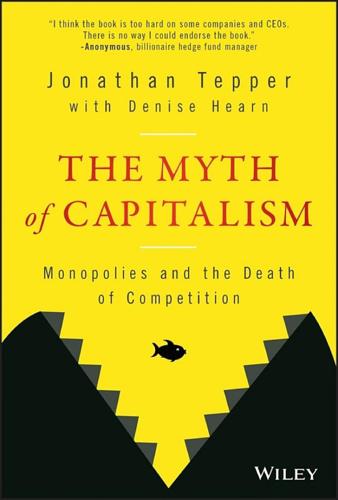
The Myth of Capitalism: Monopolies and the Death of Competition
by
Jonathan Tepper
Published 20 Nov 2018
“There is government,” he wrote, “whenever one person or group can tell others what they must do and when those others have to obey or suffer a penalty.”18 Under Hale's definition, the tech giants are effectively governments unto themselves. In tax matters, the companies stand effectively beyond the laws of national governments, playing one country against another in a race to the bottom. Their arrangements mock national governments. Facebook, Google, and other tech companies have used arrangements known as a “Double Irish” and a “Dutch Sandwich,” to shield the majority of their international profits from the taxman. They shift revenue from one Irish subsidiary to a Dutch company with no employees, and then on to a Bermuda mailbox owned by another Ireland-registered company.19 It is a farce, and it is all perfectly legal.
…
Key Thoughts from the Chapter The top technology companies in the United States now have a market capitalization that exceeds the GDP of all countries in Western Europe. For the biggest tech firms, competing against startups has become a one-way bet. In tax matters, the companies stand effectively beyond the laws of national governments, playing one country against another in a race to the bottom. The power of platforms makes them a different class of companies. They set the rules that govern their world. We simply live in it. Chapter Six Toll Roads and Robber Barons I would rather earn 1% off a hundred people's efforts than 100% of my own efforts. —John D. Rockefeller Imagine a world where a giant corporation watched your daily habits and knew all your likes, dislikes, who you spoke to, what you bought, whether you paid your bills on time, and what you talked about with friends?
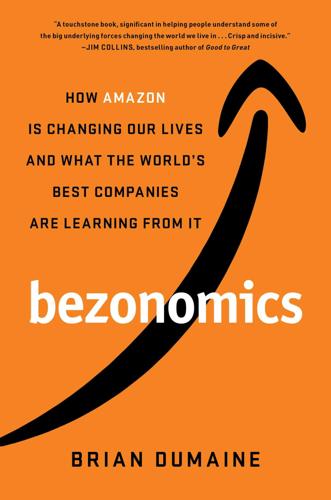
Bezonomics: How Amazon Is Changing Our Lives and What the World's Best Companies Are Learning From It
by
Brian Dumaine
Published 11 May 2020
Williams-Sonoma has differentiated itself with one of the most robust Internet operations in retail, bringing in over half its revenue online, and has assembled a database of 60 million customers. Its brick-and-mortar stores, which the company calls “billboards for our brands,” along with glossy catalogs, help drive online sales where margins are significantly higher than at the stores. A custom selection of products also helps retailers avoid the kind of race-to-the-bottom price wars for which Amazon is famous. In other words, one way to compete with Amazon on price is not to compete on price. That’s a lesson that Crate & Barrel CEO Neela Montgomery has taken to heart as she works to upgrade this upscale German furniture chain by modernizing stores and investing heavily in social media.
…
The challenge for retailers such as Crate & Barrel arises when Amazon begins to penetrate more of the market by cutting out retailers and going directly to manufacturers. Bezos is now offering furniture makers white-glove delivery service of their products, which includes a no-hassle returns policy. Furniture makers simply sell on Amazon and leave the rest of the delivery and all the paperwork and complexity of returns to the giant. Another way to avoid a race to the bottom with Amazon is to sell products that need a lot of hand-holding. Best Buy, the consumer electronics retailer, is one business that by all rights should’ve been crushed by Amazon. In the early 2000s, the Minnesota company had stores in malls with shrinking traffic, and carried TVs, small appliances, and computers—for the most part commodity products that can be bought on Amazon for less and delivered faster.

MegaThreats: Ten Dangerous Trends That Imperil Our Future, and How to Survive Them
by
Nouriel Roubini
Published 17 Oct 2022
The fallout soon engulfed not just the Asian Tigers but banks and investors worldwide. Under pressure to boost export revenues as their trade deficits surged, the Asian Tigers were forced to let their overvalued local currencies depreciate sharply, a practice that lowers the prices of exports to make them more competitive. This launched a race to the bottom: it took more and more local currency to pay lenders in dollars and yen. The real cost of foreign debt skyrocketed far beyond stated interest rates. Borrowers went bankrupt and took lenders with them. Shortfalls in the private sector spilled over into the public sector when countries emptied their pockets to offset lost taxes and bail out corporates and banks amid rising deficits.
…
Rising wealth in emerging markets lifts millions out of poverty and hikes consumer expectations. To accommodate demand, growing companies and competitive countries tap global debt markets. As individual and household debt skyrocket, many workers in advanced economies suffer under a global wage race to the bottom. In once flourishing communities, lower incomes spur rising credit card debt. Credit card balances in the United States now swamp savings. Household economics drive the national economy. Shrinking household income for many means lower tax rolls. No longer employed in full-time jobs with benefits, workers get caught between declining purchasing power and soaring health care and education costs.
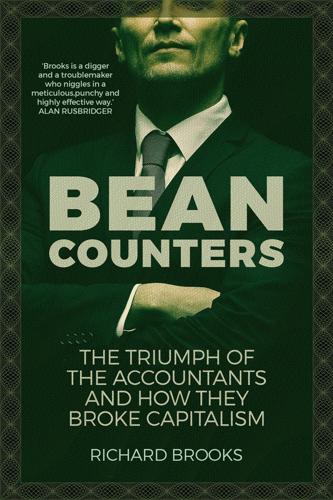
Bean Counters: The Triumph of the Accountants and How They Broke Capitalism
by
Richard Brooks
Published 23 Apr 2018
Financial Reporting Council chair Sir Ron Dearing, deputy chair Philip Couse, ex-Coopers, plus Stock Exchange chairman Andrew Hugh Smith and CBI president Sir Trevor Holdsworth were among those concerned. 16. Prem Sikka, Jim Cousins and Austin Mitchell, Race to the Bottom: the Case of the Accountancy Firms, Association for Accountancy and Business Affairs, 2004. 17. ICAEW Council, quoted in Accountancy magazine, April 1994, cited in Napier, ‘Intersections of Law and Accountancy’. 18. Sikka, Cousins and Mitchell, Race to the Bottom. 19. Financial Times, 11 June 1998. 20. Written parliamentary answer, 7 November 1996. Hansard, Col. 618. 21. House of Commons Trade and Industry Select Committee, 16 February 1999. 22.
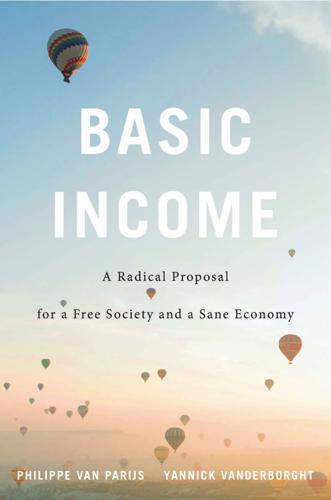
Basic Income: A Radical Proposal for a Free Society and a Sane Economy
by
Philippe van Parijs
and
Yannick Vanderborght
Published 20 Mar 2017
But how could it possibly make any sense in the twenty-�first �century, in an era in which information, capital, goods, and �people are crossing national borders as they have never done before? In this new context, are the prospects for a national basic income not deeply altered? Indeed, have they not dramatically collapsed?5 Race to the Bottom Why is the economic sustainability of an unconditional basic income threatened by globalization? �Because of the operation of two mechanisms. One has to do with its attractiveness to potential beneficiaries, the other with its unattractiveness to potential contributors. Neither mechanism constitutes a threat to a welfare state mainly governed by the insurance princi�ple, but both operate fully in the case of an unconditional basic income.
…
Tackling Selective Emigration The upshot of this exploration of the milder versions of the exclusionary strategy against selective immigration is that they do not provide a credible and attractive alternative to the harder one: shutting the door on many who would like to enter. Regrettably no doubt, if generous national (or, more generally, subglobal) basic incomes are to be made sustainable in the era of globalization, it �will therefore not be pos�si�ble to dispense with some version of the exclusionary strategy.23 Even this may not be enough to avert a race to the bottom, however. The threat posed by the selective emigration of net contributors also needs to be addressed.24 How? One might first think of a strategy strictly symmetric to the one deemed appropriate to limit selective immigration. If it is okay to keep net beneficiaries out, why would it not be okay to keep net contributors in?
…
Such obstacles make it more difficult for net beneficiaries to coordinate, or�ga�nize, and fight together.59 As a result of the conjunction of �these two mechanisms, one can expect institutionalized re�distribution to be less generous, other �things equal, in more heterogeneous socie�ties than in more homogeneous ones.60 If globalization means a constant flow of mi�grants, then invoking a race to the bottom driven by tax and social competition would not even be necessary to predict gloomy prospects for a generous unconditional basic income in a globalized context. The economic constraint �will not be binding if the po�liti�cal con- 242 Vi able i n the G lo bal Era? M ulti -L evel Basi c Income straint tightened by growing ethnic diversity stops re�distribution before its economic sustainability is at risk.
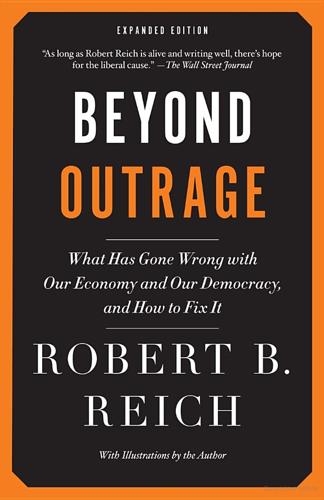
Beyond Outrage: Expanded Edition: What Has Gone Wrong With Our Economy and Our Democracy, and How to Fix It
by
Robert B. Reich
Published 3 Sep 2012
So what does that mean for restoring middle-class security in today’s economy? It starts by making sure that everyone in America gets a fair shot at success. The truth is, we’ll never be able to compete with other countries when it comes to who’s best at letting their businesses pay the lowest wages or pollute as much as they want. That’s a race to the bottom that we can’t win—and shouldn’t want to win. Those countries don’t have a strong middle class. They don’t have our standard of living. …The fact is, this crisis has left a deficit of trust between Main Street and Wall Street. And major banks that were rescued by the taxpayers have an obligation to go the extra mile in helping to close that deficit.

Shaky Ground: The Strange Saga of the U.S. Mortgage Giants
by
Bethany McLean
Published 13 Sep 2015
Fiderer asked a simple question: If there were really 31 million “risky” mortgages, and Fannie and Freddie were responsible for half of them, why was the peak rate of serious delinquency for GSE-backed loans only about 1.8 million? The reason is that Pinto defines “risk” far differently than most and includes a large number of loans that, measured by loss rates, didn’t turn out to be particularly risky. Another reality check is that if Fannie and Freddie led the race to the bottom, then you would expect to see much higher loss rates on their loans. Instead, the opposite is true. The FCIC researchers ended up rejecting Pinto’s analysis because they found that the loss rates on the GSEs’ loans were actually far smaller than those on comparable private-sector loans. But they did meet with him multiple times, and produced two detailed memos about mortgage performance, one of which was a direct response to his analysis.
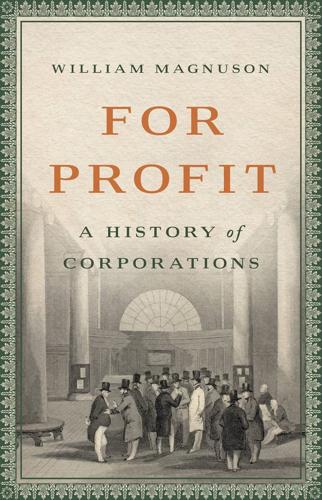
For Profit: A History of Corporations
by
William Magnuson
Published 8 Nov 2022
Or would they blend seamlessly into their local surroundings, enriching the international economic system? More prosaically, how would governments regulate them, if they could always move their operations abroad to evade restrictions they deemed too onerous? Would the rise of the multinational lead to a race to the bottom among nation-states as countries competed to attract businesses to their jurisdictions by watering down corporate responsibilities and obligations? The multinational corporation was a new breed of corporation, and it raised fundamental questions about the relationship between capitalism and democracy.
…
They could either increase environmental protections and risk losing corporations to countries with looser rules, or they could relax their own environmental standards and keep corporations and their desperately needed jobs. Too often, governments chose abject surrender. The result, not just in environmental regulation but also in other areas, like tax and employment law, was what scholars of international relations call a “race to the bottom.” Regulatory competition between countries caused governments to water down their laws in ways that ultimately harmed the public. With corporations now rivaling and sometimes surpassing the power of countries, a question arose in the minds of close watchers of capitalism. Was this the end of history for the corporation?
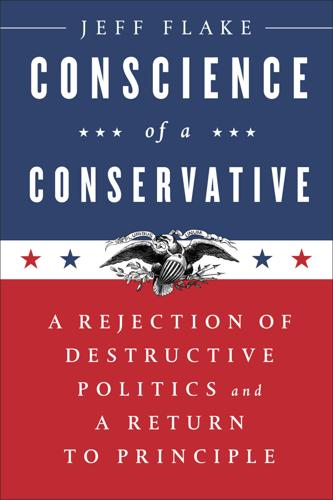
Conscience of a Conservative: A Rejection of Destructive Politics and a Return to Principle
by
Jeff Flake
Published 31 Jul 2017
We were desperate to engage big ideas, in a setting of intellectual curiosity and vigorous debate. I kept that Armey-Archer T-shirt so that I could remember a time when Republicans thought about ideas and enjoyed those good-spirited and consequential debates. It seems that time is gone, replaced by a race to the bottom to see who can be meaner and madder and crazier. It is not enough to be conservative anymore. You have to be vicious. Of course, this culture of vicious dehumanization is bipartisan. But in the election of 2016, our side outdid itself. It helps if you ascribe the absolute worst motives to your opponents, traffic in outlandish conspiracy theories, abandon reason and any old-fashioned notions of the common good, and have an unquenchable appetite for destruction.

The Fourth Industrial Revolution
by
Klaus Schwab
Published 11 Jan 2016
Although the human cloud is in its infancy, there is already substantial anecdotal evidence that it entails silent offshoring (silent because human cloud platforms are not listed and do not have to disclose their data). Is this the beginning of a new and flexible work revolution that will empower any individual who has an internet connection and that will eliminate the shortage of skills? Or will it trigger the onset of an inexorable race to the bottom in a world of unregulated virtual sweatshops? If the result is the latter – a world of the precariat, a social class of workers who move from task to task to make ends meet while suffering a loss of labour rights, bargaining rights and job security – would this create a potent source of social unrest and political instability?
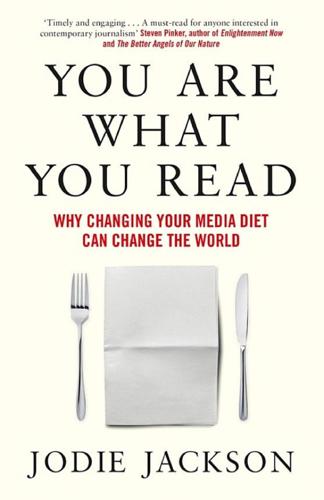
You Are What You Read
by
Jodie Jackson
Published 3 Apr 2019
They can publish content based on search engine algorithms that favour sites with large amounts of up-to-date and relevant information. This means content staff at some organisations are expected to write between five and ten articles a day. The race to the top of search engines has inadvertently led to a race to the bottom in terms of quality journalism. Stories are decided on based on their ‘traffic potential, revenue potential, turnaround time and at the bottom of the list editorial quality’.6 We have seen the same phenomenon in the UK. The Daily Mail has achieved a readership of 31.1 million readers a month, making it the number-one news organisation in the UK in terms of readership.

The End of Wall Street
by
Roger Lowenstein
Published 15 Jan 2010
Perhaps as a form of insurance for some cataclysm to come, Mozilo granted sweetheart mortgages (on preferred terms) to a host of political and business luminaries.b11 But his company appeared to be thriving. From ’00 to ’04, Countrywide’s share price nearly quadrupled, and over the ensuing few years Mozilo personally reaped $474 million in stock sales.12 Mortgage banking inevitably produces a race to the bottom. Thanks to competitive pressures, bad loan practice drives out good, and Mozilo’s influence on the industry was considerable. The only way for rivals to compete was to go after the same business as Countrywide. Washington Mutual, a century-old Seattle-based thrift, had more conventional banking bloodlines, but in the new century it experienced a rebirth.
…
See collateralized debt obligations (CDOs) cooling of market for credit rating agencies and example of fall in prices of foreign-held Goldman Sachs and growth of insurance claims on Lehman Brothers and Merrill Lynch and mortgage bubble and payment waterfall prime risk taking and subprime mortgages and swimming pool metaphor for total amount floated in mortgage banking, as race to the bottom mortgage bubble banking regulators and banks’ late stage desperation in bursting of Citigroup and credit and developing disaster, evidence of Federal Reserve’s role in Freddie Mac and Fannie Mae and mass hallucination in Merrill Lynch and mortgage securitization and reasons for ripple effect of Wall Street and Washington Mutual and mortgage lenders.
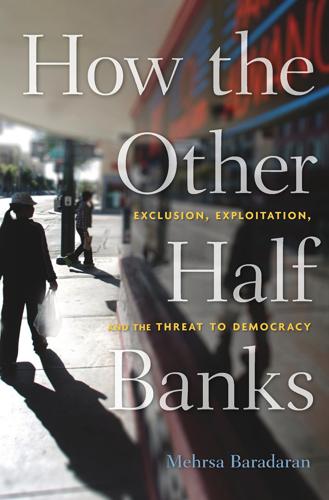
How the Other Half Banks: Exclusion, Exploitation, and the Threat to Democracy
by
Mehrsa Baradaran
Published 5 Oct 2015
First Omaha Service Corporation, the Supreme Court said that a credit card lender could export the interest rates of one state to any other. Banks immediately lobbied for and were granted the same privilege. Predictably, lenders began to charter in states with the highest rates, which they then exported nationwide. This in turn caused a “race to the bottom” as states competed for lending businesses by lowering borrower protections and increasing usury limits.32 The U.S. Supreme Court case allowing rates to be exported did not apply to payday lenders because the industry was not prevalent at the time. However, payday lenders were able to quickly take advantage by “borrowing” bank charters, a practice dubbed “rent-a-bank,” in order to “benefit” from high interest rates.
…
Although it may be absurd to implicate the CRA, is there any truth in blaming the weaker underwriting standards espoused by both the Clinton and the Bush administrations? The claim is that in an effort to increase home lending to low-income and middle-class borrowers, policymakers allowed the GSEs Fannie Mae and Freddie Mac to lower standards for mortgages and created a race to the bottom that other mortgage buyers were all too willing to join. This increased mortgage lending in general and exacerbated the bubble. However, these lowered standards did not create the subprime market, which was the main cause of the financial crisis. Again, policymakers started pushing these initiatives in the 1990s—well before the subprime market heated up.
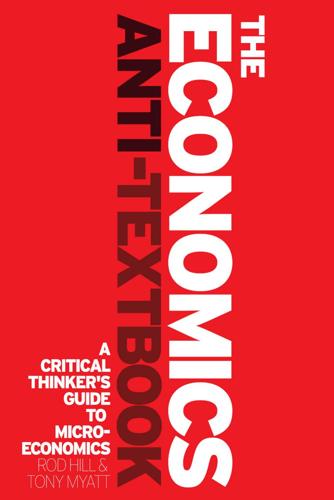
The Economics Anti-Textbook: A Critical Thinker's Guide to Microeconomics
by
Rod Hill
and
Anthony Myatt
Published 15 Mar 2010
In an unregulated competitive situation, an individual player would prefer not to wear a helmet since it confers an advantage over those players wearing helmets – the better vision and hearing more than compensate for the increased risk of injury. But if all players go without helmets, it’s a race to the bottom – everyone faces more risk and no one benefits. That’s why, when they vote in secret ballots, hockey players almost always favour compulsory helmets. As we document in Chapter 4, abundant evidence has shown that relative income is an important determinant of well-being – for fairness and status reasons among others.
…
But are tariffs that create a high-cost domestic industry the answer? Perhaps a country could promote other kinds of exports (e.g. tourism, education and other services) through investments in education and infrastructure. Since we can’t compete against low-wage foreign labour, tariffs prevent a ‘race to the bottom’ Textbooks argue that this is also false. High-wage countries sell goods to low-wage countries (and vice versa), so clearly it’s possible to ‘compete’ against low-wage labour. Comparative advantage shows that it is relative, not absolute, costs which matter for the ability to trade. Wage differences reflect productivity differences, as we saw in the ‘textbook’ part of Chapter 8.2 1.6 The global trading system Countries make agreements among themselves about trade policy.
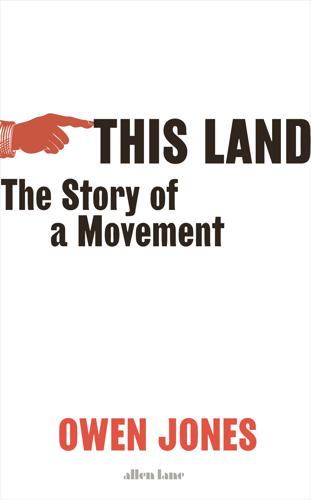
This Land: The Struggle for the Left
by
Owen Jones
Published 23 Sep 2020
A deal would end the Labour Party’s own increasingly torturous Brexit dilemma, they thought, and provide a reset button for British politics, allowing the national debate to shift back onto Corbynism’s favoured territory: popular domestic politics articulated through an antagonistic relationship between the majority and the elites. Besides, May’s deal was not the end point: the withdrawal agreement was a divorce arrangement, with a future relationship with the EU still to be negotiated. Once in power, Labour could simply adjust the deal according to its own values and priorities, including preventing a race to the bottom in workers’ rights, consumer protection and social legislation. It was simply politically impossible, however, for Labour to come out and vote for May’s deal. The idea that Corbyn could now be seen to bail out a Tory government and the cornerstone of its legislative programme was unthinkable.
…
Phase one, ‘The Country at a crossroads – the challenge we face’, spoke of a billionaire wealth grab under the Tories, powerful interests fuelling global warming, and both Tories and Lib Dems dividing the country over Brexit. Phase two was ‘Winning the battle for change’, which claimed Tory promises to end austerity could not be trusted, Tory Brexit would mean a race to the bottom in rights and protections, while Labour’s final say over a sensible deal would settle Brexit in six months. Phase three, ‘The future we will make’, outlined core policies, such as a Green Industrial Revolution, public ownership and a housebuilding programme. It all sounded great – on the conceptual level.
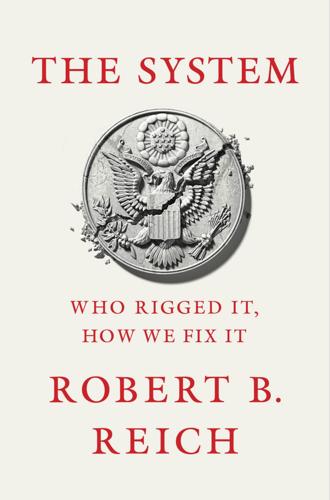
The System: Who Rigged It, How We Fix It
by
Robert B. Reich
Published 24 Mar 2020
Because only 6.4 percent of today’s private-sector workers are unionized, most employers do not have to match union contracts—which puts unionized firms at a competitive disadvantage. As I’ve noted, public policies have enabled and encouraged this systemic change. More states have adopted so-called right-to-work laws. The National Labor Relations Board, understaffed and overburdened, has barely enforced collective bargaining. The result has been a race to the bottom. Given these changes in the system, it’s not surprising that corporate profits have increased as a portion of the total economy while wages have declined. Those whose income derives directly or indirectly from profits—corporate executives, Wall Street traders, and shareholders—have done exceedingly well.
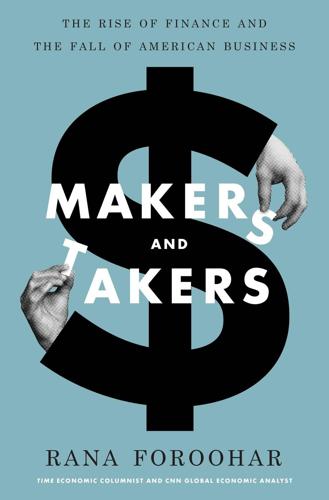
Makers and Takers: The Rise of Finance and the Fall of American Business
by
Rana Foroohar
Published 16 May 2016
Shifting to a tax code that doesn’t give debt such preferential treatment would be a great way to shift the buyback dynamic, and this is a topic I will cover in much more depth in chapter 9. Cracking down on overseas tax havens and closing corporate loopholes is another obvious measure that’s long overdue. This is especially true given the fact that most other G8 nations are considering similar proposals, which would help offset some of the threat of a corporate race to the bottom, in which corporations offshore to the most attractive tax havens. Similarly, taxing capital gains on a sliding scale, with higher rates for shorter holding periods and lower rates for longer ones, could discourage the seekers of quick gains from distorting the markets. (Bonus pay might also be spread out over time and linked not to share prices but to real business performance, something that a number of firms are beginning to experiment with.)
…
Firms can go further and add a “Dutch sandwich” onto this maneuver. Because there are European Union tax agreements in place that allow money to move freely between EU countries, American firms can set up Dutch subsidiaries and transfer more money from more countries into Irish subsidiaries. The whole thing creates a global race to the bottom, which underscores one of the key problems of tax avoidance: the so-called “tragedy of the commons” where, in the end, everyone loses. This is a key reason that the G8, the OECD, and other international bodies are making global tax reform a big priority. (Ireland in particular, under pressure from other countries like the United States, is now reconsidering some of its dicey exceptions.)13 There are plenty of crazy exemptions and rules that enrich the takers by encouraging debt in the consumer sphere, too.
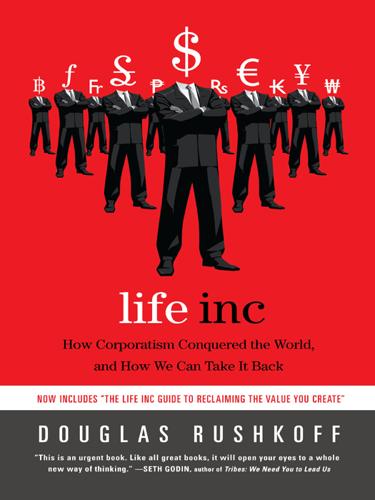
Life Inc.: How the World Became a Corporation and How to Take It Back
by
Douglas Rushkoff
Published 1 Jun 2009
Those on the other side of the trade have little choice in the matter. They are debtor nations, whose loans have been restructured by an IMF with only corporate interests or misapplied international trade theories in mind. A free-trade landscape sloped to the interests of corporate colonialism leads to what progressive economists call a “race to the bottom.” Nations compete to offer the best prices and the fewest obstacles for corporations to come set up shop. If this means preventing unions from forming, lowering environmental standards, or even subsidizing the construction of factories, so be it. With no minimum standards established between them or through international regulation, whoever stoops the lowest wins the contract.
…
The net result is that the disparity of wealth and standards of living between the rich and poor nations gets worse, not better. People living in the developing world might take heart in the fact that corporate colonialism no longer distinguishes between the localities it undermines. The phrase “race to the bottom” was first used, in fact, by Supreme Court Justice Louis Brandeis in 1933 to describe the way American states were falling over themselves to attract corporate business. Just like developing nations undercutting each other’s labor and environmental interests to win factory contracts, U.S. states were busy rewriting their charters and laws to the benefit of companies who incorporated there.

The Ones We've Been Waiting For: How a New Generation of Leaders Will Transform America
by
Charlotte Alter
Published 18 Feb 2020
more than a dozen schools: National Association for College Admission Counseling, chart provided to the author. in the next five years: National Center for Education Statistics, Fast Facts, “Enrollment,” nces.ed.gov/fastfacts/display.asp?id=98. the American Council on Education: Thomas G. Mortensen, “State Funding: A Race to the Bottom,” American Council on Education, Winter 2012, acenet.edu/the-presidency/columns-and-features/Pages/state-funding-a-race-to-the-bottom.aspx. over the same period: “25 Years of Declining State Support for Public Colleges,” The Chronicle of Higher Education, March 3, 2014, chronicle.com/interactives/statesupport. acceptance letters said yes: National Association for College Admission Counseling, charts provided to the author.

Virtual Competition
by
Ariel Ezrachi
and
Maurice E. Stucke
Published 30 Nov 2016
This third-party vendor’s “platform analyzes over 100 discrete data points per SKU, including competitors’ prices” to help “retailers re-price millions of products in real-time.”13 Boomerang “makes soft ware that online retailers use to evaluate competitors’ pricing on similar goods, and then analyze a variety of factors to decide when to match prices, or drop them lower or push them higher than a competitors’.”14 Among Boomerang’s customers are Staples, Sears, and Groupon Goods.15 Boomerang also promotes how its clients can avoid an algorithm-fueled price war: A new upstart, Jet.com, is building an online product cata logue with 30 million-SKUs and has pledged to underprice Amazon. What does Hub and Spoke 49 this mean to you? An opportunity to take control of your pricing, and turn a destructive “Race to the Bottom” pledge into a level playing field where you can compete. Amazon’s pricing machine will surely match Jet.com’s aggressive prices to prevent customer churn. For retailers, blindly matching prices is not an answer. Top 100 retailers are utilizing Boomerang’s innovative pricing technology to develop real-time pricing strategies to compete and grow profits.16 No one accuses Boomerang or its clients of fi xing prices.
…
Our concerns go deeper, to the core of the new market dynamics—where entry is possible, but expansion will likely be controlled by super-platforms; where choice is ample, but competition is limited; and where disruptive innovative threats emerge, but are eliminated through acquisitions or exclusionary practices. The competitive façade masks the wealth transfer, and the targets of anticompetitive practices—the buyers—are often unaware of the extent of the manipulation. Thus, the competition agency must look beyond the façade to see whether competitors are racing to the bottom in finding new ways to exploit us. So while technology can increase price transparency (which should be a good thing as it lowers consumers’ search costs), the pricing algorithms at times can foster tacit collusion—when sellers’ pricing algorithms, by quickly reacting to price changes, diminish the incentive to discount.
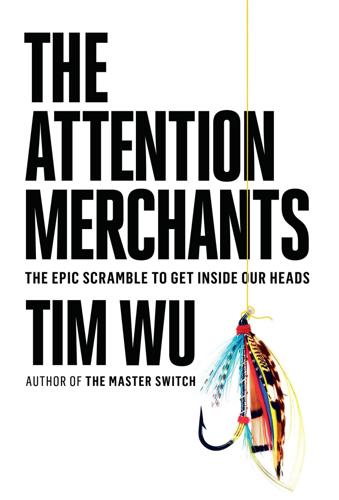
The Attention Merchants: The Epic Scramble to Get Inside Our Heads
by
Tim Wu
Published 14 May 2016
What People ultimately created was a platform for attracting attention through self-revelation that remained something short of tawdry, a kind of self-flaunting for the polite mainstream. Both People and the celebrity attention merchants have continued to gain from the new confessional culture, since the fans can never get enough. Once the race to the bottom had begun, it was nigh impossible to return to the old status quo—being a celebrity in the new sense now meant telling all, or facing the consequences. People was important in and of itself, but also for what it spawned, directly and indirectly. Profits drew imitators, as they inevitably do; in 1977, even the New York Times Company could not resist launching Us Weekly, a close copy of People.
…
While not the beginning of celebrity or celebrity culture, People was nevertheless a turning point in both, the start of the “celebrification” of the entire mainstream, including, as we shall see, the lives of many with no reasonable basis for expecting to become famous. Some would experience this as fulfilling the promise of a better life through technology, others as the logical extreme of a race to the bottom begun by the penny papers in the nineteenth century. * * * *1 Liebling also complained about the Grey Lady’s politics at the time, saying that the Times was “a political hermaphrodite capable of intercourse with conservatives of both parties at the same time.” *2 In its first decade, Time hastily declared Mussolini a “virile, vigorous” man of “remarkable self control, rare judgement, and an efficient application of his ideas to the solving of existing problems.”

Stacy Mitchell
by
Big-Box Swindle The True Cost of Mega-Retailers
and
the Fight for America's Independent Businesses (2006)
Chamber of Commerce, which espouses the virtues of small business but pushes a policy agenda that strongly favors large corporations. For years, local businesses have largely aligned themselves with this agenda, endorsing the idea of a single, unified pro-business politics. But that alignment is beginning to break apart, as more local business owners see little future for themselves in a world of race-to-the-bottom labor and environmental standards that reward footloose global mobility and penalize community roots. “We want to see hundreds of Independent Business Alliances across the country,” said Milchen. “Ultimately, the goal is to create a national shift in the culture and a challenge to the assertion that what’s good for transnational corporations is good for America.”
…
“Home Depot Campaign Bucks,” Sprawl-Busters Newsflash, Feb. 4, 2000; Dan McGillvray, “$174,000 Helped Augusta Crossing Win,” Kennebec Journal, July 15, 2005; Rachel Peterson, “Wal-Mart Spent Triple Its Prop. 100 Foes,” Arizona Daily Sun, June 19, 2005; Mark Shaƒer, “Wal-Mart Backers Win a Squeaker in Flagstaƒ,” Arizona Republic, May 18, 2005. 17. See Liza Featherstone’s insightful article on Wal-Mart’s racial politics, “Race to the Bottom,” Nation, Mar. 28, 2005. John McGettrick, interview, Sept. 18, 2005. For more on Ikea in Red Hook, see longtime urban advocate Mary Campbell Gallagher’s excellent blog at www.bigcitiesbigboxes.com. Mark N. Ramirez, “ ‘Big-Box’ Stores: A Matter of Class?” Bennington Banner, Mar. 30, 2005; Meg Campbell, member of Citizens for a Greater Bennington, interview, Apr. 7, 2005. 292 NOTES 18.
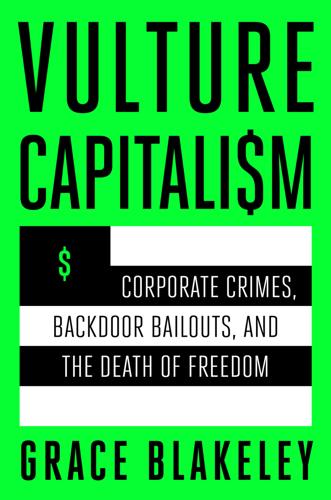
Vulture Capitalism: Corporate Crimes, Backdoor Bailouts, and the Death of Freedom
by
Grace Blakeley
Published 11 Mar 2024
Pesticides sold by these companies and their competitors have been linked to a wide range of health problems as well as the serious environmental problem of pollinator decline.93 The ability of subsistence farmers to access generic seeds has also been compromised by the mergers: companies like Monsanto have frequently threatened to sue farmers for using seeds that it claims as its intellectual property.94 And it’s not just agrochemicals. Market concentration in industries like pharmaceuticals, food, and technology has increased since the 1980s, with far-reaching implications for consumers, workers, and the planet. Rising monopoly power has been linked to rising national and international inequality, a global race to the bottom on tax, declining innovation, falling wages, regulatory capture, and even the erosion of democracy.95 Concern about these problems is not confined to progressives: ardent defenders of capitalism can frequently be found lamenting the problems created by corporate concentration.96 But the solutions they offer—from more stringent antitrust law to better corporate governance—fail to cut to the heart of the issue.
…
The most important factor determining wage growth is workers’ bargaining power, as demonstrated by the fact that historically high rates of employment have not led to higher wages in poorly unionized economies. Critical precursors to achieving any of these reforms include ending tax avoidance, preventing a race to the bottom on tax rates, and shutting down tax havens. There is an urgent need to end legal forms of tax avoidance like profit shifting and introduce minimum requirements around transparency on tax reporting and financial flows. The wealthy states that act as conduits for tax avoidance—and that tend to govern or oversee most of the world’s tax havens—must take the lead in this reform agenda.
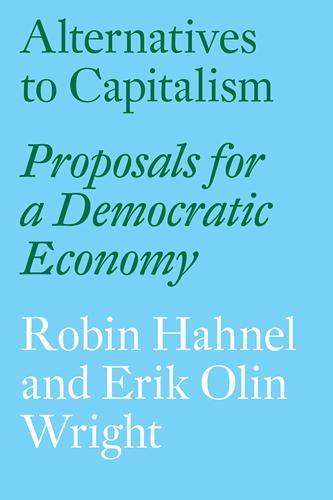
Alternatives to Capitalism
by
Robin Hahnel
and
Erik Olin Wright
But the cost reduces to spending some extra time and resources to set up a judicial procedure to settle foreseeable disputes over membership in communities of affected parties. There is actually one other “cost”—although I think Erik will agree with me that it is actually not a “cost” but a “benefit.” Our mechanism doesn’t work if communities have significantly different incomes because it would lead to a race to the bottom effect where pollution was unfairly and inefficiently located nearer poor communities. Only in a highly egalitarian economy such as the participatory economy we propose does it appear possible to design a mechanism that reveals accurate quantitative estimates of the damage from pollution. Risk and Innovation Any group of workers who can submit a proposal during the planning procedure that is approved as socially responsible, i.e. whose social benefit to cost ratio is at least one, will receive the inputs it requests to start producing when the year begins.

Democracy at Work: A Cure for Capitalism
by
Richard D. Wolff
Published 1 Oct 2012
Less developed countries, even more than the developed ones, need secure, stable jobs in enterprises that do not maneuver to get exemptions from regulations concerning wages, working conditions, and the environment. If a genuine commitment exists to assisting economic development in the places that need it most, the WSDE model would be far preferable to facilitating capitalist competition and its “race to the bottom” among all economies. 10.4 WSDEs and the State: Political Flows Earlier in this book (in section 7.1), I distinguished one kind of worker inside an enterprise, whose labor produces a surplus, from another kind whose labor enables the production of surpluses. I illustrated the distinction by comparing the software workers who produce new games with the cleaners who tidy up the workspace each evening.
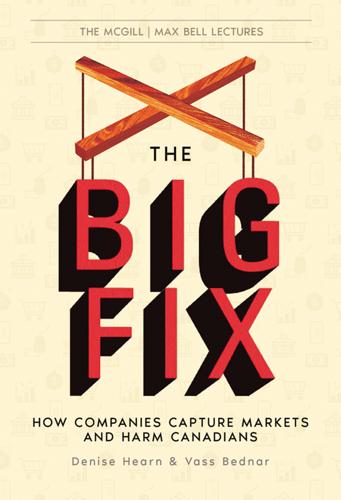
The Big Fix: How Companies Capture Markets and Harm Canadians
by
Denise Hearn
and
Vass Bednar
Published 14 Oct 2024
As Jacobs says, “Both the competition and the arena for competition are necessary.”268 If we deplete our own habitat to the point of not being able to sustain life, and even our own lives, that feedback loop ends in self-termination. We are facing enormous challenges as a nation, and as a species, including rising inequality, climate change, biodiversity loss, and democratic decline. We must place limits on ourselves; otherwise, we risk a race to the bottom that ends in planetary and human destruction. Markets are constantly evolving, changing, and forming anew. Novel innovations mean that policymakers must be adaptive and responsive to ensure that shifting markets don’t get rigged by private actors that set the rules in their favour and perpetuate illusions of rivalry with their peers.
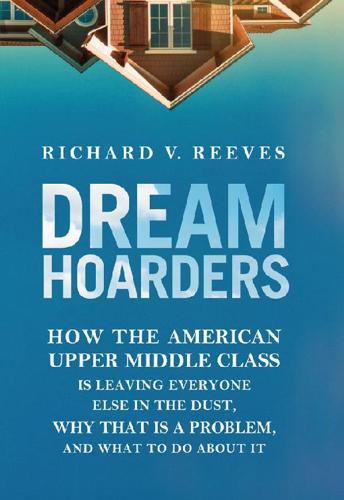
Dream Hoarders: How the American Upper Middle Class Is Leaving Everyone Else in the Dust, Why That Is a Problem, and What to Do About It
by
Richard V. Reeves
Published 22 May 2017
His conclusion is that in a free market, merit aid has become a discount used to attract the “right kind” of student—that is, the kind with parents that can pay full tuition.27 In the 1980s, as Burd tells it, some schools realized that they could steal good, wealthy applicants away from other schools by offering them modest amounts of financial aid (around $2,000–$5,000 a year). At first, this worked. The schools would throw out some breadcrumbs and attract wealthy students who basically paid full price. The problem is that this inevitably becomes a race to the bottom. Here is Burd’s example: If a school offers a single low-income student a full scholarship of $20,000, the school may feel good about itself, but it’s out $20,000. But if it can attract four affluent students to its campus instead, by offering them each a $5,000 discount off full tuition, it can collect the balance in revenue and come out way ahead financially.
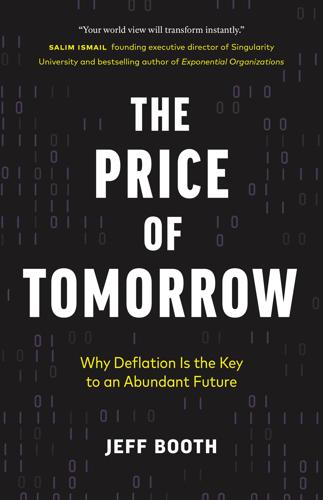
The Price of Tomorrow: Why Deflation Is the Key to an Abundant Future
by
Jeff Booth
Published 14 Jan 2020
Countries often devalue currency to help their export markets. But in a globally connected world with many countries driving each of their own national interests and jobs, this makes less sense. Other countries trying to compete for the same scarce jobs devalue their currencies to keep their economies from collapsing. This race to the bottom on currencies only serves to further push up global asset prices. And the endless game of reducing the value of currencies relative to others only serves as a short-term panacea, because asset prices will rise far more quickly than jobs can be created—and pay rates increased—to keep pace with the asset price rise.
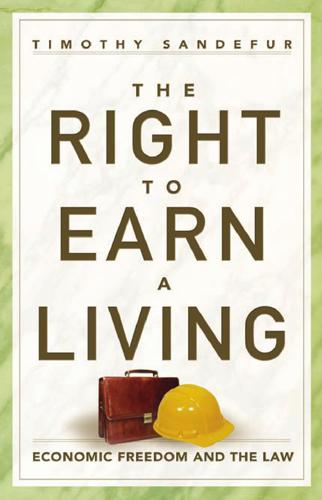
The Right to Earn a Living: Economic Freedom and the Law
by
Timothy Sandefur
Published 16 Aug 2010
Under Enrich’s theory, this too would unfairly “tilt” the “playing field” by pressuring noncomplying states to legalize such marriages.35 Concerns about a “race to the bottom,”36 wherein states would cut taxes and decrease regulations to attract businesses, are overblown. States face a natural disincentive to enact reckless tax policies: such 181 The Right to Earn a Living policies cost them revenue. This counteracts pressures to lower taxes in ways that harm the general public. In fact, forbidding states to “divert” interstate commerce would create the opposite of a race to the bottom, namely, a “ratchet” effect under which states would be free to raise, but not to lower, taxes; to increase, but not to decrease, their regulatory burdens.
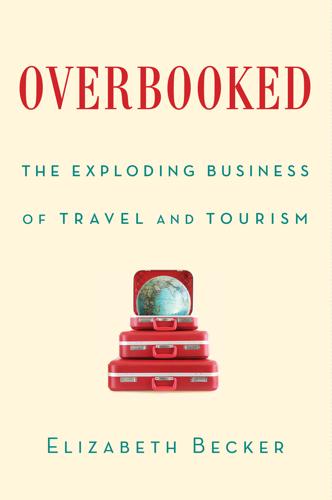
Overbooked: The Exploding Business of Travel and Tourism
by
Elizabeth Becker
Published 16 Apr 2013
“Typically what they are able to earn from us is significantly greater than what they are earning if they would have stayed where they were,” Goldstein said. “So our view, not surprisingly, is that we provide fantastic employment opportunities to people from around the world that would not otherwise exist.” Goldstein’s argument is what academics call the “race to the bottom” justification, a throwback to the early twentieth century before societies mandated minimum wages, improved labor conditions and the right to collective bargaining. While those rights were codified in national laws and are enforced within national boundaries, they are laws that the cruise companies can ignore.
…
H., 285 poachers, 214, 218, 219–21, 222, 239 China and, 234–35 pollution: air, 38, 71, 82, 85, 163–64, 332–33, 338 from air travel, 38, 354 in Bali, 197 in China, 302, 332–33, 338, 340 from cruise ships, 20, 30, 34, 82, 85, 134, 156–64 in Dubai, 196–97 fresh water, 98, 104, 302 ocean, 20, 34, 156–63, 196–97 Polo, Marco, 23 Pol Pot, 108 Pope, Adam, 233 population growth, tourism and, 38 Poretz, Donald and Susan, 294 Pouillon, Olivier, 197 poverty reduction, tourism and, 19–20, 35, 230, 376, 390 Pran, Dith, 87, 92 preservation, development vs., 111–12, 184–85, 326–27, 339, 340 Prestige oil spill, 158 Pritchett, V. S., 28 Pritzker family, 134 public relations, blurred lines between travel writers and, 26–27, 30, 31–32, 33 Qatar, 172 Qin Shi Huang Di, 331 Qiu Xialolong, 326 Quai Branly Museum, 56 Quakers, in Costa Rica, 253–54 Quest, Richard, 173, 193 “race to the bottom,” 145 Raffles Hotels, 90–91 Rainforest Alliance, 264 rainforests, 246, 258, 271 Rainier, Mount, 346 Rajapaksa, Mahinda, 278 Rashid Al-Maktoum, Sheikh, 171, 172 Razan Khalifa Al Mubarak, Princess, 197–98 Reid, Harry, 362 Renaissance Hotel Group, 313 Reno, Janet, 159 Republican Party: government spending on tourism opposed by, 352–53, 365, 367 in 2012 election, 366–67 Resorts World Sentosa, 113 retirees: in France, 72–73 as tourists, 18, 37 rhinos, threatened extinction of, 221 Rialto Bridge, Venice, 78–79 Rice, Condoleezza, 273 Ridge, Tom, 359 Riklis, Meshulam, 136 Riley, Richard, 199 Rio de Janeiro, Brazil, 276 as 2016 Olympics host, 273, 276, 362 Risi, Marcelo, 34, 35 Road of Lost Innocence, The (Mam), 117 Robb, Graham, 51 Robinson, James, III, 14–15, 270 Rome, pilgrimages to, 182 Romero, Oscar, 254 Romney, Mitt, 367 Roosevelt, Franklin D., 354, 384 Roosevelt, Theodore, 239, 384 Roots (Haley), 242–43 “Roots” tours, 242–44 Roth, Toby, 352 Rough Guide to the World (TV show), 271 Rousseff, Dilma, 365 Royal Caribbean International, 125, 128, 130, 134, 136, 140–41, 143, 151, 247, 256, 257 art sales lawsuit against, 148 Diamonds International and, 128, 149–50 illegal waste water dumping by, 158–59 ship registry of, 140 waste treatment systems of, 161 Rushmore, Mount, 345 Ruskin, John, 82 Saadiyat Island, 191 sable (African antelope), 215, 217 safaris, see Africa, national parks in, safaris in St.
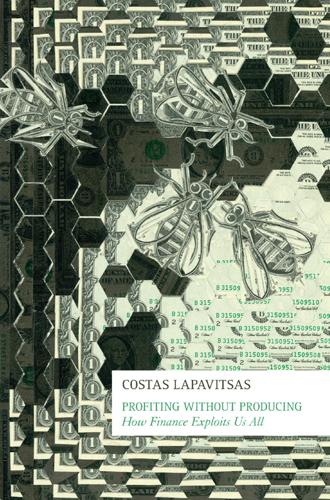
Profiting Without Producing: How Finance Exploits Us All
by
Costas Lapavitsas
Published 14 Aug 2013
In particular, the tendency of the euro to rise against the dollar in the 2000s has benefited the German financial sector but also German industrial capital by facilitating its relocation across Europe.48 FIG. 5 Evolution of nominal unit labour costs in the eurozone A striking feature of the development of the eurozone has been the emergence of a division between core and periphery, the latter including at least Spain, Portugal, Ireland, and Greece.49 The split between core and periphery has emanated from a ‘race to the bottom’ in eurozone labour markets. Member countries have been obliged to adopt a common monetary policy determined by the European Central Bank, while the exercise of fiscal policy has been severely restricted by the Stability and Growth Pact, setting limits on budget deficits at 3 percent of GDP and national debt at 60 percent of GDP.
…
Even though the pact has been frequently breached, it has still operated as a straitjacket on fiscal policy. Given the rigidity of monetary and fiscal policy, member countries have been encouraged to apply pressure on labour wages and conditions in order to generate competitiveness in the internal eurozone market. FIG. 6 Eurozone current account balances as percentage of GDP The ‘race to the bottom’ has been won by German capitalists who have succeeded in keeping wage growth low as well as creating entire areas devoid of trade union organization in both the old East and West Germany. The diverging paths of nominal unit labour costs in figure 5 show the gains in competitiveness made by Germany compared to peripheral countries.
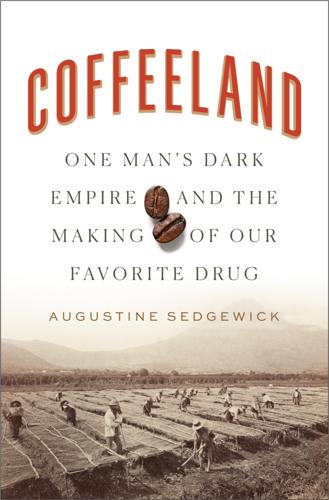
Coffeeland: One Man's Dark Empire and the Making of Our Favorite Drug
by
Augustine Sedgewick
Published 6 Apr 2020
McWilliams began to “spend long hours in the library” and “make forays into the San Joaquin Valley to see . . . just what went on in the fields and in the labor camps.” There, beneath the surface of that “quiet word,” agriculture, he found a clamorous “large-scale, intensive, diversified, mechanized” race to the bottom. In his 1939 book Factories in the Field, McWilliams described how, beginning around 1870, after the California gold rush had slowed down, a new class of “industrial agriculturalists” took over California’s land and economy. They made water flow backward, conjured gardens from wastelands, and in the process became as rich as sheikhs.
…
In August 1932, six months after a harvest cut short by an attempted revolution and its genocidal suppression, in the middle of the worst year of the worst global economic crisis in the history of the modern world economy, an American diplomat noticed, to his surprise, an “actual increase in the acreage under coffee.”41 This was hardly a logical response to the market. Coffee sales had been very slow, and European sales in particular were vanishingly small, pushing prices even lower and forcing El Salvador to look almost exclusively to the U.S. market.42 Nevertheless, backed by the military dictatorship, Salvadoran coffee planters “chose expansion,” racing to the bottom.43 It was a risky strategy, with no guarantee of profit or personal safety, and not every planter had the resources or stomach for it. Yet while some of his neighbors gave up their plantations during the early years of the Depression, valuing their savings and their lives more than their coffee—and reasonably so, given the fall in prices—James Hill was emboldened by the arrival of the trouble he had predicted.

America at the Crossroads: Democracy, Power, and the Neoconservative Legacy
by
Francis Fukuyama
Published 20 Mar 2007
But the other industrialized democracies were comfortable with their welfare states and often saw the American drive to liberalize markets around the world not as a well-intentioned effort to promote reform but as an American attempt to impose its American Exceptionalism own antistatist values on the rest of the world in a "race to the bottom." Much of the drive to Americanize the global economy came out of the private sector and the challenge posed by newly competitive U.S. companies and financial institutions. But American government policy was highly supportive of economic liberalization as well, in ways that generated a backlash that often went unperceived in Washington.
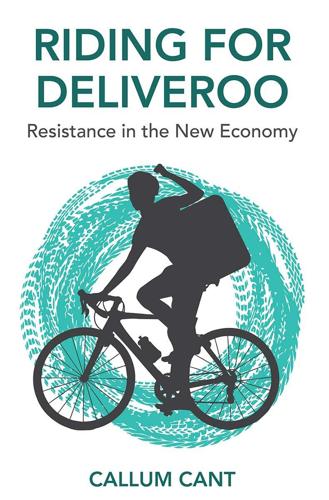
Riding for Deliveroo: Resistance in the New Economy
by
Callum Cant
Published 11 Nov 2019
Given that a co-op could not call on similar cash reserves, it’s hard to see how it could compete. The results of this twofold pressure might well produce effects that undermine the whole purpose of a cooperative. In order to try to protect the market share of their cooperative, workers would likely accept lower wages, and so get locked into an intractable race to the bottom they were supposed to have escaped. Self-exploitation, not much different from the effects of a piece wage, would be the condition of viability. So, this is the first sticking point of platform cooperativism: on an economic level, it takes no account of competitive pressure. Given that food platforms are already running each other into the ground to dominate a market with no clear profit margins, the opportunities for the development of large co-op competitors seem limited.7 One strategy with extensive historical precedent that might be used to prevent a platform co-op going under in the face of a venture capital-funded onslaught would be an equally aggressive strategy of state intervention.

Unleashed
by
Anne Morriss
and
Frances Frei
Published 1 Jun 2020
In the language of strategy, the auction system had the effect of generating value for customers at the top of the value stick by shrinking the surplus of its supplier-taskers. Although magic was happening at the high end of the tasker skill spectrum, where taskers were often well compensated for their expertise, many lower-skilled taskers were being bid down in a race-to-the-bottom to offer the cheapest possible price for their labor. (See figure 5-5.) FIGURE 5-5 The original TaskRabbit value stick It also took a long time for taskers to sort through jobs and find the ones they wanted—taskers spent, on average, two hours a week searching open tasks. The time and pain of dealing with the system were additional burdens, and so while user and tasker numbers were at their highest in 2013, there was some troubling news buried underneath this headline: the company’s fulfillment rate was only 50 percent.
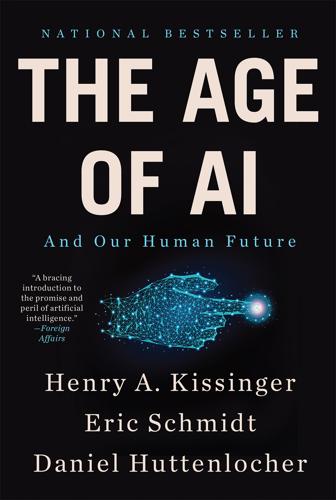
The Age of AI: And Our Human Future
by
Henry A Kissinger
,
Eric Schmidt
and
Daniel Huttenlocher
Published 2 Nov 2021
Unregulated and unmonitored, AIs could diverge from our expectations and, consequently, our intentions. The decision to confine, partner with, or defer to it will not be made by humans alone. In some cases, it will be dictated by AI itself; in others, by auxiliary forces. Humanity may engage in a race to the bottom. As AI automates processes, permits humans to probe vast bodies of data, and organizes and reorganizes the physical and social worlds, advantages may go to those who move first. Competition could compel deployment of AGI without adequate time to assess the risks—or in disregard of them. An AI ethic is essential.
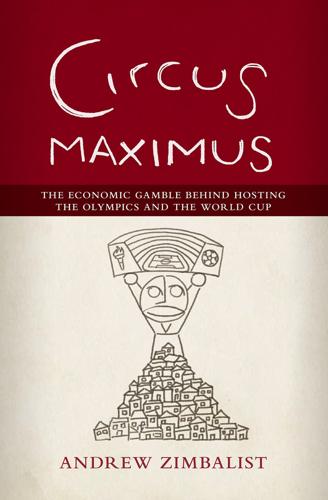
Circus Maximus: The Economic Gamble Behind Hosting the Olympics and the World Cup
by
Andrew Zimbalist
Published 13 Jan 2015
Stephanie Baker and Ilya Arkhipov, “Rich Russians Sparring with Putin over $48 Billion Olympics Bet,” Bloomberg.com, November 26, 2013. 21. Thomas Grove, “Special Report: Russia's $50 Billion Olympic Gamble,” Reuters, February 21, 2013. 22. Ed Hula III, “Investment Bank Asks for Bailout on Sochi Losses,” Around the Rings, July 7, 2014. 23. Human Rights Watch, “Race to the Bottom: Exploitation of Migrant Workers ahead of Russia's 2014 Winter Olympic Games in Sochi” (February 6, 2013). 24. Daniel Sandford, “Putin's Olympic Steamroller in Sochi,” BBC News Europe, February 6, 2013. 25. Boykoff, “Celebration Capitalism and the Sochi 2014 Winter Olympics,” p. 56. 26. Nikolas von Twickel, “Sochi Is a Hard Nut to Crack for PR Gurus,” Moscow Times, February 7, 2013. 27.
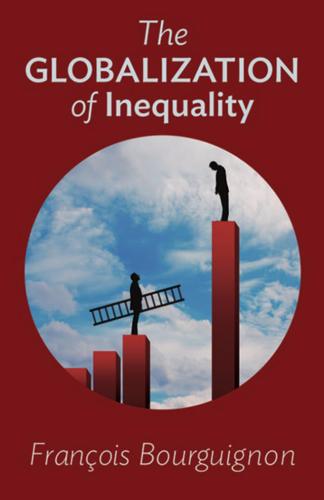
The Globalization of Inequality
by
François Bourguignon
Published 1 Aug 2012
Given the deep transformations taking place in rich countries, in the midst of the deindustrialization brought on by emerging economies, each country is attempting to garner the maximum number of advantages to itself in the sphere of international competition. It is this competition that threatens to provoke a “race to the bottom” in terms of redistribution. It is out of concern for remaining competitive with respect to other developed countries that certain countries have tried to moderate wage increases and social protection, while encouraging entrepreneurship and innovation by cutting their tax rates relative to their neighbors.
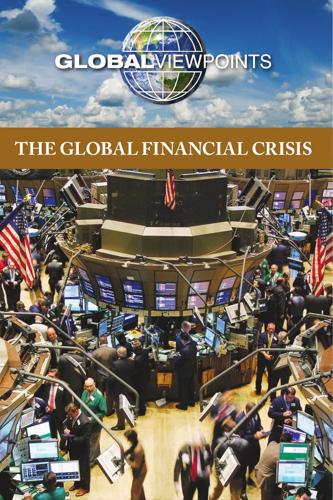
Global Financial Crisis
by
Noah Berlatsky
Published 19 Feb 2010
The same IFIs are behind the attacks against the state that translated into the destruction of the public sector to the benefit of foreign capital. They imposed the privatisation of stateowned enterprises in the name of ‘private sector development’ and ‘efficiency’. And private sector development required engaging in a race to the bottom in order to attract foreign direct investment (FDI). To that end, African countries raced to sell off state-owned enterprises, mining industries and natural resources. In several countries, there were even ‘ministries of 193 The Global Financial Crisis privatisation’ whose main mission was to sell off some of the most profitable public assets with little positive return for their countries.

The Currency Cold War: Cash and Cryptography, Hash Rates and Hegemony
by
David G. W. Birch
Published 14 Apr 2020
It also means that when the Fed is acting purely within its domestic mandate and adjusts monetary policy to optimize US economic conditions, it unwittingly delivers collateral damage to other countries, setting off waves of ‘hot money’ flows into and out of foreign currencies with every quarter-point cut or hike in US interest rates. This fosters exchange rate mismatches that fuel risks of a race-to-the-bottom currency war akin to that of the 1930s. In the age of Donald Trump, these tensions have grown more acute as the United States has pursued a more mercantilist, America-first trade policy, and as the president’s persistent criticism of the Fed’s monetary policy has raised questions about its independence.

Neutrino Hunters: The Thrilling Chase for a Ghostly Particle to Unlock the Secrets of the Universe
by
Ray Jayawardhana
Published 10 Dec 2013
The Antarctic Sun reports on the celebration are at http://antarcticsun.usap.gov/features/contentHandler.cfm?id=2555 and http://antarcticsun.usap.gov/features/contenthandler.cfm?id=2554. 3 centenary of Amundsen: There are many excellent books on Antarctic exploration, and The New York Times published an article titled “Amazing Race to the Bottom of the World” by John Noble Wilford on December 12, 2011, to mark the centenary. 4 I went to Antarctica: See my article “The Meteorite Hunters” in the November/December 2011 issue of Muse magazine (Chicago: Carus Publishing Company; www.musemagkids.com). 6 small flags that: Francis Halzen kindly sent me photographs taken by his colleagues so that I could see what IceCube looked like on the Amundsen centennial. 6 IceCube: Description of IceCube is based, in part, on a telephone interview with Francis Halzen conducted by the author on December 12, 2011, and on material on the project website at http://icecube.wisc.edu/. 6 phototubes: Though I have used the term “phototube” for simplicity, in fact these are photomultiplier tubes (PMTs for short); incident light generates an electric current in the PMT, which is then amplified up to tens of millions of times to make the detection easier. 8 “If you’re trying”: This Janet Conrad quote is from a telephone interview conducted by the author on March 4, 2013. 8 Boris Kayser: Quotes are from a telephone interview conducted by the author on August 9, 2012. 9 Hitoshi Murayama: Quotes are from a Skype interview with the author on March 28, 2012. 10 Klaatu: Lyrics of their song “Little Neutrino” are available at www.klaatu.org/lyrics/347est_lyrics.html. 10 popular sitcom: Quotes are from the fourth episode, titled “The Griffin Equivalency,” of the second season of The Big Bang Theory. 11 OPERA: The initial CERN press release and the subsequent updates are available at http://press.web.cern.ch/press-releases/2011/09/opera-experiment-reports-anomaly-flight-time-neutrinos-cern-gran-sasso. 11 “If the Europeans”: Quoted from Michael D.
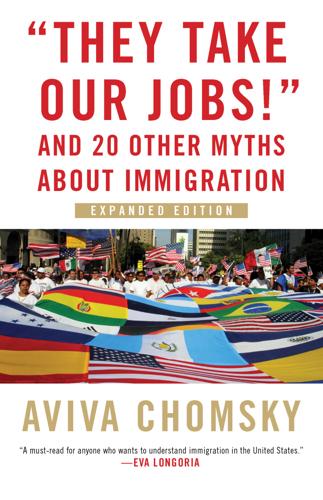
"They Take Our Jobs!": And 20 Other Myths About Immigration
by
Aviva Chomsky
Published 23 Apr 2018
They gain because jobs are created; but they also lose because the new jobs are dependent on employers’ keeping wages, benefits, and government regulation low. If workers, or governments, start to demand a greater share of the profits, the company can simply close down and move to a cheaper location. This phenomenon creates what some analysts have termed the “race to the bottom.” Workers and governments compete with each other to offer businesses lower taxes, lower wages, and a more “business-friendly environment” in order to attract or preserve scarce jobs. The competition may be more devastating in already poor Third World countries, but it’s going on in the United States as well, as communities pour resources into schemes to attract businesses.2 By maintaining and exploiting global inequalities, the U.S. economic system has managed to create a high-profit/cheap-product model.
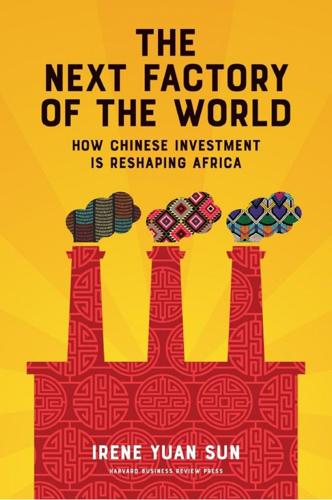
The Next Factory of the World: How Chinese Investment Is Reshaping Africa
by
Irene Yuan Sun
Published 16 Oct 2017
Global competition tempts countries to give foreign investors ever more incentives to invest—tax holidays for attracting firms to special economic zones are a favorite these days—and possibly to not look too closely when labor or environmental incidents occur. This raises the specter of a sort of race to the bottom—that with the arrival of each new factory, labor and environmental standards will lower, and the benefits to receiving countries will decrease. And attracting and keeping foreign investors takes government officials an enormous amount of time, stealing scarce human capital from other important tasks, such as investigating troubling incidents or even designing smart regulations to prevent such incidents in the future.

Fewer, Better Things: The Hidden Wisdom of Objects
by
Glenn Adamson
Published 6 Aug 2018
But we’re in a time when the constraints of production and the scaling up that our industries require don’t leave much room for fineness, or actually that much interest, in the fabric.” When price competition drives down the cost of upholstery fabric to seven dollars per yard, it doesn’t allow someone like Bodenner much room to operate. This race to the bottom has left most people without much experience of good cloth, such as people a century or two ago would certainly have had. “We have left a more careful consideration of materials behind, for price and production speed,” he says. “However, I think we miss it. I think people want it back—they just don’t have it.”
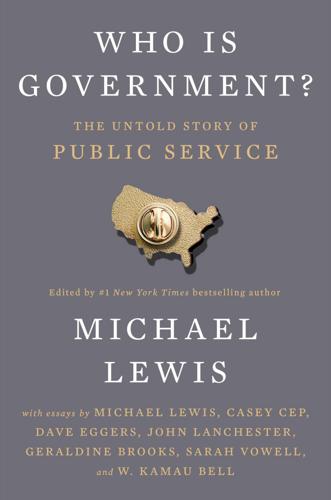
Who Is Government?: The Untold Story of Public Service
by
Michael Lewis
Published 18 Mar 2025
This was a conscious decision.” If coal mine companies had played the odds with miners’ lives, it was because they felt they couldn’t afford not to. Any mine that installed a safe number of roof bolts would find itself at a competitive disadvantage to any mine that didn’t. It had been a race to the bottom, and until Chris created his database and made his study, no one had really noticed what had happened. If working-class families in West Virginia were angry but didn’t know quite where to direct their feelings, here was a road map. Their society had just assumed it could foist risk upon them without anyone ever really noticing or caring.
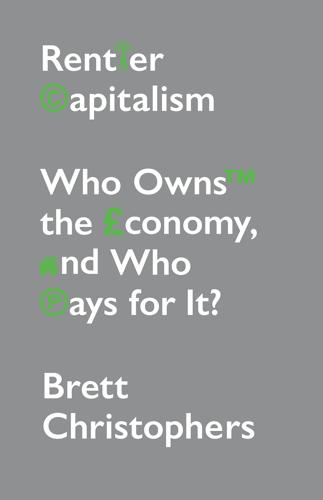
Rentier Capitalism: Who Owns the Economy, and Who Pays for It?
by
Brett Christophers
Published 17 Nov 2020
Cost was firmly back on the agenda: in investigating public-sector outsourcing in the wake of Carillion, MPs were repeatedly told that purchase decisions had long since reverted to being all about price.97 And as the Economist observed, contractors had been only too willing to oblige: Fearing that austerity would slash the number of contracts on offer, outsourcers have engaged in a race to the bottom. Underbidding, known in the trade as ‘suicide bidding’, has become common, as companies try to keep shareholders happy with the promise of new business. Outsourcers under-bid in the hope that subsequent amendments to the contract – extra charges here and there – will eventually yield some profits.
…
On fiscal regimes for mineral resources in general, see especially L. Hogan and B. Goldsworth, ‘International Mineral Taxation: Experience and Issues’, in Daniel et al., Taxation of Petroleum and Minerals, pp. 122–62. On fiscal regimes for oil and gas more specifically, see Nakhle, ‘Petroleum Fiscal Regimes’; A. Zalik, ‘The Race to the Bottom and the Demise of the Landlord: The Struggle Over Petroleum Revenues Historically and Comparatively’, in Logan and McNeigh, Flammable Societies, pp. 267–86. 39. ‘BHP Annual Report 2018’, p. 28. 40. B. Mommer, ‘Fiscal Regimes and Oil Revenues in the UK, Alaska and Venezuela’, June 2001, p. 8 – pdf available at oxfordenergy.org. 41.
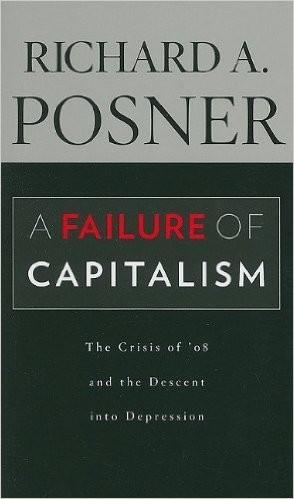
A Failure of Capitalism: The Crisis of '08 and the Descent Into Depression
by
Richard A. Posner
Published 30 Apr 2009
There would be only one effect of the bank's altruism —of its willingness to sacrifice profits enabled by taking a slight risk of bankruptcy that most financial executives would think tolerable, as the risk would be unlikely to materialize for a number of years during which they would be making huge amounts of money: the bank would lose out in competition with its daring competitors. And they would be daring, because financial intermediation, being an inherently risky business activity, attracts people who are comfortable with risk. There was a race to the bottom —or the top, depending on one's perspective. The most daring, aggressive players in the financial sandbox would ramp up the riskiness of their lending or other investing, and this would increase their returns, at least in the short run. Their timid competitors would be forced to match the daring ones' strategy or drop out of the competition.
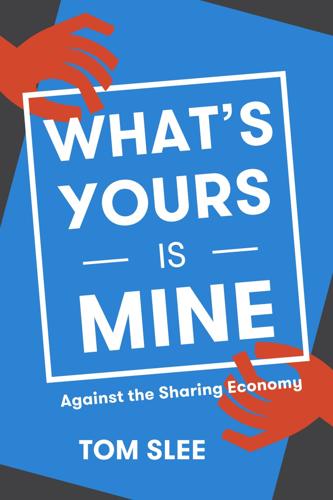
What's Yours Is Mine: Against the Sharing Economy
by
Tom Slee
Published 18 Nov 2015
He “declined to disclose any of the company’s other metrics, such as the average wage earned by its cleaners in a week or the distance they travel to jobs.” Sharing Economy entrepreneurs like to talk about “earning a little extra money” and making life a little more affordable, but Anthony Walker shows that the business model is a race to the bottom for the service providers. The most that can be said for the practice of replacing actual jobs with the kind of precarious, state-subsidized work that Walker gets from Homejoy is that it is better than nothing, but it is undermining other workers as it does so, and while Walker gets some money he has no chance of moving on to actual employment.
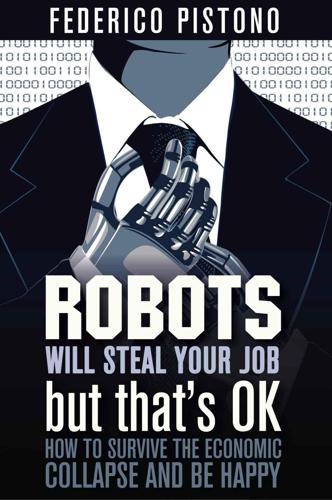
Robots Will Steal Your Job, But That's OK: How to Survive the Economic Collapse and Be Happy
by
Pistono, Federico
Published 14 Oct 2012
And people there aspire to get these jobs. They have little to no insurance, benefits, vacation, no safety rules, no right to complain. Sure, if you work there and you do not like it you can always leave the job, but somebody else will gladly take your place. It should be clear that we cannot think to outcompete them with a race to the bottom, by bringing manufacturing jobs back here at lower prices. It simply is not going to happen, nor should it. The time when with a high school education, a lot of good will, and hard work got you a decent middle class lifestyle are long gone. Those jobs that have been outsourced are not coming back, period.

Effective Programming: More Than Writing Code
by
Jeff Atwood
Published 3 Jul 2012
Outrageous! Highway robbery! This is all very strange, as a guy who is used to spending at least $30 for software of any consequence whatsoever. I love supporting my fellow software developers with my wallet, and the iPhone App Store has never made that easier. While there’s an odd aspect of race to the bottom that I’m not sure is entirely healthy for the iPhone app ecosystem, the idea that software should be priced low enough to pass the average user’s “why not” threshold is a powerful one. What I think isn’t well understood here is that low prices can be a force multiplier all out of proportion to the absolute reduction in price.

Inequality and the 1%
by
Danny Dorling
Published 6 Oct 2014
The job might be to clean a garage, paint an apartment or buy groceries. The firm that matches up these temporary servants and their not-too-fussy masters, and carries out criminal record checks on them, is called Taskrabbit.com. Rabbits receive star ratings based on what previous masters thought of them.88 Task rabbits are frontrunners in a race to the bottom. If task rabbits are an extreme case, ‘temps’ are the new normal. Temps range from casual day labourers to university teaching assistants hired for ten months, or ten days. Many of the 1 per cent revel in a world in which the increasingly fragmented 99 per cent have ever-decreasing bargaining power.
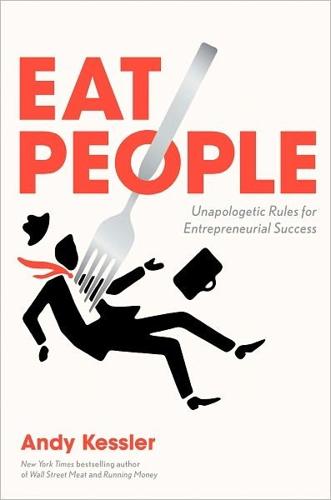
Eat People: And Other Unapologetic Rules for Game-Changing Entrepreneurs
by
Andy Kessler
Published 1 Feb 2011
Think about how different this is from media today. The technology of sticking a microphone in front of someone, or turning on a camera or switching a phone call, was perfected years ago. It’s not about technology anymore. It’s about programming content, not computers, to attract viewers. With a few decent exceptions, it has been a race to the bottom. Will a horizontal online world create a race to the top? More like higher highs and lower lows. At the edge, people pick what to do and watch according to their taste. And there is no accounting for taste. Or as Jay McInerney wrote, “taste is just a matter of taste.” But now getting packets through that bumper car of an Internet to create a virtual pipe actually takes someone writing code and designing easy-to-use services.
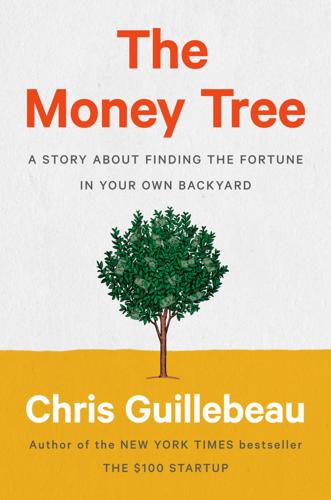
The Money Tree: A Story About Finding the Fortune in Your Own Backyard
by
Chris Guillebeau
Published 6 Apr 2020
“You mean besides the guy with the giant panda? . . . Okay, good question. Well, I probably wouldn’t want to be one of the people selling sodas and pretzels. It doesn’t seem like they could make much money, especially since anyone else could do the same thing.” “Right. Selling a commodity is almost never a good idea. It’s a race to the bottom in terms of pricing, and like you said, there’s nothing unique about any particular seller.” Jake thought for a moment. “It also seems like it’s really important to know your market. One of the guys I saw kept trying to sell me a case of diapers. I suppose he had nothing to lose by trying, but that’s not something I plan to need for a long time.”
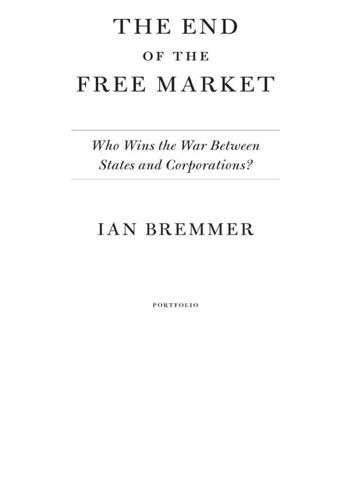
The End of the Free Market: Who Wins the War Between States and Corporations?
by
Ian Bremmer
Published 12 May 2010
The Gulf Cooperation Council enables six Arab states to develop an effective common market for goods and services. But none of these organizations has eroded the sovereign power of its member states. 7 The best recent reports on China’s system of censorship include Rebecca MacKinnon, “China’s Censorship 2.0: How Companies Censor Bloggers,” First Monday blog, vol. 14, no. 2-2 Feb. 2009; Race to the Bottom: Corporate Complicity in Chinese Internet Censorship, Human Rights Watch, Aug. 2006; and Journey to the Heart of Internet Censorship, Reporters Without Borders, Oct. 2007. 8 Naomi Klein, No Logo (Toronto: Knopf, 1999), xxiii. 9 Sarah Anderson and John Cavanagh, The Top 200: The Rise of Corporate Global Power (Washington, D.C.: Institute for Policy Studies, Dec. 2000), based on statistics from Forbes magazine. 10 Frances Maguire, “The New Masters of the Universe,” Banker, Jan. 2, 2006. 11 United Nations Conference on Trade and Development (UNCTAD), World Investment Report 2008: Transnational Corporations and the Infrastructure Challenge (New York/Geneva). 12 These critics had plenty of vivid stories to make their charges stick: Union Carbide’s chemical plant in Bhopal, India, which accidentally released tons of toxic gas in December 1984, killing several thousand people over a period of several years; the Exxon Valdez oil spill that badly damaged Alaska’s Prince William Sound in March 1989; the reported use of poorly paid and treated workers, and even child labor, in footwear factories producing shoes for Nike, Puma, Reebok, and Adidas in countries like Pakistan, Bangladesh, Indonesia, and Vietnam; Philip Morris’s allegedly aggressive marketing of carcinogenic cigarettes in developing countries; and the refusal of big pharmaceutical companies to allow patented HIV/AIDS drugs to be reproduced cheaply in the African countries that arguably needed them most.
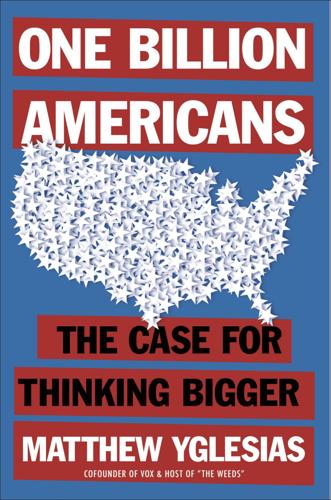
One Billion Americans: The Case for Thinking Bigger
by
Matthew Yglesias
Published 14 Sep 2020
Shifting big players out would give start-ups and smaller firms more room to expand while simultaneously seeding new cities with the stockpiles of skilled workers and rich technology executives who could launch future start-up clusters. The guiding principle should be to learn the lesson of HQ2—major corporate location decisions are never apolitical, but America’s current approach leads inevitably to a race to the bottom for subsidies and a marked tendency for new jobs to cluster in the places that least need them. The federal government ought to lean against these trends, adopting rules that curtail local subsidies, identifying national target priority areas for relocation, and authorizing tax abatement for moves only to the target cities.
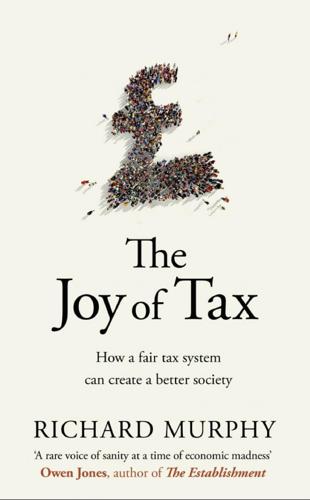
The Joy of Tax
by
Richard Murphy
Published 30 Sep 2015
However, as the discussion of tax competition in Chapter 6 made clear, without care and without appropriately designed delegated authority there is a real risk that those granted the power to tax might be persuaded to use it to promote a form of competition that is, at the very least, unhealthy and even counterproductive. A race to the bottom in tax that can (and may be intended to) deny government the right to withdraw revenues from the economy, can mean that the scale of services supplied must be cut. There is enormous potential for conflict here that has to be avoided. There are obvious ways to overcome this risk by good design that correctly matches policy and tax objectives.
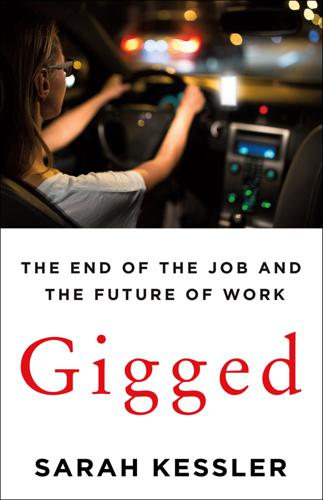
Gigged: The End of the Job and the Future of Work
by
Sarah Kessler
Published 11 Jun 2018
For digital-only tasks like graphic design or writing, however, wages of Bay Area gig workers were lower than those of their peers who found gigs offline. Though they lived in one of the most expensive areas in the United States, online, they were competing with workers everywhere.25 Kristy found the same problem when she experimented with Upwork. “I found a race to the bottom,” she said. “I couldn’t compete with people living in countries where the income was lower, but the education was the same and their experience was the same.” I found the same problem when I tried to make it in the gig economy while reporting for a magazine story. “Furloughed? Try Freelancing on Fiverr,” advised a Yahoo news headline during the government shutdown of 2013.26 Fiverr was so named because, at launch, it asked workers to offer their services for a flat rate of $5 (workers now can set different rates).
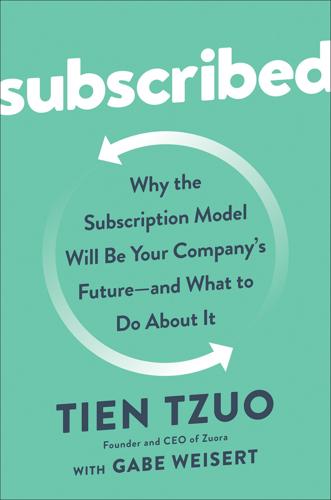
Subscribed: Why the Subscription Model Will Be Your Company's Future - and What to Do About It
by
Tien Tzuo
and
Gabe Weisert
Published 4 Jun 2018
A bunch of the publications are going to die or be forced to find another way to fund themselves.” And, of course, this entire Hunger Games scenario can also quickly implode once the advertising market turns south after a recession. Finally, ads have all sorts of other insidious effects, like turning content providers into clickbait factories. Ads fund the race to the bottom. Ex–Politico president Jim VandeHei calls it the “crap trap.” As Jessica Lessin of The Information says: “I still believe it’s much safer to build a business that doesn’t need any advertising to survive. Doing so forces you to focus 100% on your value to your readers. It’s the only way to make sure that what the news publishers deliver to readers in the future is smarter, more informed and more relevant than in the past.”

Leadership by Algorithm: Who Leads and Who Follows in the AI Era?
by
David de Cremer
Published 25 May 2020
One speaker responded loudly with the comment that AI should definitely tackle humanity’s problems (e.g. climate change, population size, food scarcity and so forth), but its development should not be slowed down by anticipatory thoughts on how it would impact humanity itself. As you can imagine, the debate became suddenly much more heated. Two camps formed relatively quickly. One camp advocated a focus on a race to the bottom to maximize AI abilities as fast as possible (and thus discounting long-term consequences for humanity), whereas the other camp advocated the necessity of social responsibility in favor of maximizing technology employment. Who is right? In my view, both perspectives make sense. On the one hand, we do want to have the best technology and maximize its effectiveness.
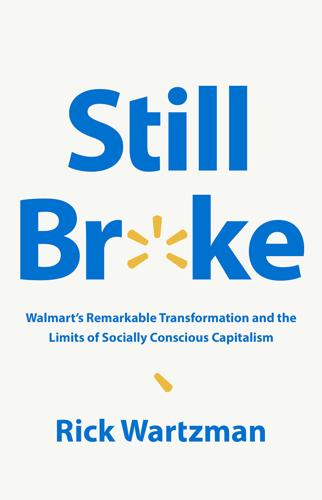
Still Broke: Walmart's Remarkable Transformation and the Limits of Socially Conscious Capitalism
by
Rick Wartzman
Published 15 Nov 2022
Whereas General Motors was widely perceived as having used its perch atop the list of America’s biggest companies to help build the middle class after World War II, with union agreements that bestowed good pay and generous benefits and job security for generations of blue-collar workers, Walmart, now the largest corporation of them all, had come to symbolize something very different: a race-to-the-bottom brand of capitalism that was leaving legions of people struggling to get by. “Low prices are great,” BusinessWeek asserted in a 2003 article. “But Walmart’s dominance creates problems—for suppliers, workers, communities, and even American culture.” In fairness, much of the condemnation leveled at the company was too broad-brush.

If Anyone Builds It, Everyone Dies: Why Superhuman AI Would Kill Us All
by
Eliezer Yudkowsky
and
Nate Soares
Published 15 Sep 2025
We saw that the research field in which we were involved—the one aimed at understanding AIs and having them maybe not go wrong—was progressing much, much slower. The AI companies’ headlong charge toward superhuman AI—their efforts to build it as quickly as possible, before their competitors could do it—started looking to us like a race to the bottom. The industry was careening toward disaster: the sort that would get into textbooks as an example of how not to do engineering—except no one would be left alive to write the analysis. It no longer seemed realistic to us that humanity could engineer and research its way out of catastrophe. Not under conditions like these.
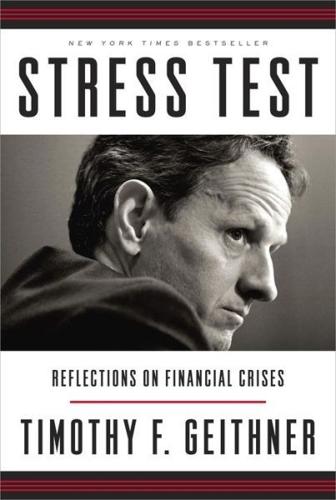
Stress Test: Reflections on Financial Crises
by
Timothy F. Geithner
Published 11 May 2014
We had a dizzying array of regulators, and a political climate in which some of them could pose for official photos with regulation-slashing chain saws. We also had all sorts of regulatory gaps, with nobody responsible for the entire system. And Wall Street, as President Bush later said, had gotten drunk. Financial firms were chasing higher returns through increasingly leveraged and risky trades even though they knew they were racing to the bottom; as Citigroup CEO Charles Prince memorably explained, “as long as the music is playing, you’ve got to get up and dance.” When a top Morgan Stanley executive named Vikram Pandit left the firm in 2005, we had lunch and he passed along the not-so-novel wisdom that the shift from private partnerships to public companies had poisoned the culture of Wall Street, encouraging executives to focus on quarterly profits and the exorbitant stock options that came with them.
…
We just had to focus on what approach was most likely to work, and hope the public would judge us on the results rather than the optics. AT THE start of April, President Obama and I went to London for his first G-20 conference, a high-profile test of the international community’s ability to work together to attack the crisis. During the Depression, nations had turned inward, erecting new trade barriers in a damaging race to the bottom, embracing austerity while global demand withered. We were determined not to repeat those mistakes. Our fortunes were closely tied up with the rest of the world, and it would be tough to turn the U.S. economy around if the global economy continued to contract. Some G-20 nations, particularly Germany and France, wanted the meetings to focus primarily on long-term international regulatory reforms that could help mitigate the next crisis.
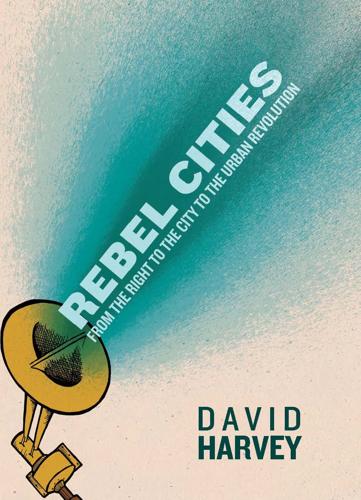
Rebel Cities: From the Right to the City to the Urban Revolution
by
David Harvey
Published 3 Apr 2012
Some of it can b e understood in conventional terms as a search on the p art of mobile capitals (with financial, commercial, and pro duction capital having diffe rent capacities in this regard) to gain a dvantages in the production and appropriation of surplus values by moving around. Trends can indeed be identifi ed that fi t with simple models of a "race to the bottom" in which the cheapest and most easily exploited labor power becomes the guiding beacon for capital mobility and investment decisions. But there is plenty of counterva iling evidence to suggest that this is a gross oversimplification when projected as a monocausal expla n ation of the dynamics of uneven geographical development.

Whiplash: How to Survive Our Faster Future
by
Joi Ito
and
Jeff Howe
Published 6 Dec 2016
As Hill puts it, “Conversations, communities, relationships, and strong emotional bonds are formed through a social form of iterated prisoner’s dilemma.19 When a participant in iterative prisoner’s dilemma has no identity or feels free from the responsibility of his or her actions in social interactions, communities quickly degenerate into a race to the bottom.”20 It is difficult, maybe impossible, to understand the diligently private (read: paranoid), persnickety (read: misanthropic) world from which Bitcoin has emerged without some understanding of a much older milieu—the cloak-and-dagger realm of cryptography. In western Asia and Europe, literacy, and even much of our mathematical knowledge, have been inextricable linked with cryptography since their earliest incarnations.

Makers
by
Chris Anderson
Published 1 Oct 2012
To be sure, many of these smaller manufacturers lost on their merits: their products were no better than imported goods and their costs uncompetitive. But others failed because they lost their distribution channels to the few consumers who still wanted their specialized goods (or just wanted to buy American). The grinding race to the bottom of price competition at the big-box retailers made it increasingly hard to find niche goods. Fast-forward a half century, and two things have changed. First, thanks to desktop fabrication and easy access to manufacturing capacity, anyone with an idea can start a business making real things.

Dataclysm: Who We Are (When We Think No One's Looking)
by
Christian Rudder
Published 8 Sep 2014
The Washington Post captures the shortfall of public interest in just the first word of their coverage: “Hundreds of protesters …” In his Scientific American piece, Lanier proposes that we be compensated for our personal data and let market forces rebalance the privacy/value equation. He proposes that data collectors issue micropayments to users whenever their data is sold. But that expense, like a tax, either will be passed directly back to the consumer or will bring on a race to the bottom, where websites have to find margin wherever they can get it, the way commercial airlines do now. Either way, there’s no net value in it for us. And that’s not to mention the impracticality of making it happen. Pentland’s approach is much more feasible: he calls it his “New Deal on Data.” Ironically enough, it harkens back to Old English Common Law for its principles.
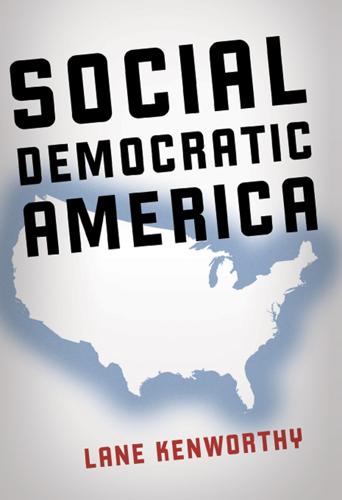
Social Democratic America
by
Lane Kenworthy
Published 3 Jan 2014
Suppose we need, as I suggest in chapter 3, an additional 10 percent of GDP to fund new social programs, expansion of existing ones, and demography-imposed increases in the cost of Social Security and Medicare. Is that feasible? If so, what’s the best way to do it? Let’s begin with feasibility. Is heavy taxation still possible in a world where firms, institutions, and wealthy individuals can move their money anywhere they like? The answer, at least so far, is yes. Globalization has not induced a race to the bottom in taxation. Many rich nations have reduced their top statutory rates, but they’ve offset this by reducing tax exemptions and deductions. Effective tax rates have therefore changed little, and taxes as a share of GDP have not fallen.1 Indeed, the rich nations with big governments are no more likely than others to have large public deficits and debt.
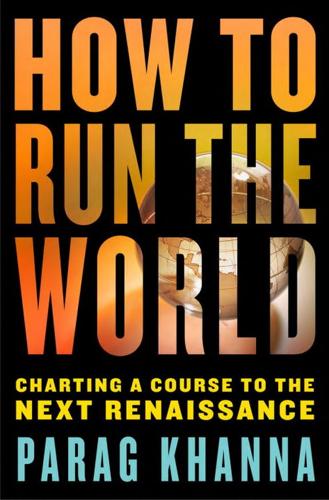
How to Run the World: Charting a Course to the Next Renaissance
by
Parag Khanna
Published 11 Jan 2011
Social Accountability International (SAI), a multi-stakeholder nonprofit, has certified facilities in fifty-seven countries across seventy industries and funds itself through contracts with businesses looking for ways to improve labor conditions. SAI’s certification and codes of conduct do far more for labor rights than empty appeals from the ILO. Rather than “racing to the bottom”—always seeking the cheapest labor—more and more foreign companies are driving the “race to the top,” spreading good management practices, training workers with new skills, and offering better salaries than what is offered domestically. Exporting good businesses is among the smartest diplomatic strategies the West can pursue to create tangible change worldwide.
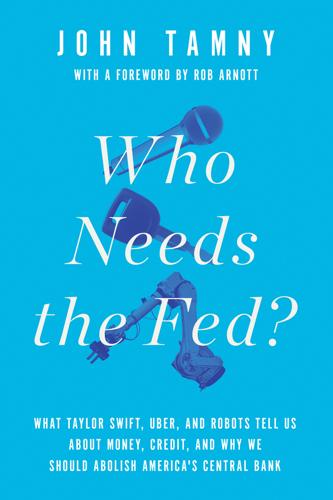
Who Needs the Fed?: What Taylor Swift, Uber, and Robots Tell Us About Money, Credit, and Why We Should Abolish America's Central Bank
by
John Tamny
Published 30 Apr 2016
Thanks to this highly profitable movie franchise, Downey is the world’s highest paid actor, with earnings of $75 million per year.13 As one media account put it, Downey “is a walking, talking multi-billion-dollar business.”14 What might surprise readers it that 2015’s highest paid actor couldn’t even get a movie made when the twenty-first century began. Downey’s addiction to drugs and alcohol led to jail time, rehab, fights in prison, and even a 911 call from a neighbor who found an out-of-sorts Downey asleep in her eleven-year-old child’s bed. Amid his self-inflicted race to the bottom, Downey couldn’t make movies because the costs involved were too steep. Movies are expensive to make and difficult to finance even for the top producers, and Downey’s habits rendered him wholly unreliable. No sane insurance company would write a policy for a production that had him attached.
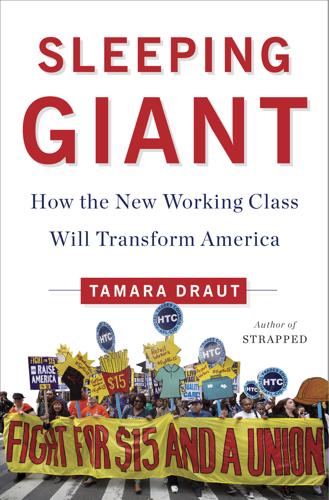
Sleeping Giant: How the New Working Class Will Transform America
by
Tamara Draut
Published 4 Apr 2016
The first Operation Dixie was a failed campaign by the Congress of Industrial Unions to organize workers in the South in the postwar years. It failed largely because of the hardened racial lines of Jim Crow and the prohibitions on strikes set in place under Taft-Hartley. The defeat of Operation Dixie resounds powerfully today, both in terms of the emaciation of the unionized workforce and the race to the bottom engendered by the South’s long-standing animus to anything that smacks of cross-race solidarity. In February 2014, after months of intense organizing and even active support from the company, the United Auto Workers lost the election to unionize Volkswagen’s plant in Chattanooga, Tennessee.
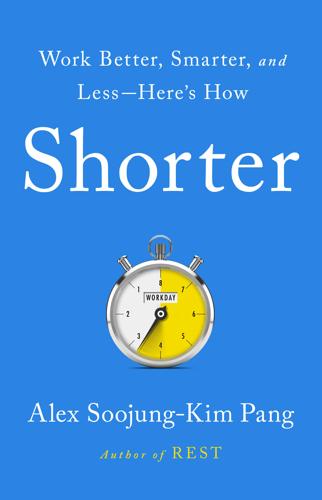
Shorter: Work Better, Smarter, and Less Here's How
by
Alex Soojung-Kim Pang
Published 10 Mar 2020
By early 2016, they had grown to fifty people and added a variety of perks to keep them: gym classes, free breakfast, a wellness coach and personal trainer, even a company-wide vacation to Tenerife during the depths of the Scottish winter. But the slow economic recovery in the United Kingdom, and the uncertainty generated by Brexit and the Scottish referendum, were starting to squeeze the company. If they responded by cutting costs, Pursuit would risk turning into just another call center racing to the bottom. That would lower employee loyalty and create an opening for competitors to start poaching their highest performers. That was becoming a huge concern. “Some larger IT vendors had moved into Glasgow, and because they were new to the city they were offering big salaries to attract talent,” Lorraine says.
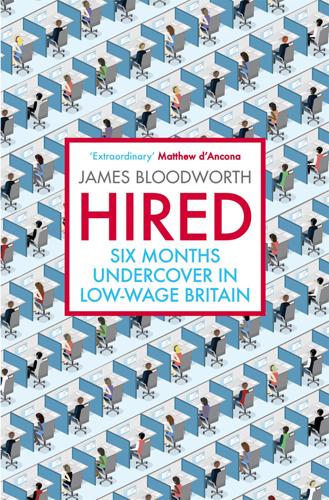
Hired: Six Months Undercover in Low-Wage Britain
by
James Bloodworth
Published 1 Mar 2018
On the completion of each home visit she – for 80 per cent of adult social care workers are female – will charge out of the house, down the drive and into her car, racing off to the next house and the next appointment.14 The company she works for will usually be the one that can do all of this for the local authority at the lowest price. Therefore the most cost-effective company invariably empties the most catheters and changes the most medical pads. Competition between care providers for a slice of the shrinking social care budget has resulted in a race to the bottom: care staff are often paid peanuts and employed on precarious zero-hours contracts, while in domiciliary care, lightning-fast home visits are increasingly the norm. A substandard level of care has been exacerbated by cuts to local authority budgets. This has had a knock-on effect on the employment conditions of care staff and, inevitably, on the vulnerable people they are charged with looking after.

Exoplanets: Hidden Worlds and the Quest for Extraterrestrial Life
by
Donald Goldsmith
Published 9 Sep 2018
This includes a technique called “Doppler tomography,” in which astronomers measure the effects of the planet, as it transits the star, on the individual features of a star’s spectrum. The growing list of KELT stars pays tribute to the work of Latham and many others, whose studies have added a new class of stars to those known to possess planets. Gaudi likes to describe the other approaches, which seek to measure ever-smaller changes in radial velocities, as “a race to the bottom.”20 In 2017, the KELT team announced that one of the hot Jupiters on their short list qualifies as one of the hottest exoplanets now known, with a surface temperature greater than those at which one might naively think that a planet could exist. The star KELT-9, also known as HD 195689, has nearly twice the sun’s surface temperature and 50 times its luminosity.

Fully Automated Luxury Communism
by
Aaron Bastani
Published 10 Jun 2019
The ‘spatial fix’ is what underpins contemporary globalisation, characterised by the global distribution and relocation of production. This was one of the solutions the bourgeoisie adopted to counter rising worker militancy in Europe and North America after the late 1960s, and is the background for contemporary discourses of ‘competitive’ labour markets in a world ‘racing to the bottom’. It is also why more cars are produced in Mexico, Thailand and Brazil than nations which previously dominated the industry such as France, Italy and the United Kingdom. The spatial fix is always only temporary, of course, and has recently re-emerged in the context of rising wages in China.

Dreams of Leaving and Remaining
by
James Meek
Published 5 Mar 2019
We needed to hand them down to our children and our children’s children.’ Nicholls said he’d been able to retire at fifty-seven and live comfortably, without working, on his Cadbury’s pension. He has a caravan in Dorset; he goes fishing; he visits National Trust properties. Shareholder capitalism’s race to the bottom means that the generations of non-graduates who come after him – ‘there’s nothing wrong with someone who hasn’t got the ability to be a thinker’ – face precarious decades of low-wage warehouse work, followed by poverty on the state pension. Nicholls started out as a trainee chef; now his son is one.
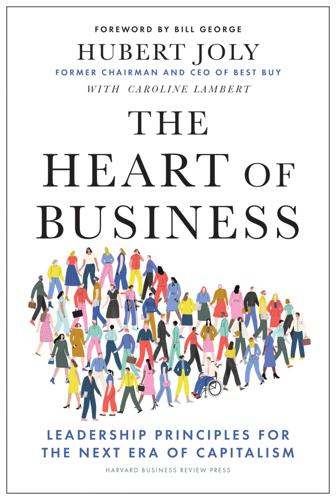
The Heart of Business: Leadership Principles for the Next Era of Capitalism
by
Hubert Joly
Published 14 Jun 2021
—Charles Dickens, A Tale of Two Cities Here is a typical scenario: company struggles; company announces job cuts, layoffs, restructuring; Wall Street applauds; share price goes up as thousands of employees go out the door. We have seen this movie before and heard its soundtrack of fear, anger, and disbelief. Plus, this movie often has sequels, with multiple rounds of restructuring. Turnarounds have come to be viewed as a kind of blood sport, a race to the bottom, a vicious slashing of headcount, spending, and customer service. How can this make any sense? In my view, putting purpose and people at the heart of business, and the practical implications of that model outlined in the previous chapters, are not luxuries reserved for thriving businesses.
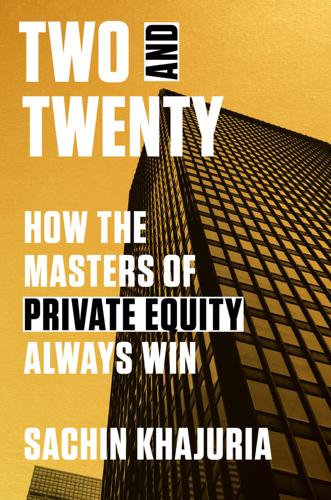
Two and Twenty: How the Masters of Private Equity Always Win
by
Sachin Khajuria
Published 13 Jun 2022
Most credit investors reluctantly accept this imbalance of power because they are thirsty for yield in a macro environment where central banks have kept interest rates low to support the economy. When credit investors compete with each other to buy this debt the Firm is raising for its private equity investments, it’s often a race to the bottom on terms—an auction to the highest bidder who is willing to take the most risk. In contrast, when financing competitors’ deals, the exact opposite is true. Here, the Firm will insist on the strongest package of protections possible as well as other terms, such as an option to be part of the equity ownership in some manner, in some cases.

Age of the City: Why Our Future Will Be Won or Lost Together
by
Ian Goldin
and
Tom Lee-Devlin
Published 21 Jun 2023
First, they need to increase high-skill employment opportunities in the area, either by making it easier to start a new business or by offering incentives such as tax breaks for existing businesses to establish local operations. The latter should be treated with caution, given the potential for a race to the bottom between cities that ends up benefiting only shareholders. A better strategy is to selectively target a few businesses to serve as anchors for the local economy. Second, cities need to bring in the skilled workers that employers are seeking. Investing in universities is a good start, but is often not enough to keep workers around.
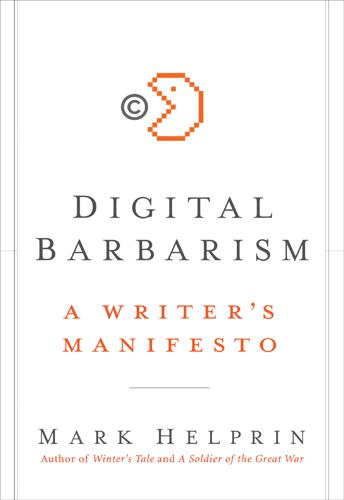
Digital Barbarism: A Writer's Manifesto
by
Mark Helprin
Published 19 Apr 2009
Or, you can make it sensational, appealing to whatever it is that for obvious reasons will immediately turn our attentions from just about anything to violence, threat, insanity, or sex. That is why television’s mainstays are dead bodies, teasingly exposed bosoms, and exploding cars. And so, in “blogging,” as in much else, begins the mad race to the bottom. Blogging’s anonymity makes it the intellectual twin of road rage. But unlike road rage it is not and cannot be subject to law. The only defense against its lowliness is to know it for what it is and call it thus. In the great scheme of things, the reaction to my article is, of course, as unimportant as the article itself.
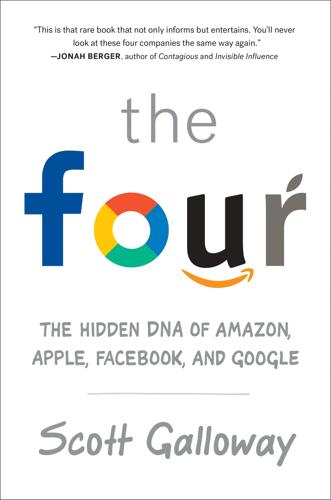
The Four: How Amazon, Apple, Facebook, and Google Divided and Conquered the World
by
Scott Galloway
Published 2 Oct 2017
Today, on the homepage of hm.com one can find a long-sleeved ribbed mock turtleneck dress for just $9.99. For the same price you can also grab a men’s textured fine-knit sweater. That’s cheap, not only in today’s dollars, but in 1962 dollars—a staggering achievement and a testament to a cut-throat race to the bottom. As the shackles came off, the more-for-less big-box monsters created hundreds of billions in wealth. The next thirty years saw what was then the most valuable company and the world’s wealthiest man, Sam Walton, emerge from this format, not to mention our collective view that the consumer now reigned supreme.

Shortchanged: Life and Debt in the Fringe Economy
by
Howard Karger
Published 9 Sep 2005
Lenders with rent-a-bank partnerships often charge higher interest rates, make larger loans, or make repeat loans that violate state laws. Despite warnings from federal bank regulators, FDIC-insured bank involvement in fringe lending may be continuing. In turn, consumer groups have criticized the FDIC for being too lax in ending rent-a-bank arrangements.36 A RACE TO THE BOTTOM A key reason why consumers use payday lenders is to avoid bounced-check fees. In 2003 banks charged $30 billion in ATM, bounced-check, and overdraft fees, accounting for 30% of their operating profit.37 Federal law allows banks to process checks in any order they choose, and some maximize their NSF profits by using a big-to-small processing system.38 For example, if a bank customer writes four checks in one day, many banks will clear the largest check first, even if it was written last.

$2.00 A Day: Living on Almost Nothing in America
by
Kathryn Edin
and
H. Luke Shaefer
Published 31 Aug 2015
Only an employer who is guaranteed a steady stream of desperate job applicants could require a worker to be on call, ready to come in if needed, with no promise of hours. Labor practices such as work loading and on-call shifts are important tools for service sector employers, especially retail chains trying to offer the lowest prices. Simply put, in the face of this race to the bottom, it’s hard for those employers who want to do right by their workers to stay in the game. Recent research has found that when a new Walmart opens in a community, it causes an overall loss in jobs in that community because other stores—including some that might pay better or offer stable hours—can’t compete.
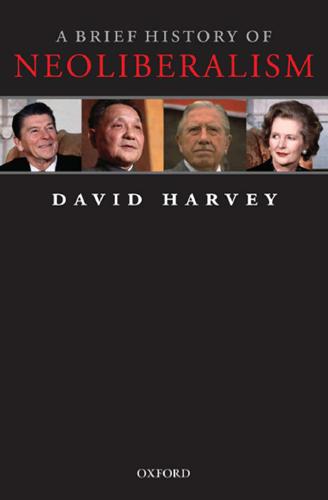
A Brief History of Neoliberalism
by
David Harvey
Published 2 Jan 1995
Individual security is therefore a matter of individual choice tied to the affordability of financial products embedded in risky financial markets. The second prong of attack entails transformations in the spatial and temporal co-ordinates of the labour market. While too much can be made of the ‘race to the bottom’ to find the cheapest and most docile labour supplies, the geographical mobility of capital permits it to dominate a global labour force whose own geographical mobility is constrained. Captive labour forces abound because immigration is restricted. These barriers can be evaded only by illegal immigration (which creates an easily exploitable labour force) or through short-term contracts that permit, for example, Mexican labourers to work in Californian agribusiness only to be shamelessly shipped back to Mexico when they get sick and even die from the pesticides to which they are exposed.
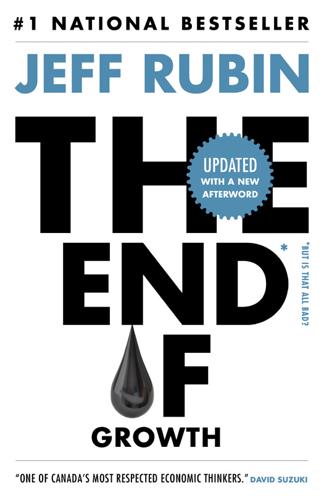
The End of Growth
by
Jeff Rubin
Published 2 Sep 2013
As I mentioned earlier, by flooding the system with cash, the Federal Reserve’s quantitative easing program is also working to devalue the US dollar. A cheaper dollar is both good for US manufacturing, making goods cheaper at home and abroad, and punitive to foreign producers trying to crack the US market. In a job-hungry world, even free market–loving America is becoming more protectionist. Globalization’s so-called race to the bottom to capitalize on the lowest wage rate anywhere in the world is about to hit some big roadblocks in the static economy just ahead. The contours of our economy are already changing, at least in North America. The lost manufacturing jobs of yesteryear are coming home. Over the next decade, manufacturing will account for a larger share of employment and a larger percentage of GDP.
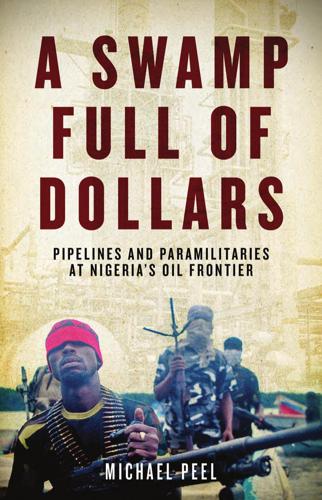
A Swamp Full of Dollars: Pipelines and Paramilitaries at Nigeria's Oil Frontier
by
Michael Peel
Published 1 Jan 2009
It all brings to mind the comment a journalist colleague of mine made to me after discovering that one of the collapsed US energy company Enron’s many alleged misdeeds was to fake a sale of power plants mounted on barges off Nigeria’s coast. Enron and Nigeria, he noted, seemed two particularly well-matched business partners. Not many anti-corruption campaigners think the arrival of the world’s new economic powers in the Gulf of Guinea will help improve behaviour. Instead, activists talk gloomily of their fears of a ‘race to the bottom’, as the Western multinationals and their new challengers compete ever more aggressively for business. When Nigeria auctioned off 25 exploration blocks in 2006 – many to companies from Asian countries keen to expand their energy resources – the Financial Times reported widespread allegations of ‘political favouritism and back-room dealing’.
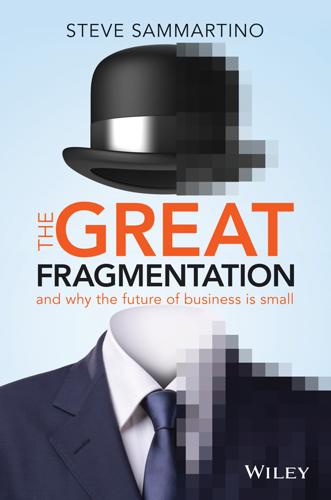
The Great Fragmentation: And Why the Future of All Business Is Small
by
Steve Sammartino
Published 25 Jun 2014
Retail was once one of the most simple business models — find a geography, buy a product, sell at margin — while it’s now one of the most complex. What was once a mum-and-pop business possibility is quickly becoming a sophisticated, technology-driven, multi-channel mind warp. It’s hardest for the retailers selling what everyone else sells. Selling well-known, widely-distributed products online is simply a race to the bottom, a price war that can only be won by the most efficient operator. It’s quickly turning into a game of logistics more than it is about customer engagement. The world of today is an infinite store, where everything is available at the best price possible to anyone, anywhere. The retail revolution Retail is going through a revolution, but unlike many of the other industries being impacted by fragmented technology, it’s not the first one retail has been through.
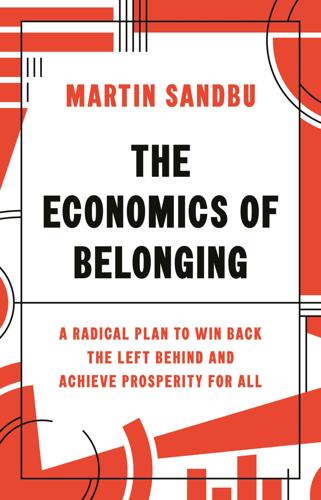
The Economics of Belonging: A Radical Plan to Win Back the Left Behind and Achieve Prosperity for All
by
Martin Sandbu
Published 15 Jun 2020
That risks holding back long-term productivity growth and making adjustment harder when it finally cannot be postponed anymore—which always happens in the end since the cost disadvantage of obsolete productive structures increases over time. If subsidies are partially financed by local governments, they can sometimes have an even worse effect than doing nothing. When local governments compete for investment from large companies, it can lead to a race to the bottom that aggravates the extraction of value from the local community to company owners situated elsewhere, and shrink the funds available for local public goods, including those that offer the greatest promise for increasing productivity in the area.15 The scramble for the privilege to host a new Amazon headquarters was a case in point: 238 cities competed for the dubious honour, often promising the company big subsidies.16 The race made some of the world’s top economists so worried that they signed a petition calling for a “non-aggression pact” between the competing towns.17 Finally, the reversal strategy also goes squarely against the principle of protecting workers rather than jobs and easing the job-to-job mobility that is instrumental in creating higher-productivity and ultimately better-paid employment (as discussed in chapter 6).18 * * * 2.
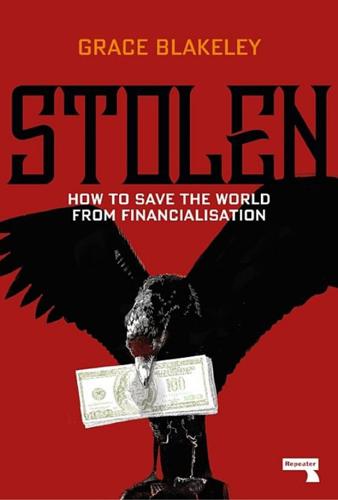
Stolen: How to Save the World From Financialisation
by
Grace Blakeley
Published 9 Sep 2019
These dynamics might not be so obvious when there is plenty to go around, but during times of crisis and scarcity, the Darwinian nature of capitalist competition becomes obvious. When the options are compete or die, nothing is too valuable to be sacrificed on the altar of private profit, not even the planet. Firms will undermine regulations, lobby governments for special treatment, or leave one jurisdiction for another, setting off a global race to the bottom on wages, tax, and regulation, and destroying the planet in the process. Today, in the absence of the pre-2008 debt bubble, economic and political transactions have become a zero-sum game. Inequality may have risen during the 1980s, but the majority of people were also getting better off too — mainly through the expansion of access to credit.
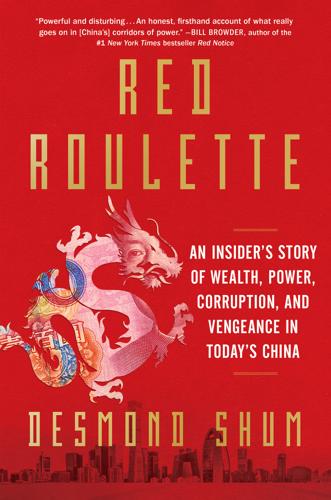
Red Roulette: An Insider's Story of Wealth, Power, Corruption, and Vengeance in Today's China
by
Desmond Shum
Published 6 Sep 2021
At a partially completed power plant, government officials drank so much with us that one participant tumbled facedown into a ditch. Whitney was keen to invest, figuring that her roots in Shandong would ensure success. But I noted that lots of places were developing container ports and power plants. Competition was cutthroat and margins were slim; I figured it would be a race to the bottom, so I convinced her to hold off. Back in Beijing we’d been trying to secure a piece of land to build high-end housing. In 2001, Whitney had started cultivating a man named Sun Zhengcai, who was then Party secretary of the Shunyi District in the northeast corner of the capital. Like Whitney, Sun hailed from the Shandong countryside.

Listen, Liberal: Or, What Ever Happened to the Party of the People?
by
Thomas Frank
Published 15 Mar 2016
Organized labor was the great force of the Roosevelt years, but it is atomized labor, cheered for and pushed by Democrats like Plouffe and Lehane, that will forever shape American memories of the Obama years. Of the companies that are poised to profit on this coming war of all against all, Uber is the most famous; as I have mentioned, it invites each of us to spend our spare time as hacks for hire. But with the magic of innovation, virtually any field can join the race to the bottom. There’s LawTrades, a sort of Uber for lawyers, and HouseCall, an Uber for “home service professionals.” Everyone’s favorite is something called TaskRabbit, which allows people to farm out odd jobs to random day laborers, whom the app encourages you to imagine as cute, harmless bunnies. “Crowdworking” is the most startling variation on the theme, a scheme that allows anyone, anywhere to perform tiny digital tasks in exchange for extremely low pay.

The Socialist Manifesto: The Case for Radical Politics in an Era of Extreme Inequality
by
Bhaskar Sunkara
Published 1 Feb 2019
(For all sectors, legislation dictates the required workweek cannot exceed thirty-five hours.)13 There is still market competition, and firms still fail, but the grow-or-die imperative doesn’t apply when your enterprise’s goal is no longer to maximize total profits but rather to maximize profit-per-worker. And instead of a race to the bottom, there’s pressure to make sure janitorial and other “dirty jobs” are well compensated. In time, many of these tasks will be automated. People used to fear that machines would bring about mass unemployment, but now you and most others look forward to the social impact of technological innovations.14 AT THIS POINT, you’ve been bottling sauce for twenty years; you’ve seen the firm adapt to new consumer preferences and maintain a steady market share for much of that time.

Brave New Work: Are You Ready to Reinvent Your Organization?
by
Aaron Dignan
Published 1 Feb 2019
STRATEGY How we plan and prioritize; the process of identifying critical factors or challenges and the means to overcome them. Ev Williams thinks the internet is broken. Twitter, the site he cofounded, is a clubhouse for the cognoscenti but also teeming with trolls, misogyny, and mindless regurgitation. Facebook is awash in clickbait, memes, and falsehoods. And digital media has become a race to the bottom, where brainless and sensationalist content earns the lion’s share of attention. Williams’s answer to all this is Medium, a social publishing platform he founded to save us from ourselves. When it launched in 2012, he pulled no punches explaining why it mattered. “The current system causes increasing amounts of misinformation . . . and pressure to put out more content more cheaply—depth, originality, or quality be damned.
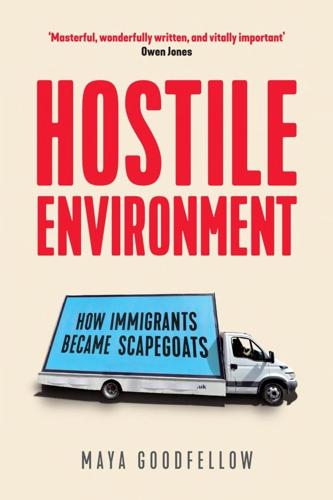
Hostile Environment: How Immigrants Became Scapegoats
by
Maya Goodfellow
Published 5 Nov 2019
This book is essential to understanding the reactionary political upheavals which have swept the West’ Owen Jones, author of Chavs ‘This is an essential study into the toxic discussion around immigration in the UK. It is as brilliant as it is necessary’ Nish Kumar ‘A book to cut through the noise of toxic politics, the race to the bottom to demonise immigrants, and the ahistoric idea that a hostile environment is anything new. This book reveals the nuts and bolts of Britain’s real immigration problem – the counter-productivity of its policies and the failure of its leaders. So important’ Afua Hirsch, author of Brit(ish): On Race, Identity and Belonging ‘This book is a must-read if you are thinking of going into politics.
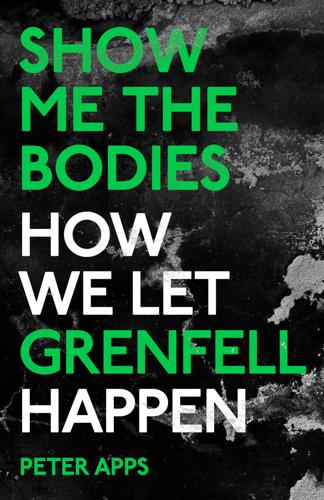
Show Me the Bodies: How We Let Grenfell Happen
by
Peter Apps
Published 10 Nov 2022
It also said the firm would be ‘challenging the norms that are associated with non-combustible’.20 The government, meanwhile, hired an independent expert Dame Judith Hackitt, to review building regulations and make recommendations for change. But her review, published in spring 2018, was remarkably kind to the government. While she said there had been ‘a race to the bottom’ in the construction industry, she adopted without question the official position that combustible cladding was effectively already banned by the official guidance and that the only reason it was on buildings was non-compliance. As a result she did not recommend substantive changes to the rules, and instead said new processes should be introduced to more effectively share information between the teams involved in a construction job, and determine more clearly at each stage who was responsible for safety.

The Thinking Machine: Jensen Huang, Nvidia, and the World's Most Coveted Microchip
by
Stephen Witt
Published 8 Apr 2025
The perception of CUDA as a money pit was not obviously wrong—and Huang had killed off unprofitable business lines before, sometimes after spending years pursuing them. In the early 2000s, Nvidia had, for a time, made “northbridge” chips, which acted as a memory controller on the motherboard. After pursuing this market for several cycles, however, Huang realized he was in a race to the bottom with Intel. He scuttled the initiative and informed employees that he’d made a mistake. And while he was developing CUDA, Huang also invested in the graphics market for tablets and mobile phones. (In fact, in interviews from the early 2010s, Huang talks more about mobile phones than he does about supercomputing.)
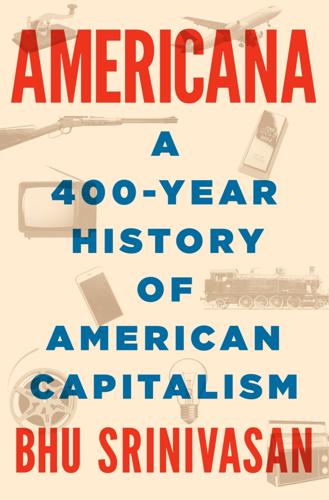
Americana: A 400-Year History of American Capitalism
by
Bhu Srinivasan
Published 25 Sep 2017
The deflationary economy of 1893 and onward saw major industries buckle under the tremendous pressure of their debts. A large percentage of the railroad mileage in the United States found itself in receivership. Operators in commodity businesses dealt with one another with endless price competition—a cutthroat race to the bottom. Gentlemen’s agreements, otherwise known as price fixing, did not hold up under the pressures and risks of insolvency. In addition, the Sherman Antitrust Act prohibited competitors from most types of cooperative behavior that would have maintained pricing power. The act was passed weeks before the McKinley tariff bill in 1890.
…
Andrew Carnegie, unperturbed by Federal Steel, remarked that his new rival’s specialty was “manufacturing stock certificates” rather than expertise in the actual production of steel. By 1901 J. P. Morgan had come to his own conclusion. Unlike Morgan or anyone else, Carnegie knew the economics of steel intimately, even if he was physically absent. He had the full force of conviction that in any pricing race to the bottom, Carnegie Steel would be victorious. With over $100 million structured by Morgan for the Federal Steel consolidation, the risk of having Carnegie operating independently was significant. It would be impossible to control pricing or production with the largest producer out of the fold. To compound matters, Carnegie was an enigmatic financial force with few boundaries.

Americana
by
Bhu Srinivasan
The deflationary economy of 1893 and onward saw major industries buckle under the tremendous pressure of their debts. A large percentage of the railroad mileage in the United States found itself in receivership. Operators in commodity businesses dealt with one another with endless price competition—a cutthroat race to the bottom. Gentlemen’s agreements, otherwise known as price fixing, did not hold up under the pressures and risks of insolvency. In addition, the Sherman Antitrust Act prohibited competitors from most types of cooperative behavior that would have maintained pricing power. The act was passed weeks before the McKinley tariff bill in 1890.
…
Andrew Carnegie, unperturbed by Federal Steel, remarked that his new rival’s specialty was “manufacturing stock certificates” rather than expertise in the actual production of steel. By 1901 J. P. Morgan had come to his own conclusion. Unlike Morgan or anyone else, Carnegie knew the economics of steel intimately, even if he was physically absent. He had the full force of conviction that in any pricing race to the bottom, Carnegie Steel would be victorious. With over $100 million structured by Morgan for the Federal Steel consolidation, the risk of having Carnegie operating independently was significant. It would be impossible to control pricing or production with the largest producer out of the fold. To compound matters, Carnegie was an enigmatic financial force with few boundaries.
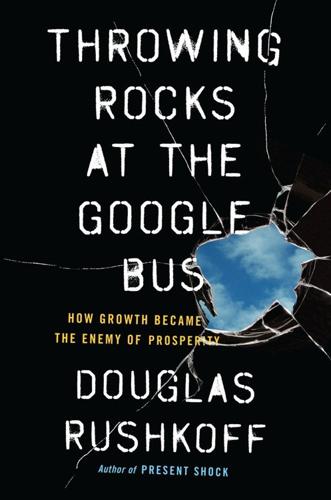
Throwing Rocks at the Google Bus: How Growth Became the Enemy of Prosperity
by
Douglas Rushkoff
Published 1 Mar 2016
Managing a fixed supply of minerals is different from managing a replenishing supply of timber. Finally, size and place matter. It’s easier for a town to manage its water supply than for the planet to establish water-sharing rules.78 In short, a commons must be bound by people, place, and rules. Contrary to prevailing wisdom, it’s not an anything-goes race to the bottom. It is simply a recognition of boundaries and limits. It’s pooled, multifaceted investment in pursuit of sustainable production. It is also an affront to the limitless expansion sought by pure capital. If anything, the notion of a commons’ becoming “enclosed” by privatization is a misnomer: privatizing a commons breaks the boundaries that protected its land and labor from pure market forces.
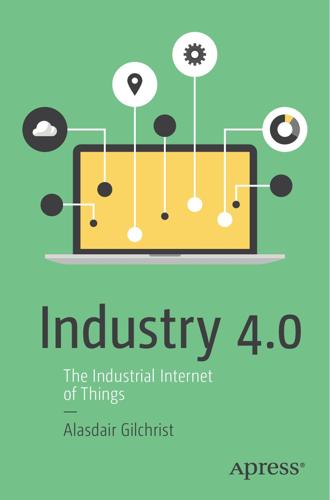
Industry 4.0: The Industrial Internet of Things
by
Alasdair Gilchrist
Published 27 Jun 2016
However, these strategies rarely worked for long, as the competitor having a low barrier to entry simply followed successful differentiation tactics. For example, competitors could match quantity and up their lot size to match or do better. Worse, if the price was the differentiator, the competitor could lower their prices, which results in what is termed a race to the bottom. Selling Light, Not Light Bulbs What the customer ultimately wants the goods for is to provide a service (provide air transportation in the previous example), but it could also be to produce light in the case of a light bulb. This got manufacturers looking at the problem from a different perspective; what if instead of selling light bulbs, you sold light?

Ground Control: Fear and Happiness in the Twenty First Century City
by
Anna Minton
Published 24 Jun 2009
As the amount of social housing continues to shrink, the property companies entrench their hold over the area. In a policy paper by Shelter published in 2008 called ‘Private Renting for Public Good’, the housing charity describes the impact of introducing the market into housing for the poorest in society. ‘As demand grows there is a race to the bottom,’ writes Adam Sampson, director of Shelter, describing how those who suffer most are those least able to compete financially, who are ‘in no position to exercise choice in the market, which leaves them open to exploitation and to living in the worst conditions’.3 In Edinburgh I heard what this meant when a support worker at the West Pilton Child and Families Centre told me that some landlords fail to provide even basic furniture like beds.
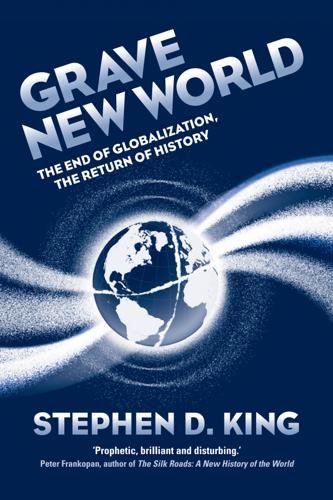
Grave New World: The End of Globalization, the Return of History
by
Stephen D. King
Published 22 May 2017
Being competitive globally threatens domestic labour standards, particularly in a world in which mobile capital hopes to seek out the cheapest pools of labour (ironically, TPP included an attempt to provide common labour standards). Bailing out banks for their far-flung misadventures leads only to austerity at home. Attempts to attract global capital can result in national tax authorities indulging in a corporation tax ‘race to the bottom’: indeed, corporate tax rates have plunged since the early 1980s.6 Accepting the strictures of the World Trade Organization may only preserve a decidedly skewed playing field, preventing today’s poor countries from using techniques employed by others in the past to foster economic progress.
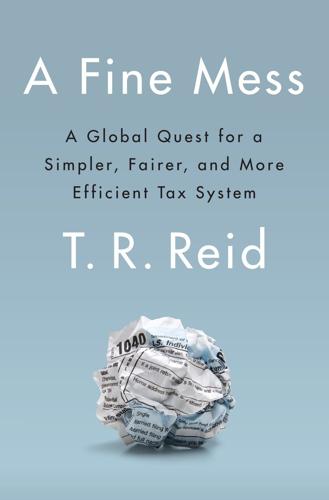
A Fine Mess
by
T. R. Reid
Published 13 Mar 2017
But then Switzerland, with its 8.5% rate, would still be a lure for chief financial officers looking to reduce the tax bill—not to mention Bermuda, New Zealand, and other countries where the corporate income tax rate is zero. And if the United States did agree to a large cut in the rate, other countries might well cut their tax rates even more sharply. This is a race to the bottom that nobody can really win. How low does the tax rate have to go to stop corporations from devising intricate mechanisms to avoid paying? Great Britain, which reduced its corporate tax rate half a dozen times in the twenty-first century, now taxes profits at 20%. But that didn’t stop Starbucks from creating an intricate multinational network to avoid tax in Britain.

The Financial Crisis and the Free Market Cure: Why Pure Capitalism Is the World Economy's Only Hope
by
John A. Allison
Published 20 Sep 2012
As Freddie and Fannie moved up the risk scale, however, they loosened their underwriting standards to meet the affordable-housing (that is, subprime) goals established by Congress. The whole origination market relaxed its standards to compete with Freddie and Fannie. Driven by Freddie and Fannie, the private originators created a competitive race to the bottom as the bubble continued (funded by the Federal Reserve) and it appeared that no matter how low the standards, home loans would not default. Of course, Standard & Poor’s (S&P), Moody’s, and Fitch played a major role in this process. They dramatically overrated bonds backed by high-risk mortgages.

Jony Ive: The Genius Behind Apple's Greatest Products
by
Leander Kahney
Published 14 Nov 2013
Jobs aimed at making innovative products again, but he didn’t want to compete in the broader market for personal computers, which was dominated by companies making generic machines for Microsoft’s Windows operating system. These companies competed on price, not features or ease of use. Jobs figured theirs was a race to the bottom. Instead, he argued, there was no reason that well-designed, well-made computers couldn’t command the same market share and margins as a luxury automobile. A BMW might get you to where you are going in the same way as a Chevy that costs half the price, but there will always be those who will pay for the better ride in the sexier car.

The Post-American World: Release 2.0
by
Fareed Zakaria
Published 1 Jan 2008
American rates have not gone up; others have come down. Germany, for example, long a staunch believer in its high-taxation system, cut its rates (starting in 2008) in response to moves by countries to its east, like Slovakia and Austria. This kind of competition among industrialized countries is now widespread. It is not a race to the bottom—Scandinavian countries have high taxes, good services, and strong growth—but a quest for growth. American regulations used to be more flexible and market friendly than all others. That’s no longer true. London’s financial system was overhauled in 2001, with a single entity replacing a confusing mishmash of regulators, one reason that London’s financial sector now beats out New York’s on some measures.

Frugal Innovation: How to Do Better With Less
by
Jaideep Prabhu Navi Radjou
Published 15 Feb 2015
Rather, we invest in innovative technologies like Water<Less and processes like Wellthread that can be applied across multiple product lines, making sustainability a core design principle for all our products. We want to gradually build a rich design-for-sustainability toolkit that we would share with our suppliers, and even our competitors. The hypercompetitive apparel sector is known for its race to the bottom. We want to initiate a race to the top by uplifting the sustainability standards of the entire industry. As well as saving on production costs, Levi Strauss’s sustainably designed products are generating greater customer goodwill and boosting employee morale. Employees in its stores – especially those in their 20s and 30s – rave about the Water<Less, Waste<Less and Wellthread products, which they find cool.

The Age of Stagnation: Why Perpetual Growth Is Unattainable and the Global Economy Is in Peril
by
Satyajit Das
Published 9 Feb 2016
There was reluctance to suspend production to avoid losses. But the fundamental causes are more complex. In a globalized world, businesses seek out competitively priced raw materials, labor, and locations, to lower costs, enhance profitability, and offer reduced prices to consumers. Production migrates to emerging markets. There is a race to the bottom in costs and working conditions, as manufacturers compete for the business of foreign purchasers. Lower costs come primarily from lower wages. In Bangladesh, the minimum wage is US$38 a month, with typical take-home pay of around US$65, among the lowest in the world. Benefits such as leave, retirement, or healthcare are minimal, if they exist at all.

The Future of the Brain: Essays by the World's Leading Neuroscientists
by
Gary Marcus
and
Jeremy Freeman
Published 1 Nov 2014
This is not the case for our motes: both electrodes are on board the tiny device and are placed very close together. This makes it very hard to measure the tiny electrical changes that arise across these electrodes. To some extent, the tiny electronics can be made more sensitive by pumping in more power. This creates a race to the bottom: smaller motes capture less power but need more power to record the tiny signals. Somewhere around a 50 µm diameter, our calculations show you cannot deliver enough power to power the sensor electronics. The second challenge involves simultaneous gathering and distinguishing information from multiple sensing sites.
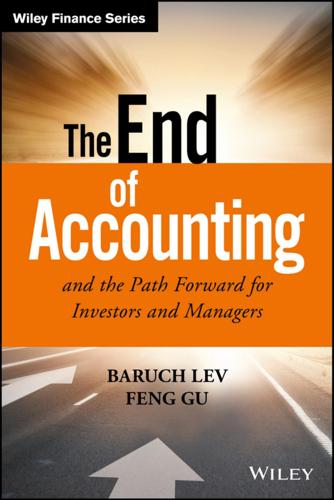
The End of Accounting and the Path Forward for Investors and Managers (Wiley Finance)
by
Feng Gu
Published 26 Jun 2016
This, along with our first proposal to avoid the valuation in financial reports of nontraded assets/liabilities, will go a long way to restore the reliability of financial information.30 And now for our third and last proposal. III. MITIGATE ACCOUNTING COMPLEXITY Here is the Lev-Gu law of the dynamics of regulation: Regulatory systems strive to be even more complex than the structures or institutions they were charged to regulate. A race to the bottom, so to speak. If you doubt the universality of our law, think of the 1,990 pages of the original 2009 Affordable Health Care Act (Obamacare), ballooning to about 20,000 pages four years later,31 or the Dodd–Frank Wall Street Reform and Consumer Protection Act, originally at 848 pages, and mushrooming to 13,789 pages as of July 2013 (and still going strong—the length, we mean).32 And not only in America: No regulatory agency rivals the European Union in scope, intrusion, and complexity of regulation.
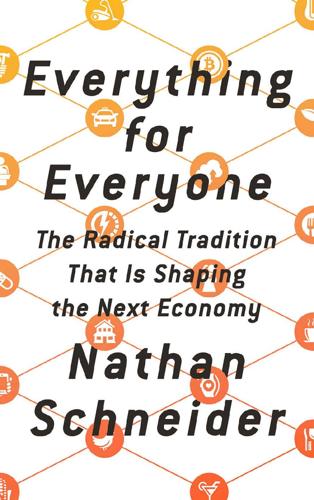
Everything for Everyone: The Radical Tradition That Is Shaping the Next Economy
by
Nathan Schneider
Published 10 Sep 2018
Some of the big, older co-ops have even started displaying their cooperative identity again, as something to be claimed rather than hidden. Whether they admit it or not, they’ve each turned to democracy out of need. Economist Brent Hueth finds that cooperatives arise most often when there are “missing markets,” when the reigning businesses fail to serve an unmet demand or utilize latent supply.13 While coffee companies ran a race to the bottom in environmental and labor practices, co-ops engineered a fair-trade movement that went the other way, from the worker-owned roaster Equal Exchange to consumer-owned grocery stores and countless grower co-ops around the world. When competing banks needed to collaborate with each other more reliably, they formed Visa and the SWIFT network as cooperatives.

Who Is Rich?
by
Matthew Klam
Published 3 Jul 2017
Then she told me about some old men who ran the company, who she’d bumped into in the halls, who’d grabbed and hugged her and asked where she’d been all these years. The channel those guys started in the mid-eighties had been a place for beautiful nature documentaries, flora and fauna, with a stress on cinematography, shows about world history and anthropology. For years now, the channel had been in a race to the bottom. Then she gloated about her lunch meeting with Karen Crickstein, and all the old friends she’d heard about, former staff EPs and VPs who’d screwed up, aged out, or got fired, or who’d put out their own shingle and were hanging on, hoping for the big comeback. I listened to them eat. Everything would go back to the way it was, only worse, because I’d given up.
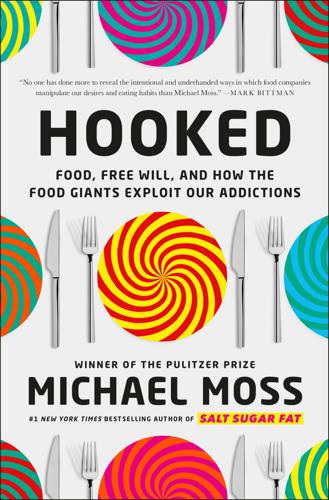
Hooked: Food, Free Will, and How the Food Giants Exploit Our Addictions
by
Michael Moss
Published 2 Mar 2021
Something else, and something pretty extraordinary, had to be behind all that. * * * — I came to the question of food and addiction inadvertently with the 2013 publication of my book Salt Sugar Fat. In it, I argued that grocery manufacturers were competing with fast-food chains in a race to the bottom that rewarded profits over health. Over the past four decades, salt, sugar, and fat had enabled the industries to engineer products that were immensely alluring. Brilliant marketing campaigns pushed the emotional buttons that convinced us to eat when we weren’t even hungry. Yet the book tried to end on a hopeful note.
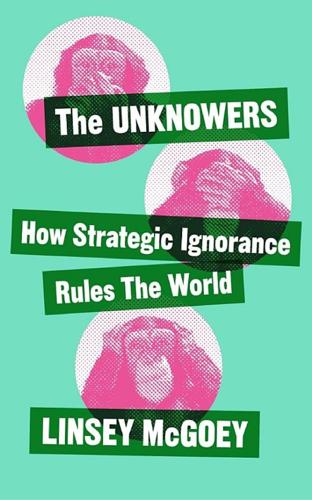
The Unknowers: How Strategic Ignorance Rules the World
by
Linsey McGoey
Published 14 Sep 2019
But an important aspect of Mandeville’s work is ignored today: his insistence that private enterprise is only beneficial ‘When it’s by Justice lopt and bound.’26 From the 1960s on, Hayek, Stigler and other economists’ disdain for government regulation has won the ideological battle in mainstream economics theory, helping to entrench the bizarre prevalence across the political spectrum today of regulators who disdain the very idea of regulation, and who have lobbied to gut important watchdog agencies of much-needed public funding.27 As one economist put it, in ‘deliberately creating a regulatory race to the bottom Stigler and the neoclassical economists created a self-fulfilling prophecy of regulatory failure.’28 The following chapters provide dispiriting glimpses of what happens when regulations are undermined – but also hopeful portraits too of regulatory heroes who are trying to construct new dams, who are trying to halt an anti-government deluge from entirely sweeping away democratic checks and balances achieved in the past.

SEDATED: How Modern Capitalism Created Our Mental Health Crisis
by
James. Davies
Published 15 Nov 2021
This arrangement has effectively created a market within which different national agencies compete with each other for lucrative licensing contracts. The competitive environment in which regulatory agencies now operate has been shown to incentivise light-touch regulation – if your regulatory process is too strict, you are likely to lose out on licensing fees to a more lenient competitor. Research has shown that this regulatory ‘race to the bottom’ favours industry interests over those of patients.20 What happens now that the UK has left the EU remains unclear, but with Boris Johnson’s government allegedly pushing for further deregulation,21 it is unlikely that standards will improve. Five months after the Health Select Committee’s report was published, exposing many of the problems with the MHRA outlined above, a headline appeared in the British Medical Journal: ‘UK government fails to tackle weaknesses in drug industry’.22 This referred to the government’s response to the Health Select Committee’s report, which was simply, as Hinchliffe put it, ‘miserable on all our key recommendations’.
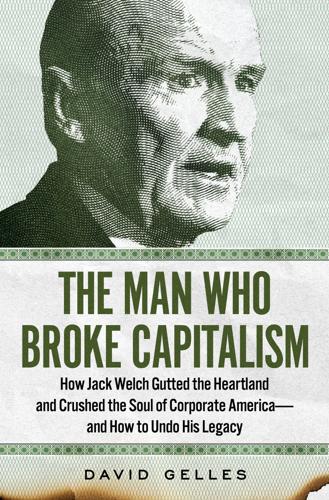
The Man Who Broke Capitalism: How Jack Welch Gutted the Heartland and Crushed the Soul of Corporate America—and How to Undo His Legacy
by
David Gelles
Published 30 May 2022
When outsourcing didn’t accomplish his goals, Welch turned to offshoring. He memorably said that “ideally, you’d have every plant you own on a barge to move with currencies and changes in the economy.” That way, Welch imagined, GE factories could move around the world, chasing favorable exchange rates, tax breaks, incentives, and low wages in a seaborne race to the bottom. This was the Platonic ideal of a free market enterprise to Welch—stateless, beholden to no community, and able to hire labor in a completely opportunistic way. For the Golden Age CEOs who cared so much about their communities, it would have been a dystopian nightmare. To Welch, it was something to strive for.

An Olive Grove in Ends
by
Moses McKenzie
Published 31 May 2022
I shrugged, and climbed into the low branches of a tree close to a pond. Cuba picked fallen twigs from the base and threw them as far as he could; they broke the surface of the water and floated idly. ‘Only if you can catch dem first.’ We looked at each other, the fire in our eyes ablaze like jasper stones, then we raced to the bottom of the garden and through the cast-iron gate at its foot. We spent the entire afternoon chasing the shadows of those white horses, but we didn’t catch the swish of a tail, nor the print of a hoof. We returned to the house-atop-the-hill downcast and defeated. I found my place in the tree again, and Cuba took up the twigs.

Code Dependent: Living in the Shadow of AI
by
Madhumita Murgia
Published 20 Mar 2024
The foundation would provide English language and IT classes to displaced families while the company would then employ them as freelance AI data workers. The workers at Iva’s start-up are all displaced migrants, but the clients it serves are sophisticated Western technology companies, who usually choose data annotation services on the basis of most favourable costs. ‘It’s a race to the bottom,’ she tells me, referring to the pressure to provide data annotation services as cheaply as possible. ‘So it’s a struggle to explain why our impact is an important part of the business.’ Since HITL’s inception, Iva has built out an expanded network of partner organizations around the world to help match clients who need their algorithm data-labelled, with migrants, refugees and victims of war in need of work.

Enshittification: Why Everything Suddenly Got Worse and What to Do About It
by
Cory Doctorow
Published 6 Oct 2025
(When I studied for my US citizenship exam, I was required to answer a skill-testing question about this, explaining the meaning of the tortuous syntax of the Tenth Amendment: “The powers not delegated to the United States by the Constitution, nor prohibited by it to the States, are reserved to the States respectively, or to the people.”) The twenty-seven member states that make up the EU have a lot of autonomy, for good and bad. Part of that autonomy is broad leeway in how their tax policies are structured. Several EU nations have spent decades locked in a race to the bottom in the hopes of becoming the EU’s top tax haven. EU law generally lets a company pay taxes in its home country, no matter how low those taxes might be. So, for example, Amazon EU pretends that it is based in the infinitesimal and wildly corrupt Grand Duchy of Luxembourg, a flyspeck nation claiming 672,000 residents and 41,000 companies.

Engineering Security
by
Peter Gutmann
There have even been proposals for a kind of slidingwindow approach to certificate value in which, as the inevitable race to the bottom cheapens the effective value of established classes of certificates, they’re regarded as less and less effective by the software that uses them (for example browsers would no longer display a padlock for them), and the sliding window advances to the next generation of certificates until eventually the cycle repeats. Figure 37: EV certificate issued to RFC 1918 address The starting shots for a repeat of the original CAs’ race to the bottom for EV certificates have already been fired, with EV certificates issued to phantom organisations represented by nothing more than a bought-on-the-spot business license, or, as Figure 37 shows, to RFC 1918 private addresses in violation of the CA’s EV-certificate issuing policy [529].
…
Markatos, Proceedings of the 11th International Information Security Conference (ISC’08), Springer-Verlag LNCS No.5222, September 2008, p.146. [516] “Latest Facebook Ad Quiz Scam Will Cost You $20 A Week”, Nick O’Neill, 28 May 2009, http://www.allfacebook.com/2009/05/facebook-quizscam/. [517] “Phishing Social Networking Sites”, ‘RSnake’, 8 May 2007, http://ha.ckers.org/blog/20070508/phishing-social-networkingsites/. [518] “Cybercriminals Now Using Public Social Networks to Give Command and Control Orders to Banking Trojans”, RSA FraudAction Research Lab, 19 July 2010, http://rsa.com/blog/blog_entry.aspx?id=1684. [519] “Facebook Developers And Ad Networks Participating In Race To The Bottom”, Nick O’Neill, 5 June 2009, http://www.allfacebook.com/2009/06/facebook-developers-and-ad-networks-participating-inrace-to-the-bottom/. [520] “Information Revelation and Privacy in Online Social Networks (The Facebook case)”, Ralph Gross and Alessandro Acquisti, Proceedings of the workshop on Privacy in the Electronic Society, November 2005, p.71. [521] “Strategies and Struggles with Privacy in an Online Social Networking Community”, Katherine Strater and Heather Richter Lipford, Proceedings of the 22nd British HCI Group Annual Conference on People and Computers: Culture, Creativity, Interaction (BCS-HCI’08), September 2008, p.111. 230 Psychology [522] “Friendster and Publicly Articulated Social Networks”, Danah Boyd, Proceedings of the 22nd Conference on Human Factors in Computing Systems (CHI’04), April 2004, p.1279. [523] “Friends Only: Examining a Privacy-Enhancing Behavior in Facebook”, Fred Stutzman and Jacob Kramer-Duffield, Proceedings of the 28th Conference on Human Factors in Computing Systems (CHI’10), April 2010, p.1553. [524] “Changes in Use and Perception of Facebook”, Cliff Lampe, Nicole Ellison and Charles Steinfield, Proceedings of the 20th Conference on Computer Supported Cooperative Work (CSCW’08), November 2008, p.721. [525] “Security Issues Challenging Facebook”, S.Leitch and M.Warren, Proceedings of the 7th Australian Information Security Management Conference (AISM’09), December 2009, p.137. [526] “The Latest Facebook Application Developer Trick: Unapproved Notifications”, Nick O’Neill, 4 June 2009, http://www.allfacebook.com/2009/06/the-latest-facebook-application-developer-trickunapproved-notifications/
…
Beyond the trusted computing approach there are all manner of cat-and-mouse games that developers are willing to play to try and outrun the malware authors, including things like graphical data-entry mechanism (the malware takes a screenshot and/or records mouse actions), trying to hook the system at a lower level than the rootkit is (the malware engages the application in a race to the bottom of the driver chain, with the malware invariably winning), and so on. Figure 105: External trusted computing device Another approach to the problem is to accept the fact that you can never really trust anything that’s done on a PC and treat it purely as a router, forwarding appropriately encrypted and authenticated content from a remote server to an attached selfcontained device via a USB or Bluetooth link.
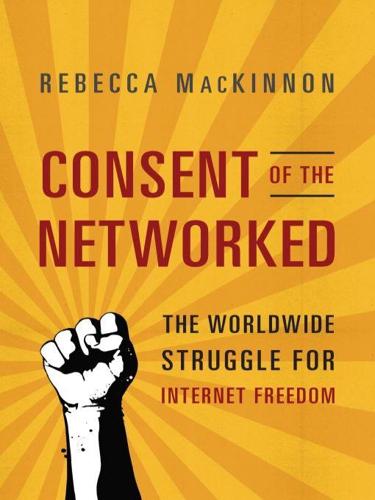
Consent of the Networked: The Worldwide Struggle for Internet Freedom
by
Rebecca MacKinnon
Published 31 Jan 2012
CHAPTER 9: DO NO EVIL 131 In April 2011, Mike Lazaridis, co-CEO of Research in Motion (RIM), maker of BlackBerry, sat down for an interview with the BBC’s Rory Cellan-Jones: Full video of the exchange is at http://news.bbc.co.uk/2/hi/programmes/click_online/9456798.stm (accessed June 27, 2011). 133 Shi Tao: For a detailed account and list of sources related to the Shi Tao case and Yahoo, see Human Rights Watch, Race to the Bottom: Corporate Complicity in Chinese Internet Censorship, 2006, www.hrw.org/reports/2006/china0806; and Rebecca MacKinnon, “Shi Tao, Yahoo!, and the Lessons for Corporate Social Responsibility,” working paper, December 27, 2007, http://rconversation.blogs.com/YahooShiTaoLessons.pdf. 136 the year Microsoft launched MSN Spaces in China, 2005, was also the year the Chinese blogosphere exploded: For a detailed account of the evolution of the Chinese blogosphere and government controls, see Rebecca MacKinnon, “Flatter World and Thicker Walls?
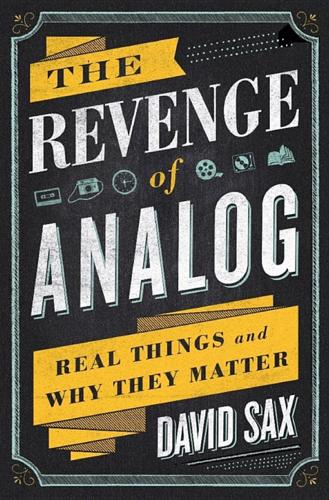
The Revenge of Analog: Real Things and Why They Matter
by
David Sax
Published 8 Nov 2016
When I ask what they can pay, the answer is usually some variation of “We can’t afford to pay writers at this time, but you will get great exposure.” I always tell them that I have all the exposure I need right now. What I’d really like is money. “Digital pennies versus print pounds,” a writer in London said, characterizing this race to the bottom. One of the big differences between print and digital publishing is the ability to charge for the product at hand. Most print publications cost a few dollars to purchase, while digital ones are free. This might seem great in terms of capturing as many readers as possible for advertisers, but what it actually does is drive down the value of those readers.

The Education of Millionaires: It's Not What You Think and It's Not Too Late
by
Michael Ellsberg
Published 15 Jan 2011
Anyone can walk in this place, look around, get it, and leave. The souvenir part—the experience part, the owning-the-table-for-two-hours part—that’s what they make money from. “McDonald’s fooled us into believing that the purpose of industry was to churn out standardized quantity at low cost. This place reminds us that, no, there’s an alternative to racing to the bottom. And that is, racing to the top.” Are you ready to race toward the top and combine money with meaning? Keep reading—the remaining stories and skills in this book show you how. ■ PORTRAIT OF THE ARTIST AS A YOUNG FUCKUP: HOW I WENT FROM BROKE, MISERABLE WANNABE SUPERSTAR TO FINANCIALLY SECURE, CREATIVELY ENGAGED PROFESSIONAL AUTHOR I told you I wouldn’t recommend anything to you that I hadn’t applied in my own life.
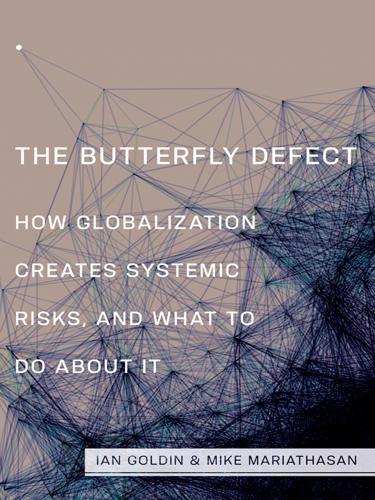
The Butterfly Defect: How Globalization Creates Systemic Risks, and What to Do About It
by
Ian Goldin
and
Mike Mariathasan
Published 15 Mar 2014
Although new information technologies provided the tools for financial services to spread across the world, the rapid expansion of the sector was aided by a political culture that favored deregulation at the national level, along with resolute noncommittal to international regulation. Due to international competition among the various financial hubs around the globe, a race to the bottom led to the reduction in already weak regulatory standards. In the short term this provided more financial activity, higher revenues, more taxes, and more growth and explains why so many policy makers argued that their domestic financial system had to become “more competitive,” which they took to mean bound by less regulation.
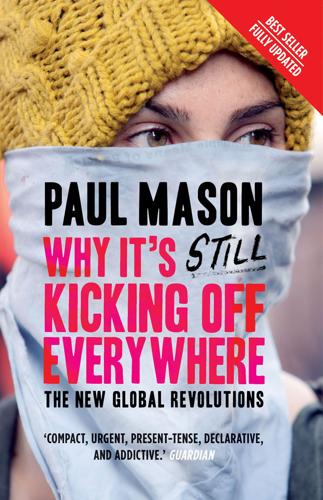
Why It's Still Kicking Off Everywhere: The New Global Revolutions
by
Paul Mason
Published 30 Sep 2013
Now however, the realization is dawning that the generation who started work in 2010, and who will retire in 2050, will have been poor through much of their working lives; they will be ‘asset poor’—unless the house-price bubble can be pumped up again—and dependent on a generation being born today to join the ‘race to the bottom’ in terms of wages and lifestyles. 10. This evaporation of a promise is compounded in the more repressive societies and emerging markets because—even where you get rapid economic growth—it cannot absorb the demographic bulge of young people fast enough to deliver rising living standards for enough of them. 11.

The God Species: Saving the Planet in the Age of Humans
by
Mark Lynas
Published 3 Oct 2011
THE PRICE OF PANDAS The current crisis in biodiversity tells us loud and clear that conventional approaches to conservation have failed. “Paper parks”—named but barely protected—in developing countries are routinely violated by poachers and loggers. What areas are set aside for nature reserves are too small and too fragmented. At sea fishermen compete with each other in a global race to the bottom, knowing that if they do not catch the last bluefin tuna, someone else will. No wonder the 2010 Global Biodiversity Outlook report is full of ominous words and phrases like “serious declines,” “extensive fragmentation and degradation,” “overexploitation,” and “dangerous impacts.” To meet the planetary boundary, we need to make urgent changes in policy.

Cockpit Confidential: Everything You Need to Know About Air Travel: Questions, Answers, and Reflections
by
Patrick Smith
Published 6 May 2013
How we got to such a shameful position is the subject of debate. Is it a fiscal thing? A cultural thing? A little of both? It has been a long, hard slide, and most folks agree that it began at or around the moment president Jimmy Carter attached his signature to the Airline Deregulation Act of 1979. From that moment on it was a race to the bottom, with competitive chaos inspiring a battle so fierce that, from the airlines’ perspectives, undercutting the competition became more important than pleasing customers. By 2001, the few remaining extravagances were curtailed in the battening-down that began after September 11. In my opinion, there’s something systemic at hand that transcends the bottom line.
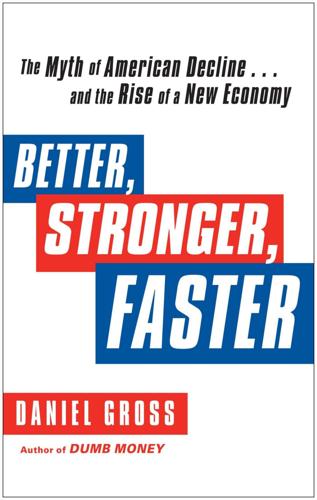
Better, Stronger, Faster: The Myth of American Decline . . . And the Rise of a New Economy
by
Daniel Gross
Published 7 May 2012
And there’s room for much more. Rising wealth around the world means greater demand for services. Developing countries build exports—goods or services—by taking the low road: set up a factory to make cheap lightbulbs or build a low-wage call center, and you’re off. But it’s not all about a race to the bottom. The United States exports a lot of very expensive services—money management, education, health care, tourism—that have previously been unaffordable for the vast majority of humanity and that are getting more affordable. Like the Collinses of Wallquest before 2008, most American businesses were content to sell to their friends and neighbors and never gave much thought to selling overseas.

Lectures on Urban Economics
by
Jan K. Brueckner
Published 14 May 2011
Urban Growth Models with Durable Housing: An Overview. In Economics of Cities, ed. J.-F. Thisse and J.-M. Huriot. Cambridge University Press. Brueckner, Jan K. 2000b. Urban Sprawl: Diagnosis and Remedies. International Regional Science Review 23: 160–171. Brueckner, Jan K. 2000c. Welfare Reform and the Race to the Bottom: Theory and Evidence. Southern Economic Journal 66: 505–525. Brueckner, Jan K. 2002. Internalization of Airport Congestion. Journal of Air Transport Management 8: 141–147. Brueckner, Jan K. 2004. Fiscal Decentralization with Distortionary Taxation: Tiebout vs. Tax Competition. International Tax and Public Finance 11: 133–153.
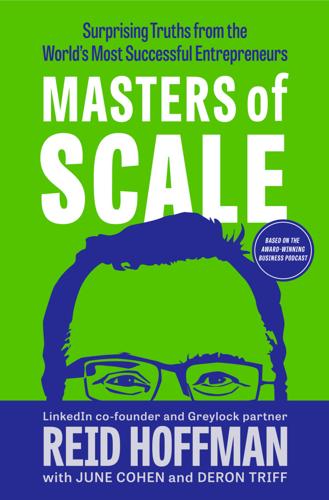
Masters of Scale: Surprising Truths From the World's Most Successful Entrepreneurs
by
Reid Hoffman
,
June Cohen
and
Deron Triff
Published 14 Oct 2021
There was one particular area Stacy zeroed in on: the freewheeling bidding system that connected the two sides in the marketplace of taskers (those bidding for the jobs) and clients (those looking to hire) that drove TaskRabbit. Under the current system, taskers had to go through a bidding process for every task, which meant that many found themselves in a race-to-the-bottom to offer their services for the cheapest price. Meanwhile, for clients it often took too much time to sort through all those bids and choose a winner. This open-ended “anything goes” framework seemed to work about half the time; some taskers and clients thrived in the bidding wars.
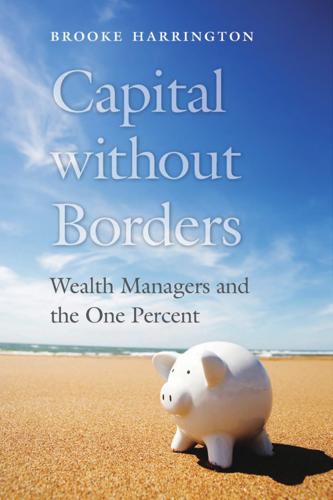
Capital Without Borders
by
Brooke Harrington
Published 11 Sep 2016
But the aims of the parasite are totally different: rather than offering governance and public services to the populace at large, the parasitic system offers zones of state-sanctioned lawlessness that benefit only international elites. What this is doing to the Westphalian host system is similar in some respects to what e-commerce has done to bricks-and-mortar business, destroying it in a race to the bottom. The key difference is that while the benefits of e-commerce (both for business owners and consumers) are open to anyone with an Internet connection, the benefits of the parasitic state system are offered only to the world’s wealthiest people. The coordinated extraction of capital from the host states and the undermining of their legitimacy makes life consistently worse for the vast majority of people while benefiting a tiny few.
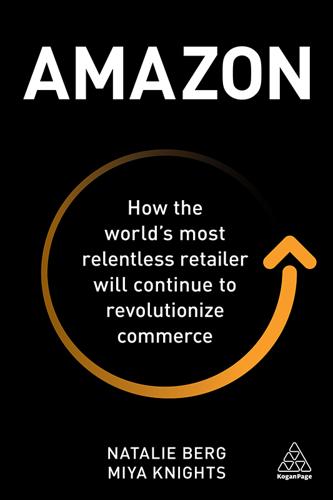
Amazon: How the World’s Most Relentless Retailer Will Continue to Revolutionize Commerce
by
Natalie Berg
and
Miya Knights
Published 28 Jan 2019
The so-called fast fashion chain Zara can take a coat from design stage to the sales floor in 25 days.45 Off-price retailers meanwhile offer prices up to 70 per cent lower than traditional department stores.46 The rise of these bricks and mortar disruptors means that department stores are no longer the cheapest, nor are they the most fashionable or the most convenient. And we all know that in retail the middle ground is a very dangerous place to position yourself. The initial knee-jerk reaction to these new competitive threats was a period of seemingly perpetual discounting; however, this race to the bottom simply eroded margins, devalued brand perception and trained shoppers to only buy on promotion. Now department stores are opting for a more sustainable ‘if you can’t beat ’em, join ’em’ approach by ramping up their own off-price presence. In fact, at the time of writing in 2018 a growing number of traditional department store chains have more outlet and off-price stores than full-price shops.47 Despite the risk of cannibalizing existing stores, this format is far more relevant for today’s modern shopper.
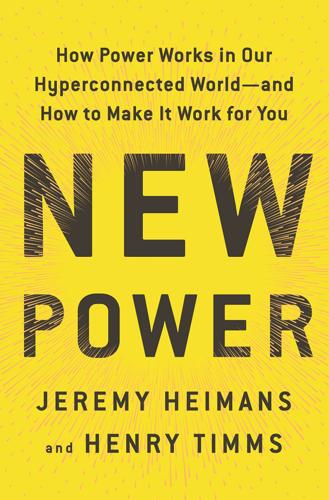
New Power: How Power Works in Our Hyperconnected World--And How to Make It Work for You
by
Jeremy Heimans
and
Henry Timms
Published 2 Apr 2018
Initially, Uber could rely on the support and energy of its drivers. But, as Fast Company’s Sarah Kessler observed, taxi drivers and Uber drivers began to recognize their common interests in the fight for better pay and conditions. Uber’s sudden rate cut in 2016 led taxi drivers and Uber drivers in the United States to form joint protests to avoid a “race to the bottom.” Kessler quotes Abe Husein, a former Uber driver who led strikes in Kansas City and elsewhere: “When I first started driving, taxis hated Uber drivers, and Uber drivers hated taxis…Now everybody hates Uber. Times have changed.” Uber’s move-fast-and-break-shit government relations strategy and its growing notoriety have also made it a hugely popular target for regulators.

Ghost Work: How to Stop Silicon Valley From Building a New Global Underclass
by
Mary L. Gray
and
Siddharth Suri
Published 6 May 2019
MTurk set a minimum fee for work at one cent per task and, from there, requesters decide how much to offer MTurk workers for each assignment. On average, requesters price tasks to offer the equivalent of $11 an hour, but low-paying requesters flood the market with minimum-fee work, which drags down the overall earning potential of workers, who must wade through lists of poor-paying tasks to find decent work. “It’s a constant race to the bottom,” says Joan. By some estimates, the total revenue of the requesters on MTurk and similar sites like CrowdFlower adds up to $120 million per year.19 Workers keep what requesters pay out, but Amazon charges the requesters 20 percent of what MTurk calls “the reward”—a worker’s paycheck, including any bonus amount (the equivalent of a tip)—as its fee for operating the platform.

Corbyn
by
Richard Seymour
Typical of this was Polly Toynbee, who faulted Corbyn for defending ‘free migration on the eve of a poll where Labour was haemorrhaging support for precisely those metropolitan views’, before adding, ‘if Labour wants to get its voters back, it can’t block its ears as Corbyn, the party’s leader, does.’ Likewise, Andy Burnham insisted that the Brexit vote was ‘against free movement’ and that Labour must now find a new ‘balance’. He added the gloss, shared by UKIP, of blaming free movement for ‘a race to the bottom’ in living standards.3 The Left indeed looked weaker and more isolated as a result of the Brexit vote; Labour seemed aimless and adrift, and having recovered some of its lost core vote in the year before the decision, it began losing more seats than it won. The loss of the by-election in Copeland and the just-about-victory in Stoke, precipitated by two right-wing Labour MPs resigning, appeared to have seriously weakened the leadership.
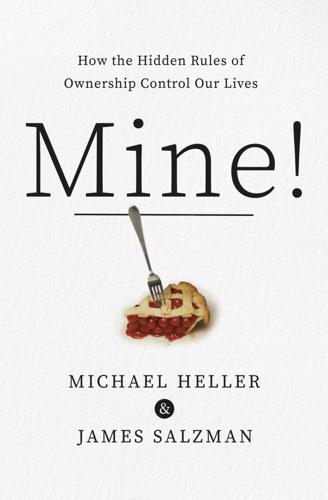
Mine!: How the Hidden Rules of Ownership Control Our Lives
by
Michael A. Heller
and
James Salzman
Published 2 Mar 2021
Threatened by this competition from Alaska, South Dakota raised its game. Janklow created a task force to ask the wealthiest families, What more can we possibly give you? A South Dakota version of the self-settled asset protection trust soon followed, but with even more generous provisions for the donor. Nevada then upped the ante. This back-and-forth sparked a “race to the bottom” of ever more extravagant giveaways to the rich. South Dakota lets you add a spendthrift trust provision, under which trustees can choose when and where they pay beneficiaries. Creditors cannot intercept these payments ahead of time and find it nearly impossible to track the money later on.

Easy Money: Cryptocurrency, Casino Capitalism, and the Golden Age of Fraud
by
Ben McKenzie
and
Jacob Silverman
Published 17 Jul 2023
In late May 2022, after the spring collapse was already underway, she complained: “We’re not allowing innovation to develop and experimentation to happen in a healthy way, and there are long-term consequences of that failure.”) The concern from a consumer protection standpoint was that the competition between SEC and CFTC could create a race to the bottom, in which both agencies were incentivized to stake out as much regulatory authority as possible, but then tread lightly when it comes to actual enforcement. There was a parallel turf war going on inside the halls of Congress. The SEC is overseen by the Financial Services Committee in the House and the Banking Committee in the Senate.
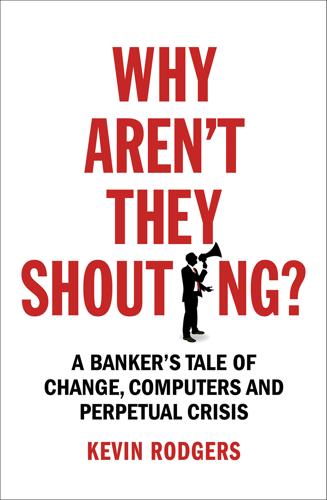
Why Aren't They Shouting?: A Banker’s Tale of Change, Computers and Perpetual Crisis
by
Kevin Rodgers
Published 13 Jul 2016
In the US–UK context, and to an extent in the EU–UK context, PBR is intimately embroiled in a competition between regulators (and their governments) for business. There is no doubt that, at least at the rhetorical level, PBR is a weapon in the fierce battle for business between London and New York.’1 In other words, in terms of regulation, it was an ‘arms race to the bottom’. The concept of ‘regulatory capture’ is often invoked to explain this. The idea is that regulators, dazzled by banks’ brilliance or hoping for lucrative rewards in the industry after they are all done with regulating, skew things in banks’ favour. There might be some truth to this, although I have to say that I never got the impression that I had ‘captured’ the dozens of unsmiling visitors from the BaFin.
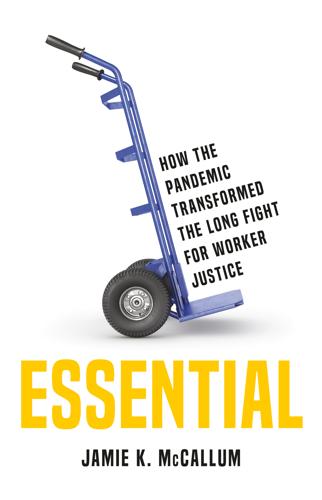
Essential: How the Pandemic Transformed the Long Fight for Worker Justice
by
Jamie K. McCallum
Published 15 Nov 2022
You can think of it as guaranteeing plausible deniability for worker rights. Employers that fissure their workplaces also spread risk through a spillover effect—low wages and a lack of labor protections at some employers in a particular industry drag standards down at other employers in the same industry, a race to the bottom where workers always lose. The pandemic was workplace fissuring on steroids. In May 2020, NTT’s Global Managed Services Report, which analyzes trends in outsourcing, found that 45 percent of global corporations planned “to outsource more of their IT than they insource” within eighteen months—a percentage nearly double the current amount.33 Within the United States, institutions such as colleges, law firms, and medical practices were eager to use the crisis as an opportunity to outsource jobs.34 Even employers who received generous federal assistance, such as Boeing and United Airlines, didn’t hesitate to contract out IT staff and catering operations.35 And employers didn’t just spread risk through fissuring and spillovers—they tried to enshrine it in law.
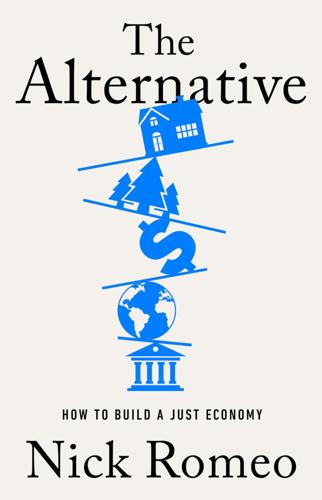
The Alternative: How to Build a Just Economy
by
Nick Romeo
Published 15 Jan 2024
Yet understanding of these labels among consumers is quite limited.8 Without a standardized method for calculating true prices that is transparent, independent of industry lobbyists, and broadly adopted, a bewildering variety of different true price schemes could compete for dominance. Such competition risks confusing governments, consumers, and businesses, decreasing trust in the methodology, and encouraging a race to the bottom, with different labels relaxing their standards to persuade businesses to adopt them. In fact, this may be happening already. In a 2021 publication for the journal Nature, de Groot Ruiz and two coauthors identified more than thirty distinct methodologies for calculating the true cost of products.

The Sirens' Call: How Attention Became the World's Most Endangered Resource
by
Chris Hayes
Published 28 Jan 2025
These kinds of atmospheres have their charms, for sure, but only in relatively small doses. No one wants their entire visual field transformed into a casino at all times. That is what competitive attention markets are constantly threatening to do. And in the history of the attention economy, this race-to-the-bottom problem has been a recurring theme. In Paris at the turn of the twentieth century, commercial artists began putting up posters around the city advertising venues and shows and the like. It was so effective that soon posters were covering every surface of the city, leading to a concerted push by Parisians to regulate and rein in what had become a form of visual pollution.[29] * * * — I have quite a bit of experience with these dynamics from the perspective of someone whose job it is to keep people’s attention.

This Is for Everyone: The Captivating Memoir From the Inventor of the World Wide Web
by
Tim Berners-Lee
Published 8 Sep 2025
That’s what I wanted, but the browser companies didn’t. They wanted to pass on the old web page, warts and all. In fact, they did worse. During that time, it became a matter of pride in each browser to be able to display absolutely anything that anyone put out there on the web. They were competing in a race to the bottom. Hixie’s browser group wanted browsers to read every page, even pages that were poorly coded, that didn’t meet basic data standards, and that were riddled with errors. Their spec defined how to read a web page in English, step by step, which was very tedious to have to code. The stated motivation was to hide all this dysfunction from web users, who often didn’t know (or care) about how a web page was designed.

Empire of Cotton: A Global History
by
Sven Beckert
Published 2 Dec 2014
After all, as of 1910, Chinese wages were just 10.8 percent of those in Great Britain and 6.1 percent of those prevalent in the United States, while Chinese workers also labored nearly twice as many hours as their New England counterparts—5,302 hours versus 3,000 hours. Such low-wage competition was found in even more places and it mattered. By the 1920s, for example, competition from Czech and Russian producers proved to be a threat to the German cotton industry. In the long run, cotton manufacturing became a “race to the bottom.”22 Manufacturers tried to respond to such pressures by using their access to ever more powerful governments to insulate their respective national industries from global competition. Germany’s cotton industry depended on an intricate tariff regime catering to the very specific needs of very specific sectors of its cotton industry.
…
For the last several decades, Walmart and other retail giants have continually moved their production from one poor country to a slightly poorer one, lured by the promise of workers even more eager and even more inexpensive. Even Chinese production is now threatened by lower-wage producers.18 The empire of cotton has continued to facilitate a giant race to the bottom, limited only by the spatial constraints of the planet. The constant reshuffling of the empire of cotton, ranging from its geography to its systems of labor, points toward an essential element of capitalism: its ability to constantly adapt. Again and again, a seemingly insurmountable crisis in one part of the empire generated a response elsewhere; capitalism both demands and creates a state of permanent revolution.
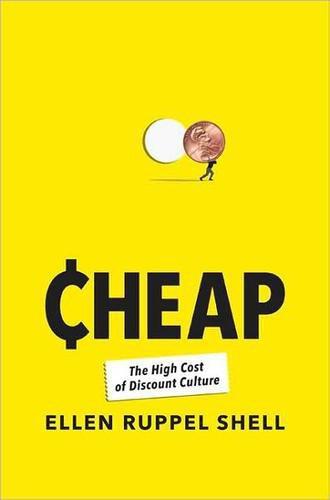
Cheap: The High Cost of Discount Culture
by
Ellen Ruppel Shell
Published 2 Jul 2009
“But consolidation has meant that when the large agribusiness interests decide to change course abruptly and, say, invest in biofuels, that can lead to severe disruptions in food markets in the short run.” The United States is the world’s largest exporter of food and as such dominates world food policy. But in recent years we have become increasingly dependent on imports in a frantic effort to keep food prices low. Left to their own devices, global food markets pretty much follow the same “race to the bottom” model followed by other unfettered markets. Subsidies and economies of scale have made grain and everything it is made of—including the animals that eat it—increasingly cheap. In hard times all but the poorest Americans tend not to cut back on food consumption but, rather, gravitate toward getting what we perceive to be “more for less.”
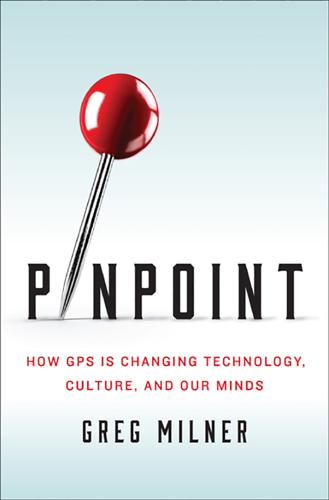
Pinpoint: How GPS Is Changing Our World
by
Greg Milner
Published 4 May 2016
In Memphis, Federal Express can add nine flight operations per hour, with annual savings of almost $22 million. Residents of Louisville, Kentucky, can breathe easier, knowing that arrivals at United Parcel Service’s central processing facility are burning 7,761 fewer gallons of fuel. In a world of low margins, scarce resources, and race-to-the-bottom competition, GPS is a powerful means to chip away at costs. When Alaska Airlines began to use GPS in 1996, it was a watershed moment for the aviation industry and also for GPS, heralding its integration into what governments and security specialists call the critical infrastructure—an inclusive term that refers to the systems, installations, and industries that make modern life possible.
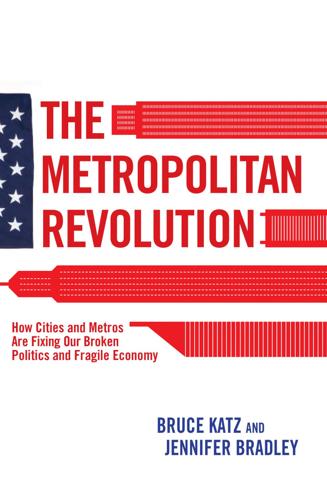
The Metropolitan Revolution: How Cities and Metros Are Fixing Our Broken Politics and Fragile Economy
by
Bruce Katz
and
Jennifer Bradley
Published 10 Jun 2013
“Making Governance Networks Effective and Democratic through Metagovernance.” Public Administration 87, no. 2 (2009): 234–58. Sorkin, Andrew Ross. Too Big to Fail: The Inside Story of How Wall Street and Washington Fought to Save the Financial System from Crisis—and Themselves. New York: Viking, 2009. Sthanumoorthy, R. “Rate War, Race to the Bottom, and Uniform State VAT Rates: An Empirical Foundation for a Difficult Policy Issue.” Economic and Political Weekly 41, no. 24 (2006): 2460–69. Stiglitz, Joseph E. The Price of Inequality: How Today’s Divided Society Endangers Our Future. New York: W. W. Norton, 2012. ———. “The Theory of Local Public Goods Twenty-Five Years after Tiebout: A Perspective.”
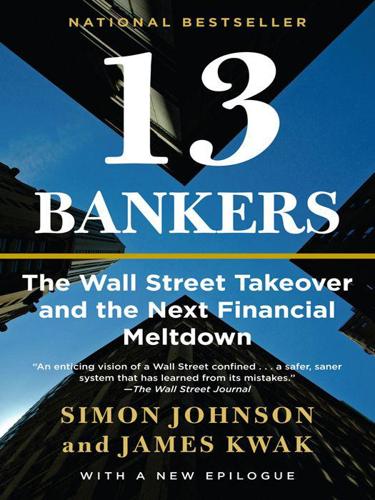
13 Bankers: The Wall Street Takeover and the Next Financial Meltdown
by
Simon Johnson
and
James Kwak
Published 29 Mar 2010
And while each regulator nominally had its own sphere of jurisdiction—bank holding companies for the Fed, national banks for the OCC, and so on—financial institutions that fell under multiple regulatory agencies were allowed to select their primary regulator. As a result, regulatory agencies had to compete for funding by convincing financial institutions to accept their regulation, which created the incentives for a “race to the bottom,” in which agencies attract “customers” by offering relatively lax regulatory enforcement. The OTS stood out in this competition. According to William Black, a law professor and former official at the Federal Home Loan Bank Board, “The reputation of the Office of Thrift Supervision was that it was the weakest, and the laxest, and it was indeed outright friendly to the worst of the non-prime lending.”22 American International Group (AIG), a massive insurance company with one of the largest derivatives trading operations in the world, opened a savings and loan—and then chose the OTS as its primary regulator, even though the agency, with its focus on mortgage lending, had no chance of monitoring the risks taken on by AIG’s infamous Financial Products division.
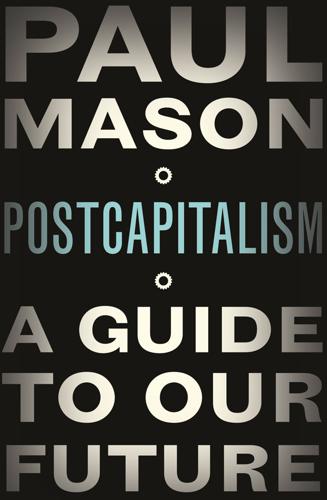
Postcapitalism: A Guide to Our Future
by
Paul Mason
Published 29 Jul 2015
For now, however, let’s look at how capitalism might evolve to meet these economic challenges. WHAT WOULD INFO-CAPITALISM LOOK LIKE? The rise of free information and free machines is new. But the cheapening of inputs through productivity is as old as capitalism itself. What stops capitalism from becoming a systemic race to the bottom is the creation of new markets, new needs, and raising the amount of socially necessary labour time used to meet these needs (fashion instead of rags, TVs instead of magazines); this in turn raises the amount of labour time embodied in each machine, product or service. If this inbuilt reflex could work properly, faced with the information revolution, what we’d get is a fully fledged info-capitalism.

Creative Intelligence: Harnessing the Power to Create, Connect, and Inspire
by
Bruce Nussbaum
Published 5 Mar 2013
“Profit arises out of the inherent, absolute unpredictability of things, out of the sheer, brute fact that the results of human activity cannot be anticipated and then only in so far as even a probability calculation in regard to them is impossible and meaningless.” Knight did not believe in the efficiency of markets, arguing instead that when companies operate for efficiency, and compete on price, profits tend to fall—and sometimes fall to zero. Put another way, efficiency drives a race to the bottom. Creativity, on the other hand, generates products and services that, because of their originality and utility, can have big profit margins and bigger profits. For Knight, social uncertainty and chance were sources of new knowledge, opportunity, and profits. He was also keenly aware that focusing on “wants” alone was insufficient.
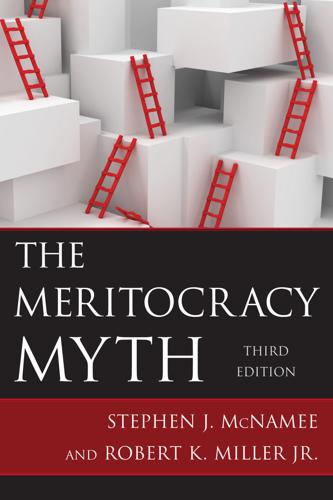
The Meritocracy Myth
by
Stephen J. McNamee
Published 17 Jul 2013
Bernhardt et al. found that 90 percent of white male workers in the most recent cohort are doing worse now than their counterparts at corresponding ages from the earlier cohort. Median wage growth has fallen by 21 percent, and the distributions of remaining gains have become more unequal. While a small core of the most recent cohort is holding its own, for the most part the net wage decline is a “race to the bottom” (Bernhardt et al. 2001, 174). The growth of income inequality in recent decades is not associated with individuals surging ahead but rather with a few holding on while most have lost ground. The small core of workers holding their own are mostly college graduates. But even here, nearly two-thirds of all college graduates in the more recent cohort fared worse than college graduates in the previous cohort.
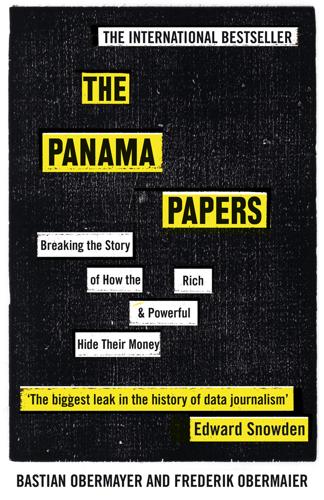
The Panama Papers: Breaking the Story of How the Rich and Powerful Hide Their Money
by
Frederik Obermaier
Published 17 Jun 2016
In our globalized world it seems there is hardly a single law that cannot be circumvented or have its impact lessened with the help of a few shell companies. The British author Nicholas Shaxson sums this up rather neatly: ‘Offshore is not only a place, an idea, a way of doing things, and a weapon of the financial industry. It is also a process: a race to the bottom to where the rules, laws and outward signs of democracy are worn away little by little.’1 Used systematically, offshore offers an opportunity for an almost complete abdication of responsibility. It is very nearly impossible, we keep hearing in background discussions, for authorities to establish a chain of proof that holds up in court if the investigators come up against a network of shell companies strung out across five, ten or thirty tax havens.
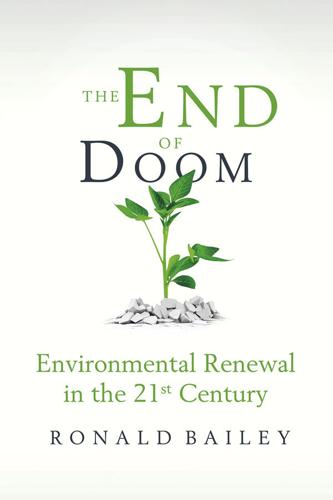
The End of Doom: Environmental Renewal in the Twenty-First Century
by
Ronald Bailey
Published 20 Jul 2015
The classic examples are fisheries. Frequently they are an open-access resource that is being overexploited. If a fisher leaves a fish in the water to spawn, the next guy will catch it and sell it. Thus no individual fisher has the incentive to protect the health and productivity of the fishery. It’s a race to the bottom, with both fish and fishers losing out. Similarly, pollutants are pumped into rivers and into the air and tropical forests are chopped down because all too often anyone can use those resources without paying for the costs of the harm they cause. One such commons problem I considered in my 1992 book was the “ozone hole” over Antarctica that was produced by chlorofluorocarbon (CFC) refrigerants floating up into the stratosphere.
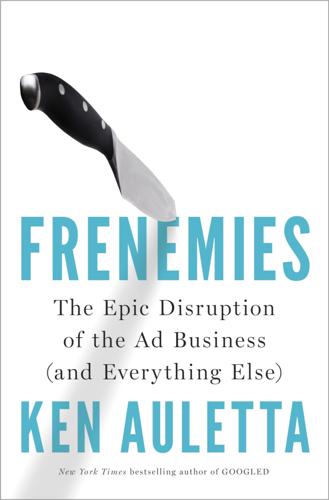
Frenemies: The Epic Disruption of the Ad Business
by
Ken Auletta
Published 4 Jun 2018
Thinking that agencies were too focused on mass—like TV and full-page newspaper ads—and not focused enough on “solving the business problems of companies,” she started a marketing company that grew to 150 employees. IBM iX acquired her company and together she said they set out “to rethink the agency world.” The “hole in the market” they saw was that data was not being used to zero in on what individuals wanted or needed and to solve large corporate problems. “Agencies are in a race to the bottom. They are losing talent, and the reason is that they have commoditized their creativity.” Their corporate bosses at the holding companies, she believes, dwell too much on finances, including selling more thirty- and sixty-second ads. “The people that will win the race in the end will be the people who can fundamentally refine and make new products out of data.”
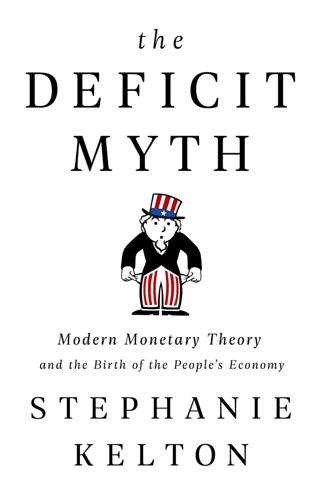
The Deficit Myth: Modern Monetary Theory and the Birth of the People's Economy
by
Stephanie Kelton
Published 8 Jun 2020
One country’s surplus is another country’s trade deficit, so by definition not everyone can win in that way at once. But it doesn’t follow that the deficit country has to sustain real economic loss if it gets its policy matrix right. The Trumpian approach to trade creates strife and a zero-sum race to the bottom over too few globally available jobs. Already, President Trump’s tariffs have failed to revive American manufacturing, raised prices for US consumers, invited retaliation from China, and contributed to a slowdown in the global economy. All in subservience to the trade deficit myth. Instead, we must recognize that the US government can supply all the dollars our domestic private sector needs to reach full employment, and it can supply all the dollars the rest of the world needs to build up their reserves and protect their trade flows.

The Constitution of Knowledge: A Defense of Truth
by
Jonathan Rauch
Published 21 Jun 2021
We need our information systems to steer us away from error and bias, which was what the institutions and standards of modern science and journalism were set up to do. Digital media’s built-in business model of treating all information like advertisements pretty much guaranteed an attention-seeking race to the bottom. That would have been challenging enough; but the digital information ecology compounded the problem by developing characteristics which were not just blind to misinformation but amplified it. Outrage Addiction First, it hacked our brains. In 2013 a young public relations executive posted a tasteless racial joke on Twitter, intending, she later said, to satirize racism and white privilege.

Zucked: Waking Up to the Facebook Catastrophe
by
Roger McNamee
Published 1 Jan 2019
With 2.2 billion people clicking, sharing, and commenting every month—1.47 billion every day—Facebook’s AI knows more about users than they can imagine. All that data in one place would be a target for bad actors, even if it were well-protected. But Facebook’s business model is to give the opportunity to exploit that data to just about anyone who is willing to pay for the privilege. Tristan makes the case that platforms compete in a race to the bottom of the brain stem—where the AIs present content that appeals to the low-level emotions of the lizard brain, things like immediate rewards, outrage, and fear. Short videos perform better than longer ones. Animated GIFs work better than static photos. Sensational headlines work better than calm descriptions of events.
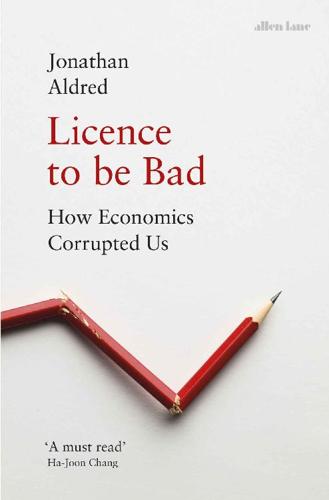
Licence to be Bad
by
Jonathan Aldred
Published 5 Jun 2019
It elegantly expresses the conflict between private and collective interest in thousands of real-world contexts. Firms producing similar products – OPEC oil producers or Coke versus Pepsi – cut prices to gain market share, but because their rivals do the same all firms suffer a fall in profit. The Prisoner’s Dilemma describes this and many other ‘races to the bottom’. Likewise, the so-called Tragedy of the Commons describes a Prisoner’s Dilemma: given free access to a common resource, everyone will consume it regardless of what others do, leading to damage or destruction of the resource and making everyone worse off. The challenge posed by climate change is, too, widely agreed to be a Prisoner’s Dilemma: everyone is better off if global carbon emissions are reduced, but every country is reluctant to reduce emissions, regardless of what other countries do.

Don't Be Evil: How Big Tech Betrayed Its Founding Principles--And All of US
by
Rana Foroohar
Published 5 Nov 2019
Stiglitz, who heads up the Independent Commission for the Reform of International Corporate Taxation, a group of academics and policy makers pushing for global tax reform. “Firms like this can use financial engineering to play all sorts of games,” says Stiglitz, who favors a global flat tax on such firms to avoid a zero-sum race to the bottom to the lowest-cost tax havens.9 How would this actually work in practice? A key idea found in many of the proposals from tax reform advocates is to tax revenues at the point of sale, rather than profits, which would reduce the sort of financial engineering that allows IP- and data-rich companies like Apple and Google to offshore profits in tax havens like Ireland and the Netherlands.

The Sense of Style: The Thinking Person's Guide to Writing in the 21st Century
by
Steven Pinker
Published 1 Jan 2014
The Usage Panel is intended to be a sample of the virtual community for whom careful writers write. When it comes to best practices in usage, there is no higher authority. The powerlessness of dictionaries to enforce the prescriptivists’ dream of preventing linguistic change does not mean that the dictionaries are doomed to preside over a race to the bottom. Macdonald titled his 1962 review of Webster’s Third “The String Untuned,” an allusion to the calamitous violation of the natural order that Ulysses foresaw in Shakespeare’s Troilus and Cressida: “The bounded waters should lift their bosoms higher than the shores and make a sop of all this solid globe.

Stakeholder Capitalism: A Global Economy That Works for Progress, People and Planet
by
Klaus Schwab
Published 7 Jan 2021
Freelancers who work in other industries, such as communication, IT, or creative design, would do well to form professional interest groups and push for better protections as well. The fact that the market for such e-work is often virtual and/or international should not mean that labor standards must be an unstoppable race to the bottom. It should be possible, for example, to require that contract work in specific states or countries respects the same minimum hourly pay, whether for “online” or “offline” workers. And when virtual contracts are performed across borders, new bilateral or multilateral agreements could be made, with governments establishing under which conditions it is possible to virtually commute between them.

Stakeholder Capitalism: A Global Economy That Works for Progress, People and Planet
by
Klaus Schwab
and
Peter Vanham
Published 27 Jan 2021
Freelancers who work in other industries, such as communication, IT, or creative design, would do well to form professional interest groups and push for better protections as well. The fact that the market for such e-work is often virtual and/or international should not mean that labor standards must be an unstoppable race to the bottom. It should be possible, for example, to require that contract work in specific states or countries respects the same minimum hourly pay, whether for “online” or “offline” workers. And when virtual contracts are performed across borders, new bilateral or multilateral agreements could be made, with governments establishing under which conditions it is possible to virtually commute between them.
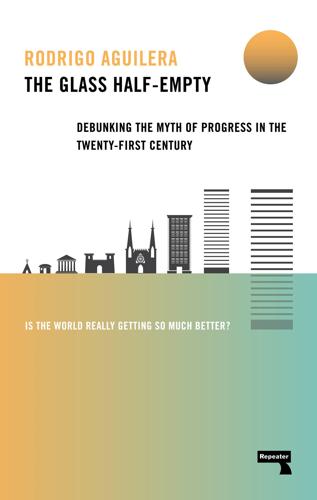
The Glass Half-Empty: Debunking the Myth of Progress in the Twenty-First Century
by
Rodrigo Aguilera
Published 10 Mar 2020
Success in international trade is judged by exporting more; and especially, having large trade balances in your favor. Weaker currencies are seen as preferable to stronger ones, given that this makes your exchange rates competitive abroad. Low wages and tax breaks are used to lure in multinationals in order to boost exports even further, resulting in a race to the bottom that developing countries (especially) cannot afford to lose given the lack of domestic capital and know-how to compete on their own. That all nations could pursue these goals is, of course, as impossible as all of Lake Wobegon’s children in Chapter Two being above average: a country’s exports will always be someone else’s imports since world trade at any point in time is zero-sum.
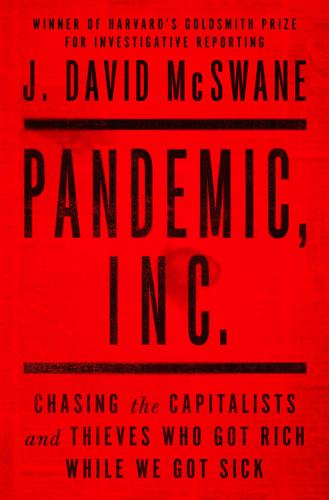
Pandemic, Inc.: Chasing the Capitalists and Thieves Who Got Rich While We Got Sick
by
J. David McSwane
Published 11 Apr 2022
Together, the two resolved to resurrect domestic mask manufacturing, which had been offshored due to globalization and cheaper labor and production costs in China and Mexico. Hospitals and their market-dominant buying groups wanted to pay the lowest price possible, and big companies including 3M, Honeywell, Cardinal Health, and Medline looked to foreign materials and production in a race to the bottom. Bowen believed that the company could buck the trend and attract dedicated American customers with a simple and—so he thought—unassailable argument: Domestic mask production is vital to national security. It was idealistic, if not altogether naive. And the years since had not been kind. On January 22, 2020, in the dim and empty wing that was once the accounting department, Bowen arrived at his office and dropped his backpack on a large oak desk, where reports and old letters and surgical masks and trinkets coalesced into entropy, a reflection of the memories, anger, and concerns bopping around his head.
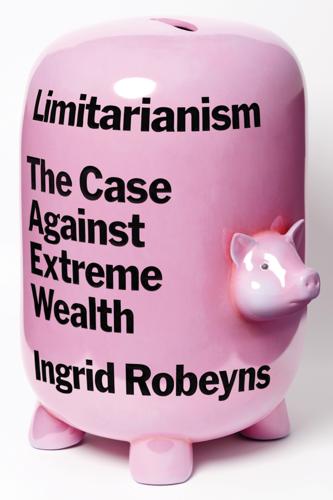
Limitarianism: The Case Against Extreme Wealth
by
Ingrid Robeyns
Published 16 Jan 2024
These measures would minimize profit-shifting and capital flight, yet would still allow each country to decide on their own fiscal policies. This is just one proposal of many: political scientists, economists, and philosophers have developed schemes for restoring a country’s fiscal agency and stopping the international fiscal race to the bottom. It’s up to us to ensure such policies are implemented.15 The fifth change that limitarianism requires is the confiscation of dirty money and the payment of reparations for past harms. The confiscation of criminal money shouldn’t provoke much resistance. Yet I have argued that there are many shades of grey where it concerns how dirty some fortunes are.

When It All Burns: Fighting Fire in a Transformed World
by
Jordan Thomas
Published 27 May 2025
Zinke was an inauspicious character to weigh in on wildfire containment strategies—while in office, he denied the role of climate change in megafires; during his tenure, he was accused of ethics violations for doing business with an executive at Halliburton, a corporation he was charged with regulating. However, the mission of privatizing fire suppression aligned with Zinke’s goal of privatizing the public sector, including America’s lands, forests, and disaster response. Chemical companies are winning this race to the bottom. A decade ago, the parent company of Perimeter Solutions was spending an average of $100,000 per year lobbying Congress on issues including “fire suppression and general management of U.S.F.S. lands.” They received a solid return on their investment; between 2020 and 2021, the Forest Service spent about $200 million on fire retardant, an industry over which Perimeter Solutions enjoys a monopoly.
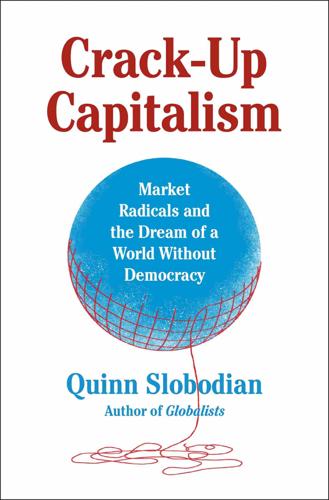
Crack-Up Capitalism: Market Radicals and the Dream of a World Without Democracy
by
Quinn Slobodian
Published 4 Apr 2023
He and others saw that the way to ameliorate regional inequality in Britain—which is what voters wanted—would require Singapore-like state investment in infrastructure and other forms of industrial policy: positive not negative liberty.94 The argument over the meaning of Singapore is part of a larger argument over the future of capitalism. Will the race to the bottom based on low taxes, low wages, and light regulation continue or will it be replaced by a race to the top based on high wages and heavy investment? Either way, the vision is marred by blind spots. The first is the question of climate change. Looking at Singapore itself, it is clear that there is no exit from the earth.
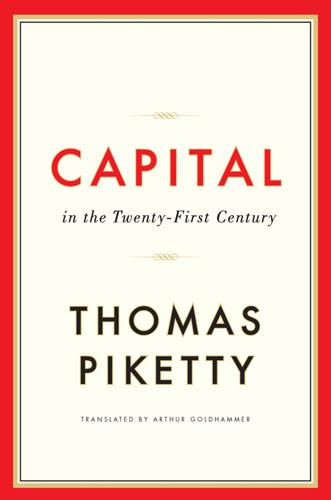
Capital in the Twenty-First Century
by
Thomas Piketty
Published 10 Mar 2014
At the same time, the recent rise of tax competition in a world of free-flowing capital has led many governments to exempt capital income from the progressive income tax. This is particularly true in Europe, whose relatively small states have thus far proved incapable of achieving a coordinated tax policy. The result is an endless race to the bottom, leading, for example, to cuts in corporate tax rates and to the exemption of interest, dividends, and other financial revenues from the taxes to which labor incomes are subject. One consequence of this is that in most countries taxes have (or will soon) become regressive at the top of the income hierarchy.
…
The minor disparities between national social models are of secondary importance in view of the challenges to the very survival of the common European model.35 Another point to bear in mind is that without such a European political union, it is highly likely that tax competition will continue to wreak havoc. The race to the bottom continues in regard to corporate taxes, as recently proposed “allowances for corporate equity” show.36 It is important to realize that tax competition regularly leads to a reliance on consumption taxes, that is, to the kind of tax system that existed in the nineteenth century, where no progressivity is possible.
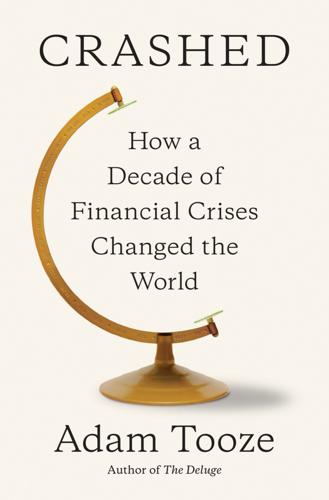
Crashed: How a Decade of Financial Crises Changed the World
by
Adam Tooze
Published 31 Jul 2018
By the magic of independent probabilities, the worse the quality of the debt that entered into the tranching and pooling process, the more dramatic the effect. Substantial portions of undocumented, low-rated, high-yield debt emerged as AAA. In any boom, irresponsible, near criminal or outright fraudulent behavior is to be expected. But the mortgage securitization mechanism systematically produced this race to the bottom in mortgage lending quality. It was the difference between the high yield of the underlying securities included in the collateral pool and the low interest that was paid to the investors who bought the AAA-rated asset-backed securities that generated the profit. From 2004, fully half the subprime mortgages being fed into the system had incomplete or zero documentation, and 30 percent were interest-only loans to people who had no prospect of making basic repayment.52 The ratings agencies would subsequently face penetrating questions about their complicity in this process.
…
The original impetus was to create zones of financial activity that were lightly regulated in offshore centers like London. But by the early 1970s at the latest it was clear that this transatlantic financial system had the potential for dangerous instability.37 Furthermore, the competitive race for profit and market share among the banks in turn unleashed a regulatory race to the bottom. In 1984 Fed chair Paul Volcker proposed new rules to set minimum standards for bank capital, hoping thereby to prevent undercutting of relatively robust banks by less well-capitalized competitors, notably from Japan. For the resilience of a bank in the face of losses on its loan book, capital is the crucial criterion.
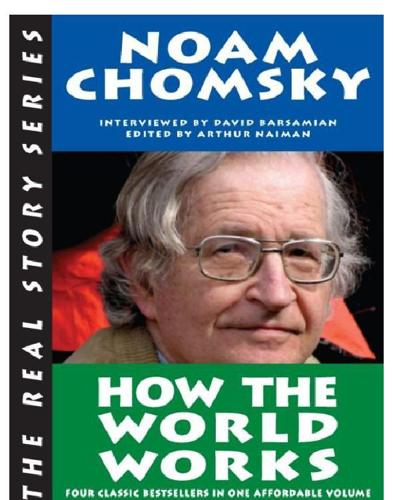
How the World Works
by
Noam Chomsky
,
Arthur Naiman
and
David Barsamian
Published 13 Sep 2011
Until the late 19th century, corporations were limited to functions explicitly determined by the state charters. That requirement effectively disappeared when New Jersey offered to drop it. Corporations began incorporating in New Jersey instead of New York, thus forcing New York to also drop the requirement and setting off a “race to the bottom.” The result was a substantial increase in the power of private tyrannies, providing them with new weapons to undermine liberty and human rights, and to administer markets in their own interest. The logic is the same when GM decides to invest in Poland, or when Daimler-Benz transfers production from Germany, where labor is highly paid, to Alabama, where it isn’t.
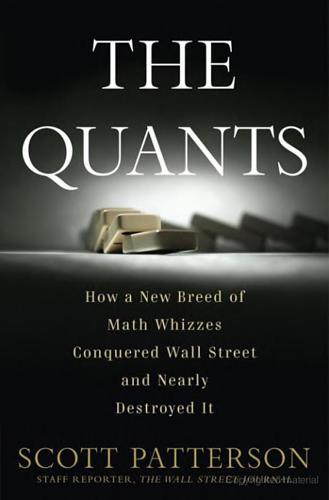
The Quants
by
Scott Patterson
Published 2 Feb 2010
AQR also made misplaced bets on the direction of interest rates, currencies, commercial real estate, and convertible bonds—pretty much everything under the sun. As the losses piled up, investors were getting antsy. AQR was supposed to hold up in market downturns, just as it had in 2001 and 2002 during the dot-com blowup. Instead, AQR was racing to the bottom along with the rest of the market. In October and November Asness went on a long road trip, visiting nearly every investor in his fund, traveling in a private jet to locations as far afield as Tulsa, Oklahoma, and Sydney, Australia. For the rare down moments, he pulled out his Kindle, Amazon.com’s wireless reading device, which was loaded with books ranging from How Math Explains the World to Anna Karenina to When Markets Collide by Mohamad El-Erian, a financial guru at bond giant Pimco.
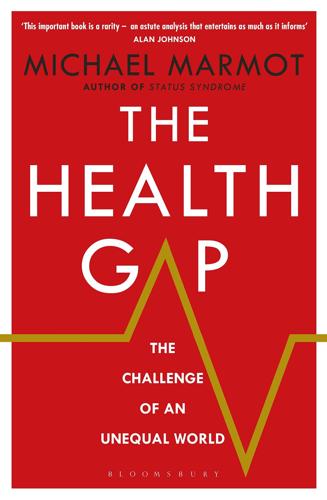
The Health Gap: The Challenge of an Unequal World
by
Michael Marmot
Published 9 Sep 2015
Solutions to improving working conditions should be applied globally, but examples of local action show how working life can be transformed – witness the scavengers of India or the young unemployed of Wales. A worrying trend is that work will increasingly be stratified into well-paid empowering work for people with education and skills and the reverse for those without. Global competition can lead to a race to the bottom. Worse working conditions and cheaper labour costs make a country more attractive for transnational corporations. Highlighting the problem is a step towards addressing it. I said in Chapter 5 that education was central because it provided the key connection between early life and the grown-up world of work.
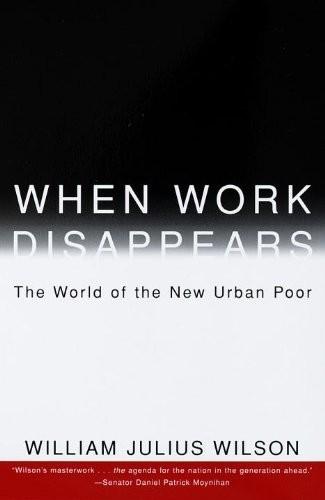
When Work Disappears: The World of the New Urban Poor
by
William Julius Wilson
Published 1 Jan 1996
Paper presented at the Chicago Urban Poverty and Family Life Conference, October 10–12, Chicago. Peeples, Faith, and Rolf Loeber. 1994. “Do Individual Factors and Neigh-borhood Context Explain Ethnic Differences in Juvenile Delinquency?” Journal of Quantitative Criminology 10:141–57. Petersen, Paul E. 1995. “State Responses to Welfare Reform: A Race to the Bottom.” In Welfare Reform: An Analysis of Issues, edited by Isabel V. Sawhill, pp. 7–11. Washington, D.C.: Urban Institute Press. Plotnick, Robert D. 1990. “Determinants of Teenage Out-of-Wedlock Childbearing.” Journal of Marriage and the Family 52:735–46. Price, Hugh. 1994. Keynote address. National Urban League Annual Conference, Indianapolis, July 24.
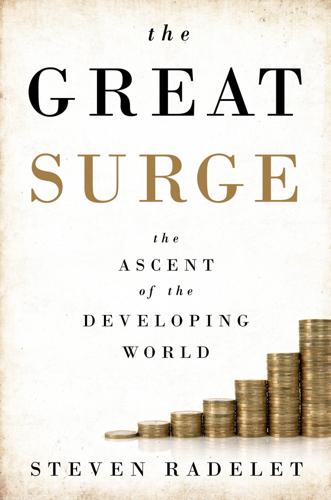
The Great Surge: The Ascent of the Developing World
by
Steven Radelet
Published 10 Nov 2015
Economists Rachel Heath of the University of Washington and Mushfiq Mobarak of Yale University estimate that around 15 percent of Bangladeshi women between the ages of sixteen and thirty are employed in the garment industry. They find compelling evidence that women’s employment in the garment industry has had a significant positive effect on reducing fertility rates, delaying marriage, and increasing girls’ educational attainment.14 Although some fear that global integration creates a “race to the bottom” with falling wages, the increase in investment and economic activity more typically has led to rising wages—fairly significant rises. The wage increases are largest in “tradable” sectors: firms that have integrated into world markets by exporting or competing with imports. According to the World Bank, wages in traded goods and services for both unskilled workers (such as sewing machine operators) and skilled workers (chemical engineers) have risen by 60 percent in real terms since the mid-1990s.

The Land Grabbers: The New Fight Over Who Owns the Earth
by
Fred Pearce
Published 28 May 2012
Land leases cost as little as two dollars per acre per year, he said. Water was free, and taxes virtually nonexistent. There were “no restrictions of foreign exchange; no limits on expat employees; full repatriation of profits, dividends and royalties and 100 percent foreign ownership permitted.” Competitors in the “race to the bottom” to play host for palm oil will find Sierra Leone already there. The huge areas of forestland in the DRC, along with its good soils and year-round rains, make it another potential honey pot, as it was in the days of Lever Brothers. Elwyn Blattner, the New Jersey inheritor of the Blattner Group’s land assets, is as friendly with the country’s new rulers as he was with Mobutu, and still operates a rubber plantation and thousands of acres of oil palm across the country.
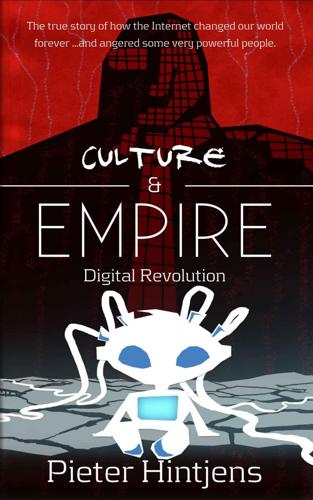
Culture & Empire: Digital Revolution
by
Pieter Hintjens
Published 11 Mar 2013
. -- 1stworld, on Slashdot The economic impact of seven billion citizens joining digital society is vast and only just starting to be understood. Where this will take us is not clear. We can however already see the trends: All markets have more participants. In any given area of activity, the number of people who participate and compete has greatly increased. Rather than creating a race to the bottom, we see increasing specialization and diversity of suppliers, and lucrative new businesses constantly emerge. All markets are more equal. The tools available to even the smallest players give them real power within their markets. Smaller players are more educated and informed. The cost of getting information has fallen to near zero and today the size of larger players actively works against them.

The Upstarts: How Uber, Airbnb, and the Killer Companies of the New Silicon Valley Are Changing the World
by
Brad Stone
Published 30 Jan 2017
A few months later, on February 1, 2016, a few hundred Uber drivers gathered in front of the company’s offices in Long Island City to protest the latest round of UberX fare cuts. Uber had recently reduced its fares by 15 percent in many cities, part of its annual effort to stimulate demand during the winter slowdown and increase the frequency of rides (and, no doubt, to apply further financial pressure to its domestic rival Lyft). NO ONE WINS THE RACE TO THE BOTTOM! read one sign. GIVE US THE RATE BACK. SHAME ON UBER! read another. The drivers that day in Queens were angry about what now seemed like a sub-minimum wage, about Uber’s ever-increasing commission, and about the need to work longer hours to eke out a living. Uber promised to pay drivers a minimum hourly rate if their earnings fell below a certain level, but the drivers said that the company found a myriad of ways to disqualify them from the guaranteed wage.

System Error: Where Big Tech Went Wrong and How We Can Reboot
by
Rob Reich
,
Mehran Sahami
and
Jeremy M. Weinstein
Published 6 Sep 2021
The long-run erosion of worker power and union organizations has meant that corporate executives are largely free to set priorities, cut costs, and invest in new technologies without due consideration of the potential impacts on their workforces. And in an environment in which more open international trade creates a race to the bottom on standards and worker protections, those who are most susceptible to job loss are even more isolated. Darren Walker, the president of the Ford Foundation, which has made tackling inequality its highest priority, lamented, “Too often, discussions about the future of work center on technology rather than on the people who will be affected by it.”

Britain's Europe: A Thousand Years of Conflict and Cooperation
by
Brendan Simms
Published 27 Apr 2016
The Polish government’s willingness in early 2016 to countenance reductions in benefits for their nationals in Britain in return for British support for permanent NATO bases in the east to deter Russia has showed that a deal is possible.31 The United Kingdom will also have to coordinate her economic and environmental policies with the single eurozone state in order to avoid a competitive ‘race to the bottom’ in trade with dictatorships, particularly the ‘People’s Republic of China’. All this needs to be embedded in a new grand settlement for Europe, achieved in one fell swoop over a relatively short and intense period, rather than through the current agony of perpetual referendum and renegotiation.

21 Lessons for the 21st Century
by
Yuval Noah Harari
Published 29 Aug 2018
And if the resulting developments confer on China some crucial economic or military advantage, the USA will be tempted to break its own ban. Particularly in a xenophobic dog-eat-dog world, if even a single country chooses to pursue a high-risk, high-gain technological path, other countries will be forced to do the same, because nobody can afford to remain behind. In order to avoid such a race to the bottom, humankind will probably need some kind of global identity and loyalty. Moreover, whereas nuclear war and climate change threaten only the physical survival of humankind, disruptive technologies might change the very nature of humanity, and are therefore entangled with humans’ deepest ethical and religious beliefs.

Brexit and Ireland: The Dangers, the Opportunities, and the Inside Story of the Irish Response
by
Tony Connelly
Published 4 Oct 2017
Already the Irish Congress of Trade Unions has warned that EU employment rights and rules governing equality, health and safety, part-time workers, agency workers, working time and product standards will all be at risk. Its October 2016 Brexit report warns that ‘changes to employment rights in the UK could place downward pressure on employment protections across the island [of Ireland]. This in turn could endanger job security, threaten key industries and effectively lead to a “race to the bottom” across the island.’ One big focus will be on the extent to which the UK maintains its standards across a range of areas currently governed by EU regulatory systems. There are over 50 EU agencies that cover a multitude of realms where directives and regulations have an impact, from the Community Plant Variety Office, which governs intellectual property rights for those who breed plants that are sold across the single market, to the European Maritime Safety Agency, which covers things like pollution alerts, hazardous shipments and accident investigations at sea, to the European Chemical Agency (ECHA).
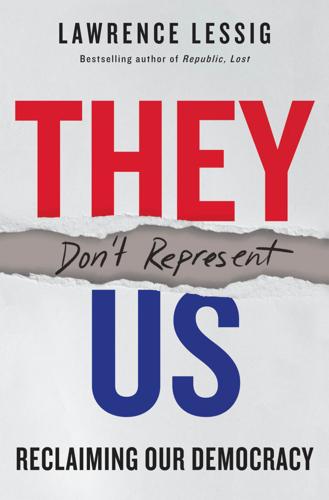
They Don't Represent Us: Reclaiming Our Democracy
by
Lawrence Lessig
Published 5 Nov 2019
Once one state did it, others followed pretty quickly, and for a pretty obvious reason: if your state, allocating electors by district, is dividing its electors between two candidates, but your neighboring state is giving all of its electors to just one candidate, then your neighbor could matter more to the candidates than do you. This created a race to the bottom, as each state shifted to WTA to ensure that it mattered as much as the next. It is difficult for us to see today exactly what the framers imagined the states would do in 1789. That’s in part because the framers had no real clue. But it’s also because the very idea of the presidency changed pretty radically pretty quickly.

New Laws of Robotics: Defending Human Expertise in the Age of AI
by
Frank Pasquale
Published 14 May 2020
We may want our doctors to access such information, but we need not let banks, employers, or others use it. There is more to life—and public policy—than consenting transactions among borrowers and fintechs to ensure “financial inclusion” (the industry’s go-to rationale for deregulation). Without proper guardrails, there will be a race to the bottom in both data sharing and behavior shaping as more individuals compete for better deals. That would result in a boom in predatory inclusion (which harms more than it helps), creepy inclusion (which gives corporate entities a voyeuristically intimate look at our lives), and subordinating inclusion (which entrenches inequality by forcing persons to maintain the same patterns of life that resulted in their desperation in the first place).
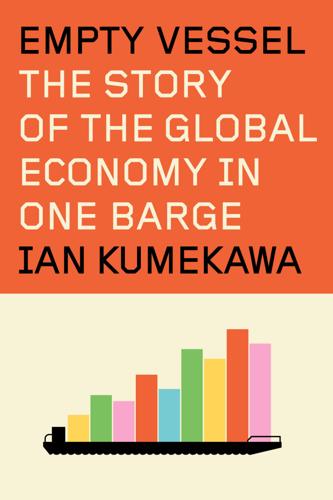
Empty Vessel: The Story of the Global Economy in One Barge
by
Ian Kumekawa
Published 6 May 2025
Taxes were “not levied locally” or were very low, and there were no restrictions on manning ships with foreign labor. The result, in short, made ships citizens of everywhere and nowhere.[33] In the 1980s, when the Bibby Line registered the Bibby Resolution and the Bibby Venture in the Bahamas, flags of convenience had become markers of globalization par excellence.[34] They represented a race to the bottom, in which small, usually poor, countries competed to offer shipowners ever less onerous tax and regulatory burdens. Leveraging international maritime treaties, flags of convenience allowed states to rent out their sovereignty, if not sell it outright. Large companies were eager clients, seeking to buy their way out of local jurisdictions and regulations.[35] * * * • • • Though flags of convenience depended, and continue to depend, on independent sovereignty, they were and are also unequivocally legacies of empire.

Plutocrats: The Rise of the New Global Super-Rich and the Fall of Everyone Else
by
Chrystia Freeland
Published 11 Oct 2012
(The British government had to nationalize RBS in 2008 and spent billions to cover its loses; RBC in 2012 was one of the top twenty banks in the world, with a market capitalization of $74 billion.) A Canadian finance executive who spent the 1990s in Toronto, then moved to Asia, and now lives in London sheepishly recalls thinking: “Come on, guys, get in the game! The world’s changing.” — The regulatory race to the bottom between New York and London—and the plutocracy’s eager and misguided complicity in that contest—is an important cause of the 2008 financial crisis. But it is also a crucial episode in another story: the rise of the super-elite. Much of the story of the rise of the 1 percent, and especially of the 0.1 percent, is the story of the rise of finance.
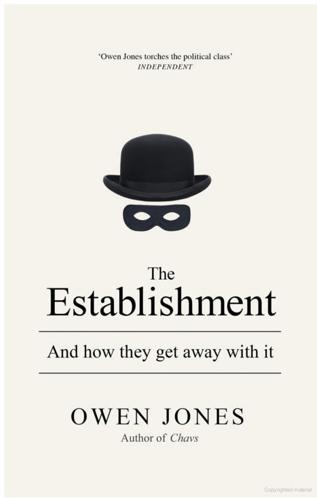
The Establishment: And How They Get Away With It
by
Owen Jones
Published 3 Sep 2014
But there are good reasons to believe that the head of G4S, David Taylor-Smith, was right when in June 2012 he suggested private companies would be in control of large swathes of the police within five years. The rationale of Britain’s police force from the beginning was ‘policing by consent’. Now, Britain faces the prospect of police forces policing by consent of their shareholders rather than their communities. The logical end result of the Establishment mantra is a race to the bottom in the quality of service and the rights of workers. After all, companies slicing off chunks of the public sector are driven by one thing: profit. And there are few better methods of boosting their profit streams than slashing workers’ wages and undermining their terms and conditions. Like other current working contractors, Terry Williams cannot give his real name when talking about his job, because if he does so he risks losing it.
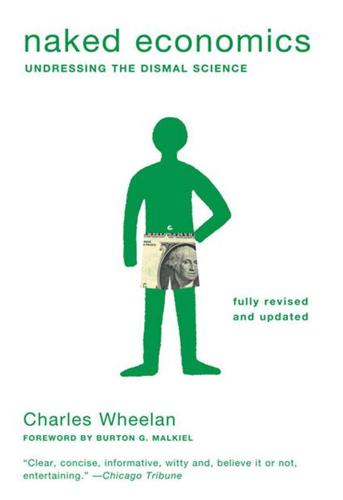
Naked Economics: Undressing the Dismal Science (Fully Revised and Updated)
by
Charles Wheelan
Published 18 Apr 2010
Economists reckon that many kinds of pollution rise as a country gets richer (when every family buys a motorcycle) and then fall in the later stages of development (when we ban leaded gasoline and require more efficient engines). Critics of trade have alleged that allowing individual countries to make their own environmental decisions will lead to a “race to the bottom” in which poor countries compete for business by despoiling their environments. It hasn’t happened. The World Bank recently concluded after six years of study, “Pollution havens—developing countries that provide a permanent home to dirty industries—have failed to materialize. Instead, poorer nations and communities are acting to reduce pollution because they have decided that the benefits of abatement outweigh the costs.”21 Climate change is a trickier case, in that carbon emissions are a zero-sum situation, at least in developing countries in the near term.

The Black Box Society: The Secret Algorithms That Control Money and Information
by
Frank Pasquale
Published 17 Nov 2014
Like runaway “grade inflation” that cheapens straight A report cards, rating inflation has eroded the meaning (if not the value) of AAA ratings. There were plenty of convenient rationales at hand: the U.S. economy was remarkably strong, population rise meant housing prices could only go up, computer-driven productivity would lift all incomes.42 The credit raters were soon in a race to the bottom in laxity. As sociologist Will Davies observes, those “tasked with representing, measuring and judging capitalist activity are also seeking to profit from” it, and there is little to connect probity in the former activities to prospering in the present.43 110 THE BLACK BOX SOCIETY Their crudity eventually captured media attention, as various “gotcha” statements emerged.
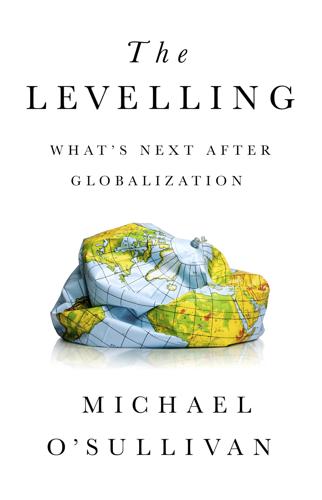
The Levelling: What’s Next After Globalization
by
Michael O’sullivan
Published 28 May 2019
Sweden and Switzerland (and to a much more specifically technological degree, Israel) are good examples of countries that have created the cultural, financial, and human capital conditions allowing medium-sized enterprises to thrive. If Ireland can do this, it will have less need to be concerned about a global race to the bottom in corporation taxes. Overall, Brexit is unleashing a range of powerful dynamics and opportunities across the United Kingdom and Ireland. One reality is that the small-economy model will become more relevant in that part of the world. Another is that Britain’s interaction with the Commonwealth will change in the same way that England’s relationship with Scotland and Ireland will change.

Giving the Devil His Due: Reflections of a Scientific Humanist
by
Michael Shermer
Published 8 Apr 2020
Martin’s Press), and The Coddling of the American Mind by Greg Lukianoff and Jonathan Haidt (2018, Penguin), the Oppression Olympics are well past their opening ceremonies in colleges, corporations, and Congress, tearing institutions asunder as conflicting cohorts vie for who has suffered the most historical inequities. It is also known as “competitive victimhood,” and it has resulted in a race to the bottom through what Lukianoff and Haidt call “The Untruth of Us Versus Them: Life is a battle between good people and evil people.” They write, “As a result of our long evolution for tribal competition, the human mind readily does dichotomous, us-versus-them thinking. If we want to create welcoming, inclusive communities, we should be doing everything we can to turn down the tribalism and turn up the sense of common humanity.”

The Wires of War: Technology and the Global Struggle for Power
by
Jacob Helberg
Published 11 Oct 2021
-China trade and economic engagement—given the extraordinary interdependence of many U.S. and Chinese economies—but it would seek to ensure that important American supply chains, particularly for vital technology components, are free of Beijing’s control. For its part, China is already hastening to free itself from its reliance on American semiconductor technology, investing nearly $30 billion in 2019 to develop a homegrown industry.45 A race to the bottom is rarely welcome, but the reality of the current situation is that technological decoupling is some ways a race. If China decouples from the U.S. before the U.S. decouples from China, the former will enjoy an enormous degree of geopolitical leverage over the latter—this outcome should be avoided at all costs.
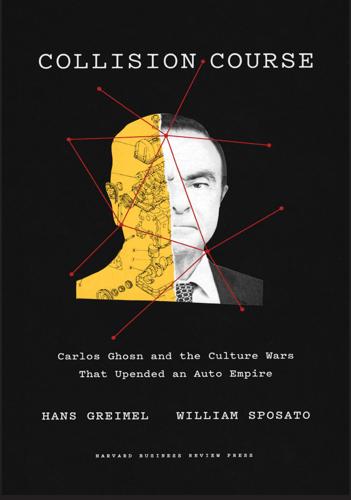
Collision Course: Carlos Ghosn and the Culture Wars That Upended an Auto Empire
by
Hans Gremeil
and
William Sposato
Published 15 Dec 2021
And to sell more cars, they often resort to rolling out desperate discounts to lure customers away from rivals, even those selling the same brand cars. On the surface, this seems like a textbook case of free-market capitalism in action. But the cutthroat competition induces what dealers and automakers both acknowledge is “unhealthy” behavior.12 For starters, stair-step incentives trigger a race to the bottom in pricing, as Nissan dealers in adjacent towns, or even in the same town, try to outdo one another on deals. This saddles the brand with a “bargain-basement” image and torpedoes resale value. Harried dealers, in a scrape to meet their quotas, are known to sell cars at a loss or even buy their own inventory.
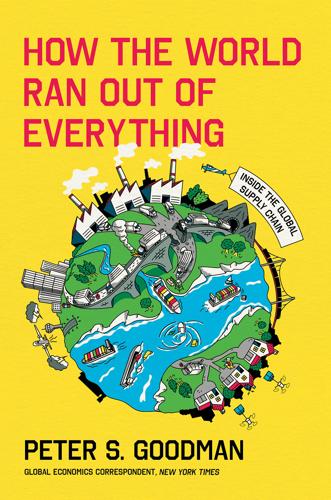
How the World Ran Out of Everything
by
Peter S. Goodman
Published 11 Jun 2024
But Becerra had passed on the prospect of making prison jumpsuits for a distributor that supplied them to institutions across the United States. He had offered to make them for $27 each. The distributor countered at only one-third that amount. “I literally told them, ‘Go to Bangladesh or Ethiopia,’” Becerra said. “We want to be a socially responsible company.” He was not interested in the traditional race to the bottom, seeking to beat the China price. Rather, he was focused on boosting his quality and design skills while exploiting the benefits of accessibility to the largest economy on earth. He was confident that Mexico and the United States were embarked on a grand-scale joint venture, a collective effort to adapt to a new form of globalization in which China was no longer the sole hub of manufacturing.

Bourgeois Dignity: Why Economics Can't Explain the Modern World
by
Deirdre N. McCloskey
Published 15 Nov 2011
When trade unionism, the Bismarckian welfare state, Progressivism, and socialism arrived, they corresponded with the big rise in real wages, and gave the impression of causing it—when it was in fact caused by rising productivity from trade-tested betterment. To this day progressives believe that without minimum wages and trade unions our wages would fall to $2 an hour. Their bit of anti-economic illogic is that without state-enforced minimums there would occur “a race to the bottom.” The argument ignores the competition among bosses that yields wages equal to what employees produce at the margin. Real wages in Britain rose as shown in table 6. The problem was that the sharp payoff was at first delayed—note the acceleration only during 1850–1880, then a slowdown, and then the greater accelerations in the twentieth century.
…
Wright: geniuses, 474; sociological imagination, 575 Milton, John: censorship, 684n12; egalitarianism, 363; Greteman on network of, 393; “honest,” 238; ideal society, 636 Mincer, Jacob: returns to human capital, 662n7 Mingardi, Alberto: acknowledged, 651n1, 667n13 minimum wage, 33, 144, 407; earned income credit and, 178; eugenic origins of, 605; race to the bottom and, 595; in South Africa, 606; spread to global south, 625. See also job protection Mirabeau, Comte de: on happiness, 683n5 Mirowski, Philip: neoliberalism, 660n1 Mises, Ludwig von: Austrian economics, 360; entangling, 55; ideological change, 417; and Schumpeter, 646; trade and the poor, 697n3 Mishra, Pankaj: Great Enrichment, 55; imperialism, 88 Mitch, David: acknowledged, xxxviii Mitchell, Douglas: acknowledged, xli; and Richard McKeon, 646 Mithen, Steven: early trade, 106, 655n20 Moav, Omer: farmer victims, 656n21 Moberg, Vilhelm: Swedish poverty, 9 Moby Dick (Melville): bourgeoisie, 591 Modi, Narendra: liberalization, 76; toilet policy, 27 Mokyr, Joel: acknowledged, xxxviii, xxxix, 652n18; on Allen, 652n26; anesthesia in GDP, 77; Baconianism, 506; betterment by lower classes, 434; British human capital, 473; causes of betterment, 105; critique of McCloskey, 409; Dutch performance in eighteenth century, 408; elite, 525; elite as cause, xxviii–xxix; fragmentation vs. vested interests, 396; gentleman, 226; Gujin Tushu Jicheng (Chinese encyclopedia), 388; ideational approach to economic history, 94, 511; ideological change, 231, 232, 471; Industrial Enlightenment, 422; institutions, 115; on Irish famine, 655n8; Jews and betterment, 427, 428; neo-institutionalism, 122; patents during Industrial Revolution, 133; potatoes in Ireland, 16, 652n29; predictability of technology, 107; pronunciation of name, 651n3; psychology vs. sociology, 473; Republic of letters, from liberalism, xv, 392; rule of law, 112; science and economy, 462, 505, 506, 517; some force of institutions, 664n7; technical elite as cause, xxvii, xxviii; timing of Great Enrichment, 534; usefulness, 95, 285, 286; usefulness, Chinese, 440; why betterment continues, 536 Mondragón: cooperative, 568 monopoly: bourgeoisie seeks, 174, 460, 585, 599; Chinese state’s on overseas trade, 399; Edison, 175; guilds as, 462; of ideas, Venetian, 460; Indiana blue laws as, 464; natural, 143; by patent, Watt, 175; state as guardian against, 175; state as source of, 175; unions and, 56; Watt’s patent, 418.
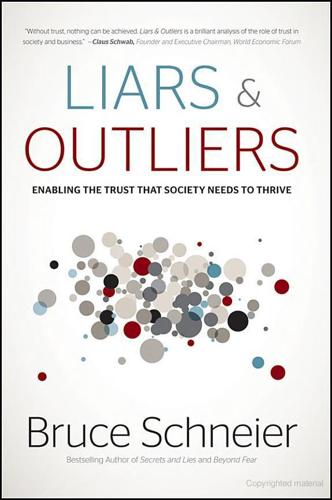
Liars and Outliers: How Security Holds Society Together
by
Bruce Schneier
Published 14 Feb 2012
But by keeping their prices high, each of them runs the risk of their competitors acting in their self-interest and undercutting them. And since they can't trust the others not to do that, they all preemptively lower their prices and all end up selling sandwiches at $5 each. In economics this is known as the “race to the bottom.” Societal Dilemma: Setting prices. Society: All the merchants. Group interest: Make the most money as a group. Competing interest: Make the most money individually, and in the short term. Group norm: Keep prices high. Corresponding defection: Undercut the competition. To encourage people to act in the group interest, the society implements a variety of societal pressures.
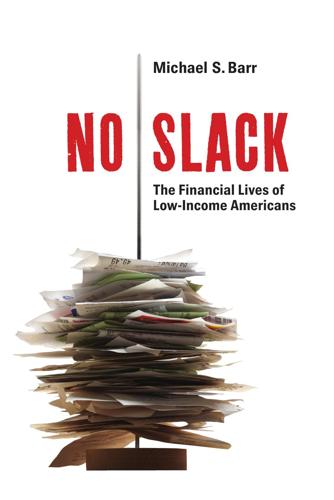
No Slack: The Financial Lives of Low-Income Americans
by
Michael S. Barr
Published 20 Mar 2012
These funds will build on the local Bank On movement, made up of local coalitions dedicated to promoting access to mainstream financial products. Consumer Financial Protection While education and access are critical, so too is consumer protection. In an environment of weak and ineffective regulations, the tendency of some consumer financial markets to end up in “races to the bottom”—as we saw in the housing market—is not likely to be overcome solely by consumer education and access. The CARD Act, which President Obama championed and signed into law in May 2009, is an example of regulation written for a market and product in which the provider has a strong incentive to usher consumers to suboptimal choices— to rack up lots of late fees and to make only the minimum payment each month.
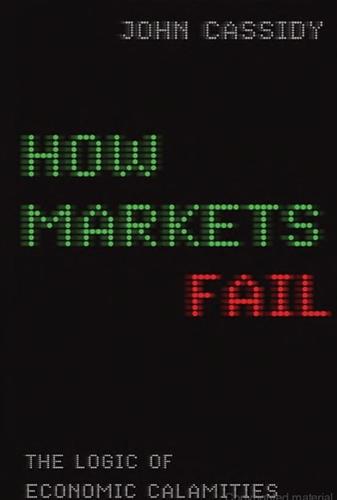
How Markets Fail: The Logic of Economic Calamities
by
John Cassidy
Published 10 Nov 2009
It was also relatively easy for the major banks to play the agencies off one another because of the opacity of the structured transactions and the high potential fees earned by the winning agency. Originators of structured securities typically chose the agency with the lowest standards, engendering a race to the bottom in terms of rating quality. While the methods used to rate structured securities have rightly come under fire, in my opinion, the business model prevented analysts from putting investor interests first. While all this was happening, the nation’s top financial cop, the chairman of the Fed, was averting his eyes.
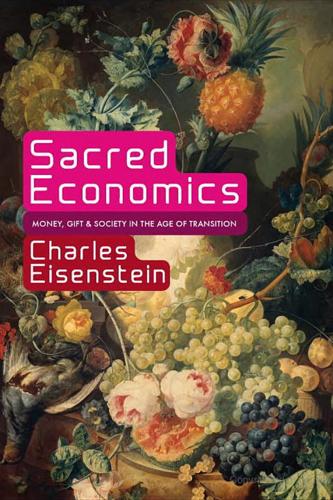
Sacred Economics: Money, Gift, and Society in the Age of Transition
by
Charles Eisenstein
Published 11 Jul 2011
ECONOMIC AND MONETARY LOCALIZATION Motivation: As community has disintegrated around the world, people yearn for a return to local economies where we know personally the people we depend on. We want to be connected to people and places, not adrift in an anonymous global monoculture. Moreover, global commodity production puts localities into competition with each other, fomenting a “race to the bottom” in wages and environmental regulations. Moreover, when production and economic exchange are local, the social and environmental effects of our actions are much more obvious, reinforcing our innate compassion. Transition and policy: The trend toward local economy has already started. Spiking energy costs and ecological awareness prompt businesses to source more supplies locally, and millions of consumers are awakening to the health benefits of locally grown, fresh food.

A Line in the Tar Sands: Struggles for Environmental Justice
by
Tony Weis
and
Joshua Kahn Russell
Published 14 Oct 2014
Generally, they are opposed to migrant worker programs and have done commendable, extensive work to highlight the deplorable working conditions. But recently, in at least two high-profile incidents,5 they also spoke out against the “displacement” of Canadian workers by migrant workers in the tar sands. This approach needs to be challenged, because it signals a “race to the bottom”: laying off union workers to bring in precarious labour is a way for the government and big business to dismantle workers’ rights across the board. If we don’t recognize the economic and social conditions that make migrant workers vulnerable in the first place, we further marginalize and isolate them with divisive rhetoric, which is also, frankly, quite entitled and racist.
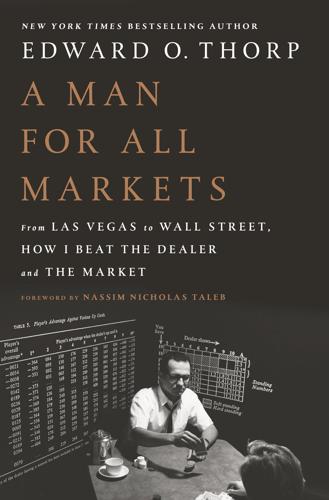
A Man for All Markets
by
Edward O. Thorp
Published 15 Nov 2016
To the optimists I mention the obvious: endless deficits, massive wastage of lives and wealth in wars, political subsidies (pork, bailouts, corporate welfare, paying the able-bodied not to work), and destructive partisanship in all three branches of government. Meanwhile, the rise of China is transforming the geopolitical and economic landscape. One of the most ominous and underappreciated threats to our future is in education and technology. My own state of California is a leader in the race to the bottom. The anti-tax movement has starved the state of revenue, especially the educational system. The ten campuses of the University of California, once among the finest public systems of higher education in the world, raised tuition to $12,000 a year by 2015. When I was a student in 1949 it was $70, which is like $700 today, adjusting for inflation.
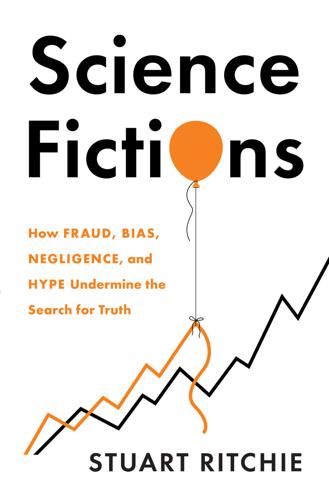
Science Fictions: How Fraud, Bias, Negligence, and Hype Undermine the Search for Truth
by
Stuart Ritchie
Published 20 Jul 2020
Maybe writing easy-to-digest treatments of scientific findings, even if they’re a little on the simplified side, is beneficial overall, since it promotes science and makes it relevant to people’s lives. And wouldn’t we rather that such books were being written by people who at least nod at the evidence? There’s some merit in this kind of argument, but it’s bad news in the long run. Letting the facts slide in favour of a good story risks a race to the bottom, with science books getting published that are ever more inaccurate and ever more divorced from the data. When these books are inevitably debunked, or the lifestyle changes they recommend fail to live up to the hype, damage is done to the reputation of science more generally. The books we’ve just discussed were by professors at Stanford, Yale and Berkeley, respectively.
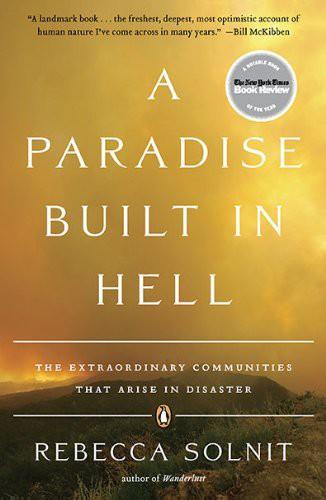
A Paradise Built in Hell: Extraordinary Communities That Arise in Disaster
by
Rebecca Solnit
Published 31 Aug 2010
So they were also going through these crash courses in basic leadership and literacy.” They were for a time “the moral center” of the earthquake, or rather of the society galvanized by that earthquake. Support came from all over. As time went on, outside pressures—including the globalized garment industry’s “race to the bottom” in search of the lowest wages on earth—undermined the union. But the women were forever changed. Many became homeowners through the movements they got involved with, and many gained a sense of their own rights and power they had lacked before. Hernandez now says, “At the beginning before we organized, I thought that Mexico, our nation, was all sweetness, that we didn’t have problems, that everything was equitable, and after I am very clear that that is not true.
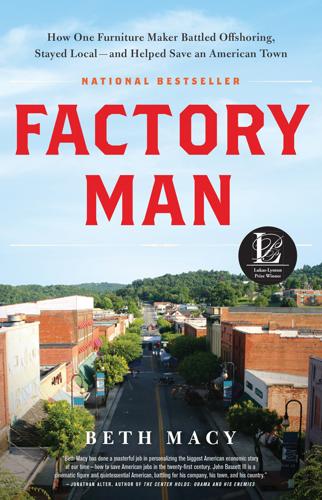
Factory Man: How One Furniture Maker Battled Offshoring, Stayed Local - and Helped Save an American Town
by
Beth Macy
Published 14 Jul 2014
It was the same sophistry preached by Walmart founder Sam Walton, who claimed he could raise the standard of living by lowering the costs of retail goods. It was ironic, given that the only jobs many of the displaced workers in the small towns hollowed out by Walmart-championed offshoring could find were part-time, and sans benefits, in Walmart stores. Prices were lower, sure, but wages were in a race to the bottom too. Kincaid remembers thinking, I’m glad my father isn’t alive to see this. In August 2003, John invited his industry colleagues to gather again—this time in a banquet room in a Greensboro hotel—to discuss another full-frontal attack. He needed lawyer money, a million and a half, at least.
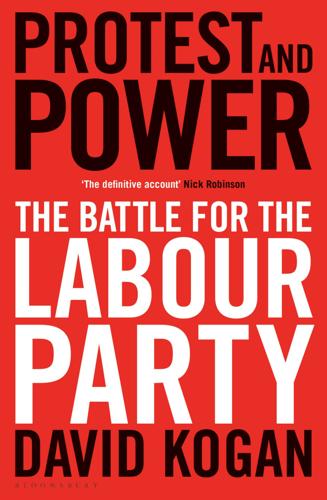
Protest and Power: The Battle for the Labour Party
by
David Kogan
Published 17 Apr 2019
He also had the unenviable job of evolving Labour’s position in face of the scepticism of Jeremy Corbyn, LOTO and John McDonnell on one side, and Remainers such as Chuka Umunna and Andrew Adonis on the other. In March 2017, he laid out Labour’s six tests. They included a deal having ‘the exact same benefits’ as under a customs union; protections on the future relationship with the EU with respect to migration, national security, regional policy; and preventing ‘a race to the bottom.’ They were to become the security blanket of Labour’s Brexit strategy until 2019. When in doubt, voice the six tests that allowed a broad level of obfuscation through 2017 and most of 2018. When the general election was called in April 2017 the official Labour position was spelled out in its manifesto as a party committed to leave the EU.

Twitter and Tear Gas: The Power and Fragility of Networked Protest
by
Zeynep Tufekci
Published 14 May 2017
The most seasoned protesters (some of whom I knew, and some of whom I met later) had been involved in the antiglobalization protests, although most protesters would use the term “anti–corporate globalization.” Many were avid travelers, immigrants, or migrants, not opposed to the knitting together of a global society, but pitted against corporations that were taking advantage of globalization to create a race to the bottom among workers around the world. Workers were mostly not allowed to travel freely while capital hopped from jurisdiction to jurisdiction at will. That was corporate globalization. This movement came to broader attention through a large-scale disruption in 1999 of the World Trade Organization meeting in Seattle.

Jihad vs. McWorld: Terrorism's Challenge to Democracy
by
Benjamin Barber
Published 20 Apr 2010
McWorld seeks to overcome sovereignty and make its impact global. Jihad too makes war on sovereignty, using the interdependence of transportation, communication, and other modern technological systems to render borders porous and sovereign oversight irrelevant. Just as jobs defy borders, hemorrhaging from one country to another in a wage race to the bottom, and just as safety, health, and environmental standards lack an international benchmark against which states and regions might organize their employment, so too anarchistic terrorists loyal to no state and accountability to no people range freely across the world, knowing that no borders can detain them, no united global opinion can isolate them, no international police or juridical institutions can interdict them.

The Future Is Asian
by
Parag Khanna
Published 5 Feb 2019
Asians are racing to connect Africa, not to divide it, building modern infrastructures that both Western multilateral agencies and African governments have been neglecting for decades. Afro-Asian linkages date back many centuries but have never been stronger. Aggressive courting of developing countries by major powers is often assumed to be a “race to the bottom,” but as African countries’ economies grow and their leaders become more pragmatic, shrewd diplomacy among various suitors can drive a race to the top where the winners accrue the most benefits from foreign interests. After all, Asians are buying African resources at a high price, not plundering them, providing revenues that governments can use to invest in economic diversification.
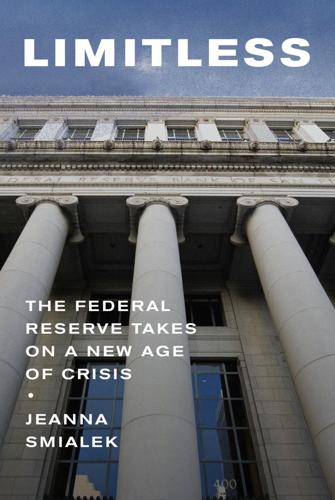
Limitless: The Federal Reserve Takes on a New Age of Crisis
by
Jeanna Smialek
Published 27 Feb 2023
“Markets are always ahead of the regulators, and frankly that’s how it should be. It’s analogous to the advice that my father provided me that if you don’t miss at least two or three planes a year, you’re spending too much time in airports,” Quarles said, even as he called for better integration of global regulation instead of a race to the bottom in financial oversight.[17] Yet the downfalls of letting financial innovation get ahead of the government’s ability to police it had soon become evident as American mortgage markets began to show cracks. In 2006, Quarles acknowledged that officials were looking into requiring greater transparency in nontraditional mortgages and that he and other officials at the Treasury were “doing everything in our power to make our financial system even more resilient in the future,”[18] but he also seemed to play down risks building in the housing market.

Like, Comment, Subscribe: Inside YouTube's Chaotic Rise to World Domination
by
Mark Bergen
Published 5 Sep 2022
“It was as close to a Ponzi scheme as I will ever get in my life,” recalled one MCN executive. “We were just aggregating other people’s work and channels, telling them that we were going to help them make more money. A few of them did. Most didn’t.” At one point Dan Weinstein convened a gathering to call a truce on the network race to the bottom. He invited four other top MCNs—“the five families,” he called them, a nod to the industry’s mafioso feel. The group met several times around Los Angeles, attempting to settle on a workable commission and competition model. One never stuck. Too many of the networks, Weinstein realized, were primed on investor capital and looking for exits, acquisitions that could pay investors back

A City on Mars: Can We Settle Space, Should We Settle Space, and Have We Really Thought This Through?
by
Kelly Weinersmith
and
Zach Weinersmith
Published 6 Nov 2023
Notably, technology transfer became a recommendation rather than a condition. If we want a revised Moon Agreement, we would likely need something similar—a framework that is broadly egalitarian enough to prevent a scramble for territory and get buy-in from developing nations, but which developed nations see as beneficial. The Race to the Bottom The way seabed resource exploitation works is complex, but the basic deal is that if you’re a company, you can team up with a state signatory to UNCLOS and apply for exploration or exploitation rights. If you would mine . . . the Area, you must ask . . . the Authority. Better known as the International Seabed Authority.
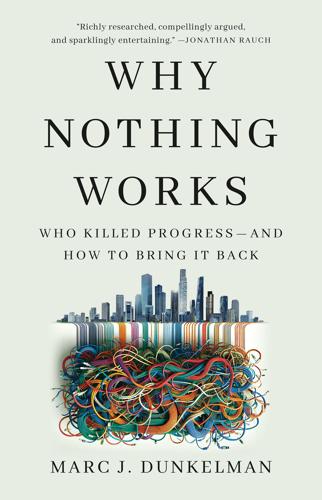
Why Nothing Works: Who Killed Progress--And How to Bring It Back
by
Marc J Dunkelman
Published 17 Feb 2025
By the 1950s, labor unions, financial lenders, and aircraft manufacturers were all benefiting from being part of what amounted to a regulated cabal. And the regulators could justify their continued existence by touting the benefits they had extracted from the industry. No need now to worry that airlines would engage in a race to the bottom on service and maintenance. Maybe more important, the government began requiring the airlines to frequent small airfields that might otherwise have been left unserved. If an airline wanted to run more flights from New York to Los Angeles, Washington could compel it to serve Sioux City and Mobile as well.
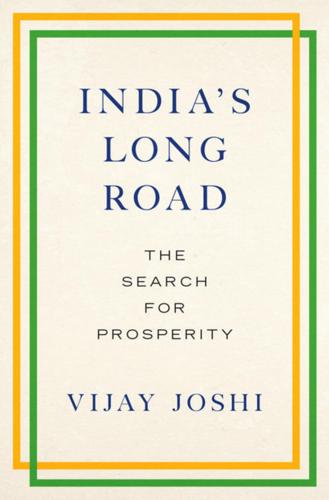
India's Long Road
by
Vijay Joshi
Published 21 Feb 2017
(Half of India’s states show complete or near-complete dominance of chief ministers.)54 More untied revenue may simply increase their capacity to indulge in populist giveaways. There are large variations in the quality of governance in different states. It is possible that differences in state performance will be exacerbated by the movement of resources to the better-performing states. A competitive ‘race to the bottom’ in giving concessions to attract investment is another danger. It seems obvious, therefore, that ‘competitive federalism’ needs to be balanced by ‘cooperative federalism’ to coordinate the policies of the states, and see to it that they do not act at cross-purposes. (Radical programmes, such as the ‘deep fiscal adjustment’ that I have advocated, would require centre-states cooperation of a high order.)
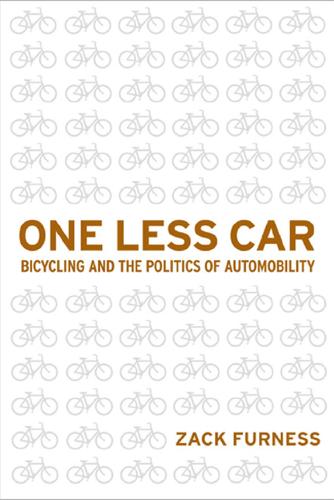
One Less Car: Bicycling and the Politics of Automobility
by
Zack Furness
and
Zachary Mooradian Furness
Published 28 Mar 2010
For example, Schwinn not only supported the same companies that eventually became its primary competition (notably Giant) and missed out on the opportunity to become a major player in both BMX and mountain bike production—its management apparently referred to the mountain bike as a fad—it also made a number of shrewd moves to avoid reinvesting in either its Chicago production plant or its experienced workforce.43 When Chicago Schwinn workers unionized under the UaW and went on strike in 1980, the company responded frostily and went on to close the plant in 1983, moving its equipment and engineers to the Giant Bicycle Company factory in Taichung, Taiwan.44 Schwinn proceeded to open a new manufacturing plant in Greenville, Mississippi, where it hired inexperienced bike makers for lower pay, in a facility located seventy-five miles from the nearest interstate highway.45 The plant lost more than $30 million and was closed in 1991, just one year prior to the company’s bankruptcy declaration.46 While Schwinn is now widely seen as a textbook case for how not to run a company in the so-called postindustrial era, its story is rarely used to highlight the negative impacts of globalization on the environment, on the U.S. workers who lose their jobs and trade unions, and on the multitudes of Mexican and asian workers who are subsequently and systematically exploited. rather, we are meant to see the company’s missed opportunities, lack of innovation, and brand deterioration as the hallmarks of its failure, as opposed to seeing the entire bicycle industry as a symbol of everything wrong with globalization and the corporate race to the bottom. indeed, one of the most symbolic events to highlight the negative effects of globalization on american workers took place at another bike factory in July 1998, when Huffy Bicycle Corporation, then largest in the United States, closed down its Celina, Ohio factory and fired the entire staff of nearly a thousand workers despite high overall sales that year (previous years were financially tumultuous).

The Rational Optimist: How Prosperity Evolves
by
Matt Ridley
Published 17 May 2010
If Europeans find their shoes made cheaply in Vietnam, then they have more to spend on getting their hair done and there are more nice jobs for Europeans in hair salons and fewer dull ones in shoe factories. Sure, manufacturers will and do seek out countries that tolerate lower wages and lower standards – though, prodded by Western activists, in practice their main effect is then to raise the wages and standards in such places, where they most need raising. It is less of a race to the bottom, more of a race to raise the bottom. Nike’s sweatshops in Vietnam, for example, pay wages three times as high as local state owned factories and have far better facilities. That drives up wages and standards. During the period of most rapid expansion of trade and out-sourcing, child labour has halved since 1980: if that is driving down standards, let there be more of it.

Data and Goliath: The Hidden Battles to Collect Your Data and Control Your World
by
Bruce Schneier
Published 2 Mar 2015
Empeopled LLC (24 Oct 2013), “Brief of amicus curiae,” United States of America v. Under Seal 1; Under Seal 2 [Lavabit], Case Nos. 13-4625, 13-4626, United States Court of Appeals for the Fourth Circuit, http://justsecurity.org/wp-content/uploads/2013/10/empeopled-lavabit-amicus.pdf. On four occasions in the early 2000s: Rebecca MacKinnon (2006), “‘Race to the bottom’: Corporate complicity in Chinese Internet censorship,” Human Rights Watch, http://www.hrw.org/reports/2006/china0806/5.htm. lobbying for legislative restrictions: Thomas Lee (25 May 2014), “Mind your business: Slow flex of tech’s lobbying muscle,” San Francisco Chronicle, http://www.sfgate.com/technology/article/Mind-Your-Business-Slow-flex-of-tech-s-lobbying-5504172.php.

Terms of Service: Social Media and the Price of Constant Connection
by
Jacob Silverman
Published 17 Mar 2015
Oct. 3, 2012. sfweekly.com/2012-10-03/news/bleacher-report-sports-journalism-internet-espn-news-technology/full. 126 “don’t expect to find any original reporting”: ibid. 126 aggregate . . . search engine optimization: ibid. 127 “hyperbolic headlines”: ibid. 127 “Here’s a labor force”: Ryan Chittum. “Bleacher Report and the Race to the Bottom.” Columbia Journalism Review. Oct. 5, 2012. cjr.org/the_audit/sf_weekly_on_what_bleacher_rep.php. 128 $200 million: Eskenazi. “Top 5 Ways Bleacher Report Rules the World!” 129 “emerging culture of surveillance”: David Lyon. “The Culture of Surveillance: Who’s Watching Whom, Now?” Lecture, University of Sydney.
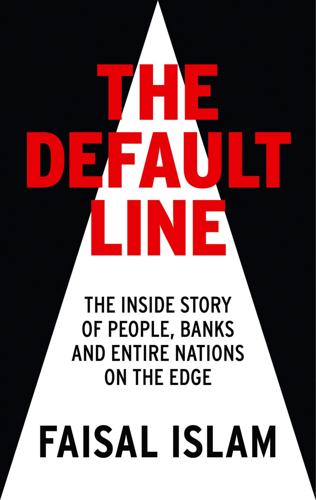
The Default Line: The Inside Story of People, Banks and Entire Nations on the Edge
by
Faisal Islam
Published 28 Aug 2013
London was clearly far more than the financial equivalent of George Orwell’s ‘Airstrip One’. But seeing the City as essentially a part of Wall Street is a useful way of looking at the boom and the bust. It did seem as if London was where Wall Street did its dry-cleaning. There can be no doubt that the UK FSA started the race to the bottom on lenient treatment of derivative exposures. It boasted about the business won through this approach. Wall Street regulators tried hard to keep up. David Cameron himself, in a speech to the City after the crisis began in March 2008, fully endorsed the strategy of outcompeting Wall Street on deregulation.

Algorithms to Live By: The Computer Science of Human Decisions
by
Brian Christian
and
Tom Griffiths
Published 4 Apr 2016
Everyone looks to the others for a baseline, and will take just slightly less than that. The Nash equilibrium of this game is zero. As the CEO of software company Travis CI, Mathias Meyer, writes, “People will hesitate to take a vacation as they don’t want to seem like that person who’s taking the most vacation days. It’s a race to the bottom.” This is the tragedy of the commons in full effect. And it’s just as bad between firms as within them. Imagine two shopkeepers in a small town. Each of them can choose either to stay open seven days a week or to be open only six days a week, taking Sunday off to relax with their friends and family.
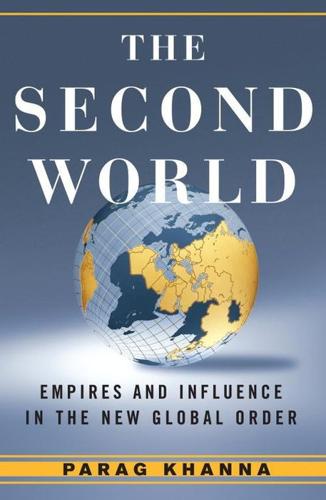
Second World: Empires and Influence in the New Global Order
by
Parag Khanna
Published 4 Mar 2008
And to deal with vast nonperforming assets resulting from years of reckless lending, it allows major foreign banks to buy ever-larger stakes—and thus share the risk while using their expertise to clean up the mess.23 China benefits from foreign know-how, and the first world sweats to keep up. In the past foreign firms subcontracted only low-wage component assembly to China, but the “race to the bottom” is over: China now competes with first-world Singapore and Taiwan for electronics assembly and modular manufacturing. Germans workers now put in overtime to compete with the very Chinese workers they once trained—that is, if their entire design and manufacturing units have not already been moved to China.
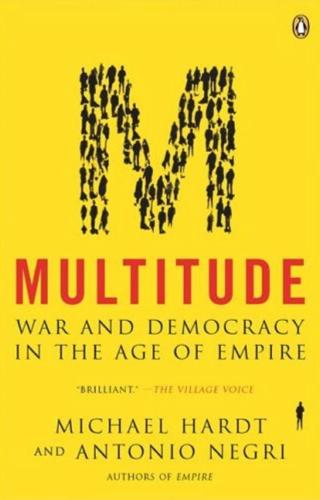
Multitude: War and Democracy in the Age of Empire
by
Michael Hardt
and
Antonio Negri
Published 1 Jan 2004
Many labor unions, particularly in the dominant countries, protest the fact that the mere threat of the mobility of capital—the threat, for example, of moving production and jobs to another country where state regulations and/or labor costs are lower and more favorable—can convince states to abandon or temper their own regulatory powers. States conform to and even anticipate the needs of capital for fear of being subordinated in the global economic system. This creates a sort of race to the bottom among nation-states in which the interests of labor and society as a whole take a backseat to those of capital. Neoliberalism is generally the name given to this form of state economic policy. Neoliberalism, as we claimed in part 2, is not really a regime of unregulated capital but rather a form of state regulation that best facilitates the global movements and profit of capital.
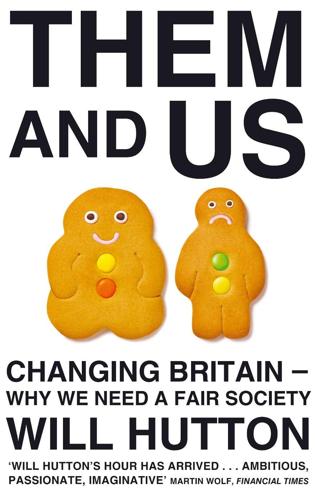
Them And Us: Politics, Greed And Inequality - Why We Need A Fair Society
by
Will Hutton
Published 30 Sep 2010
They cannot be tamed by trial-and-error learning when the potential for catastrophic losses means that the first error will also be the last trial. Regulation creates the market. If financial products had been regulated like drugs – so they were tested before being introduced on the market – banks would have engaged less in a race to the bottom introducing ever more worthless financial instruments. The crash need not have been so severe. Credit-rating agencies, whose task was to provide the crucial gold standard of trustworthiness, failed. Regulators therefore have a role to play in the financial sector, sometimes expressing consumer preferences that are unrepresented in the current array of goods and services but are expressed through, say, elections.

The Precipice: Existential Risk and the Future of Humanity
by
Toby Ord
Published 24 Mar 2020
It is easy to see how such an outcome could be dystopian, but not immediately obvious how we could arrive at it, or lock it in, if most (or all) people do not want it.120 The answer lies in the various population-level forces that can shape global outcomes. Well-known examples include market forces creating a race to the bottom, Malthusian population dynamics pushing down the average quality of life, or evolution optimizing us toward the spreading of our genes, regardless of the effects on what we value. These are all dynamics that push humanity toward a new equilibrium, where these forces are finally in balance. But there is no guarantee this equilibrium will be good.
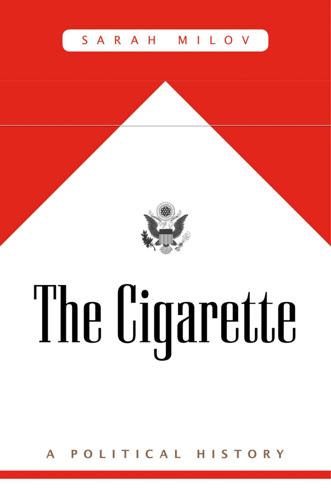
The Cigarette: A Political History
by
Sarah Milov
Published 1 Oct 2019
The NIRA and the Agricultural Adjustment Act were philosophically conjoined as well, reflecting a belief that “ruinous competition” was a root pathology of American capitalism. Too much competition for consumers caused senseless price wars and predatory business practices. It caused workers to compete with each other too vigorously in the sale of their labor, immiserating them in a race to the bottom of wages. It caused farmers to overproduce, driving down commodity prices. For drafters of New Deal recovery legislation, the problems faced by farmers and laborers, producers and consumers, were connected, a seamless whole of surplus in the face of want.6 The New Dealers hoped that what Wallace described as “economic indigestion” could be remedied through economic planning.
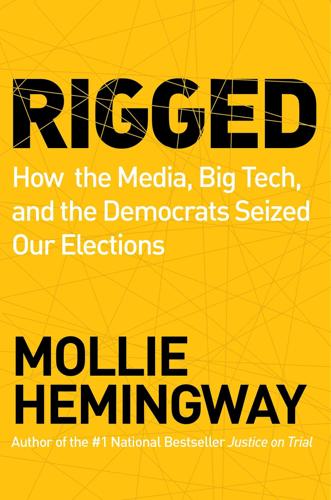
Rigged: How the Media, Big Tech, and the Democrats Seized Our Elections
by
Mollie Hemingway
Published 11 Oct 2021
During the summer of violence, however, iconoclastic mobs did just that, moving on from toppling Confederate statues to defacing, damaging, and destroying statues of and memorials to Admiral David Farragut, abolitionist Matthias Baldwin, American Revolutionary War general Philip Schuyler, a Texas ranger, president and commanding general of the Union Army Ulysses S. Grant, Frances Scott Key, Abraham Lincoln, George Washington, and Thomas Jefferson.42 Not only was the slippery slope real, it was a race to the bottom. The iconic Equestrian Statue of Theodore Roosevelt located on public parkland at New York’s Museum of Natural History was removed by the city in 2020, citing concerns that the statue was racist. In June 2020, the speaker of the New York City Council and other council members called for the removal of a Thomas Jefferson statue from city hall.
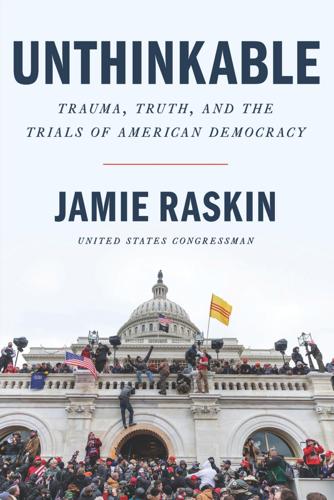
Unthinkable: Trauma, Truth, and the Trials of American Democracy
by
Jamie Raskin
Published 4 Jan 2022
“I got you,” I said, everything having been clarified by the Speaker in her inimitably insightful way. “He was saying, ‘How dare you give someone else the award for Sycophant of the Year when that’s my job, Mr. President’?” “Yeah, but these other people were willing to kill for him,” she said. “It’s a race to the bottom. McCarthy is not our guy,” I said. “After all, it may take a racist fanatic to kill for Trump but any old Trump sycophant will lie for him.” “Right. He’s not your witness,” the Speaker said. “Stick with Herrera Beutler.” We went to the Senate floor with that strategy. We would call one witness, Congresswoman Jaime Herrera Beutler of Washington State, and I introduced my motion to subpoena witnesses with Sen.

Money: 5,000 Years of Debt and Power
by
Michel Aglietta
Published 23 Oct 2018
For if individuals seek to enter into exchange in full knowledge of what their preferences are, no prices exist to communicate these preferences to others. Since these individuals do not know each other or speak to one another, they are forced to speculate on what others are thinking. But this is not enough, for it is also necessary to speculate on what others think each person is thinking. The result is an infinite race to the bottom. No equilibrium price can come about through this infinite game of mirrors that reflect one another to infinity. The most effective way to break open this indeterminacy is with the hypothesis of price fixity. But how can each person take prices as being fixed, and thus external to their free will?

Robot Rules: Regulating Artificial Intelligence
by
Jacob Turner
Published 29 Oct 2018
There have been various—largely unsuccessful—initiatives to harmonise tax laws across the world in order to diminish the opportunities for this practice.105 Part of the reason why it is so difficult to do so successfully is that countries have strong incentives to cut their taxes in order to attract businesses to register there, leading to a “race to the bottom”. Similarly, there may be an economic advantage for some countries to seek to incentivise less scrupulous AI developers to establish in their jurisdiction by adopting minimal regulations. When operating a technology as powerful and potentially dangerous as AI, this would be a worrisome trend.
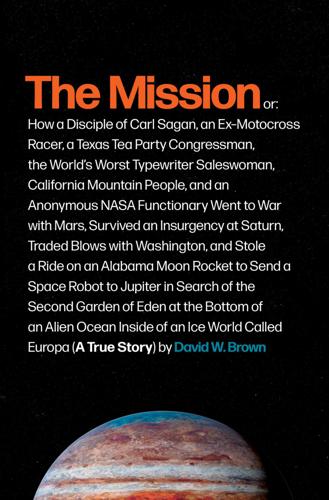
The Mission: A True Story
by
David W. Brown
Published 26 Jan 2021
Roca, Memorandum of Agreement (MOA) Between the California Institute of Technology, Jet Propulsion Laboratory (JPL), and the Johns Hopkins University, Applied Physics Laboratory (APL), September 15, 2006. 274.T. Magner, telephone interview by author, December 21, 2018. 275.A. Lawler, “Space Science: A Space Race to the Bottom Line,” Science 311, no. 5767 (2006): 1540–43, https://doi.org/10.1126/science.311.5767.1540. 276.NASA, President’s FY2007 Budget Request (Washington, DC: NASA, 2006), https://www.nasa.gov/pdf/142458main_FY07_budget_full.pdf. 277.W. Huntress Jr. and L. Friedman, “Commentary: NASA’s 2007 Budget Proposal: No Real Vision,” Space.com, last modified February 14, 2006, https://www.space.com/2048-commentary-nasas-2007-budget-proposal-real-vision.html. 278.F.
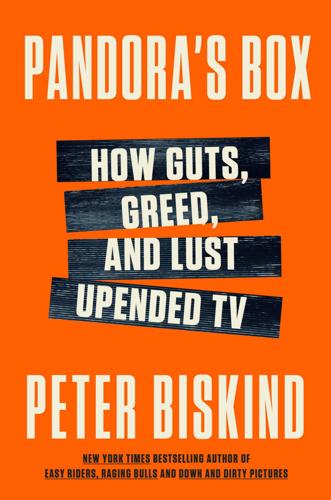
Pandora's Box: How Guts, Guile, and Greed Upended TV
by
Peter Biskind
Published 6 Nov 2023
It policed its shows, even preventing married couples from sleeping together in the same bed. Belly buttons were hidden, and Elvis Presley was never televised below the waist on The Ed Sullivan Show. The plainer the vanilla, the richer the ice cream, aka the profits. The networks competed with one another in a race to the bottom. The watchword that defined “the idiot box” was “lowest-common-denominator programming.” Thus it was that the first golden age of live TV became a measureless tract of hard, cracked soil, inhospitable to intelligent life, populated solely by reruns of old movies, dumb and occasionally fixed quiz shows, as well as placid, family-friendly sitcoms with canned laugh tracks that, like flat stones skipping across the surface of a pond, rarely touched upon the issues that roiled the depths beneath it.
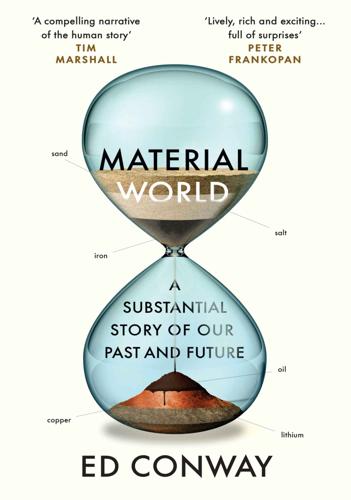
Material World: A Substantial Story of Our Past and Future
by
Ed Conway
Published 15 Jun 2023
By the time of the Intel 4004, the first modern computer chip, in 1971 there were just over 2,000 transistors crammed into roughly the same area, each single one about the size of a red blood cell. Roll forward to the early 2020s and smartphone processors could fit around 12 billion transistors into an area slightly smaller than a square centimetre. This race to the bottom of the metric system, most famously formalised by Intel co-founder Gordon Moore, who noted in the 1960s that the number of components inside these integrated circuits was doubling at a constant speed, is one of the wonders of the modern age and it represents a virtuous circle. The smaller the transistors get, the better they get: they can be turned on and off again (remember each one is ultimately just an electrical switch) even faster and with less power.
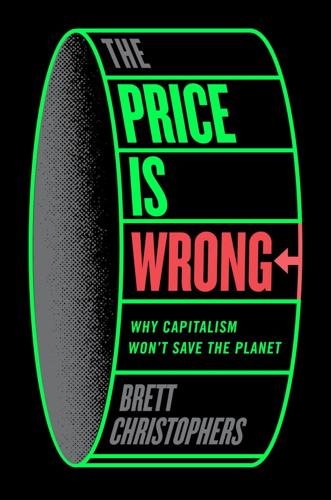
The Price Is Wrong: Why Capitalism Won't Save the Planet
by
Brett Christophers
Published 12 Mar 2024
“When competition picks up, margins start to erode,” said Guggenheim analyst Shahriar Pourreza.’23 And, for all the fact that various species of government intervention frequently do help to bolster profits, they generally do not stop the renewables industry from competing away those profits when it elects – or, after Marx, is compelled – to do so. Indeed, government ‘support’ mechanisms sometimes actively facilitate, even lubricate, the competition-led race to the bottom. The best example of this is the competitive auction processes that governments widely use in allocating renewables contracts. In 2021, for instance, when the UK government auctioned seabed leases for new offshore wind projects, ‘fierce competition’ among bidders resulted in ‘sky-high prices’ for seabed rights that will, commentators said, inevitably mean ‘slimmer returns’.24 Of particular significance in expediting the erosion of industry profitability is the ‘reverse auction’ mechanism that is increasingly employed by governments specifically to award feed-in tariffs and comparable fixed-price output contracts.

The Quiet Coup: Neoliberalism and the Looting of America
by
Mehrsa Baradaran
Published 7 May 2024
Bank, meant that one of the nation’s largest banks would face no state usury caps if it moved to South Dakota. Citibank did just that, moving its credit card business to the state, bringing three thousand jobs and a healthy new source of tax revenue. Delaware, the home of corporate charters, was not about to cede ground to South Dakota, so it eliminated its usury laws, too. The race to the bottom had begun. Over the following decades, as banking and credit were transformed through a surge of deregulatory legislation, interest rates would keep climbing and states that tried to enforce their usury laws would find that they had lost the power to do so. The Supreme Court in Marquette Nat.

The Relentless Revolution: A History of Capitalism
by
Joyce Appleby
Published 22 Dec 2009
Caution seems to abound; many of the WTO’s accords for cutting tariffs won’t go into effect for another twenty years. Within the European Union and the United States there are plenty of critics of the World Trade Organization as well. Organized labor resists heartily having to compete with low-wage labor around the world. The race to the bottom by international corporations has prompted a vigorous campaign to include labor standards in future WTO accords. Opponents to this campaign say that the WTO can’t take up every good cause supported by Westerners. Considering that labor is central to all production, its concerns hardly seem peripheral.
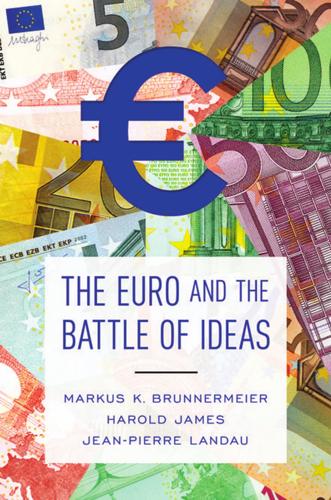
The Euro and the Battle of Ideas
by
Markus K. Brunnermeier
,
Harold James
and
Jean-Pierre Landau
Published 3 Aug 2016
In March 2010, the Irish government had to issue a promissory note of €30.6 billion to fund the bailout of the Anglo-Irish Bank and the Irish Nationwide Building Society, a move that pushed up the debt and the financing needs of the Irish government. At one point in the discussion, France insisted (unsuccessfully) that Ireland increase the very low rate of corporate taxation (12.5%), which it saw as a race to the bottom. As the bank guarantee was set to expire in 2010, interest rates in Ireland started to spike and diverge from the euro-area average rate. Ireland and its banks soon lost market access. The Irish bank problems then forced the ECB to step in significantly: its liquidity provisions (including ELAs) amounted to €90 billion in January 2010 and €140 billion in November 2010—85 percent of the Irish GDP at that time and a quarter of the total ECB lending.27 This represented at that time the largest exposure to a single country the ECB had ever taken.

Lonely Planet Nicaragua (Travel Guide)
by
Lonely Planet
,
Alex Egerton
and
Greg Benchwick
Published 30 Jun 2013
These factories provide much-needed work (Nicaragua’s underemployment rate runs at around 46%), but critics say the maquilladoras are no real solution – they set up in Free Trade Zones (Nicaragua has four), which aren’t bound by Nicaraguan law, so they don’t pay minimum wage or respect workers’ rights. When exported, goods don’t incur export duty, so Nicaragua ends up earning very little. It’s a process that workers’ rights and environmental activist Ralph Nader calls ‘the race to the bottom,’ where poor countries end up competing to see who can offer the most favorable deal to investor nations. Population With 6.1 million people spread across 130,000 sq km, Nicaragua is the second-least densely populated country in Central America after Belize. The CIA World Factbook estimates that 69% of the population is mestizo (of mixed ancestry, usually Spanish and indigenous people), 17% white, 9% black and 5% indigenous.

Countdown: Our Last, Best Hope for a Future on Earth?
by
Alan Weisman
Published 23 Sep 2013
In 2009, Pope Benedict XVI addressed this convergence of poverty and population in his encyclical Caritas in Veritate (Charity in Truth). In it he denounced the global market economy for squeezing salaries, social security, and workers’ rights to maximize profits, locking poor countries into competing in a race to the bottom of wages and benefits for factory jobs that bring more misery than actual development. He condemned consumer temptations that undermine people’s values and their planet. During his papacy, the first of the new millennium, Benedict XVI became known as the “green Pope” for installing thousands of photovoltaic cells atop the Vatican auditorium, and for his open disgust at the failure of the 2009 climate talks in Copenhagen.

Class Warfare: Inside the Fight to Fix America's Schools
by
Steven Brill
Published 15 Aug 2011
Invoking Lincoln’s building of the transcontinental railroad during the Civil War, he made the case that America could and should, despite the economic crisis, get to work on “doing a far better job educating our sons and daughters” because we had “let our grades slip, our schools crumble, our teacher quality fall short, and other nations outpace us.” Therefore, Obama declared, “We will end what has become a race to the bottom in our schools and instead spur a race to the top by encouraging better standards and assessments. . . . But let me be clear,” the president continued. “If a teacher is given a chance or two chances or three chances but still does not improve, there’s no excuse for that person to continue teaching.

What If We Get It Right?: Visions of Climate Futures
by
Ayana Elizabeth Johnson
Published 17 Sep 2024
The ocean side of things has headed in a similar direction, with overfishing and aquaculture that destroy habitats and have horrific records of human rights abuses. This is in part a cultural issue. Compared to people in other rich countries, people in the U.S. spend the least on food (as a percentage of income) and the most on healthcare. We expect food at bargain-basement prices, subsidize all the wrong things, and growers are in a race to the bottom to the detriment of farmworkers, eaters, and biodiversity alike. Globally, our food system is the source of 33% of greenhouse gas emissions. We are told it has to be this way, that agriculture has to be super industrial, in order to feed the nearly eight billion people on the planet. But that’s not true.
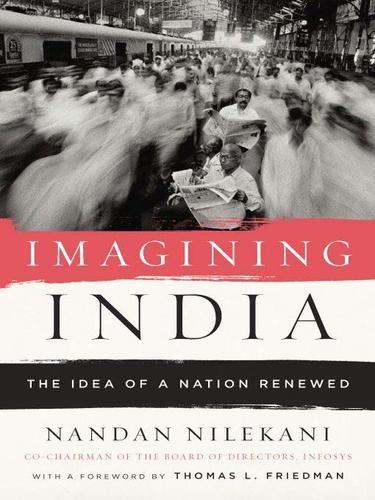
Imagining India
by
Nandan Nilekani
Published 25 Nov 2008
The new wealth of the 1990s gave the central governments the leeway to drive structural changes in policy, issuing more transparent guidelines for grants and loans to states and making states more secure about letting go of indirect taxes. The rise of markets were also changing how state governments looked at taxes—the competition between states for private investment through the 1990s had forced them into a race to the bottom in corporate tax sops. It was not a surprise, then, that they were giving the idea of a national tax system a second look. The big fear for the states about moving toward VAT was that it would reduce their independence, and the center would appropriate their revenue and tax collecting powers.
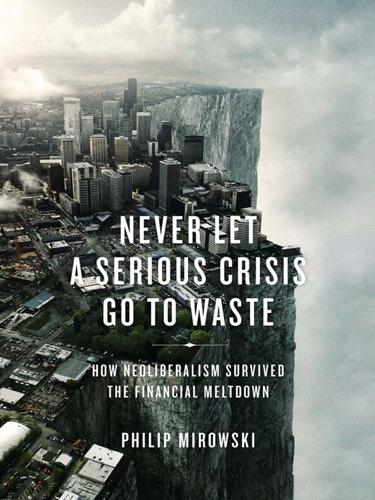
Never Let a Serious Crisis Go to Waste: How Neoliberalism Survived the Financial Meltdown
by
Philip Mirowski
Published 24 Jun 2013
If their optimal stupidity rendered them easy marks, it was their own fault for insufficient investment in human capital. Of course, the rival critical narrative detects a concerted effort to render the information as deceptive and corrupt as possible, to entrap all those newbie risk-takers: Experts often describe the run-up to the financial crisis as a “race to the bottom.” In reality it was a veritable track-and-field meet of such contests: some of them played out in the marketplace, others inside the government. Out in the financial marketplace, in the 2000s, opaquely marketed subprime products pioneered by unregulated, fly-by-night, nonbank mortgage lenders began to take off in the mainstream.

Lonely Planet Colombia (Travel Guide)
by
Lonely Planet
,
Alex Egerton
,
Tom Masters
and
Kevin Raub
Published 30 Jun 2015
There are now four main agencies, based in Santa Marta and Taganga, guiding groups of travelers on the four- to six-day hike to the ancient ruins. You cannot do the trip on your own or hire an independent guide. If you're not sure about the legitimacy of your guide or agency, be sure to ask for the OPT (Operación de Programas Turísticos) certificate, the essential document needed by any guide. Once the market opened in 2008, the race to the bottom began, and prices and quality fell. The government intervened by regulating prices and service, and the official price of the tour is now set at COP$700,000 – pay any less and the money will be taken from your guide's fees, health insurance or life insurance. The price includes transportation, food, accommodations (normally mattresses with mosquito nets, though some agencies still use hammocks on one night), porters for your food, non-English-speaking guides and all necessary permits.
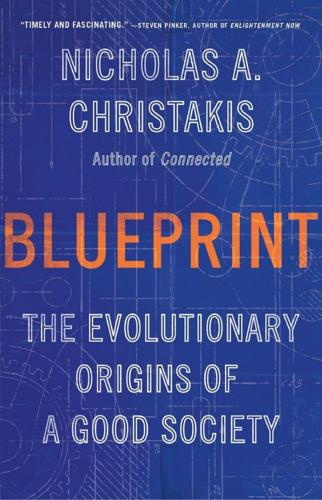
Blueprint: The Evolutionary Origins of a Good Society
by
Nicholas A. Christakis
Published 26 Mar 2019
As we saw in chapter 1, children as young as two will prefer other children randomly assigned to the same T-shirt color. In-group bias is so widespread that, when it attracted the attention of experimental psychologists in the twentieth century, they began to wonder how easily this sentiment could be evoked and just how tiny the differences between “us” and “them” had to be. In a kind of race to the bottom to understand the limits of human degeneracy, a new line of experiments emerged involving what came to be known as the minimal-group paradigm, initiated by psychologist Henri Tajfel in the 1970s.59 With barely any coaxing at all, it turns out, human subjects treated others who were assigned to artificially and arbitrarily created groups differently.

This Is How They Tell Me the World Ends: The Cyberweapons Arms Race
by
Nicole Perlroth
Published 9 Feb 2021
A few years ago, I dismissed these words as alarmist, irresponsible even. Too many used “FUD” to pitch snake oil. The cybersecurity industry pushed so many world-ending scenarios on us, with such frequency, that we became jaded. But after a decade immersed in digital threats, I fear these words have never been truer. We are in a shortsighted race to the bottom and it is now in our urgent national interest to pause and begin to dig our way out. They say the first step in solving a problem is recognizing there is one. This book is my own “left of boom” effort. It is the story of our vast digital vulnerability, of how and why it exists, of the governments that have exploited and enabled it and the rising stakes for us all.

The Great Leveler: Violence and the History of Inequality From the Stone Age to the Twenty-First Century
by
Walter Scheidel
Published 17 Jan 2017
Moreover, we have to allow for the possibility that to the extent that political unraveling interfered with predatory surplus extraction, commoners may even on occasion have experienced an improvement in their living standards. In that case, leveling would not merely have been the result of a race to the bottom conducted at different speeds but might also have been reinforced by gains among the working population. However, owing to the nature of the evidence, it is generally easier—or at least somewhat less desperately difficult—to document the decline of elites than to identify concurrent improvements among poorer groups.

Saving America's Cities: Ed Logue and the Struggle to Renew Urban America in the Suburban Age
by
Lizabeth Cohen
Published 30 Sep 2019
Admirable as these tactics are, they do not come close to meeting the enormous demand for affordable housing nor creating socially balanced neighborhoods. Moreover, the necessity for cities to fend for themselves to solve their problems encourages them to use tax forgiveness and other financial incentives to lure investors promising needed resources. These baits often set off races to the bottom among cities, which all ultimately lose, as winning cities encounter new costs while their tax revenue is reduced and inequality among cities is accentuated.30 The history of urban redevelopment since the end of World War II, as told through Logue’s career, yields many insights. The overarching message of Logue’s “Tale of a City Builder,” as he considered titling his never-completed book, is that urban renewal was not one undifferentiated mistake from the Housing Act of 1949 to President Richard Nixon’s moratorium on federal spending for housing in 1973.
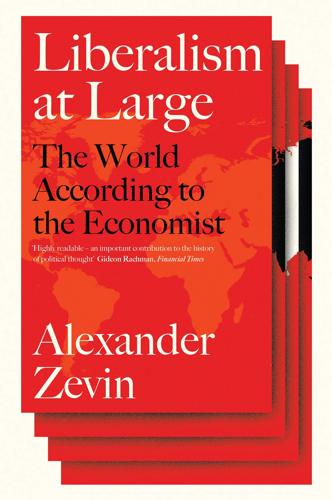
Liberalism at Large: The World According to the Economist
by
Alex Zevin
Published 12 Nov 2019
The third point is the most striking, for unlike the first two, it seems to have been the common assumption of all participants including Beveridge.37 The main ‘international implications of full employment’ for Britain in the post-war world were that the country must work to prevent any repetition of the rising tariffs, currency devaluations and other moves to autarky of the inter-war period. Full employment in one country was impossible. For if others allowed their trade cycles to continue, leading to a crash and mass unemployment, they would again try to export their way out of trouble at the expense of trading partners, precipitating a global race to the bottom. In contemplating one international obstacle, however, the participants in the conference tellingly all but ignored another, arguably more salient one – that of finance capital, the free movement of which had repeatedly imperilled progressive social legislation in Britain, in a pattern that was set to recur: cries of capital flight and lost confidence in protest at the People’s Budget in 1909, collapse of the second Labour government amidst a run on the pound in 1931.38 The war represented the finest hour for the extreme centre, giving its advocates a voice inside the state, while demonstrating that ‘vested interests’ still operated there to frustrate its boldest initiatives.

This Changes Everything: Capitalism vs. The Climate
by
Naomi Klein
Published 15 Sep 2014
Each new blast of statistics about how a tiny band of global oligarchs controls half the world’s wealth exposes the policies of privatization and deregulation for the thinly veiled license to steal that they always were. Each new report of factory fires in Bangladesh, soaring pollution in China, and water cut-offs in Detroit reminds us that free trade was exactly the race to the bottom that so many warned it would be. And each news story about an Italian or Greek pensioner who took his or her own life rather than try to survive under another round of austerity is a reminder of how many lives continue to be sacrificed for the few. The failure of deregulated capitalism to deliver on its promises is why, since 2009, public squares around the world have turned into rotating semipermanent encampments of the angry and dispossessed.

Roller-Coaster: Europe, 1950-2017
by
Ian Kershaw
Published 29 Aug 2018
But three general problems were plainly visible even in the boom years. The first arose from hugely intensified economic competitiveness. This led to great pressure to lower wages, sustain high rates of employment, keep inflation down (helped by the low costs of imported goods from China’s booming economy), and reduce the tax burden. It was often dubbed a ‘race to the bottom’. The ease of international capital transfers meant that high tax regimes and forms of protectionism that had worked in the past were unsustainable. Governments had to exploit globalization while finding ways at the national level of combating its harmful side effects. How to balance these problems with maintaining social cohesion, upholding the civilized values that Europe’s democracies saw as their very essence, and sustaining high levels of social welfare in the face of increased expectations and an ageing population, was a major challenge to all governments.
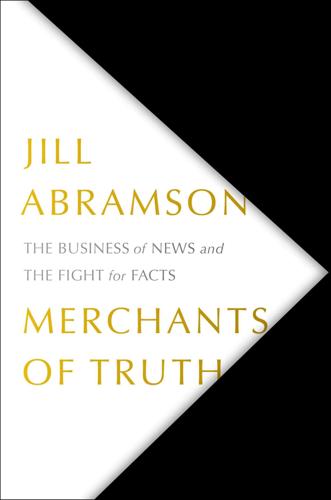
Merchants of Truth: The Business of News and the Fight for Facts
by
Jill Abramson
Published 5 Feb 2019
The newsrooms, meanwhile, moved just as quickly and dispassionately toward that same goal, using the same tool. As I watched everyone line up behind the desk of Ian Fisher, the Times editor in charge of the homepage, who was one of the few with access to Chartbeat, I worried that we too had joined the race to the bottom. Interestingly Haile himself came to have second thoughts about the popularity machine he had created and left Chartbeat in 2016 to launch a company, Scroll, that would devote itself to helping publishers monetize their more substantive stories, the ones Chartbeat had all but incentivized against.

On the Edge: The Art of Risking Everything
by
Nate Silver
Published 12 Aug 2024
If my casino, the Silver Spike, starts removing aces from its blackjack decks—boosting profits for my shareholders but in a way that its customers find hard to detect—the optimal strategy for the Gold Nugget down the block is to reciprocate. Absent regulation—knowing that the other guys at least have to play by the same rules—you’re likely to see a race to the bottom, and the industry will shrink because it will be hard for consumers to identify trustworthy operators.[*11] The other reason trust is so important is that modern casino resorts are literally among the most expensive building projects in the history of the world. Some are nearly the equivalent of planned cities, with thousands of residences (in some cases as many as seven thousand hotel rooms, plus private residences) and every imaginable form of leisure, entertainment, shopping, and dining all in one complex.

A Pipeline Runs Through It: The Story of Oil From Ancient Times to the First World War
by
Keith Fisher
Published 3 Aug 2022
By making the holding company device generally available, New Jersey transformed the corporation into a recursive building block that could legally merge and proliferate indefinitely, clearing the way for the building of modern business empires.106 For liberating private corporate power to such a degree, effectively tearing up the other states’ corporate restrictions in a ‘race to the bottom’, New Jersey became known as the ‘Mother of the Trusts’ and was branded the ‘Traitor State’.107 (In everyday language the word ‘trust’ came to refer to any market-dominating big business, even after the trust itself was superseded as the typical legal device for business combination.) When action was taken under the Sherman Act against a sugar monopoly, the corporate defence lawyers were able to run rings around plaintiffs and even federal prosecutors.

Palo Alto: A History of California, Capitalism, and the World
by
Malcolm Harris
Published 14 Feb 2023
America was building what economist Samir Amin came to call the Empire of Chaos.58 War Capitalism could put on a blindfold and run into a maze of horrific, absurd plans with confidence because it had class-power echolocation for a guide: As long as the rich strengthened and the working class weakened, then things had to be going in the right direction. It didn’t matter that capitalists were investing in finance sugar highs, monopoly superprofits, and an international manufacturing race to the bottom rather than strong jobs and an expanded industrial base. The twenty-first century was going to be all about software anyway, baby. The robots will figure it out. Silicon Valley leaders sat on top of this world system like a cherry on a sundae, insulated from the melting foundation by a rich tower of cream.

Trading and Exchanges: Market Microstructure for Practitioners
by
Larry Harris
Published 2 Jan 2003
A small market with little volume may therefore obtain order flow by offering a small minimum price increment. Although larger markets may want to protect limit order traders, they cannot do so: To remain competitive, they must lower their minimum price increments to equal the smallest minimum increment offered by any market. * * * ▶ The Race to the Bottom Reduction of the minimum price increment in U.S. equities markets started in the 1990s and culminated in the full decimalization of the markets in 2001. As the above analysis suggests, the first markets to offer smaller minimum price increments were weaker markets like the American Stock Exchange and the ECNs.
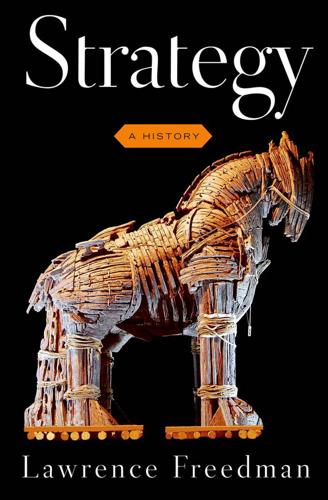
Strategy: A History
by
Lawrence Freedman
Published 31 Oct 2013
Businesses should expect costs to decline systematically and predictably as a result of their superior productive experience. While the methodology encouraged companies to look at their total costs and recognize economies of scale, it could also be seriously misleading. In a mature industry the experience curve would flatten out. It could also encourage a race to the bottom, as prices were cut in the expectation of higher volumes which might not materialize, and then leave little scope for investment. As Ford’s Model T experience demonstrated, even the master of a product with costs kept down to a minimum can still be caught out by a better product. BCG’s second powerful oversimplification was the growth-share matrix.

The Better Angels of Our Nature: Why Violence Has Declined
by
Steven Pinker
Published 24 Sep 2012
It is perhaps the finest portrayal of the vulnerability of the human moral sense to competing convictions, most of which are morally wrong. REASON Reason appears to have fallen on hard times. Popular culture is plumbing new depths of dumbth, and American political discourse has become a race to the bottom.206 We are living in an era of scientific creationism, New Age flimflam, 9/11 conspiracy theories, psychic hotlines, and resurgent religious fundamentalism. As if the proliferation of unreason weren’t bad enough, many commentators have been mustering their powers of reason to argue that reason is overrated.